We started off the morning bright and early – well, by bright, I mean it didn’t get light until nearly 8am today, and by early, I mean we didn’t leave the house until nearly 10am! We were heading out first to go searching for a monument… the Eve Online Monument. Eve Online is not technically ‘huge’ in the world of MMORPGs (Did I get that right? I’m am guessing I probably didn’t and by my comment, you are probably guessing correctly that I didn’t care enough to Google it!) with roughly a million die-hard players – but it is huge in Iceland. So big that they have erected an actual physical monument to the in game plaers which is engraved with all the player names on it. We went hunting it out for a friend of ours who plays so we could take a photo of his avatar engraved on the monument…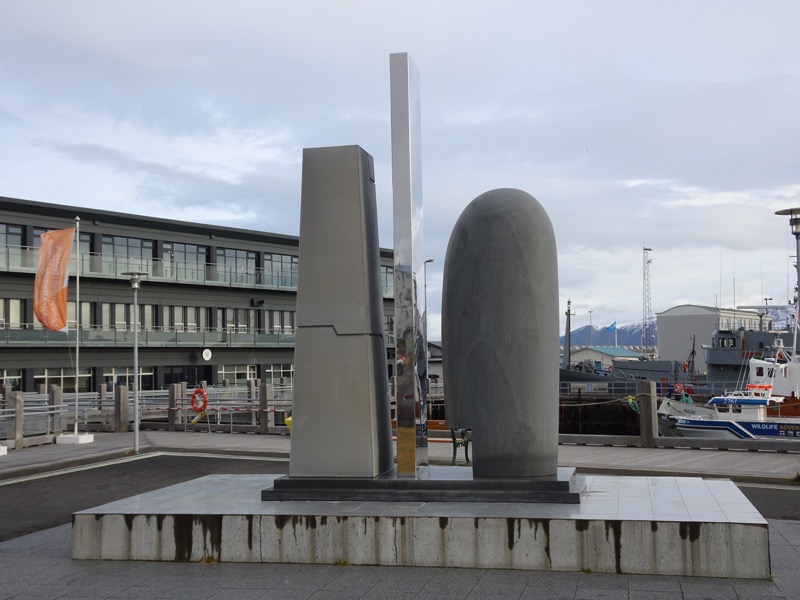
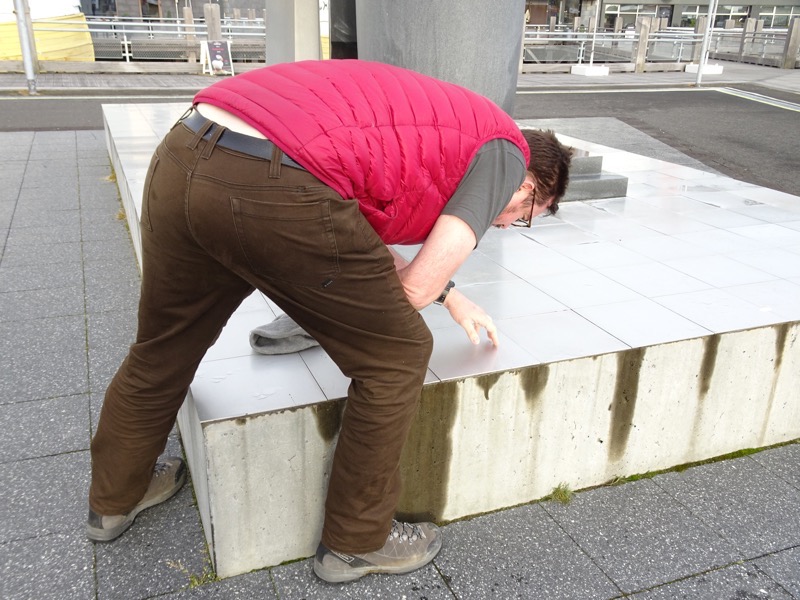 It’s not exactly easy to find – but there is an online map telling you roughly which area each name is located – and yes, we found Drakey’s avatar! It’s something to do with spaceships and wars in space or something. I dunno. #computergaming #notmycupoftea
It’s not exactly easy to find – but there is an online map telling you roughly which area each name is located – and yes, we found Drakey’s avatar! It’s something to do with spaceships and wars in space or something. I dunno. #computergaming #notmycupoftea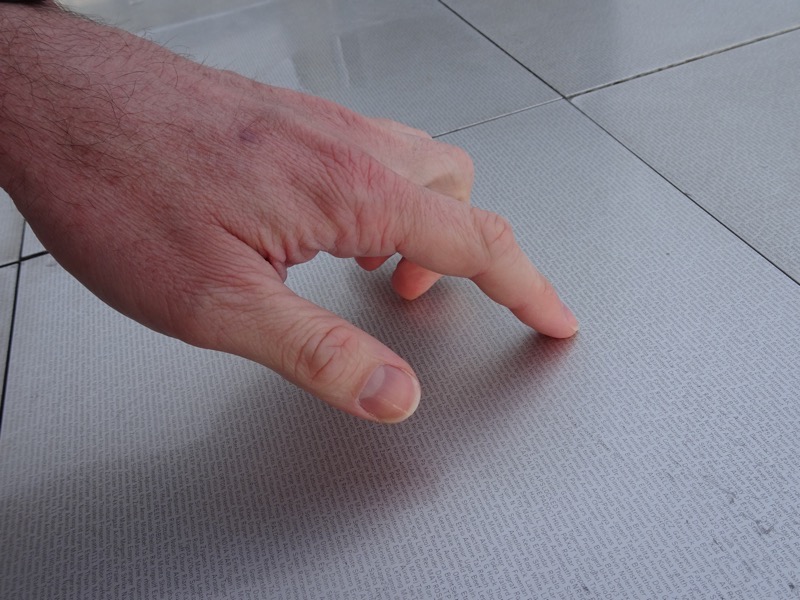 After ferreting out the Eve Online Monument, I convinced yale to swing past the Sun Voyager (again) so I could see it in the morning light. This is still such a stunning piece of art. I love it… so evocative, you can imagine it sailing out across the fjord. 🙂 This time fewer tourists were there hogging prime spots – but there’s always one jerk. This time a Kiwi, who stood around while his wife took his pictures and then he went wandering all around the sculpture – if it had been a car, he would have been kicking the tyres – while about 10 people are standing around shivering in the freezing cold waiting for him to fuck off out of our photographs! Urgh!
After ferreting out the Eve Online Monument, I convinced yale to swing past the Sun Voyager (again) so I could see it in the morning light. This is still such a stunning piece of art. I love it… so evocative, you can imagine it sailing out across the fjord. 🙂 This time fewer tourists were there hogging prime spots – but there’s always one jerk. This time a Kiwi, who stood around while his wife took his pictures and then he went wandering all around the sculpture – if it had been a car, he would have been kicking the tyres – while about 10 people are standing around shivering in the freezing cold waiting for him to fuck off out of our photographs! Urgh!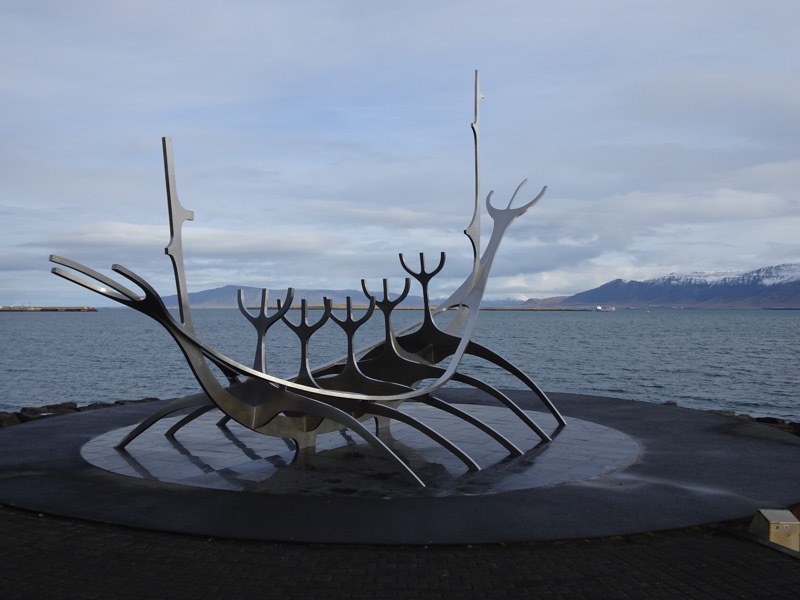 We were then heading indoors for a while (thankfully!) to the National History Museum, which is quite an impressive building in its own right.
We were then heading indoors for a while (thankfully!) to the National History Museum, which is quite an impressive building in its own right.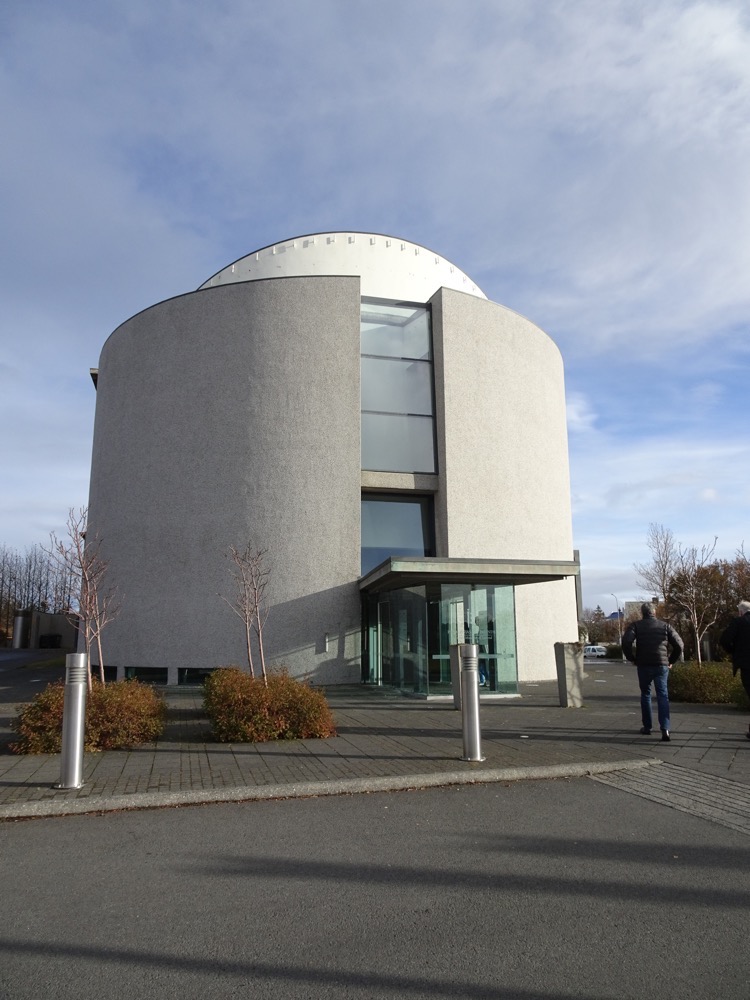
I have started doing up a full post on just the items we saw in the museum – most of them are items I have not seen published in other books and catalogues, so I have done my best to capture them (in the dodgy museum lighting conditions) and to keep their detailed descriptions accessible too. I hope to get this done when I get on a train to Prague day after tomorrow… but we will see! There were lots of wonderful artefacts from the dark ages and medieval periods, and the second floor contained the 17th to 21st centuries – which as per usual, I skimmed through and barely took any notes at all because, well it’s just too modern for my interests. So here is a hint of what is to come in the full musuem post:
Around the corner from the museum is the famous Hallgrimskirkja Lutheran church which I have written about previously in my past travels. It is said to be designed with the volcanic basalt columns as an inspiration and influence. Having seen the columns on the beaches of Iceland now – I can see it a lot more clearly and have a new appreciation for the building. Previously, it just looked like a stark, way too modern, design to be a comforting place of worship – but now it kinda seems like it belongs here.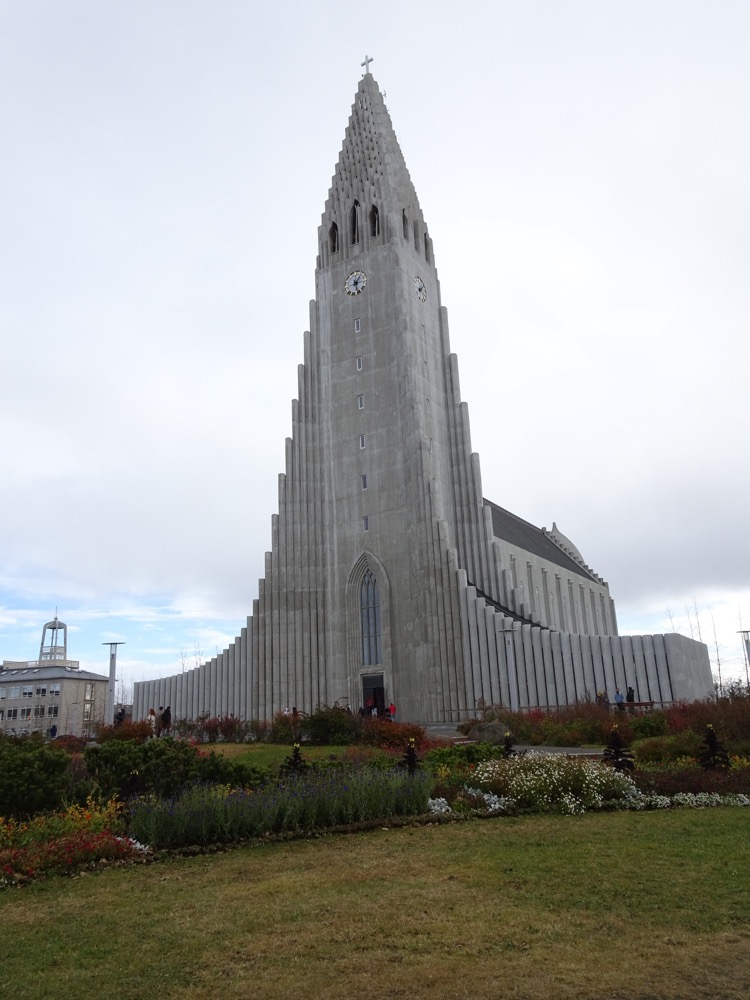
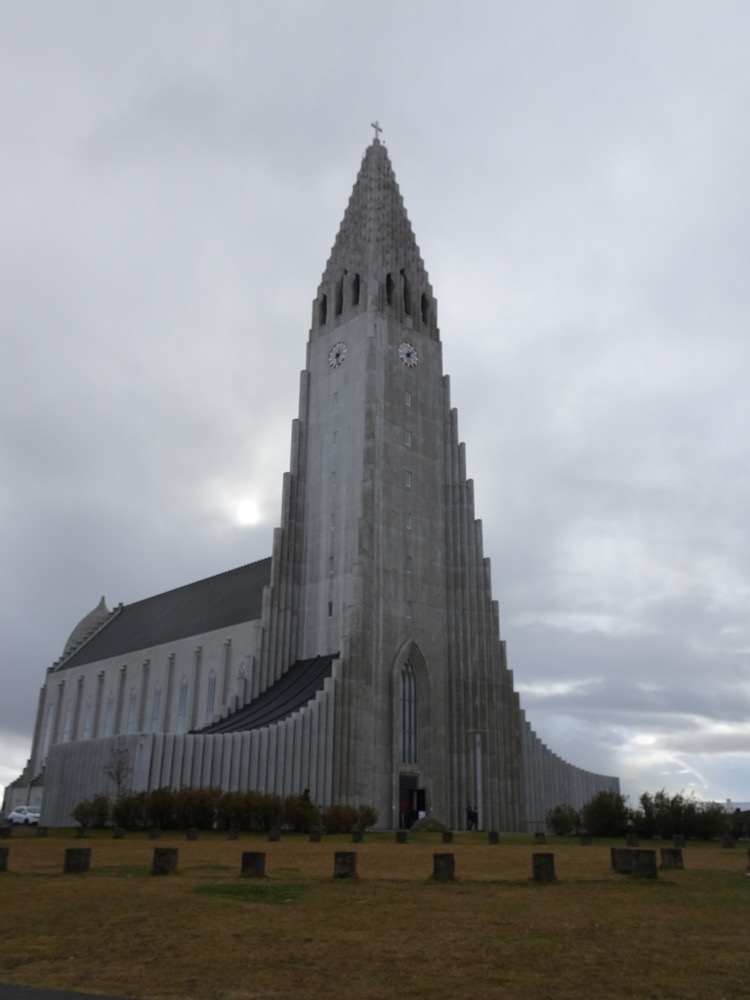
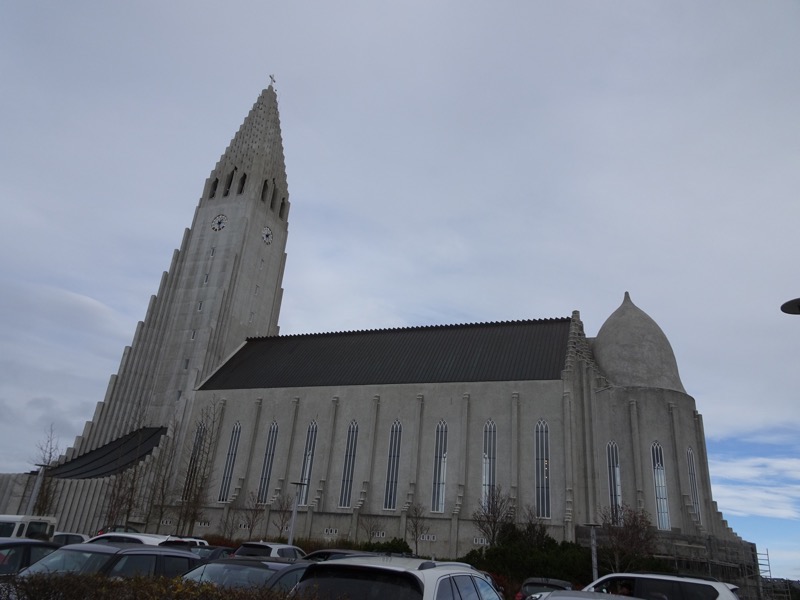
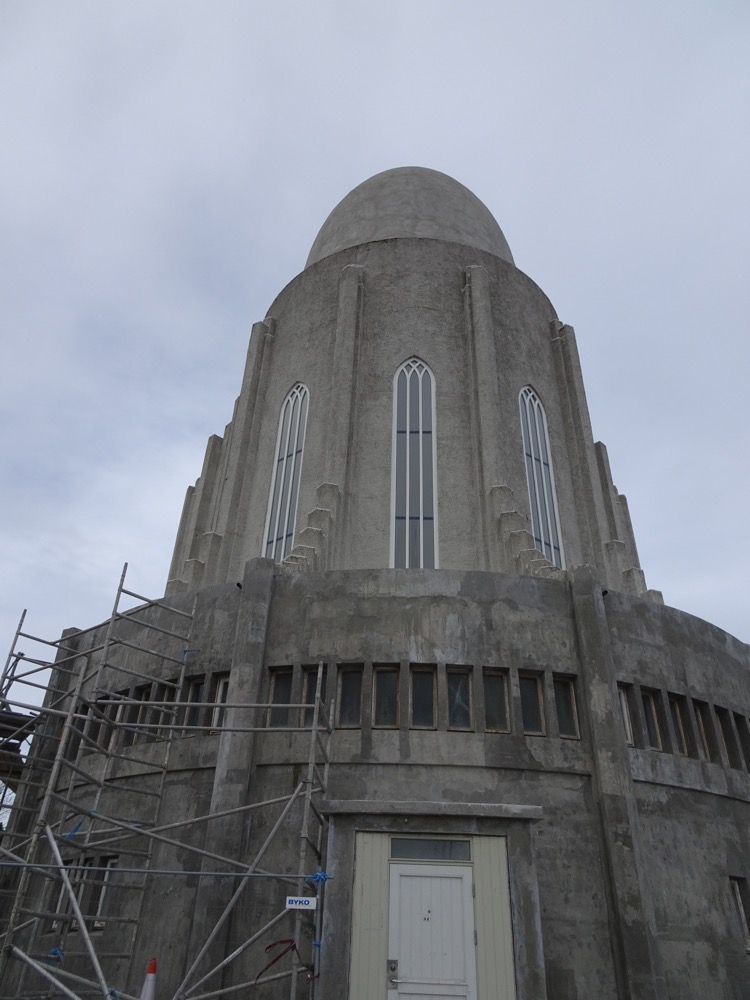 We did a little poke around the shops here a little – I stooped to buying a t-shirt… which in my defence was only marginally more costly than a tea towel at the end of summer sales. 🙂
We did a little poke around the shops here a little – I stooped to buying a t-shirt… which in my defence was only marginally more costly than a tea towel at the end of summer sales. 🙂
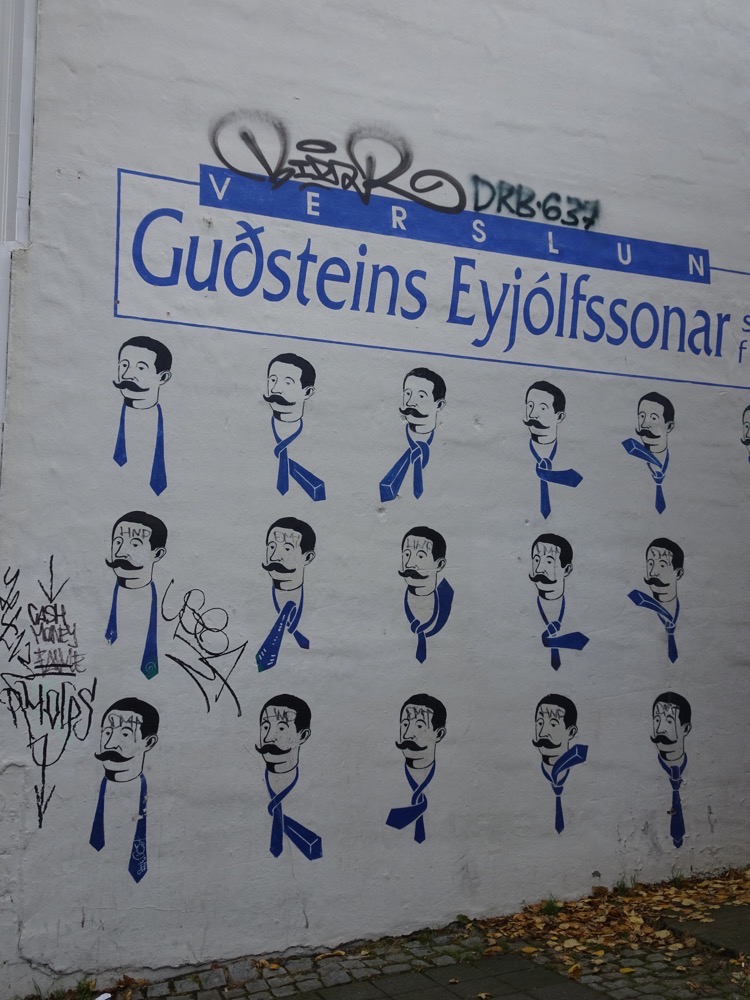 So, lunchtime rolls around and we find ourselves hunting for the Bæjarins Bbeztu Pylsur stand, which quite literally means in English: ‘The Best Hot Dog in Town’. We find the little food truck exactly where is supposed to be not far from the Reykjavik harbour and to my surprise, it is surrounded by people standing around in the cold, which is about 3°C but with the wind feels about -1°, eating hot dogs! I’m not so sure about this al fresco dining thing in this weather, but we dutifully line up for a hot dog.
So, lunchtime rolls around and we find ourselves hunting for the Bæjarins Bbeztu Pylsur stand, which quite literally means in English: ‘The Best Hot Dog in Town’. We find the little food truck exactly where is supposed to be not far from the Reykjavik harbour and to my surprise, it is surrounded by people standing around in the cold, which is about 3°C but with the wind feels about -1°, eating hot dogs! I’m not so sure about this al fresco dining thing in this weather, but we dutifully line up for a hot dog.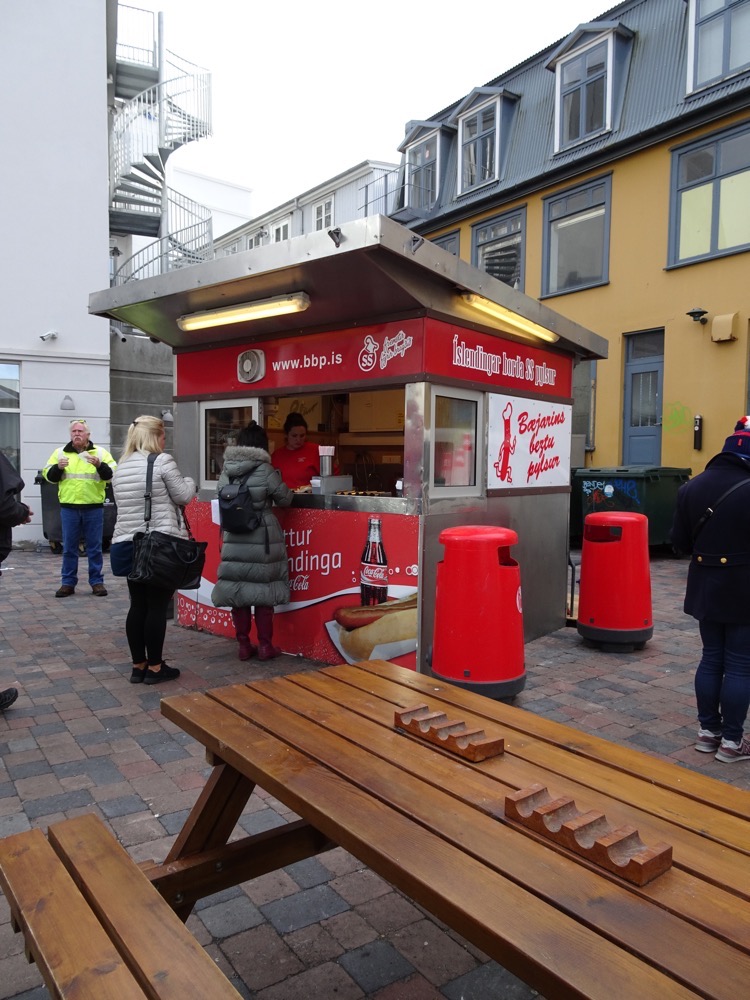 In August 2006, The Guardian newspaper selected Bæjarins Beztu as the Best Hot Dog Stand in Europe – big call. Since then plenty of famous people have come along and tried the now world renown, Bæjarins Beztu hotdogs. Among them are former US President, Bill Clinton, and even cooler, James Hetfield of Metallica fame… and now borys and yale join this illustrious companie of people who have stood around eating hot dogs in sub-zero temperatures.
In August 2006, The Guardian newspaper selected Bæjarins Beztu as the Best Hot Dog Stand in Europe – big call. Since then plenty of famous people have come along and tried the now world renown, Bæjarins Beztu hotdogs. Among them are former US President, Bill Clinton, and even cooler, James Hetfield of Metallica fame… and now borys and yale join this illustrious companie of people who have stood around eating hot dogs in sub-zero temperatures.
 It was so cold, but the hot dogs were tasty enough, I guess.
It was so cold, but the hot dogs were tasty enough, I guess.
Across the road from the hot dog stand is the moorings for the Icelandic Coast Guard. This ship has been here each time I have been in Reykjavik – either that or they have three identical ships (not out of the question). I have kept meaning to take a photo of it – it’s pretty impressive. The Icelandic Coast Guard is primarily responsible for Iceland’s coastal defences and maritime and aeronautical search and rescue processes, but they have also been called upon to do things like bomb disposal?
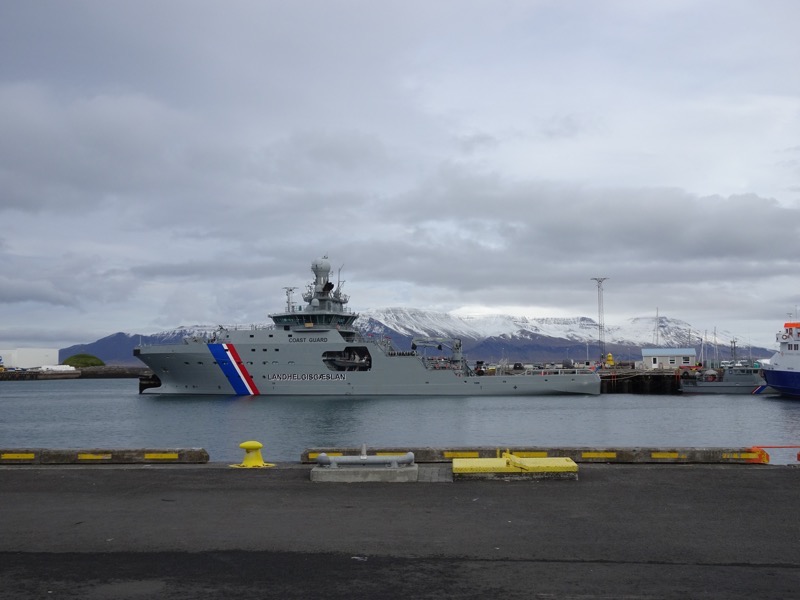
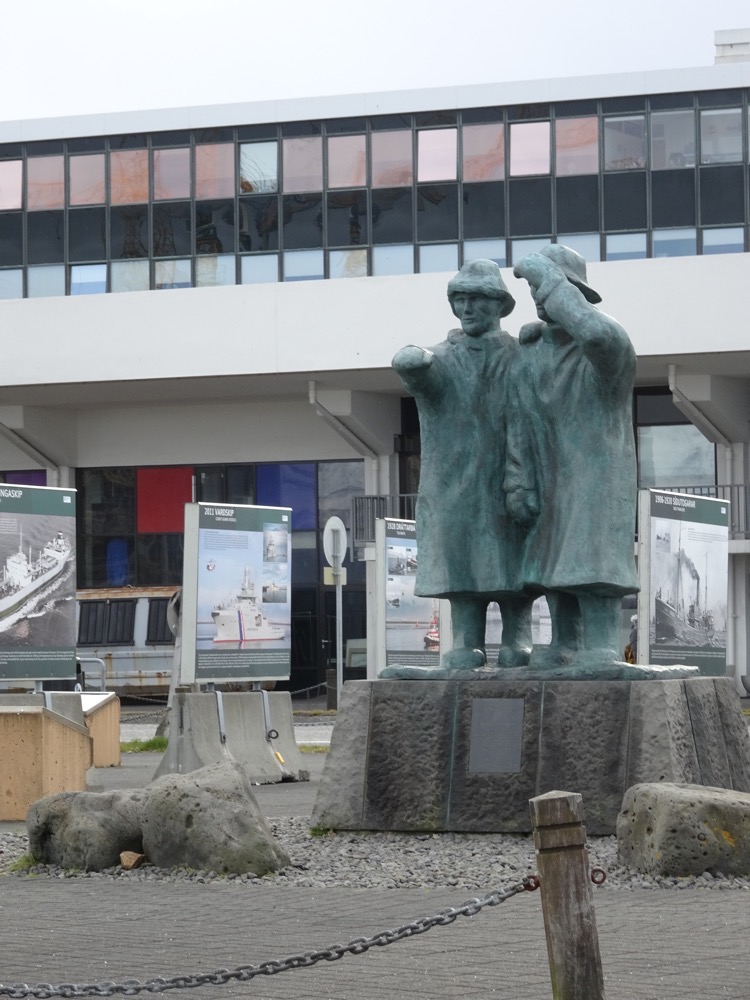
So… after lunch, we made our way to the famous Icelandic Phallological Museum, aka the Reykjavik Penis Museum or the Reykjavik Dick Museum. *titter titter*.
It was founded in1997 by a now-retired teacher named, Sigurður Hjartarson. It is now run his son Hjörtur Gísli Sigurðsson. Apparently, the museum grew from what was just a private collection that started when Sigurður was given a cattle whip made from a bull’s penis when he was a kid. He then started collecting penises of Icelandic animals from sources around the country and has dicks in his collection that range from the 170 cm front tip of a blue whale penis to the 2 mm (0.08 in) baculum of a hamster, which is displayed under a magnifying glass.
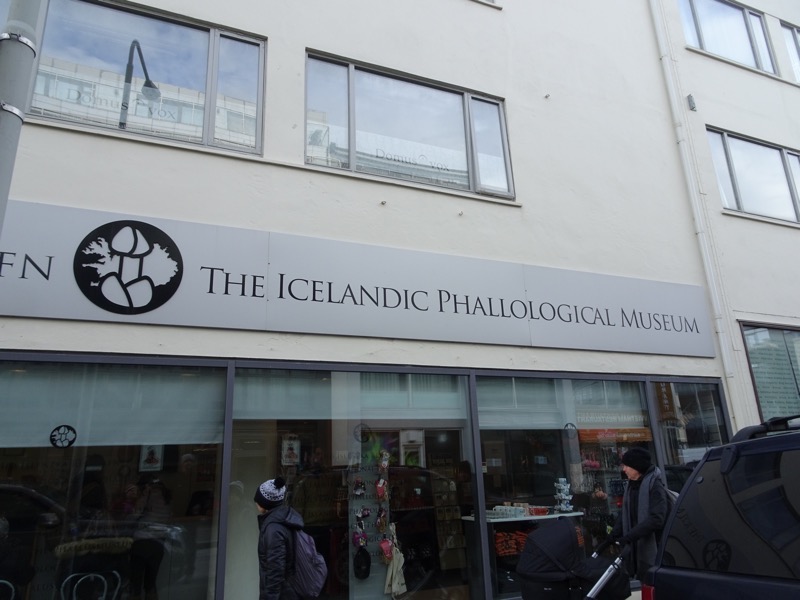
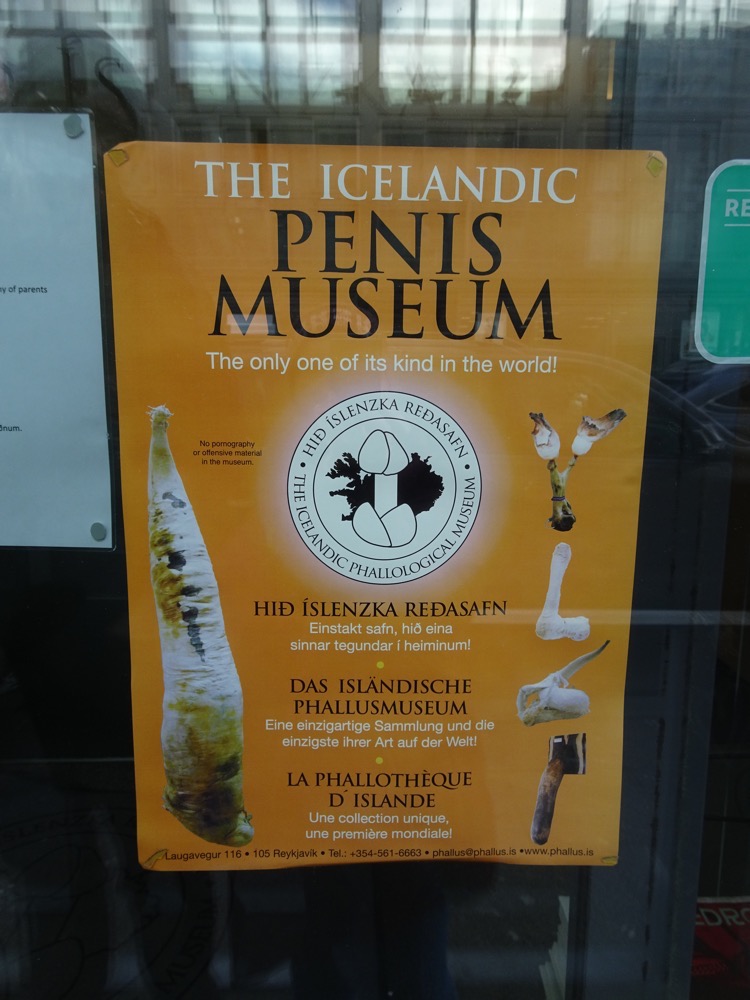 The museum also houses many other phallic items and artworks. Longtime poet and environmental activist, Danish Sculptor, Pjarne P Ejass (1945 – ) created this “Viagra Phallus” in the form of a scorn pole. The work displays the artist’s contempt for all things that deviate from the normal course of nature, and the work is intended to convey his statement, “Stop Fiddling with Nature,” The artist donated the work to the Icelandic Phallological Museum in the summer of 2004 and it was erected in May 2005.
The museum also houses many other phallic items and artworks. Longtime poet and environmental activist, Danish Sculptor, Pjarne P Ejass (1945 – ) created this “Viagra Phallus” in the form of a scorn pole. The work displays the artist’s contempt for all things that deviate from the normal course of nature, and the work is intended to convey his statement, “Stop Fiddling with Nature,” The artist donated the work to the Icelandic Phallological Museum in the summer of 2004 and it was erected in May 2005.
yale for scale.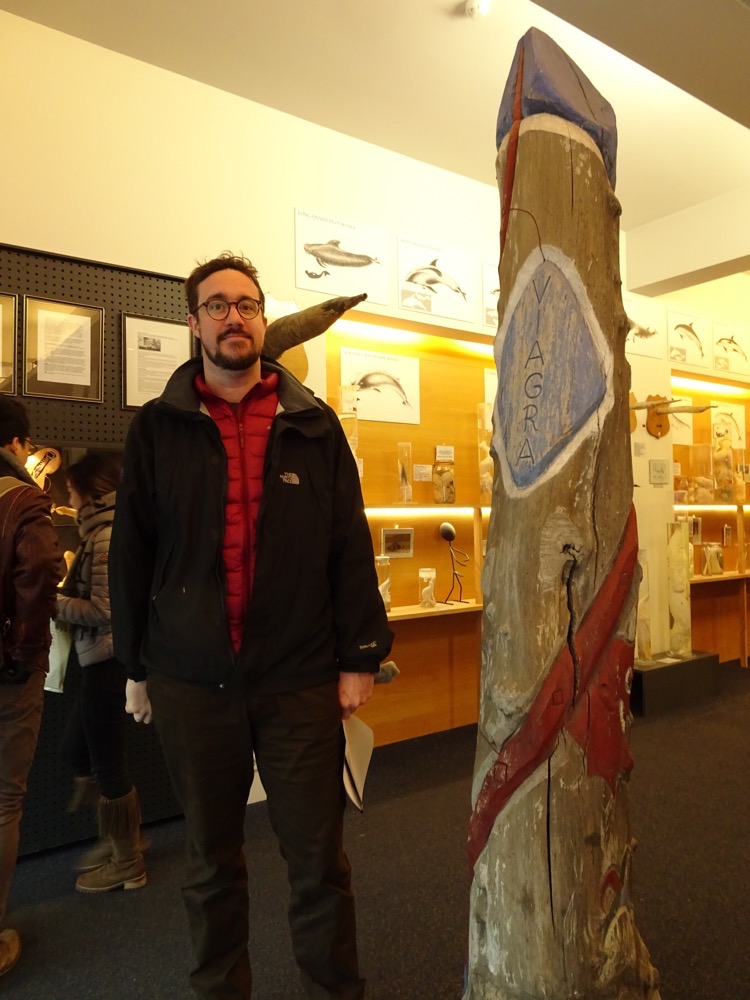 A rather painful looking toothpick holder:
A rather painful looking toothpick holder: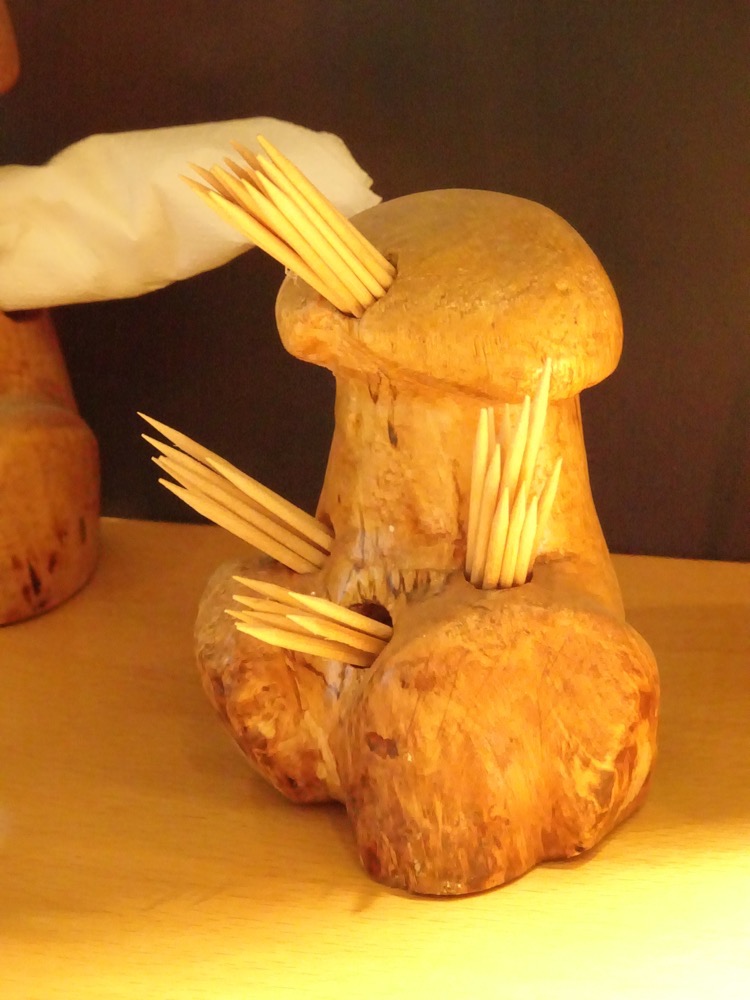 Dried sperm whale penis:
Dried sperm whale penis: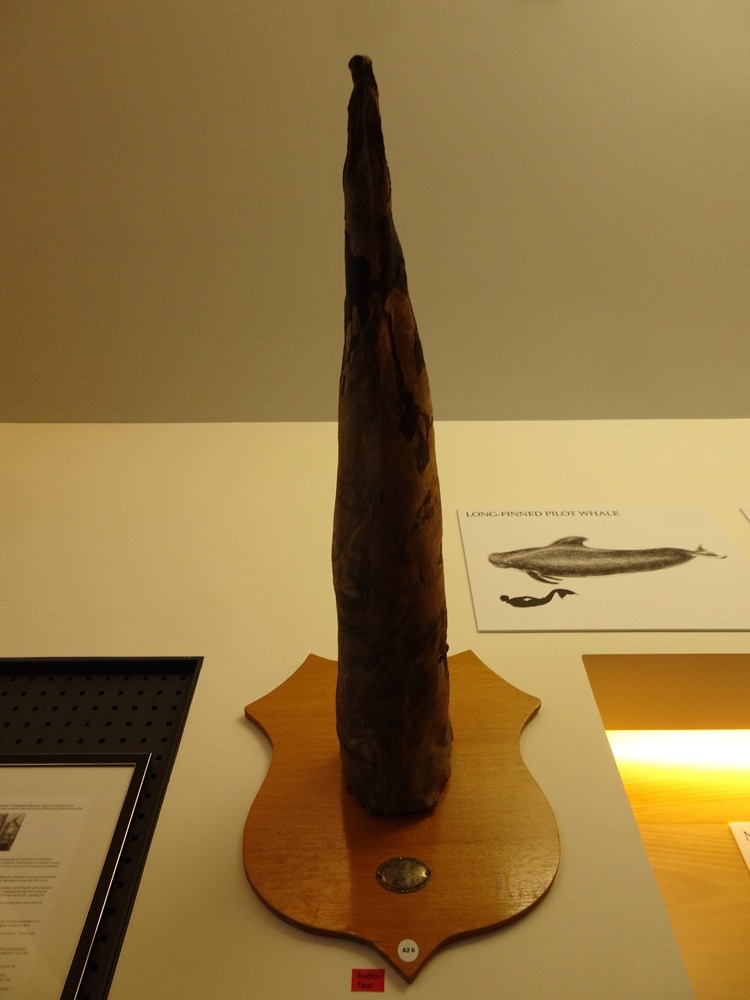 Preserved pilot whale penis:
Preserved pilot whale penis: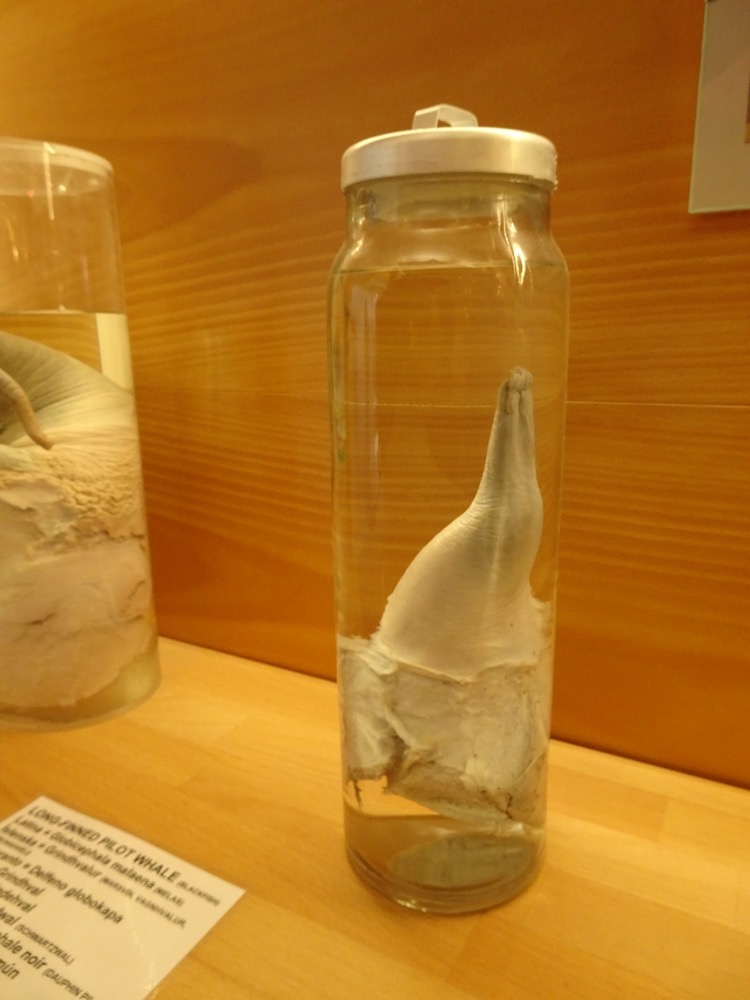 Various penises belonging to different dolphins and porpoises:
Various penises belonging to different dolphins and porpoises: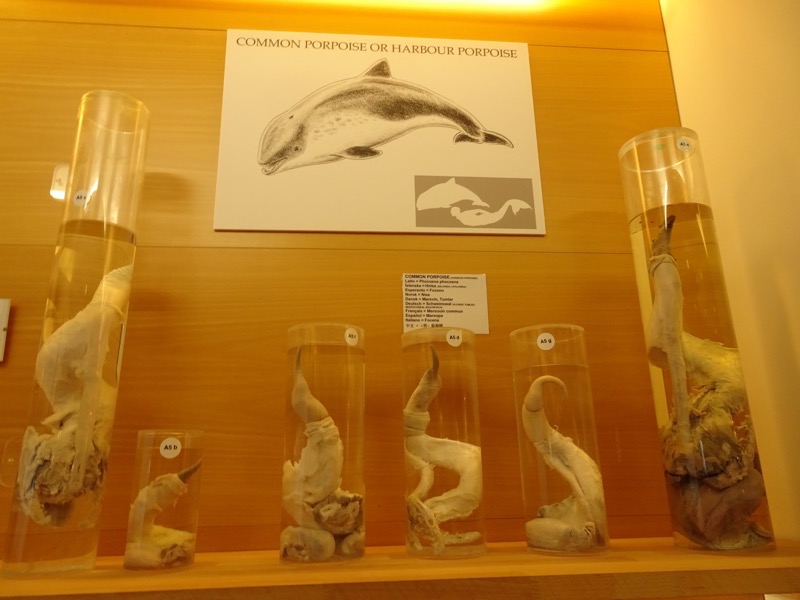 And this magnificent specimen – is a Narwhal! Narwhal! Living in the ocean…!
And this magnificent specimen – is a Narwhal! Narwhal! Living in the ocean…!
(Only not so much this one anymore, he’s been lopped off and preserved in formaldehyde.)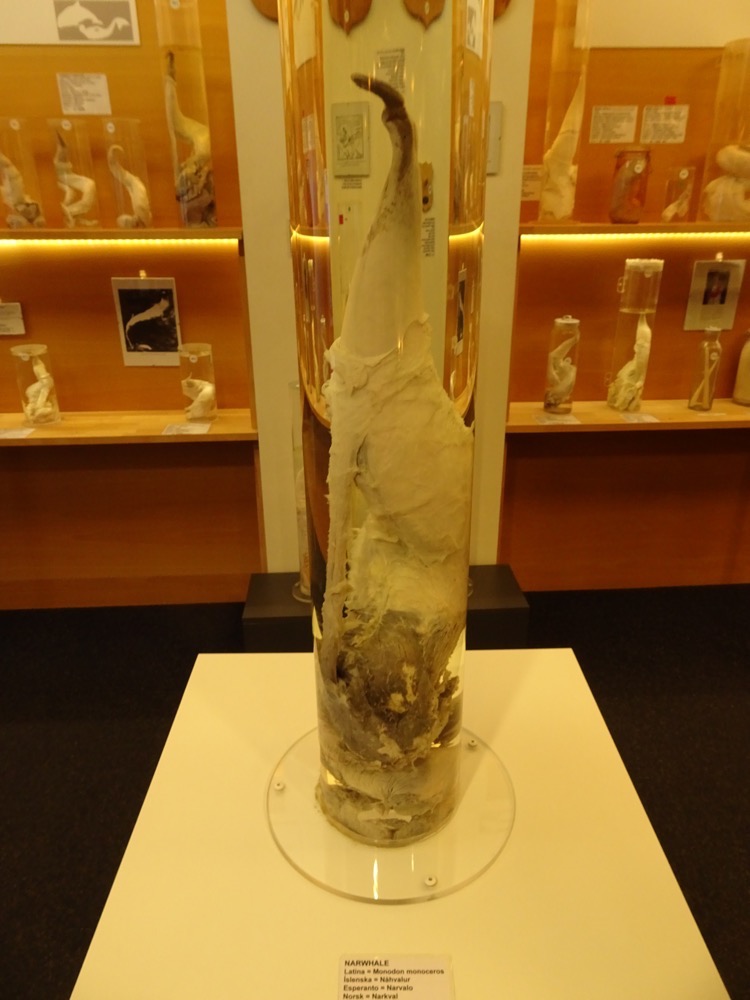 African bull elephant:
African bull elephant: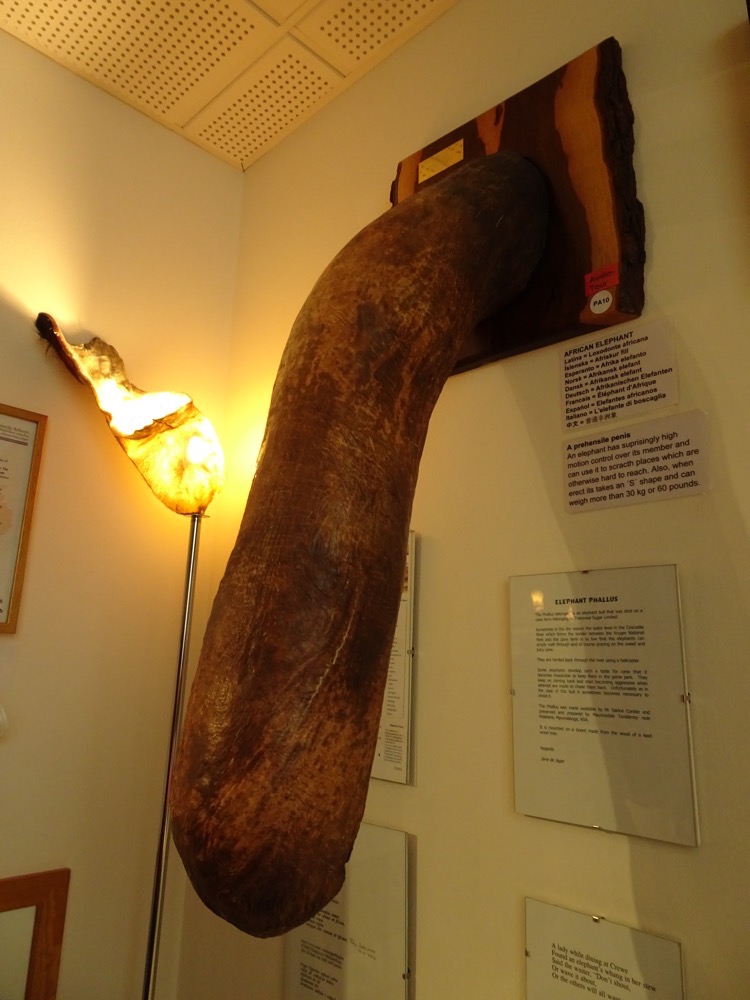 An eland, a dromedary and giraffe penises:
An eland, a dromedary and giraffe penises: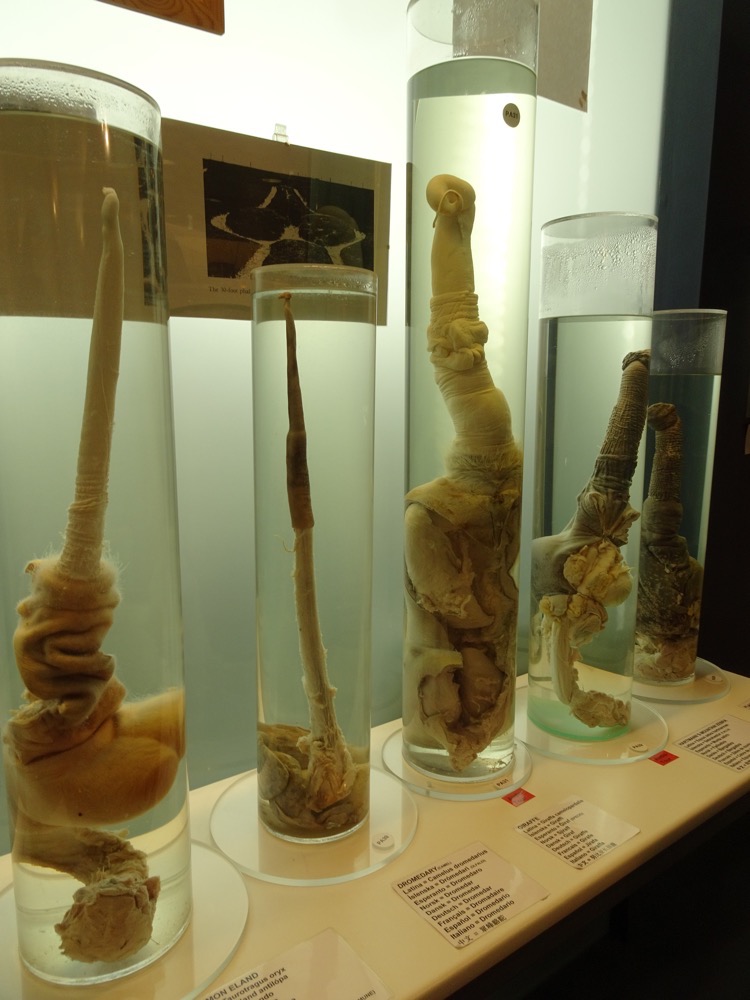 Killer whale penis: yale for scale
Killer whale penis: yale for scale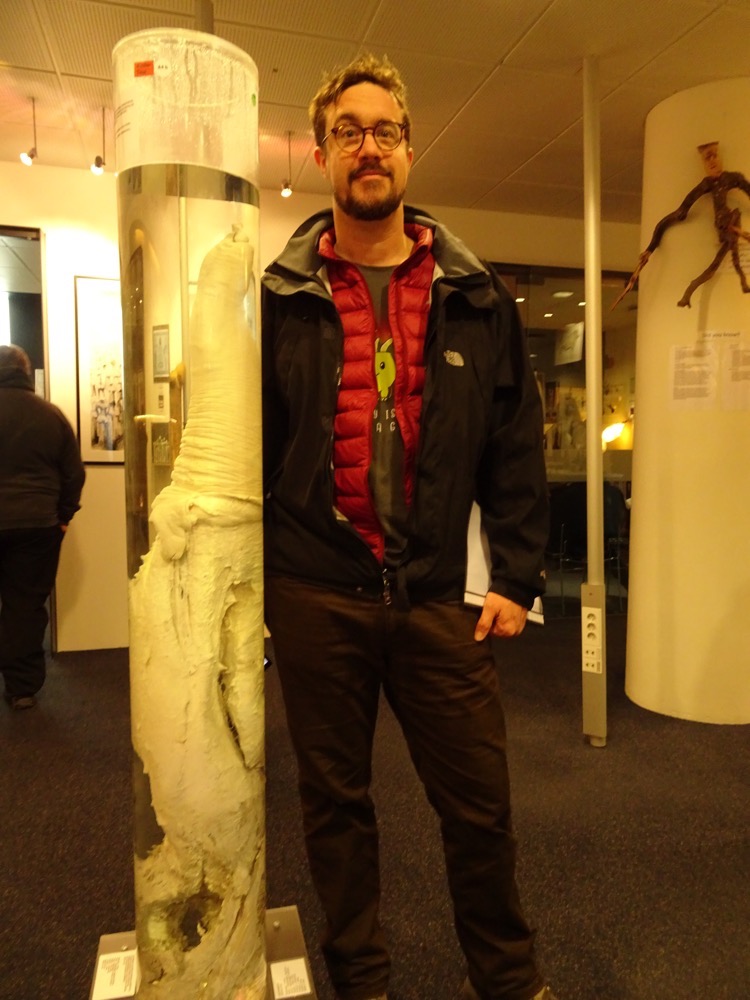 An artwork based on the penises of the National Icelandic Handball Team that represented Iceland at the Bejing Olympics in 2008. 😮
An artwork based on the penises of the National Icelandic Handball Team that represented Iceland at the Bejing Olympics in 2008. 😮 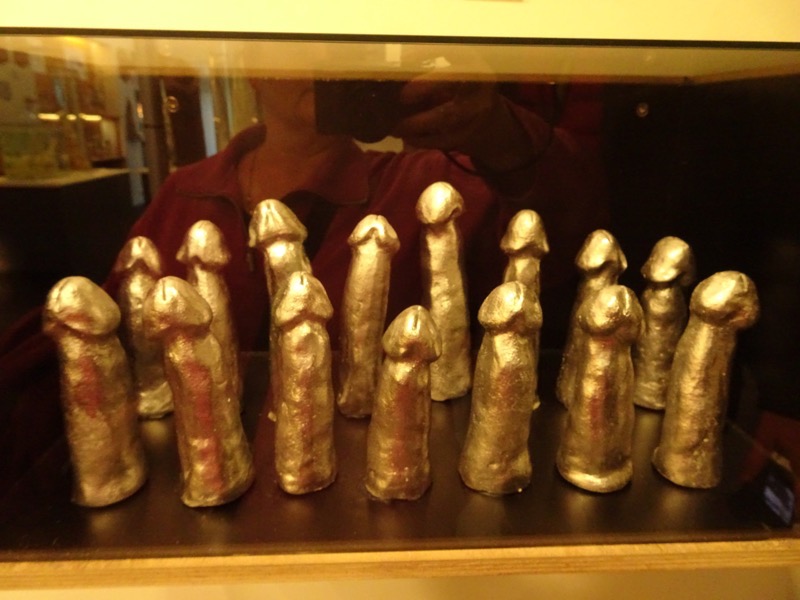 Freyr – Viking God of Fertility:
Freyr – Viking God of Fertility: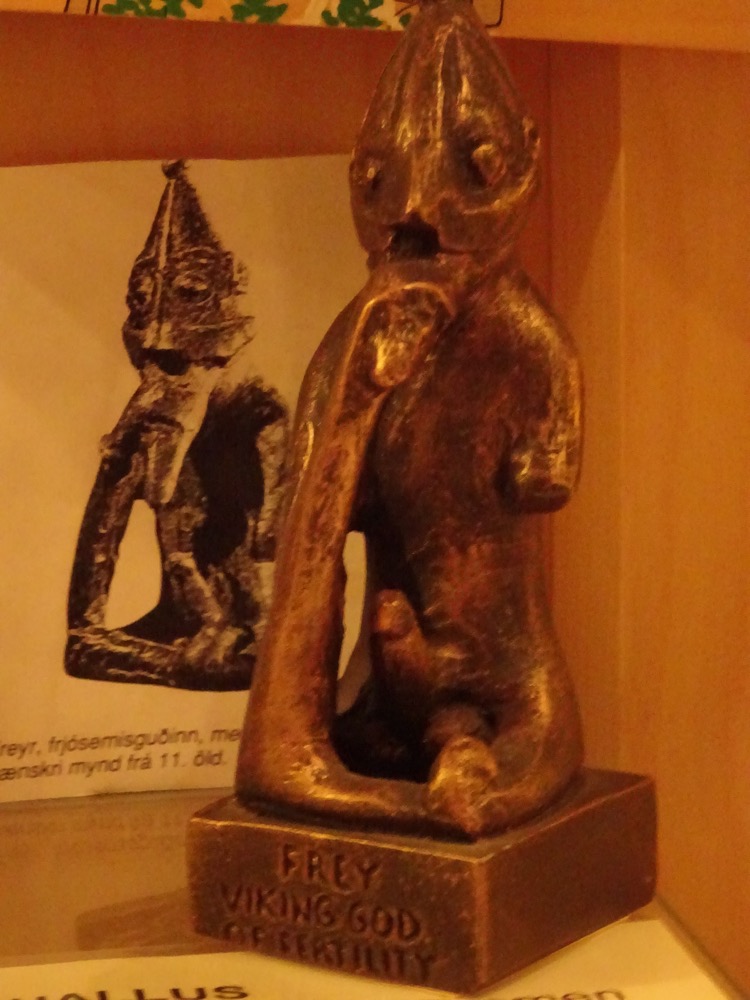
All up the Phallological Museum was kinda interesting – it seems to be a bit of a ‘must see’ when in Reykjavik, but only because you’re literally not able to see a collection like this anywhere else in the world. The gift shop missed some huge opportunities though – can you imagine the dick related paraphernalia they could be flogging? Instead, there is a handful of magnets and keychains and a few bad taste aprons and knitted elephant penis socks.
While we were leaving – some of the ladies working the reception at Dick Museum were about to have some lovely looking cinnamon scrolls for afternoon tea which smelled just divine. They told me that they were from the food hall across the street, so naturally, we decided to go find some. Fantastic! Cinnamon for me, and liquorice and blueberry for yale… still warm from the oven, perfect for this sort of weather.
 From here we did what was probably the first bit of real touristy shopping we have done since we arrive in Iceland. We wandered down the main shopping street which pretty much leads from the Hallgrímskirkja church down towards the waterfront esplanade. I got to stop in the Tuilipop shop this time, which was closed when I was here last – luckily their plush Freds are not very soft or I would have found myself buying a rather expensive and unnecessary plush toy to take home!
From here we did what was probably the first bit of real touristy shopping we have done since we arrive in Iceland. We wandered down the main shopping street which pretty much leads from the Hallgrímskirkja church down towards the waterfront esplanade. I got to stop in the Tuilipop shop this time, which was closed when I was here last – luckily their plush Freds are not very soft or I would have found myself buying a rather expensive and unnecessary plush toy to take home! 
Icelanders have come to have a love/hate relationship with the tourists that saved them from the 2008 Global Financial Crisis. They love the income and the jobs that are provided from the huge boost they have seen in tourism over the last decade, but they hate what it is doing to their island. Downtown Reykjavik used to be full of useful shops for locals to go do their shopping and meet with friends, now it is full of what they derisively refer to as The Puffin Shops. Any/all souvenir shops are known as Puffin Shops and for obvious reasons…
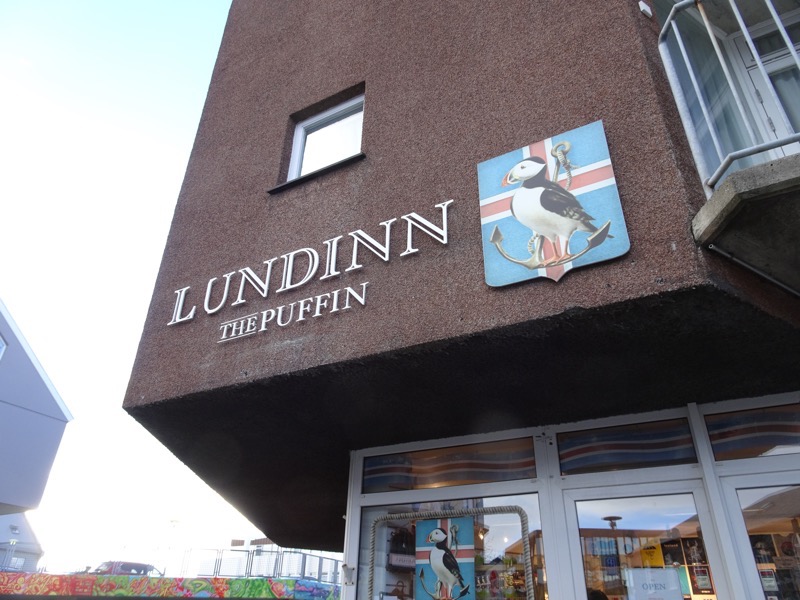
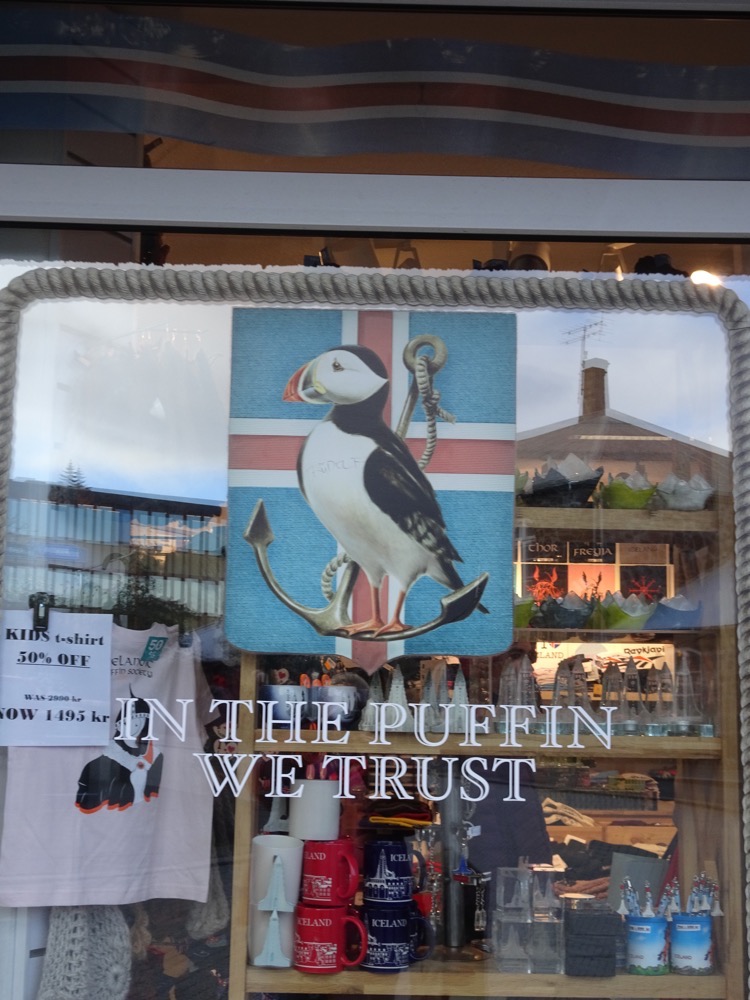 There is so much shit here with puffins on it – and because I have been here three times now and have yet to see a single goddamn puffin that isn’t stuffed (like the AUD$450 ones in the top left hand picture!), I flatly refuse to buy so much as a sticker with a puffin on it. I think the puffins here are like the trolls – just some sort of myth.
There is so much shit here with puffins on it – and because I have been here three times now and have yet to see a single goddamn puffin that isn’t stuffed (like the AUD$450 ones in the top left hand picture!), I flatly refuse to buy so much as a sticker with a puffin on it. I think the puffins here are like the trolls – just some sort of myth.
After a little wander down through the town, we decided to head towards the Perlan which is a landmark building with observation decks and gallery spaces, created from some old water tanks that were high on a hill overlooking the city. Unfortunately, the Perlan was closed from 1 Oct to 14 Oct, so we didn’t get to go in or go up. I guess it’s that time of year – they need to do maintenance before the winter sets in properly, but don’t want to be doing it when it is going to affect too many visitors.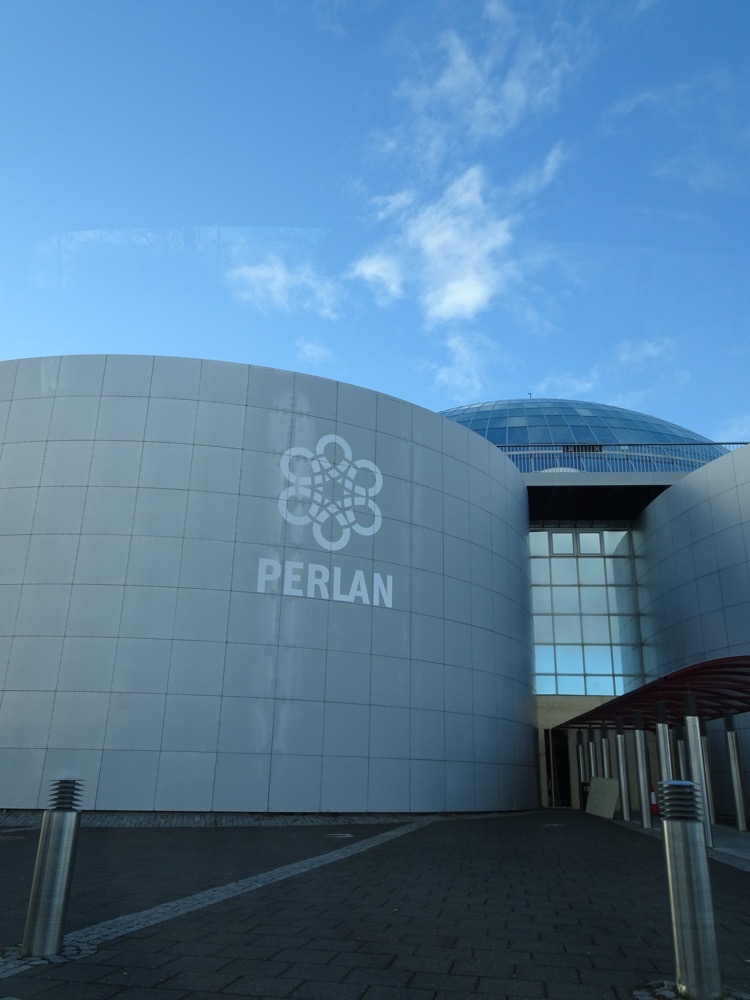
Then it was sadly time to head back to our AirBnB and get packing! Oh no… time to pack to leave Iceland. I am feeling a bit sad about going actually. We have had almost two weeks here and seen soooo many truly beautiful places and things, but I am left feeling like there is so much more we could see and do if we had more time and way more money. I’ve never been in a country more expensive than this place – it really makes you weigh up your travel plans – How long have I got? How much do we think we can see? Can we afford to actually eat once we get here? If we make the trip longer to see more things, can we even afford the extra night’s car hire and accommodation?! It is just nuts. For our last night in Iceland, we thought we’d go out for one final nice, but predictably, overpriced meal. We ended up at the Geysir Bistro near Ingólfur Square. It was a more relaxed environment that the last two restaurants we went to and the menu looked likewise slightly more modest.
For our last night in Iceland, we thought we’d go out for one final nice, but predictably, overpriced meal. We ended up at the Geysir Bistro near Ingólfur Square. It was a more relaxed environment that the last two restaurants we went to and the menu looked likewise slightly more modest.
 But the food – still fancy AF.
But the food – still fancy AF. 

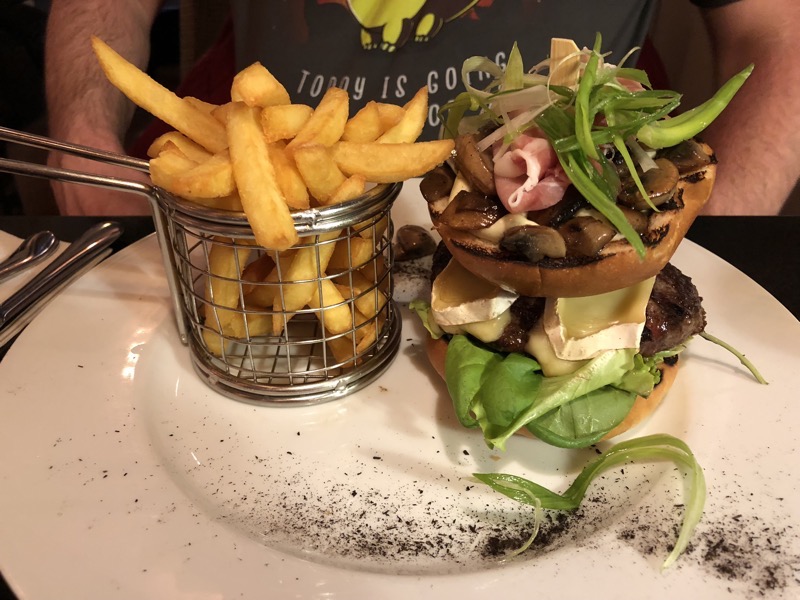
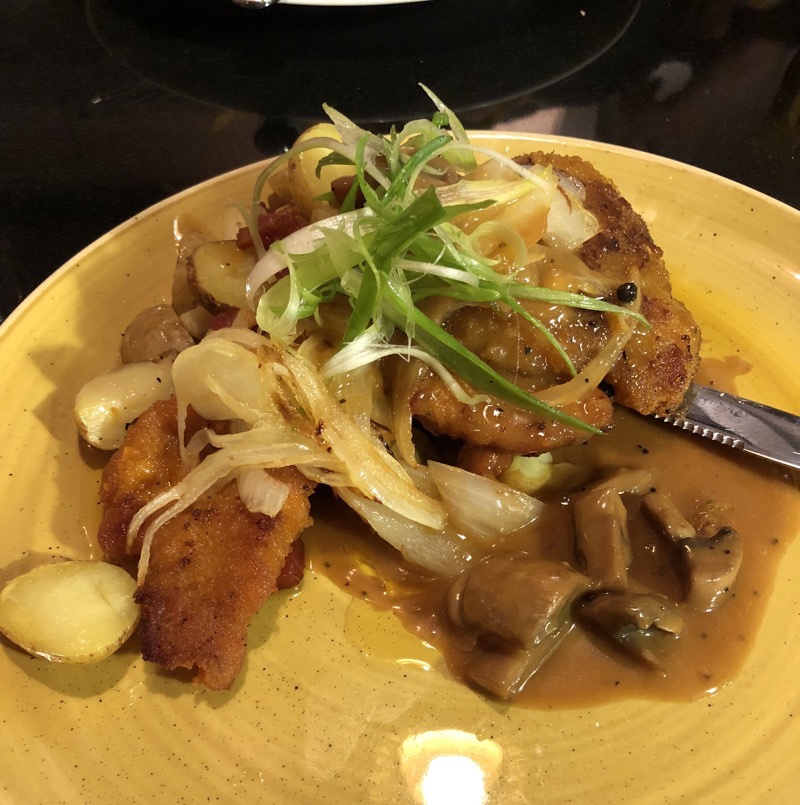 We toasted our last night with some Brennavin and congratulated ourselves on having only had one shit fight in two weeks in close quarters! 😛 It’s bound to happen – travelling with people is one way to really test the friendship/relationship! All your best and all your worst will eventually come out. 🙂
We toasted our last night with some Brennavin and congratulated ourselves on having only had one shit fight in two weeks in close quarters! 😛 It’s bound to happen – travelling with people is one way to really test the friendship/relationship! All your best and all your worst will eventually come out. 🙂 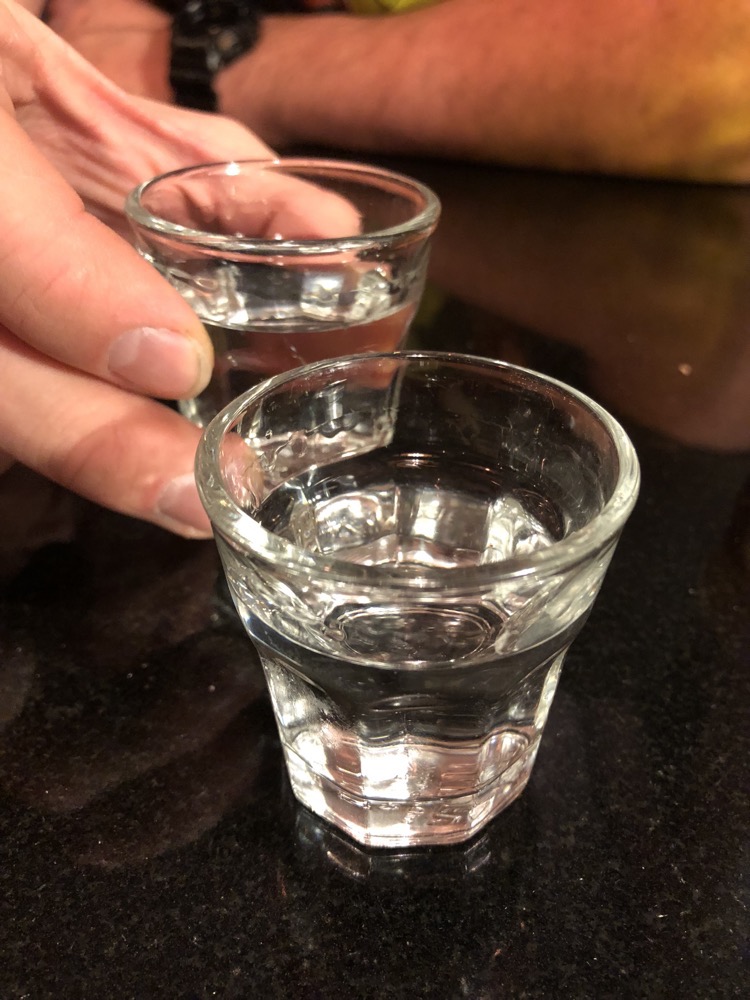
So here’s ‘Skål..!’ to Iceland. I have no idea if I will ever be back. I know there is still plenty of wonders here to discover – but there’s so many places I have never been, that doubling back here again seems highly unlikely*
*I said that last time… and look what happened! Hoping the trick works again! 😉

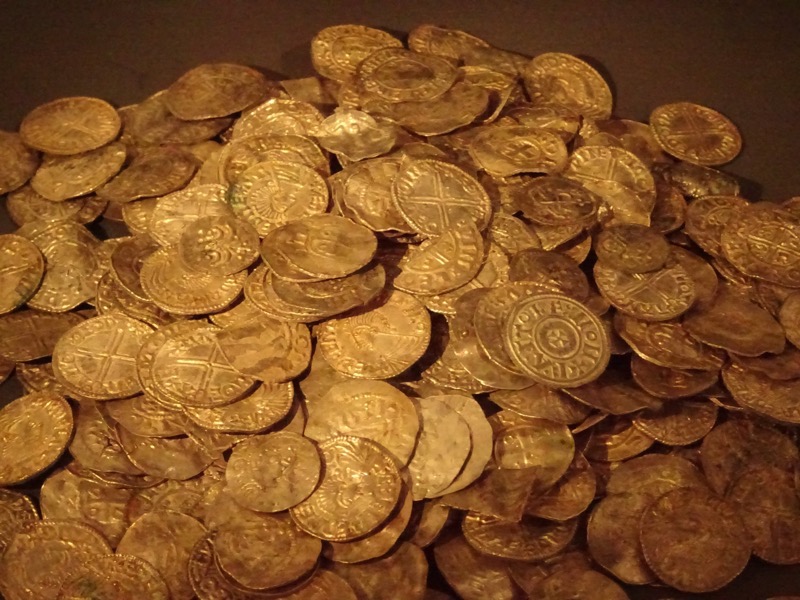
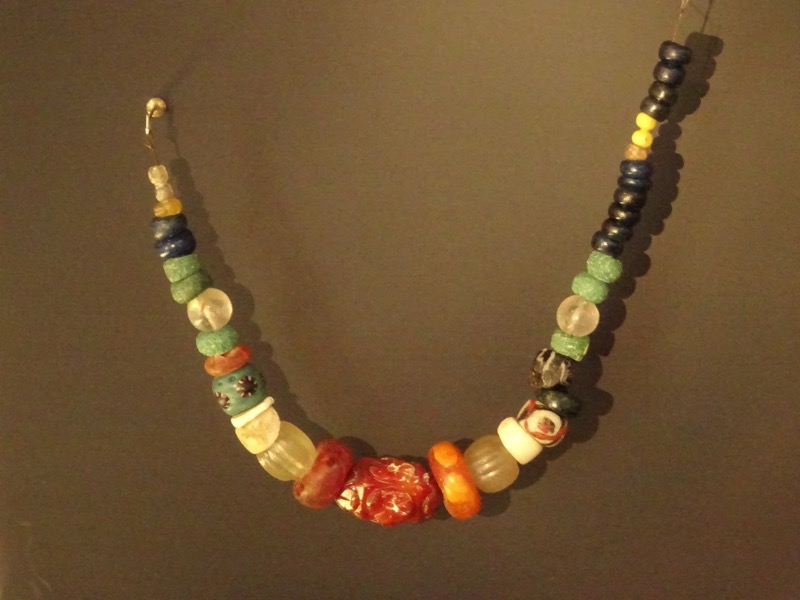
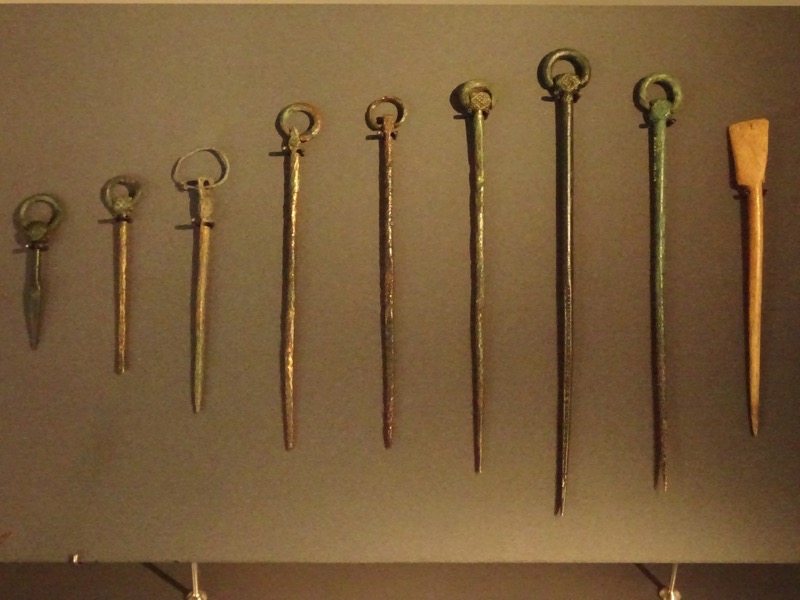
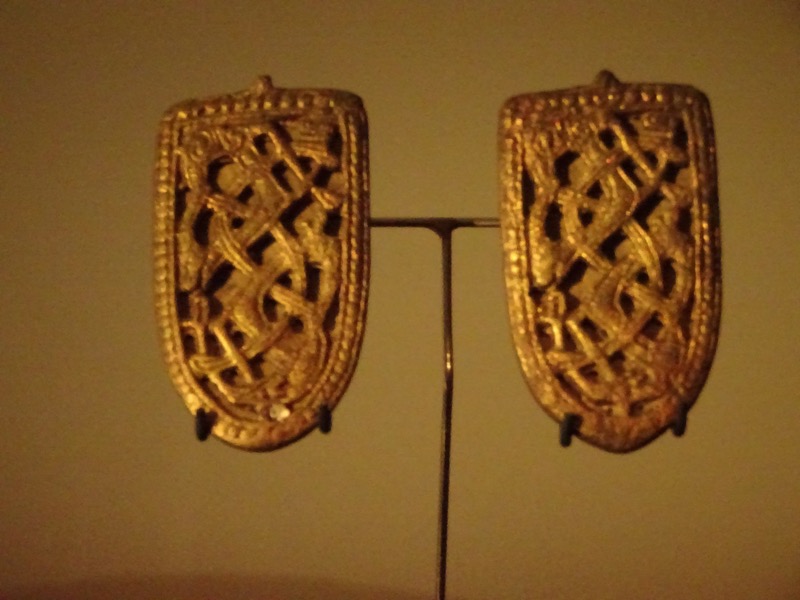
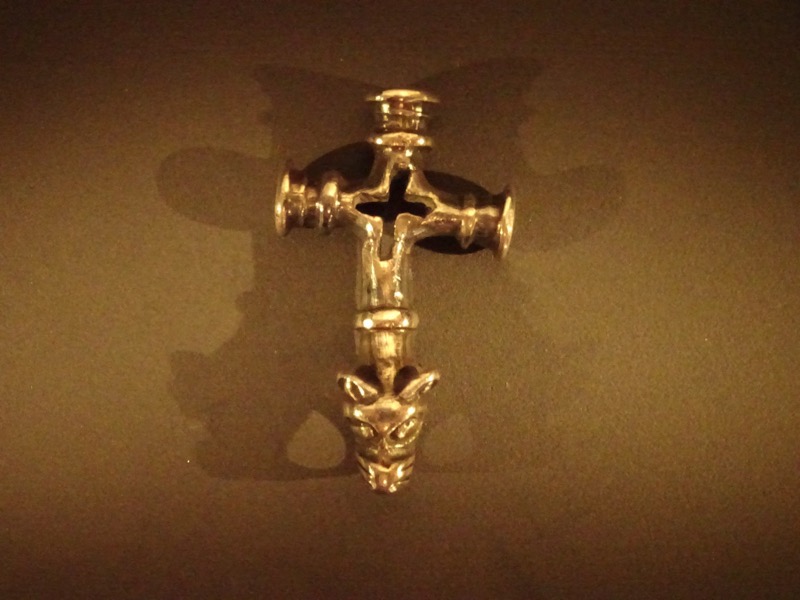
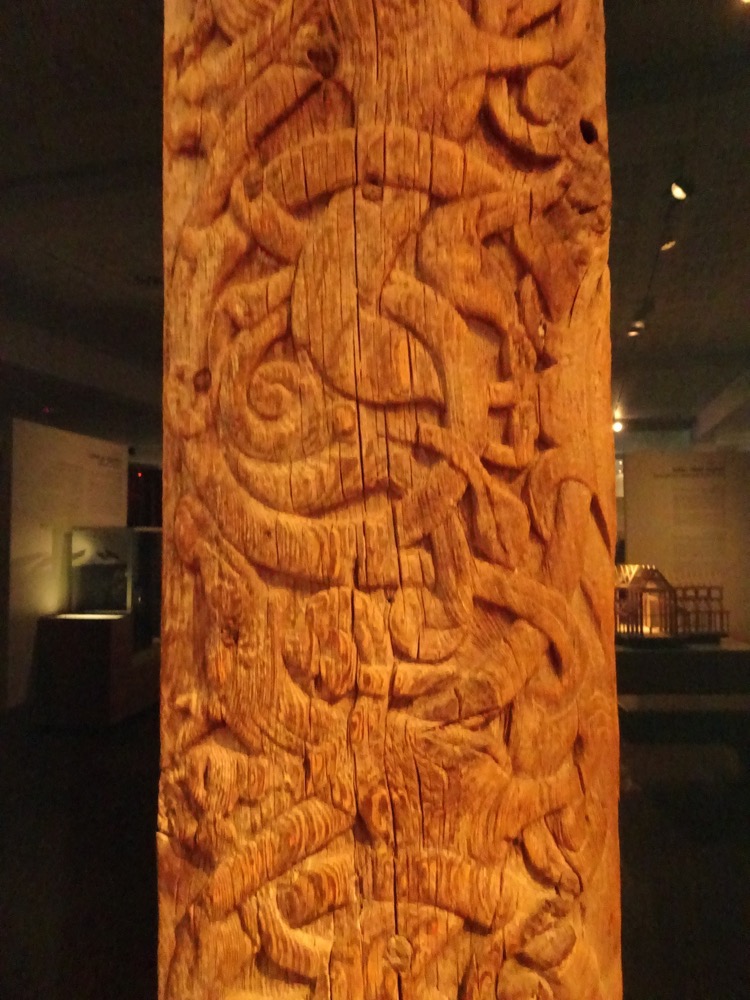
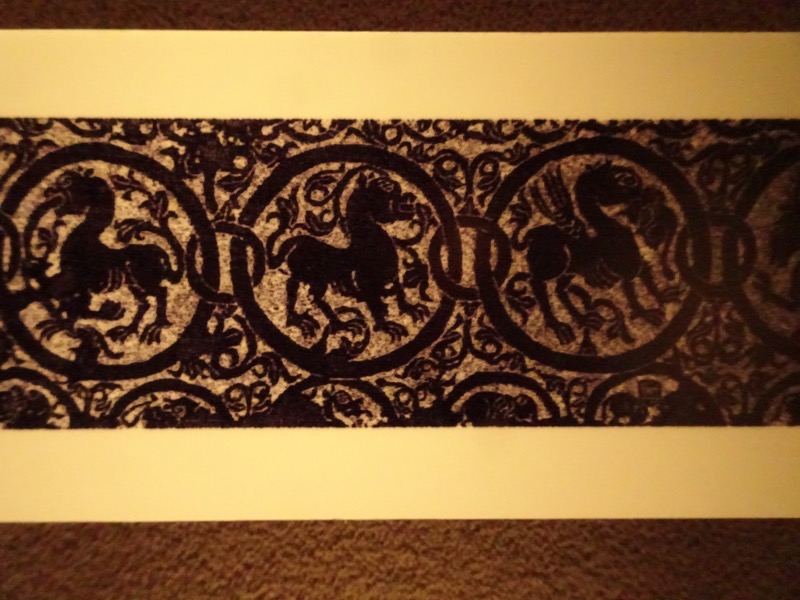
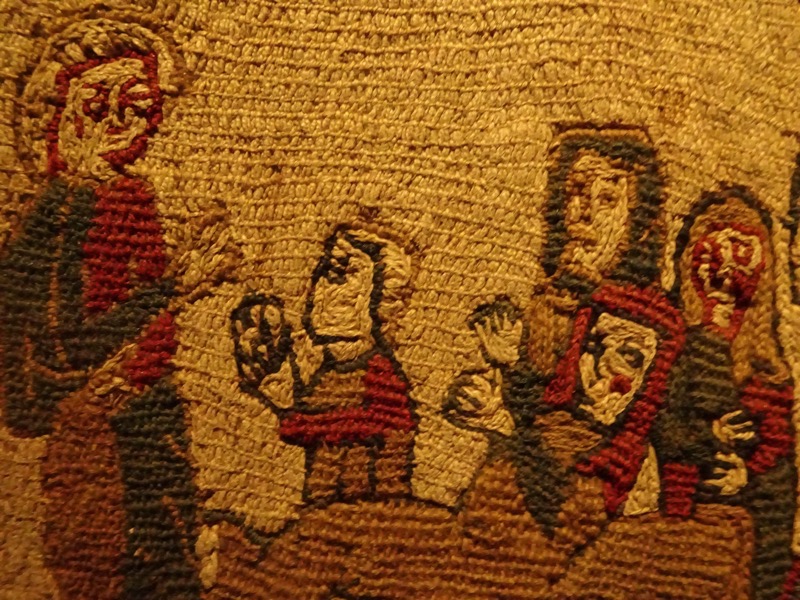
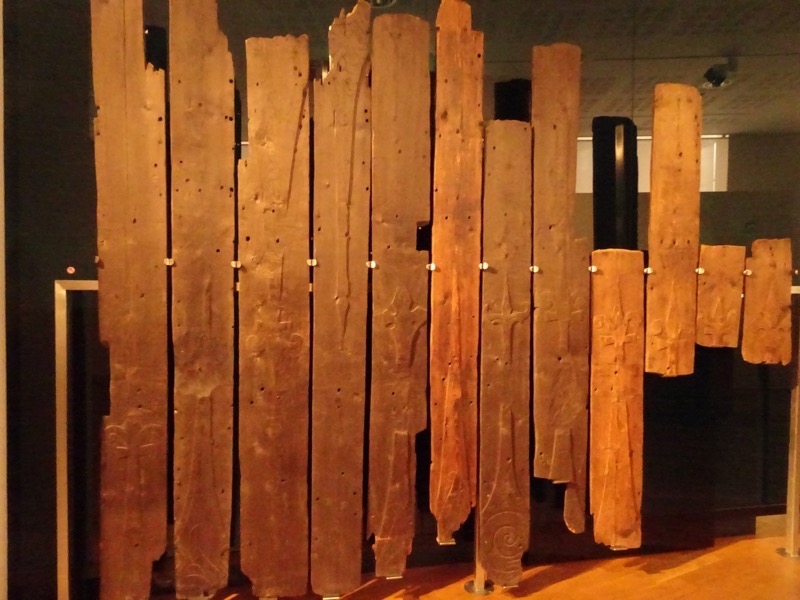
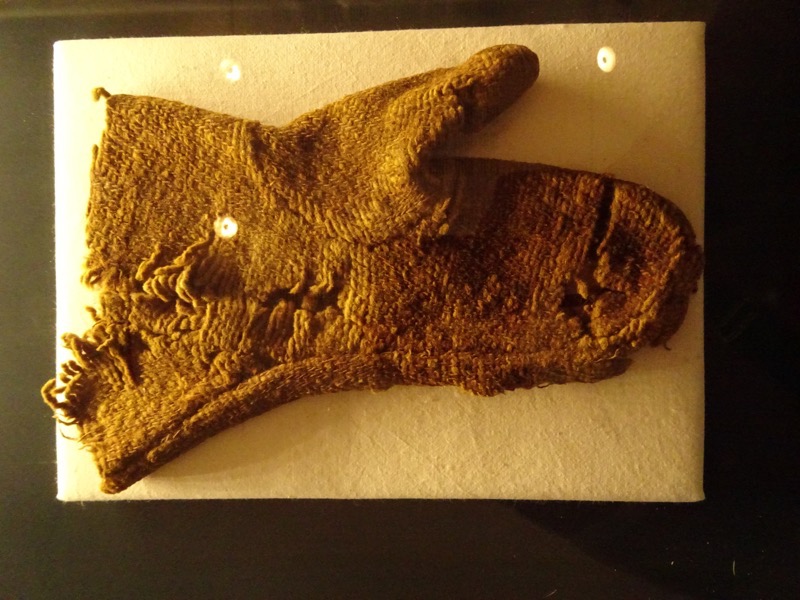
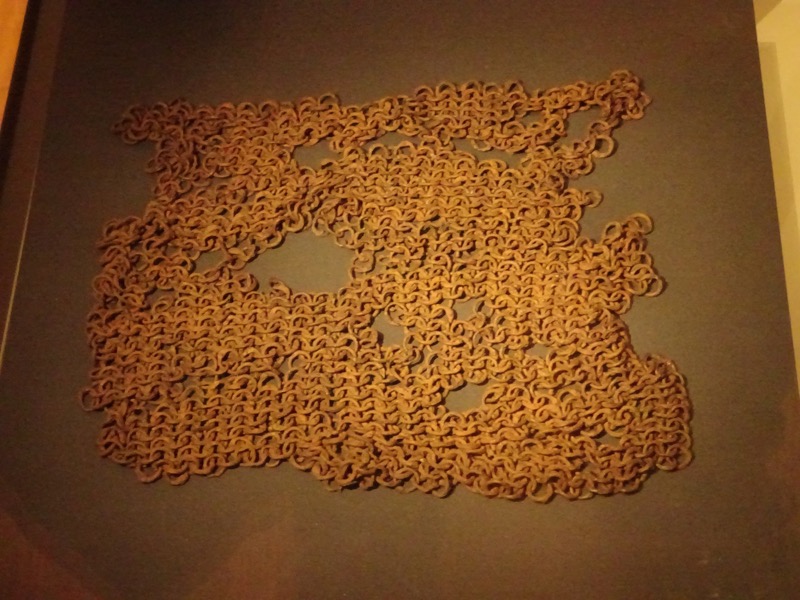
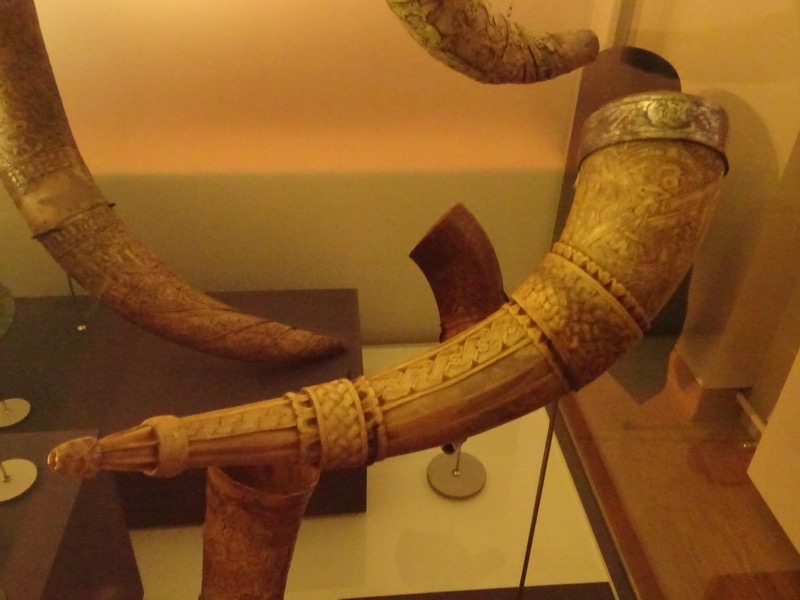
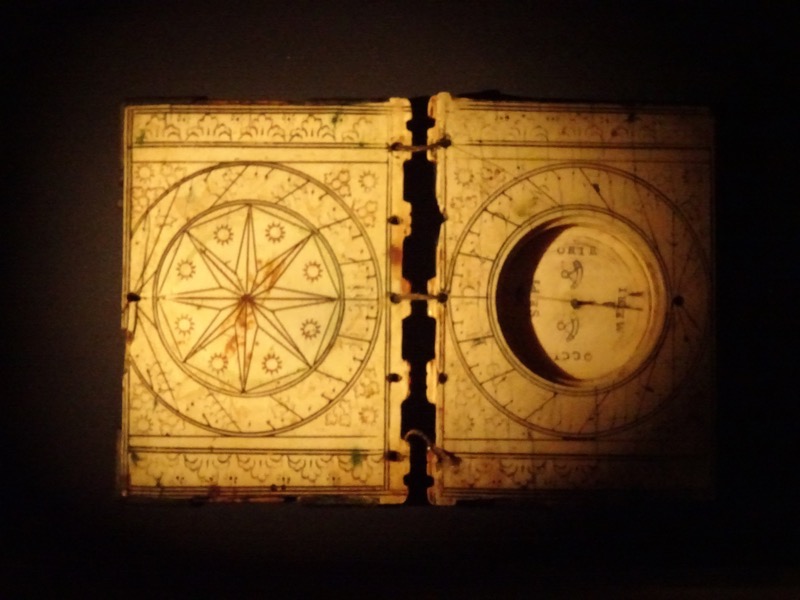
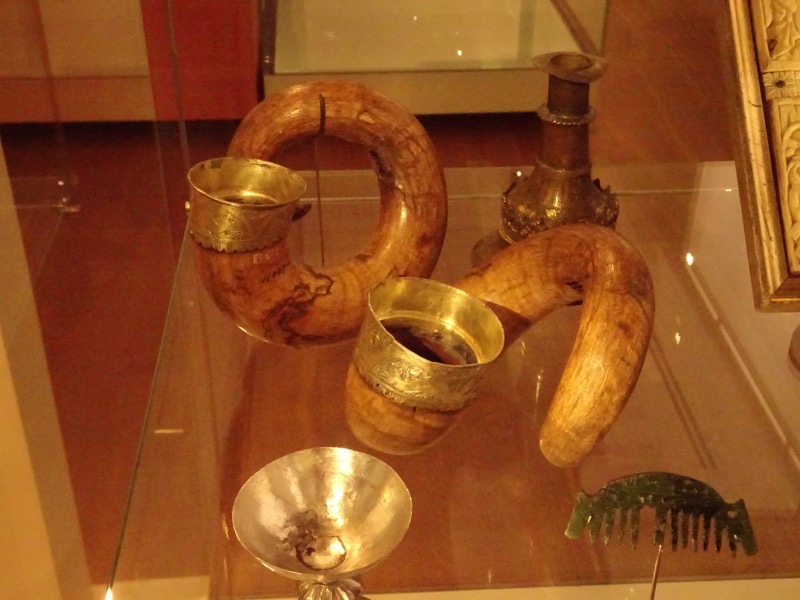
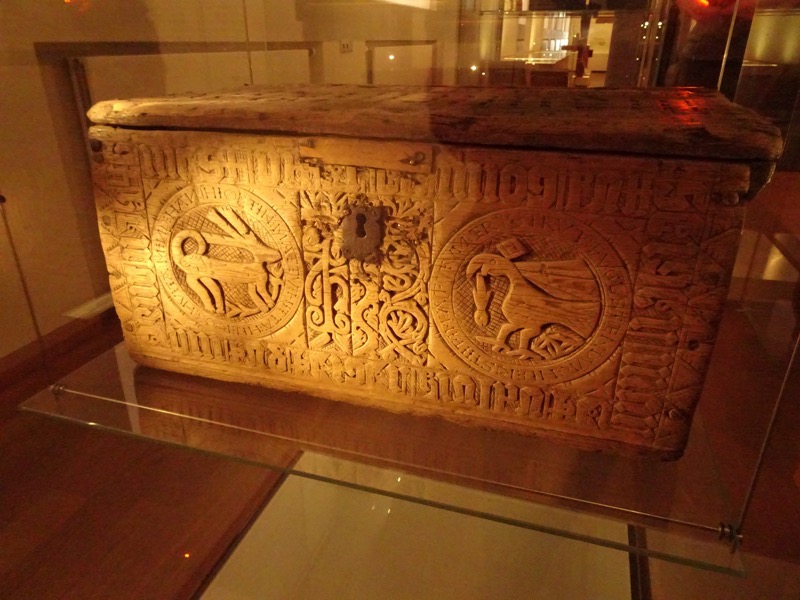
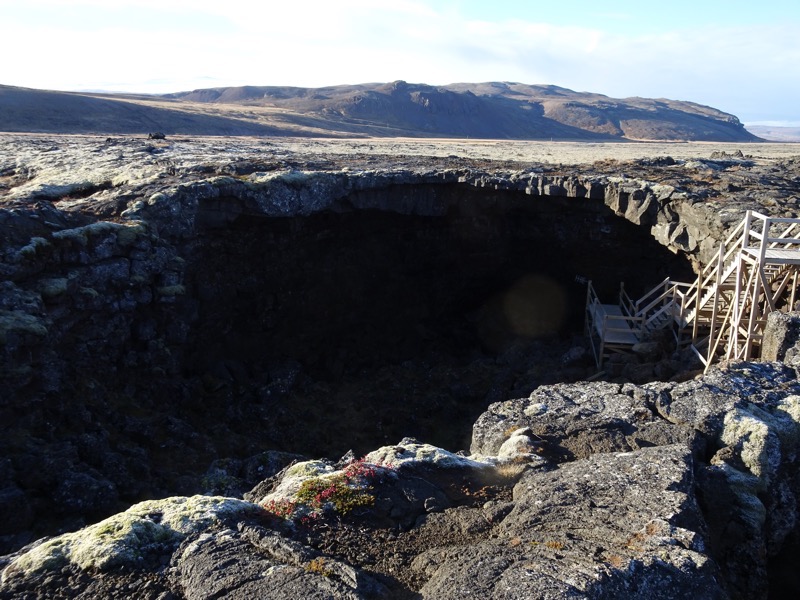
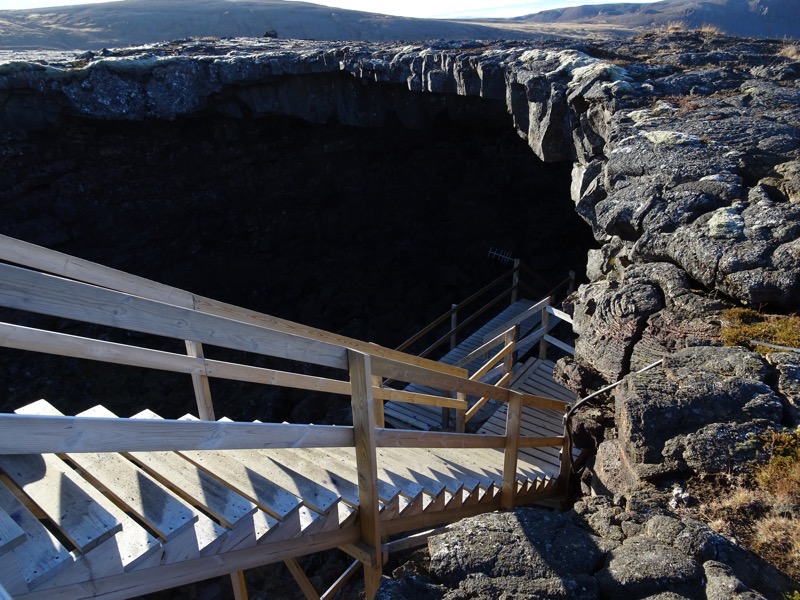
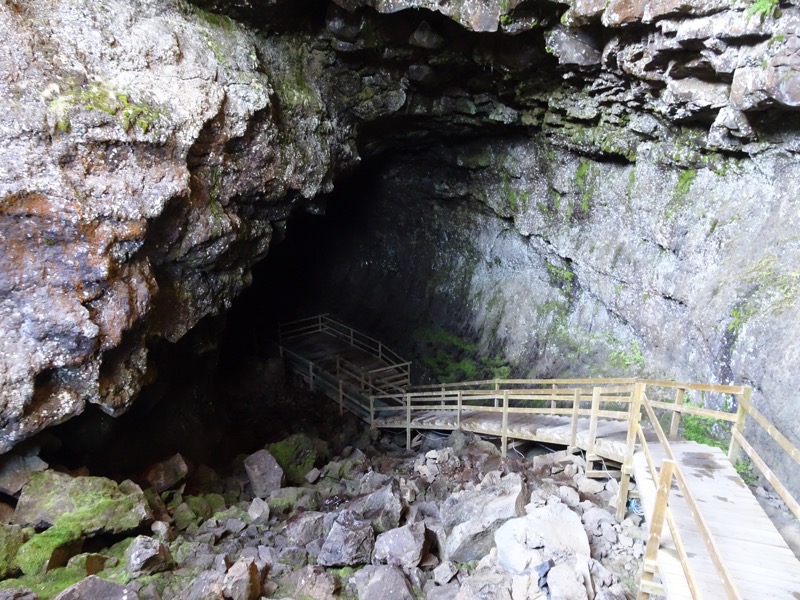
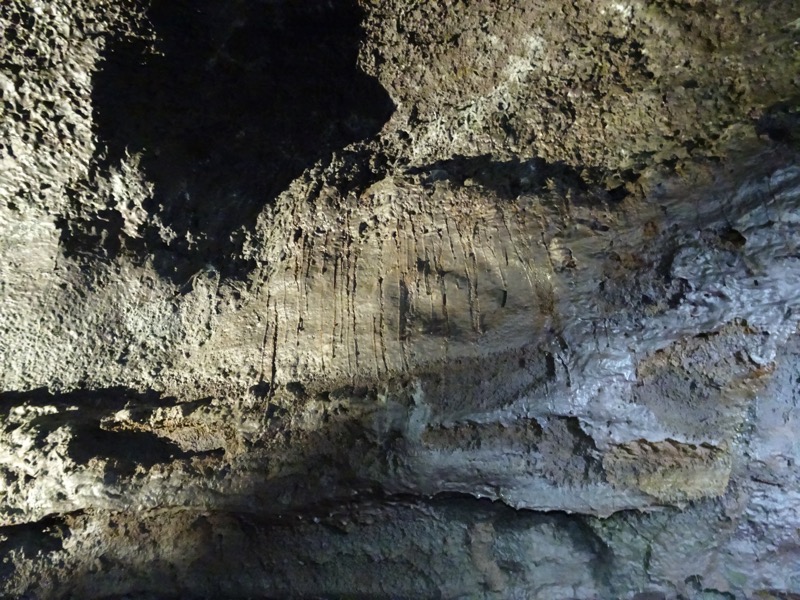 The cave has some wide entrance but narrows down in one area that we traversed… it could be a bit claustrophobic for some, but given I am all of 5′ tall, I was able to just duck my head a little and skooch down the passage. At this tight point, the owners have installed an iron gate in the early 90s to preserve the of the delicate lava formations which tourists and geologist had a habit of souvenir’ing or accidentally destroying.
The cave has some wide entrance but narrows down in one area that we traversed… it could be a bit claustrophobic for some, but given I am all of 5′ tall, I was able to just duck my head a little and skooch down the passage. At this tight point, the owners have installed an iron gate in the early 90s to preserve the of the delicate lava formations which tourists and geologist had a habit of souvenir’ing or accidentally destroying.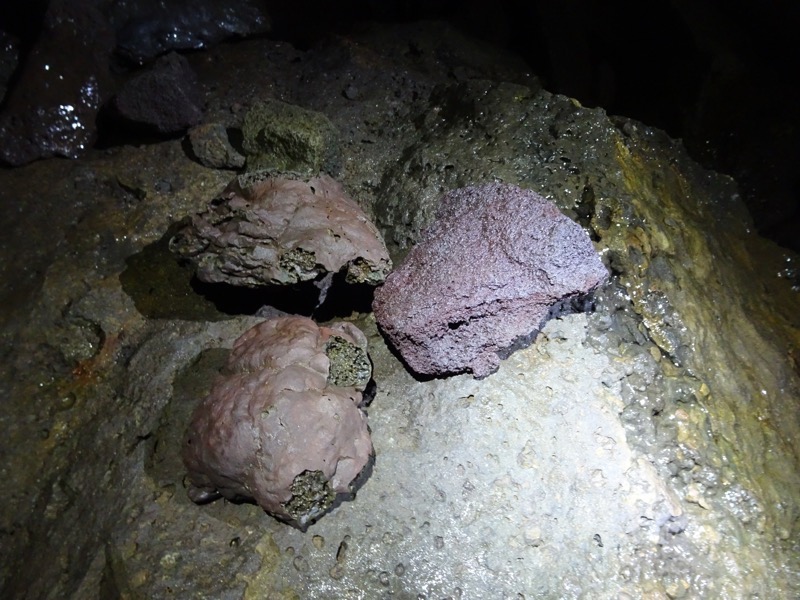 The colours in the rock formations were simply astounding.
The colours in the rock formations were simply astounding. 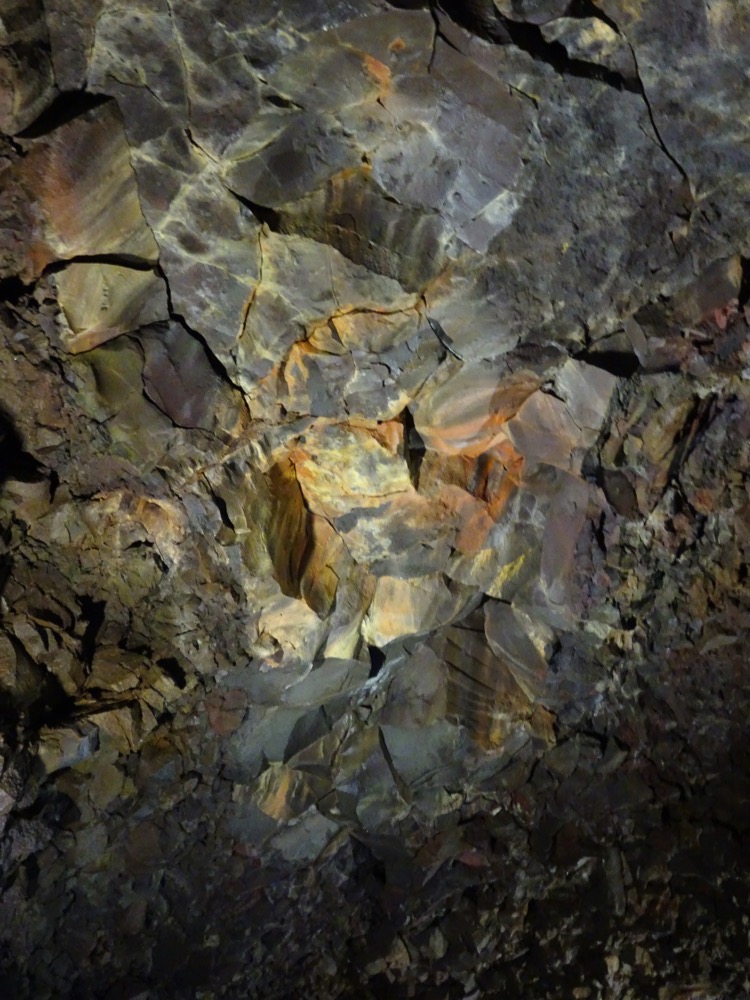
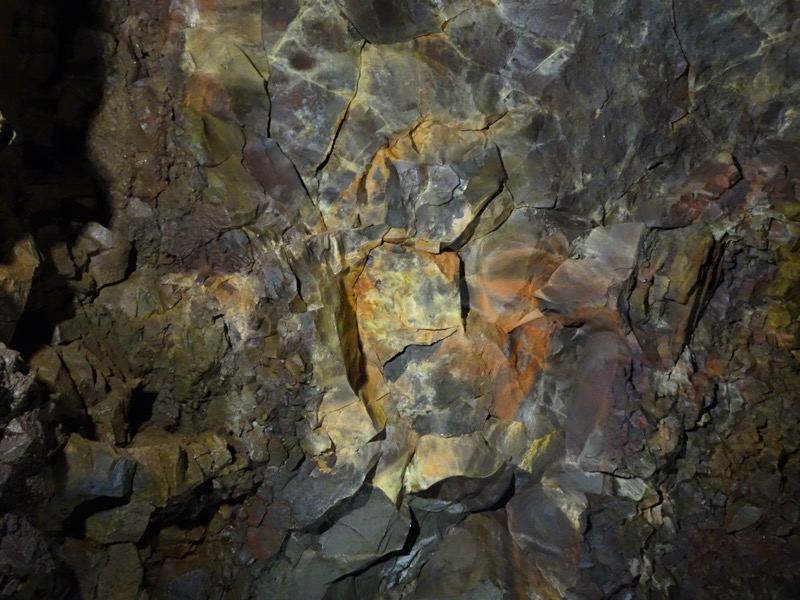 Unlike the sedimentary type caves we are used to seeing back home when water filters down through the rock into the cave, it doesn’t form sparkling stalactites and stalagmites, instead, it forms ice columns. The water drips down in the same spot each winter and given it is usually around 0° in the cave, the water freezes on top of the last drop making icicle stalagmites that can reach as high as 3m. Each year in the summer, the ice formations are diminished only to return each winter. Normally there are no ice formations in the cave this early in the year – it’s only autumn – but this year has been a ‘really shit summer’ and rather wet, so there were ice formations that hadn’t disappeared since last year.
Unlike the sedimentary type caves we are used to seeing back home when water filters down through the rock into the cave, it doesn’t form sparkling stalactites and stalagmites, instead, it forms ice columns. The water drips down in the same spot each winter and given it is usually around 0° in the cave, the water freezes on top of the last drop making icicle stalagmites that can reach as high as 3m. Each year in the summer, the ice formations are diminished only to return each winter. Normally there are no ice formations in the cave this early in the year – it’s only autumn – but this year has been a ‘really shit summer’ and rather wet, so there were ice formations that hadn’t disappeared since last year.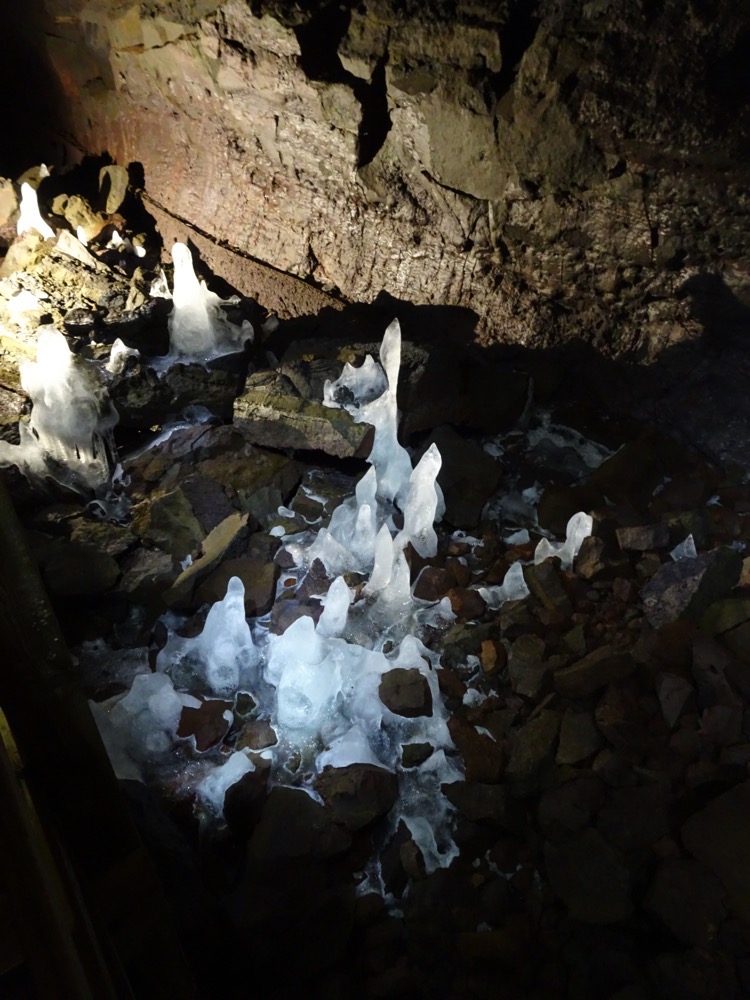 The cave has recently had quite a bit of construction work done with walkways to protect the delicate lava formations and to make it more accessible to visitors.
The cave has recently had quite a bit of construction work done with walkways to protect the delicate lava formations and to make it more accessible to visitors.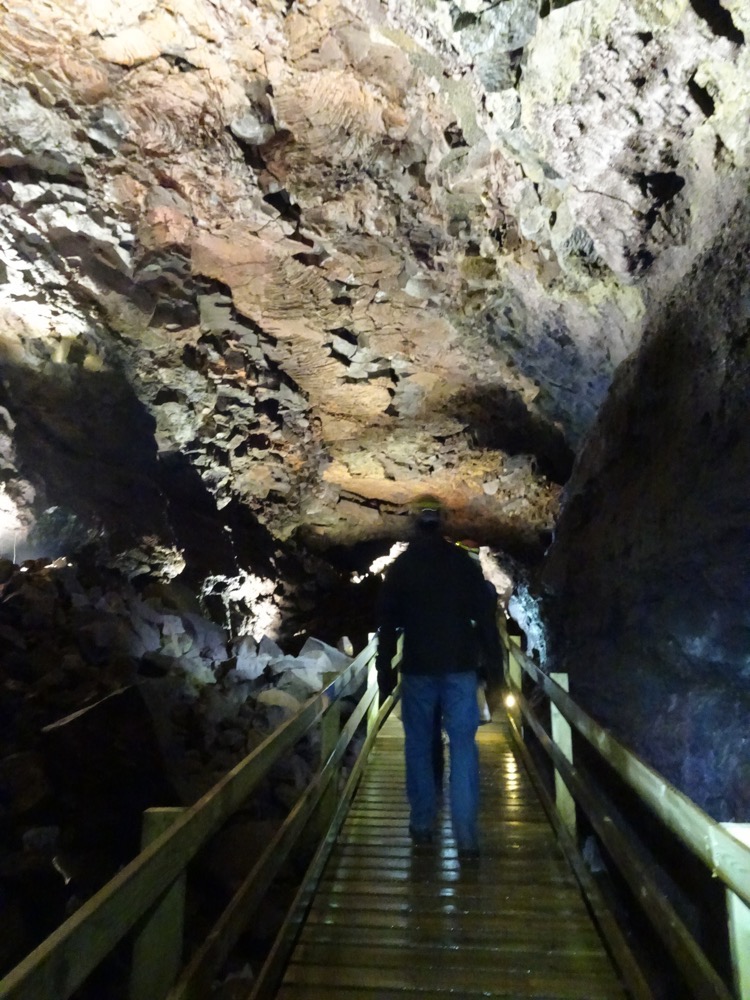
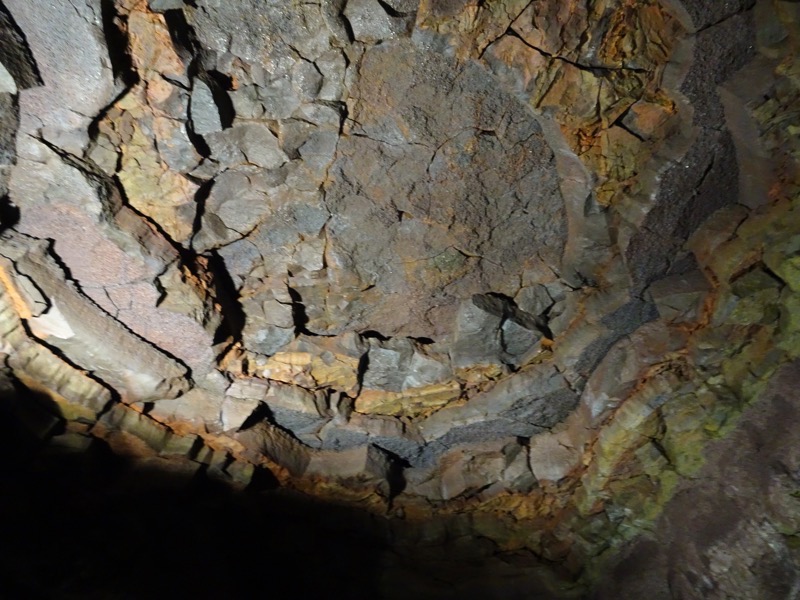 The lava tube caves are formed when a low-viscosity lava flow develops a continuous and hard crust as it cools, which then thickens and forms a roof above the molten lava stream. When the eruption subsides, the still-molten lava moving beneath the crust will continue to drain downhill, eventually emptying out and leaving an open lava tube cave. The cave will usually have larger tubes with smaller tubes protruding off from the main caves – Johannes used an analogy of a human body (body metaphors, love it!). The volcano is the heart pumping out the lava/blood, into the major arteries, which also forces the lava into smaller capillaries.
The lava tube caves are formed when a low-viscosity lava flow develops a continuous and hard crust as it cools, which then thickens and forms a roof above the molten lava stream. When the eruption subsides, the still-molten lava moving beneath the crust will continue to drain downhill, eventually emptying out and leaving an open lava tube cave. The cave will usually have larger tubes with smaller tubes protruding off from the main caves – Johannes used an analogy of a human body (body metaphors, love it!). The volcano is the heart pumping out the lava/blood, into the major arteries, which also forces the lava into smaller capillaries.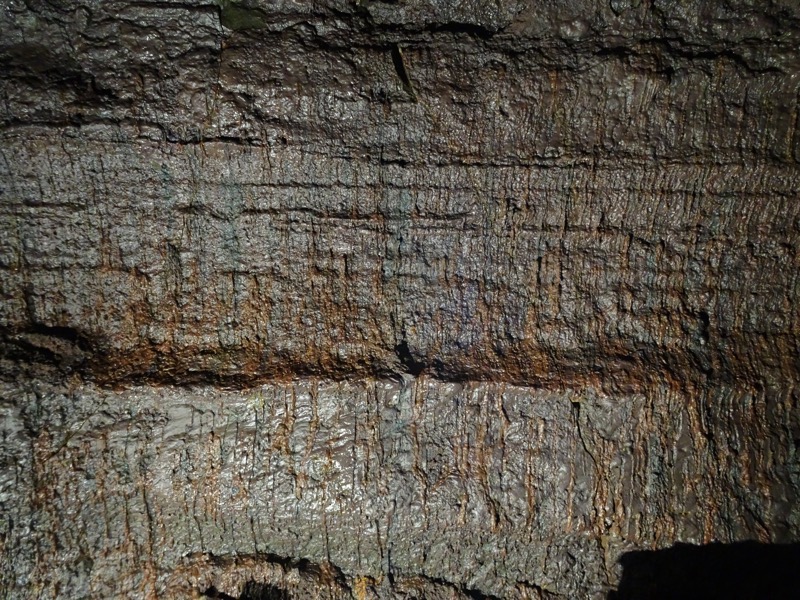 As the lava is dragged along inside the tube with its cooling roof and walls, the level/height of the lava flow is evidenced in layers on the walls, leaving a texture and coloured rock that looks like chocolate cake.
As the lava is dragged along inside the tube with its cooling roof and walls, the level/height of the lava flow is evidenced in layers on the walls, leaving a texture and coloured rock that looks like chocolate cake.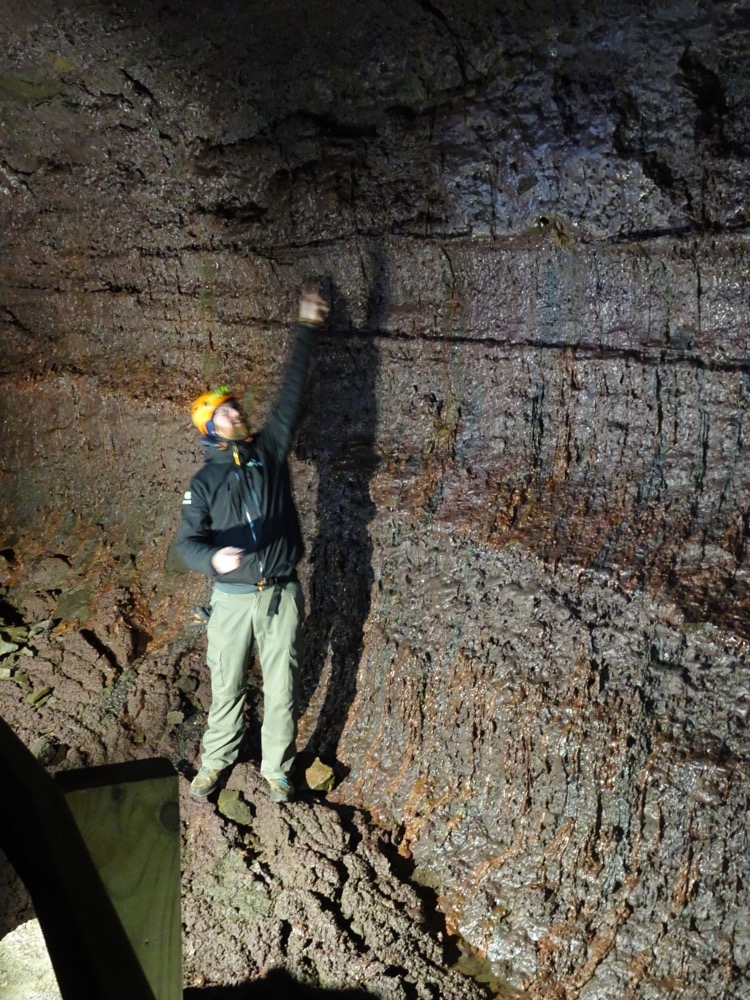 There is approximately 80-90 steps to traverse to get into the lava cave – and the same again on the way back out.
There is approximately 80-90 steps to traverse to get into the lava cave – and the same again on the way back out.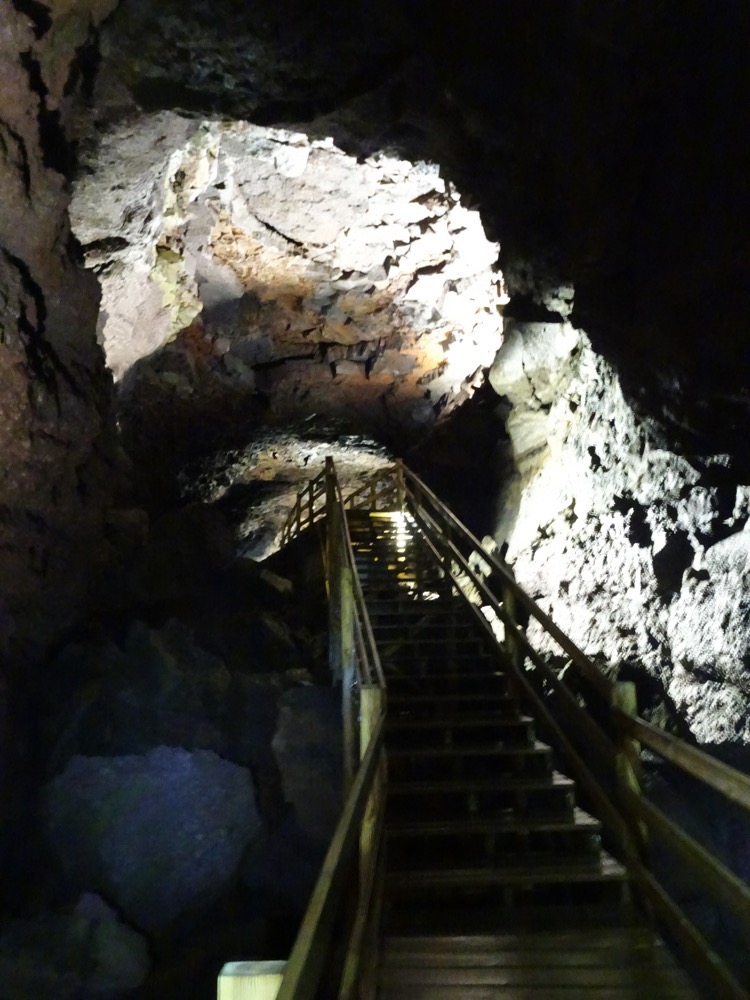 At the end of this section of lava tube is a collapsed roof which marks the end of the ‘amateur’ spelunking tour. For people with a bit more experience, you can go much deeper into the cavers, but apparently, that takes things like, fitness, agility and strength.
At the end of this section of lava tube is a collapsed roof which marks the end of the ‘amateur’ spelunking tour. For people with a bit more experience, you can go much deeper into the cavers, but apparently, that takes things like, fitness, agility and strength.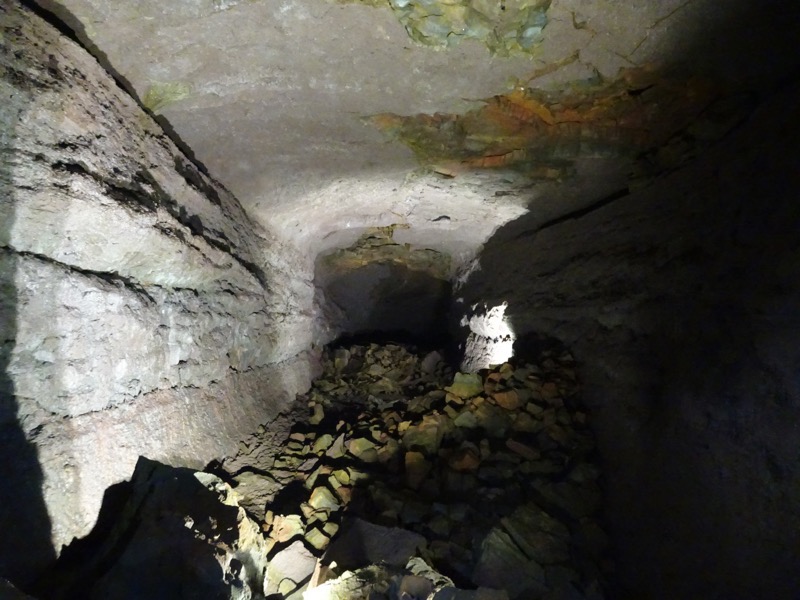 There is a large platform at this point in the cave and Johannes had us all turn off our headlamps before turning off the cavern lights. It is totally pitch black. You can open and close your eyes and not tell any difference, you can wave a hand in front of your face and not see a thing. Johannes said to us, ‘Now you don’t have to come to Iceland in the winter, this is what it’s like.’ Yep, he was a bit of a funny bugger.
There is a large platform at this point in the cave and Johannes had us all turn off our headlamps before turning off the cavern lights. It is totally pitch black. You can open and close your eyes and not tell any difference, you can wave a hand in front of your face and not see a thing. Johannes said to us, ‘Now you don’t have to come to Iceland in the winter, this is what it’s like.’ Yep, he was a bit of a funny bugger.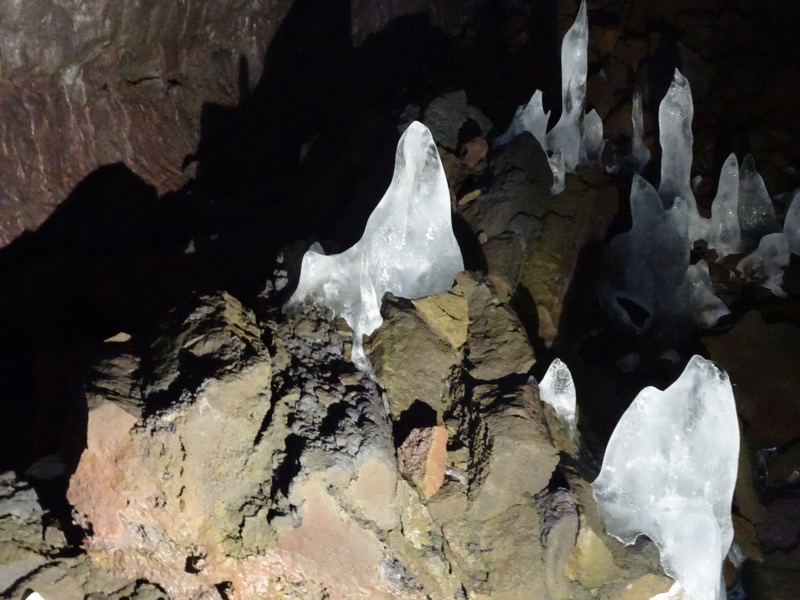
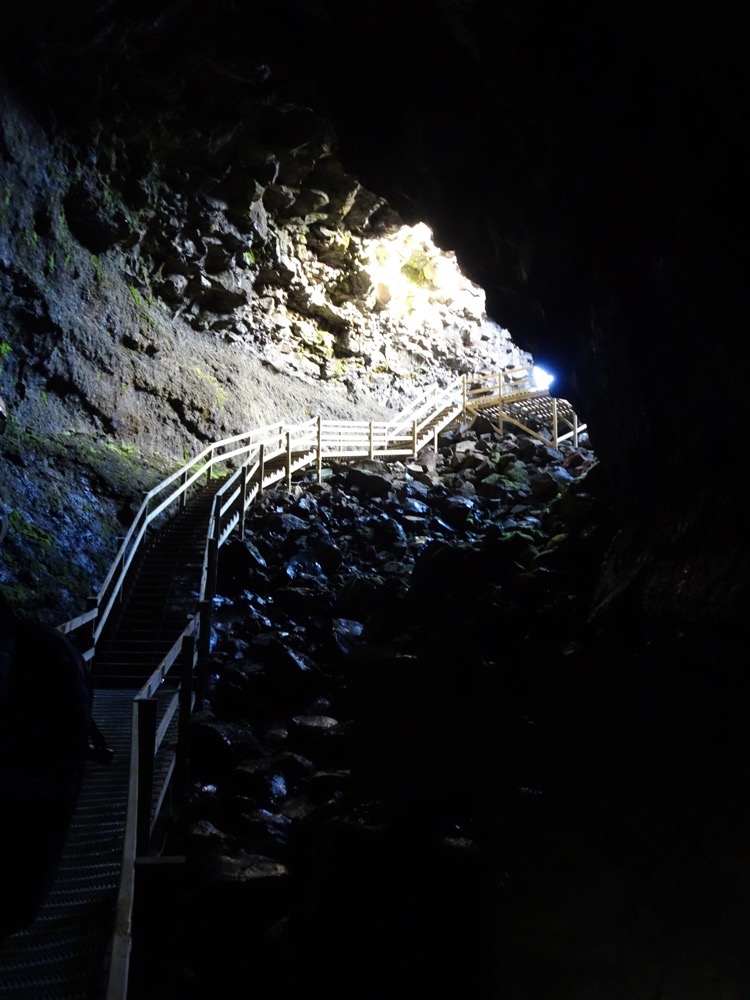 The cave opening forms a bit of a love heart if you stop at the right place on the way out… awww.
The cave opening forms a bit of a love heart if you stop at the right place on the way out… awww. 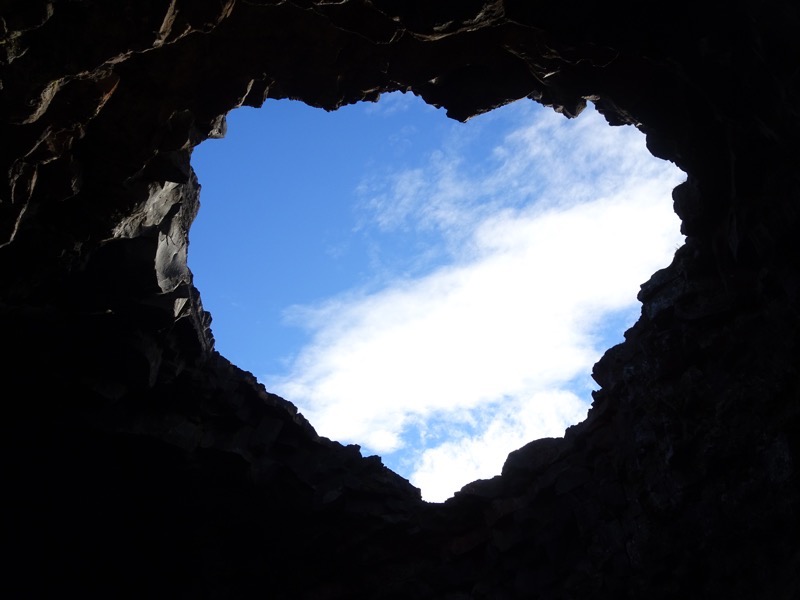 Back above ground the light is way too bright, even though normally the light quality this far north has a wonderful soft feel about it (compared to the harsh Australian light, I guess everything does though!).
Back above ground the light is way too bright, even though normally the light quality this far north has a wonderful soft feel about it (compared to the harsh Australian light, I guess everything does though!).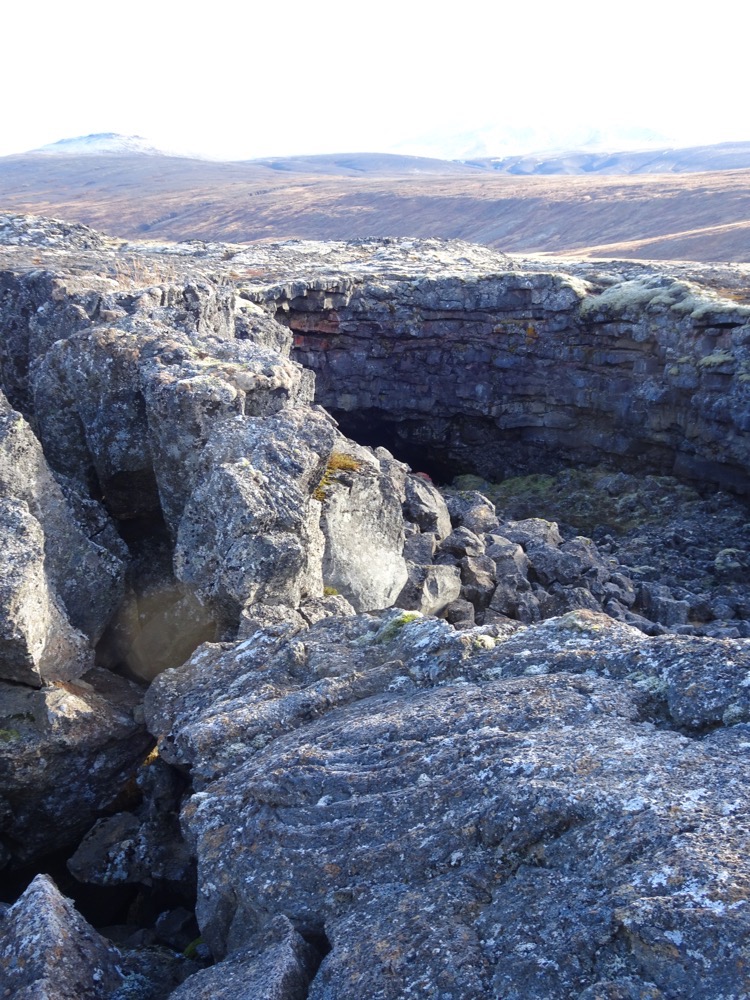
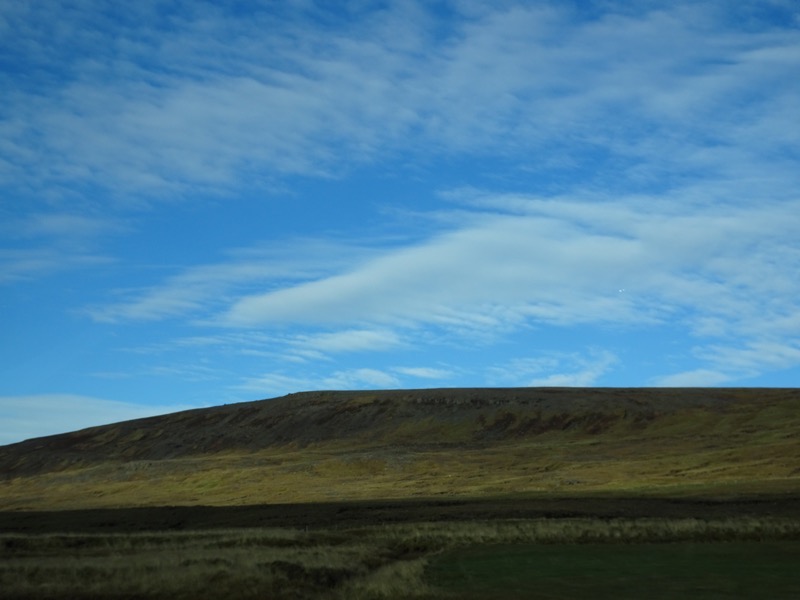
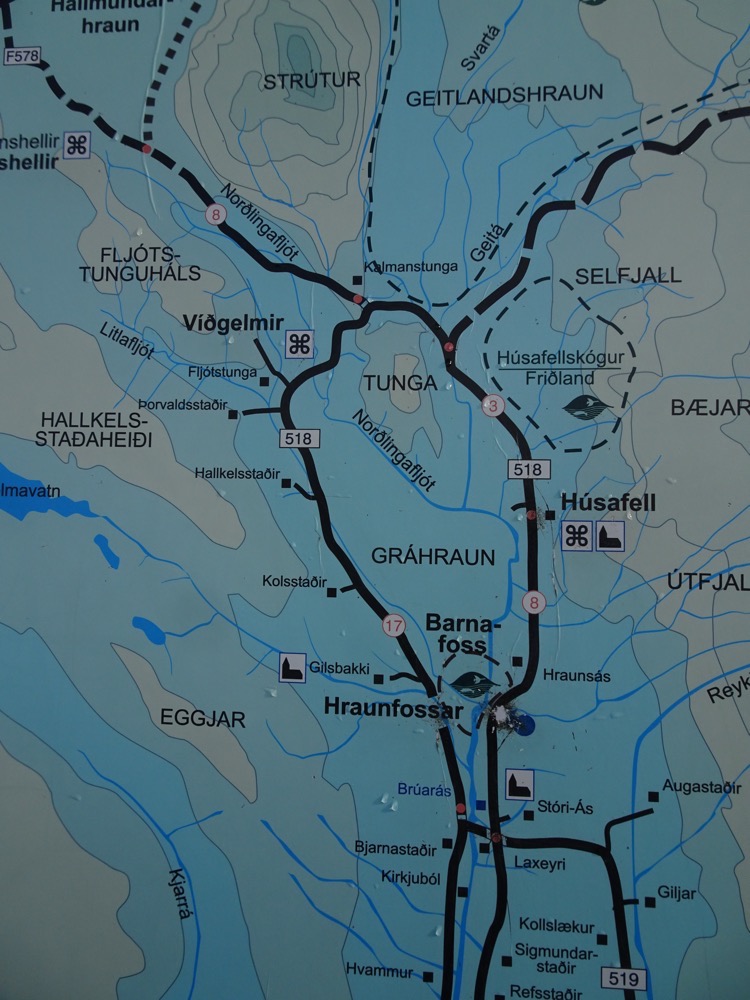
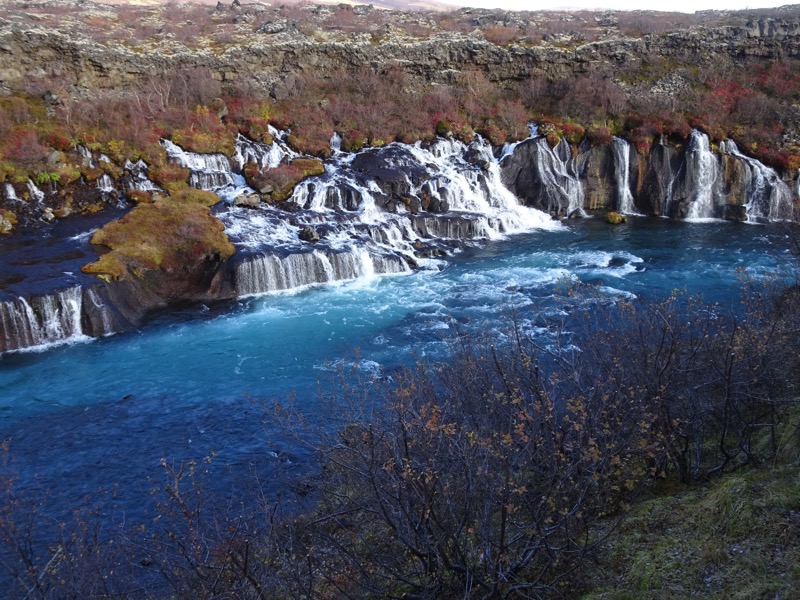
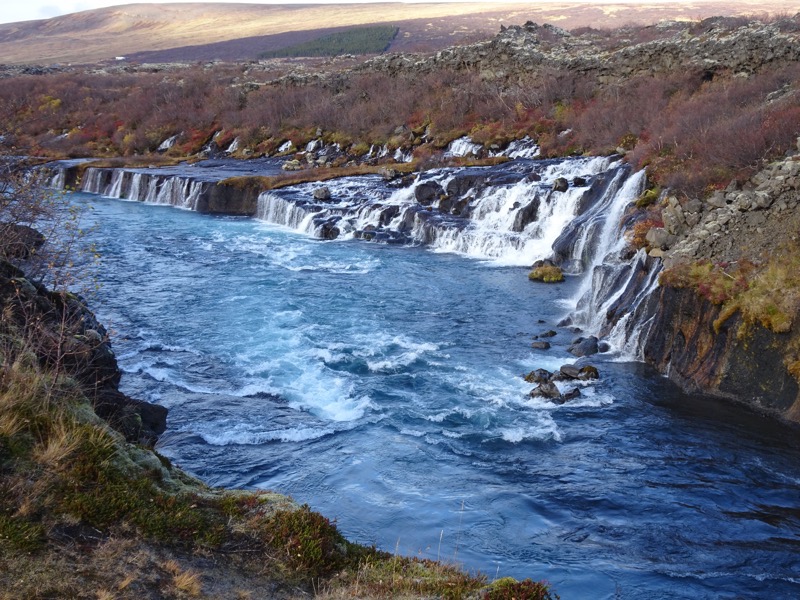
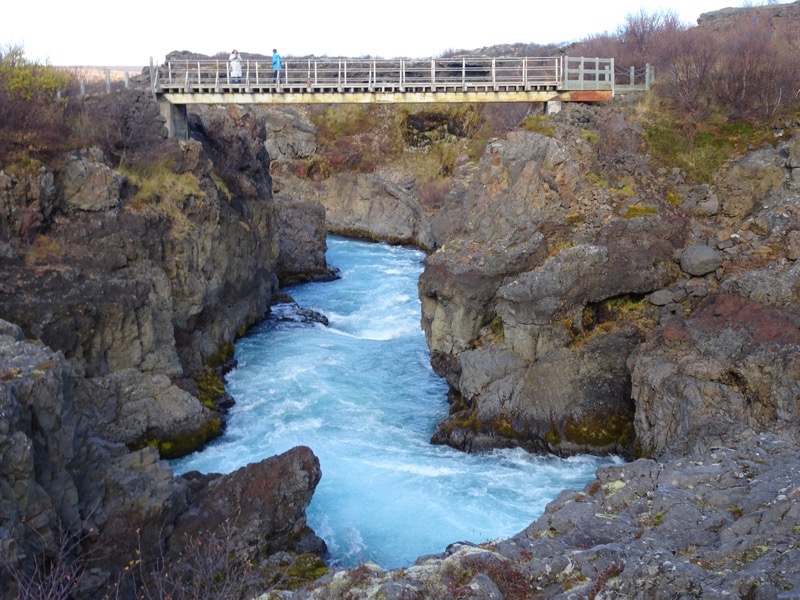
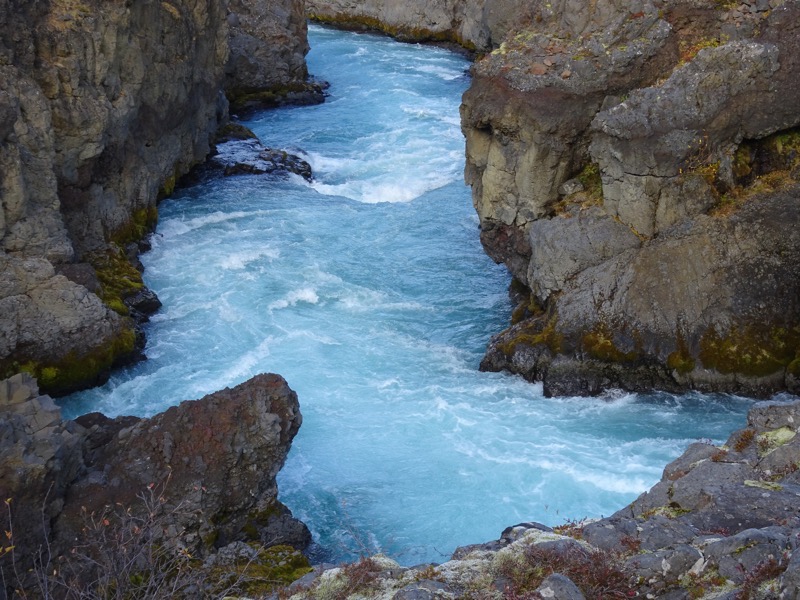 The natural arch went across the rocks in the top of this image – you can see how dangersous this woud be the water volume is incredible.
The natural arch went across the rocks in the top of this image – you can see how dangersous this woud be the water volume is incredible.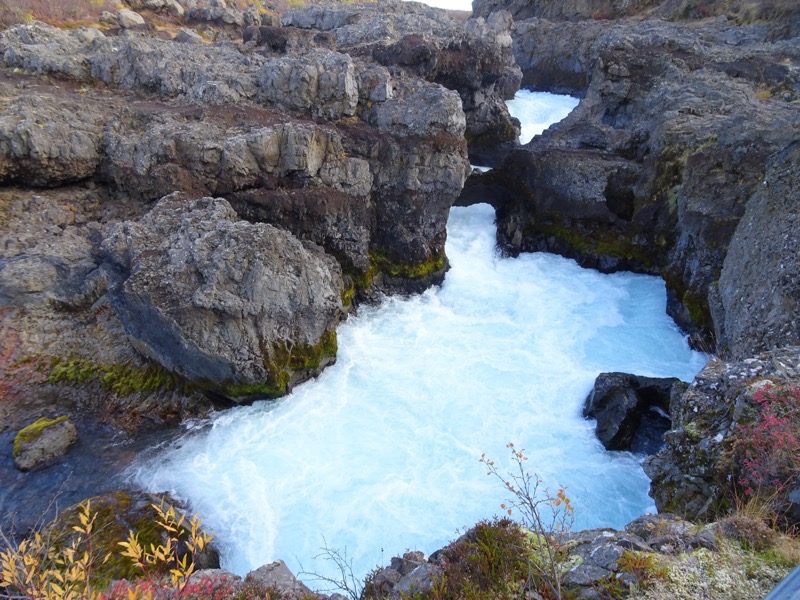
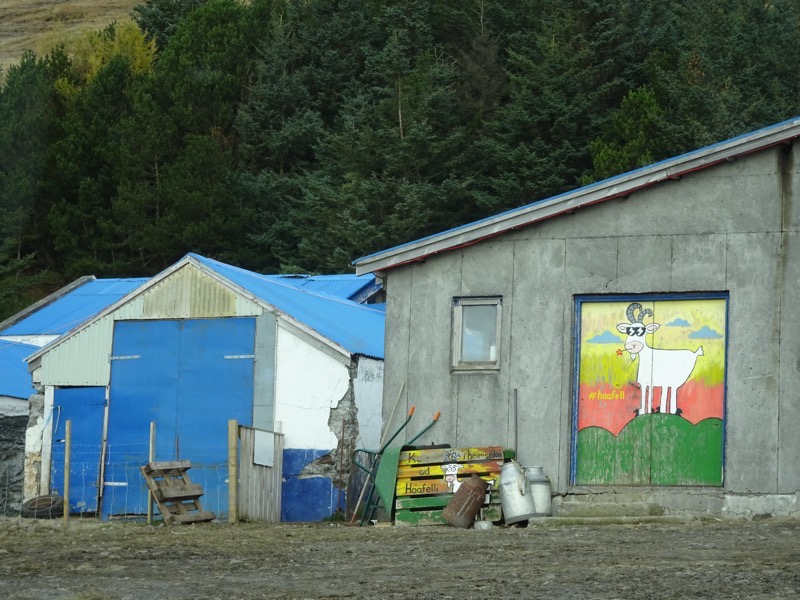
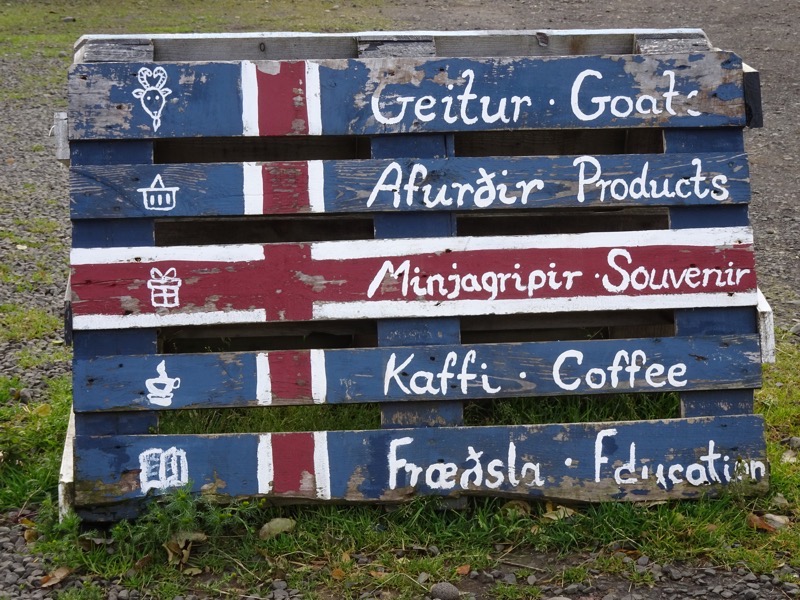 Icelandic goats are also known as the ‘settlement goat’. They are an ancient breed of Norweigan domestic goat that were imported to Iceland over 1100 years ago. This breed was nearly extinct by the late 19th century, but recovered around World War II, only to then see numbers drop off again. A census in 2003 saw only 348 goats in 48 flocks throughout the entire country. A concerted effort to increase their numbers has seen that number improve to 849 in 2012. Because the breed has been isolated for centuries, the Icelandic populations are highly inbred.
Icelandic goats are also known as the ‘settlement goat’. They are an ancient breed of Norweigan domestic goat that were imported to Iceland over 1100 years ago. This breed was nearly extinct by the late 19th century, but recovered around World War II, only to then see numbers drop off again. A census in 2003 saw only 348 goats in 48 flocks throughout the entire country. A concerted effort to increase their numbers has seen that number improve to 849 in 2012. Because the breed has been isolated for centuries, the Icelandic populations are highly inbred. 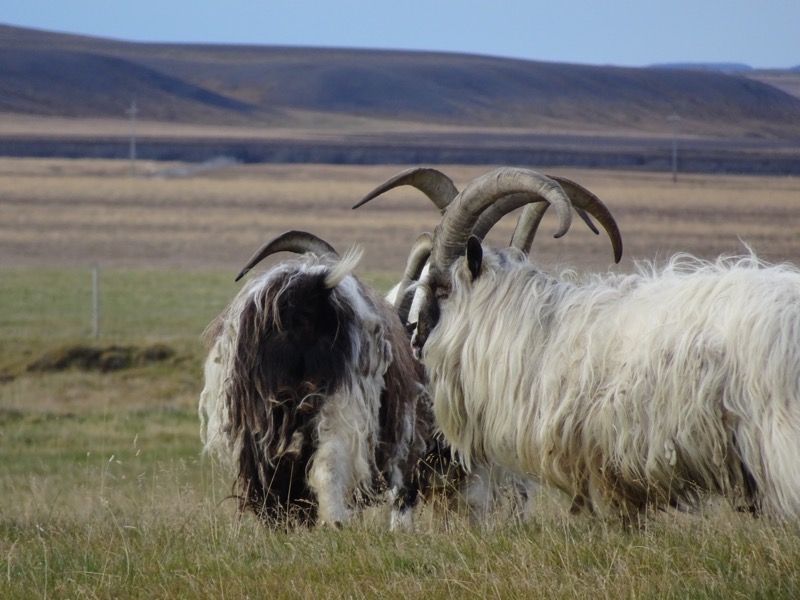
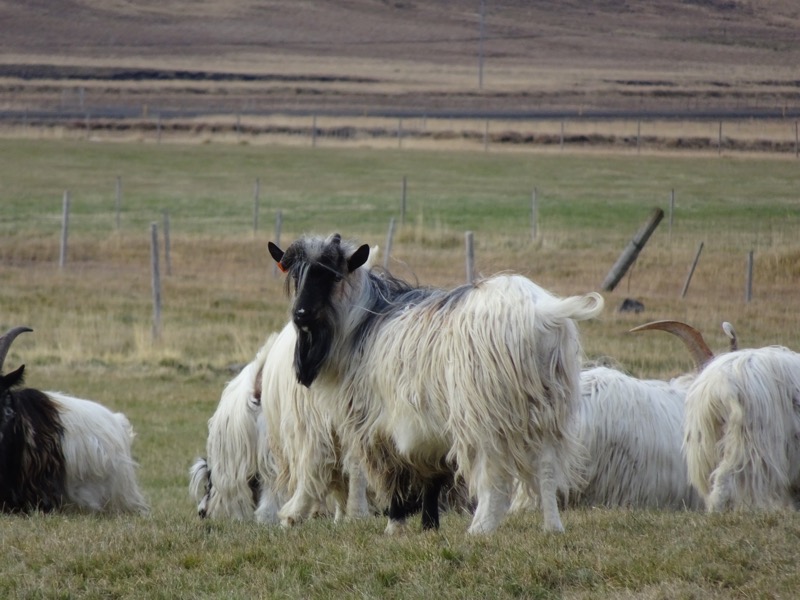
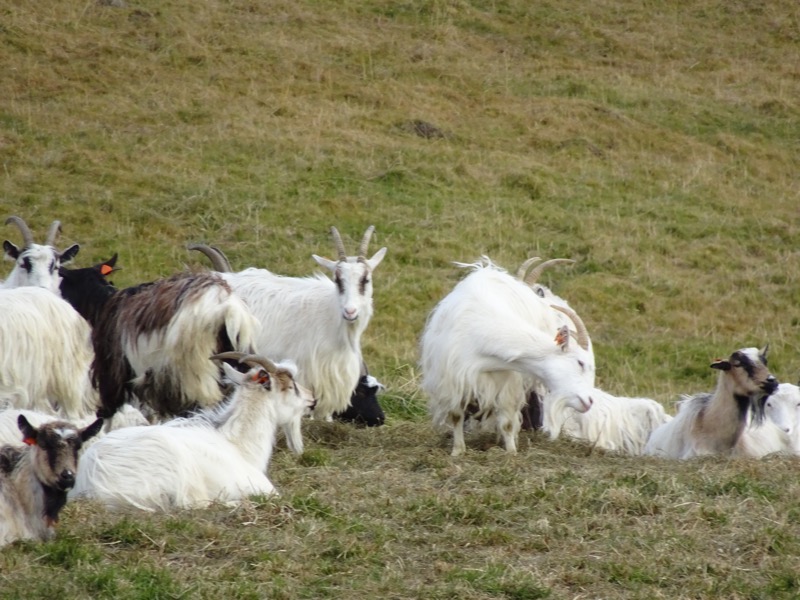 Even though the Icelandic goat has a coat of high-quality cashmere fibre, they tend to be kept more as pets, and are currently of limited economic value – so the Icelandic government subsidizes farmers to ensure the survival of the species.
Even though the Icelandic goat has a coat of high-quality cashmere fibre, they tend to be kept more as pets, and are currently of limited economic value – so the Icelandic government subsidizes farmers to ensure the survival of the species.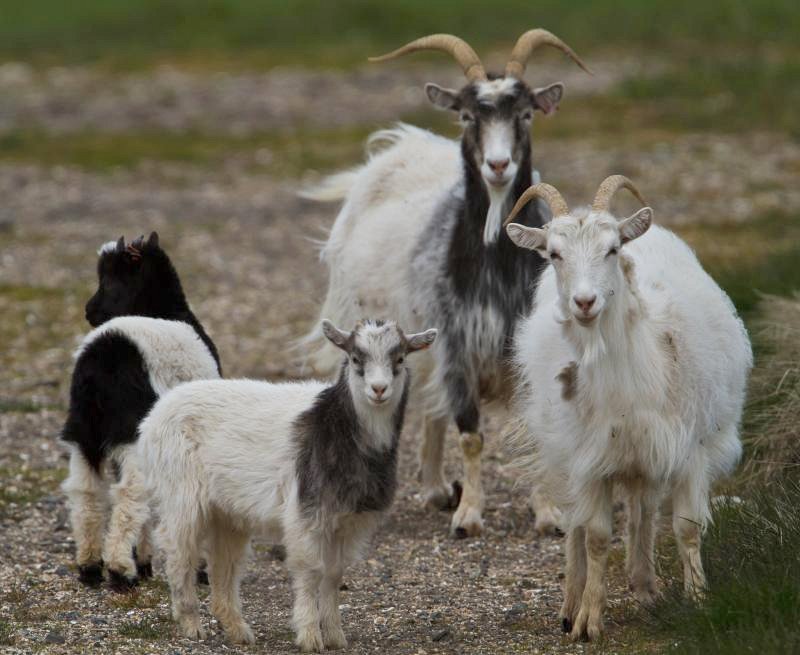 Not long after we left the goat farm, we found ourselves stopping on the side of the road to take more photos of yet more stunning scenery and when we went to drive off, we heard a rather disconcerting scraping noise under the car – it sounded like something metal stuck behind the read drivers side wheel.
Not long after we left the goat farm, we found ourselves stopping on the side of the road to take more photos of yet more stunning scenery and when we went to drive off, we heard a rather disconcerting scraping noise under the car – it sounded like something metal stuck behind the read drivers side wheel. 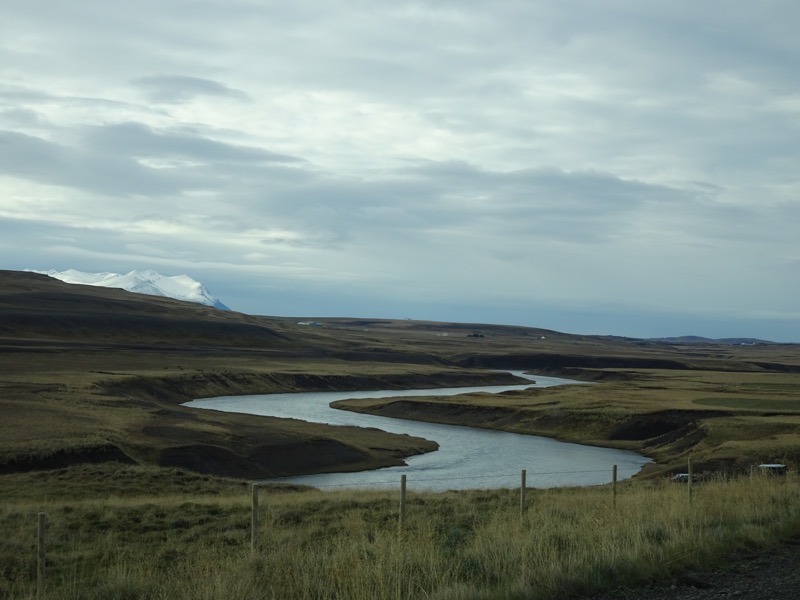
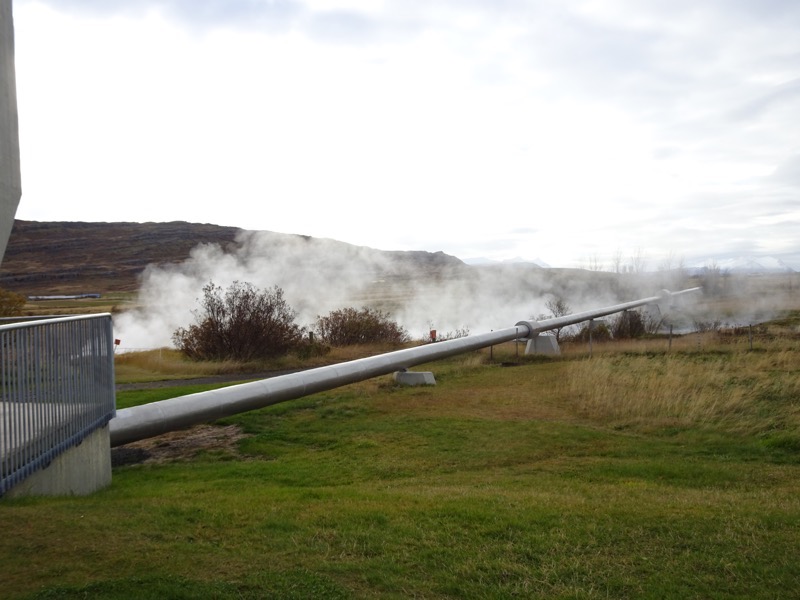
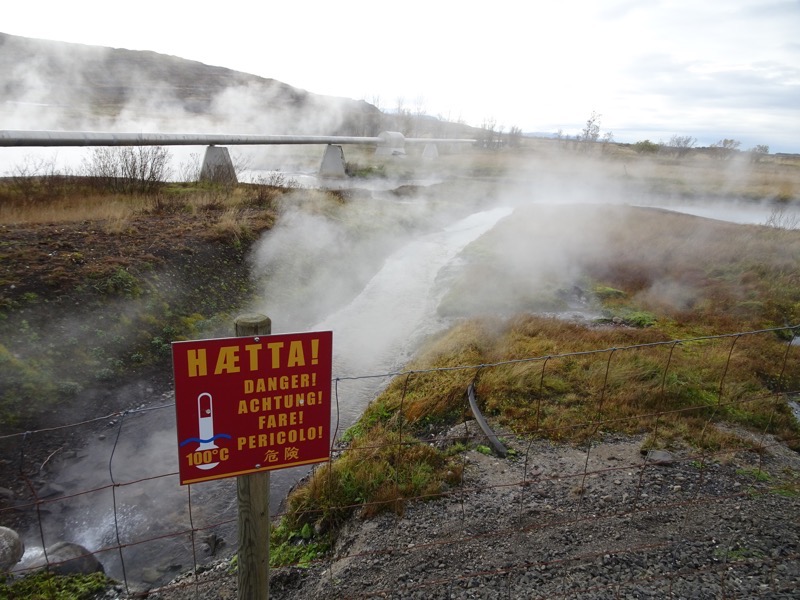
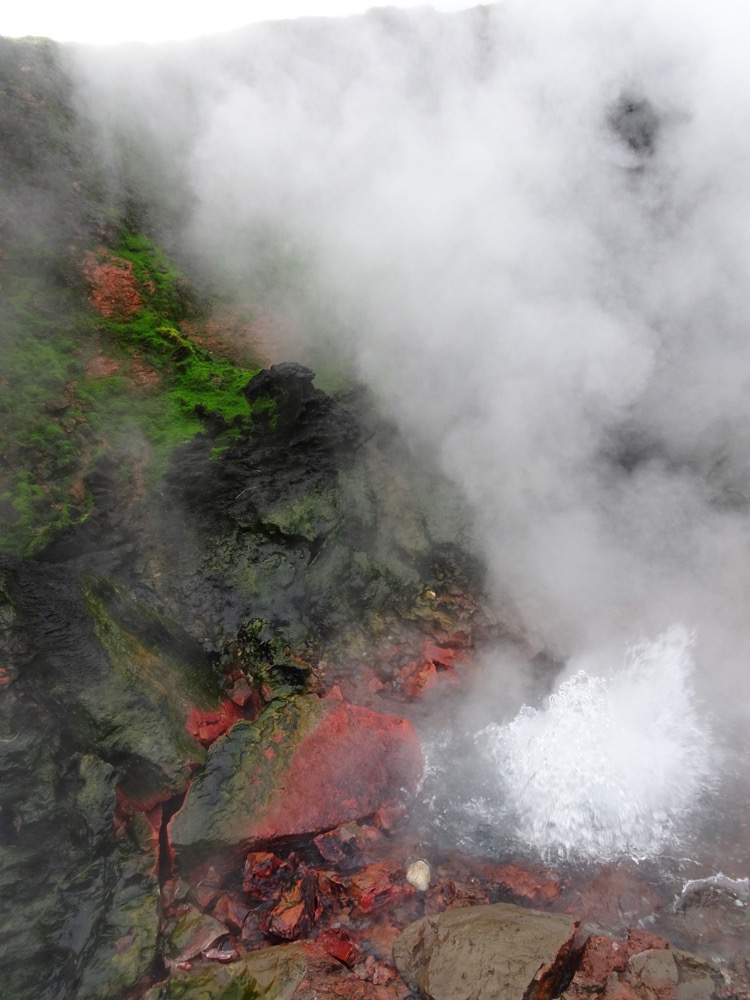
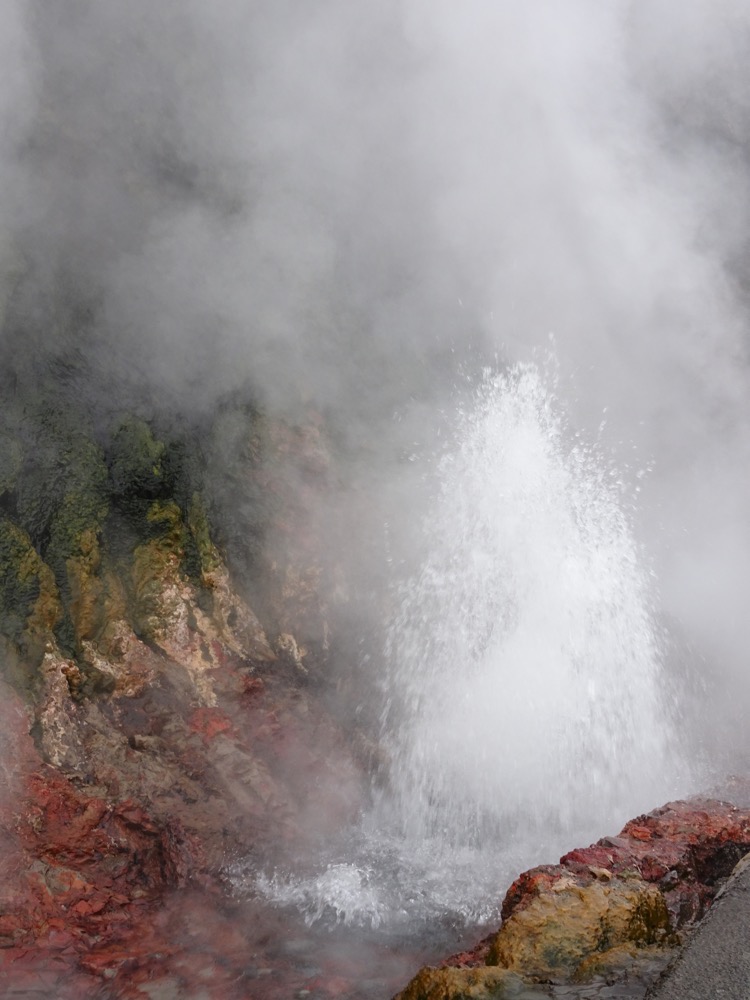

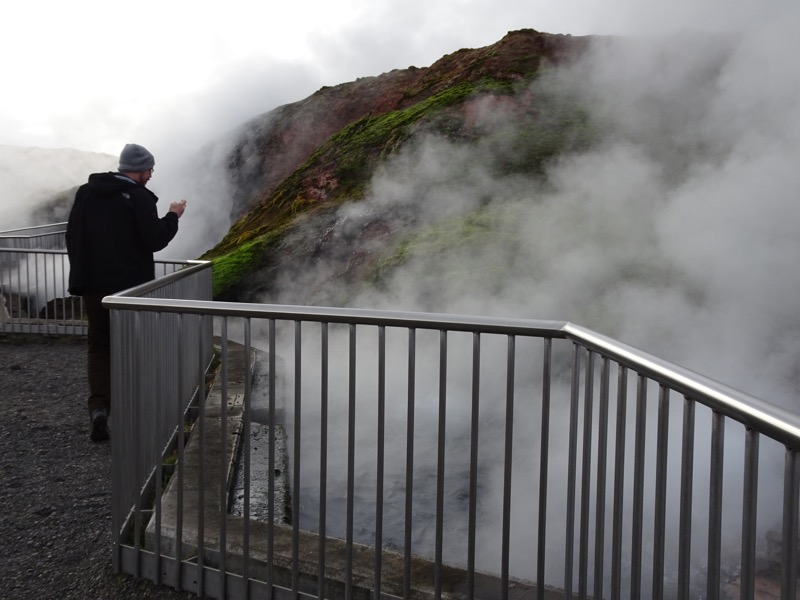
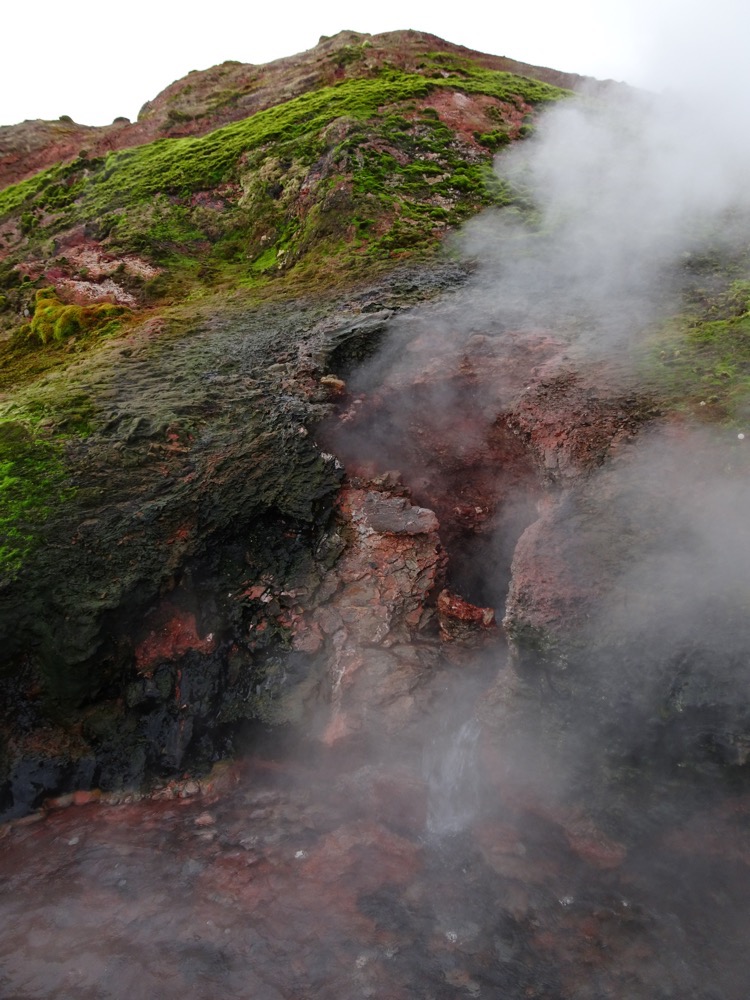
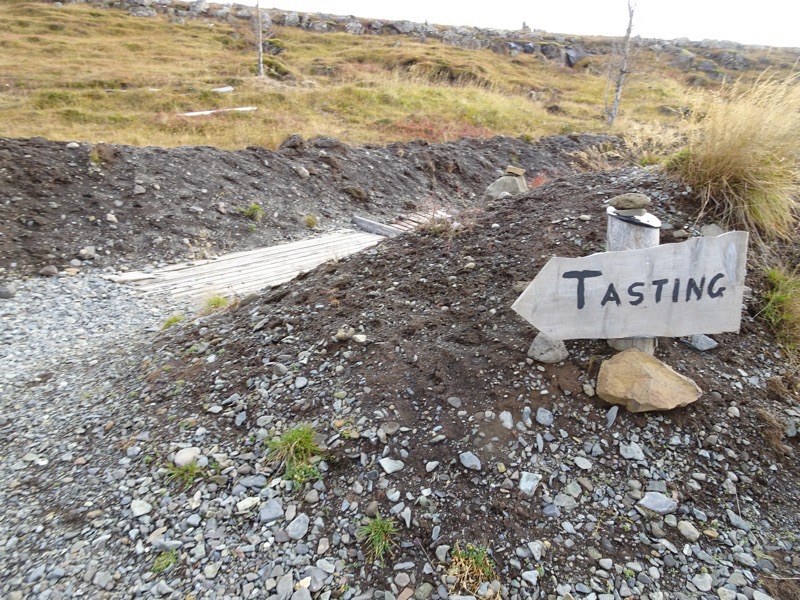
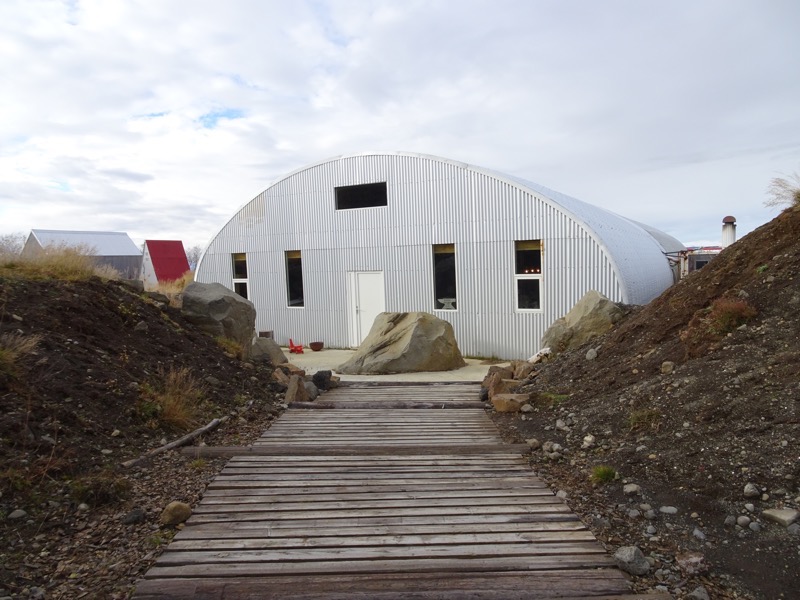
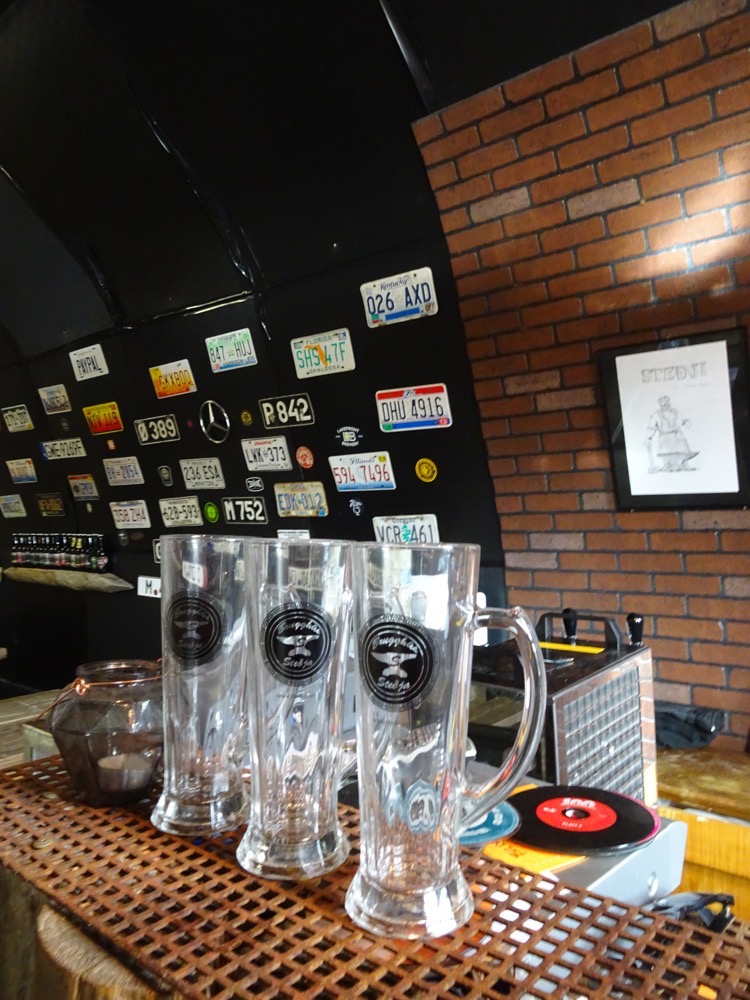
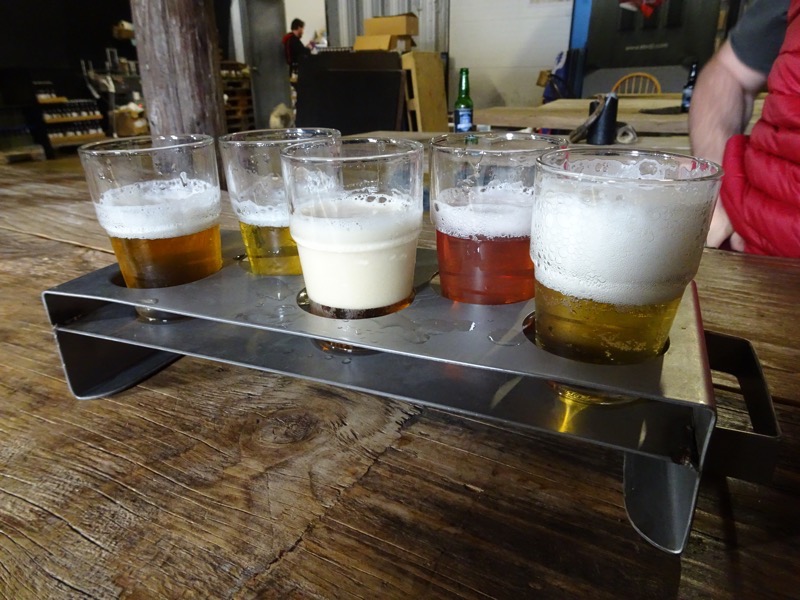
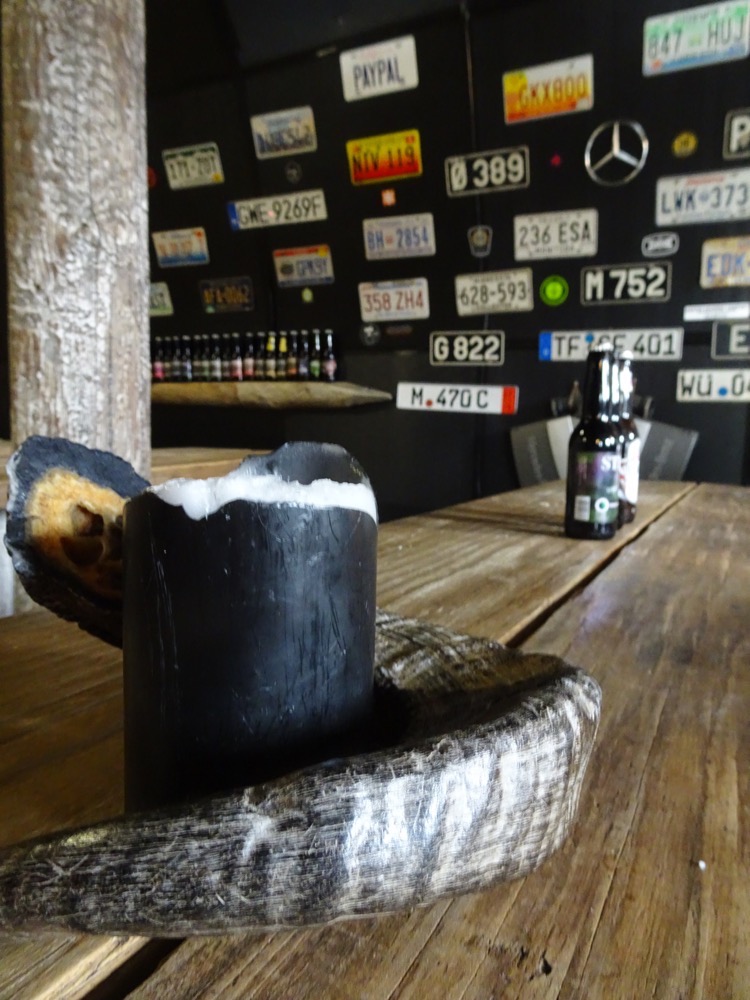
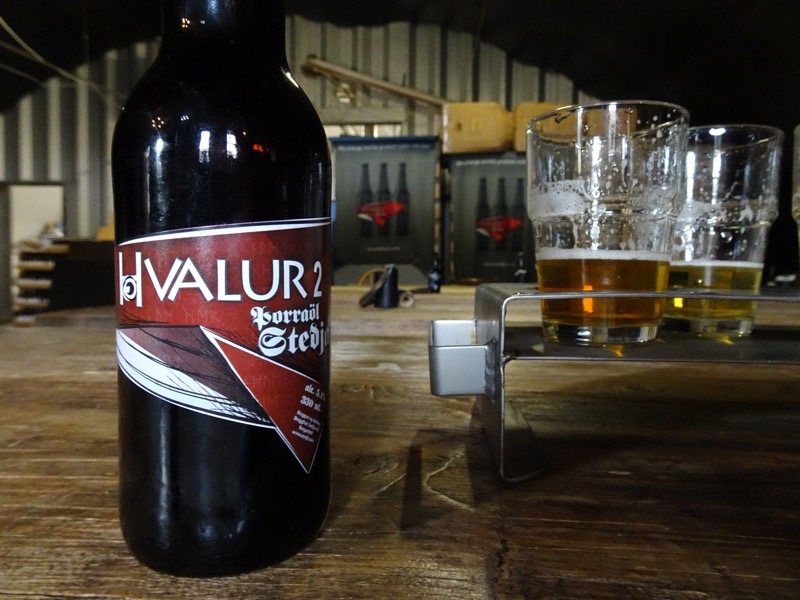
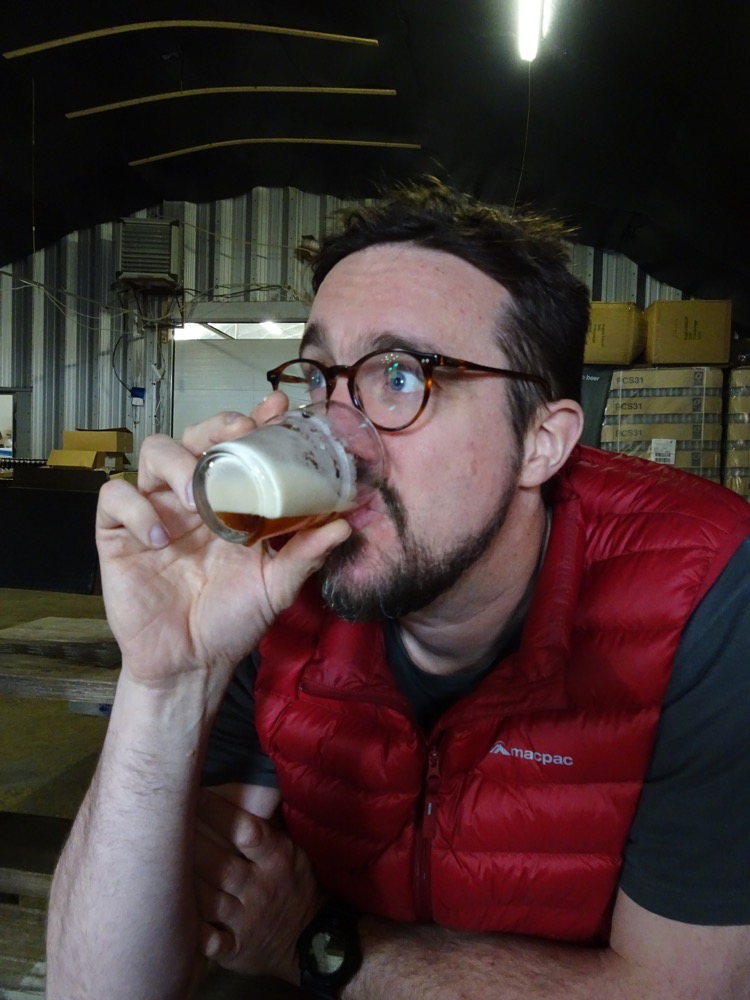 The nicest thing I can say about our brewery stop is they had a gorgeous little farm dog hanging around – she had the softest fur and such a sweet face. The beers – were interesting? Unusual? Too bloody hipster? Trying too hard? All of the above? Shudder. Traumatised.
The nicest thing I can say about our brewery stop is they had a gorgeous little farm dog hanging around – she had the softest fur and such a sweet face. The beers – were interesting? Unusual? Too bloody hipster? Trying too hard? All of the above? Shudder. Traumatised.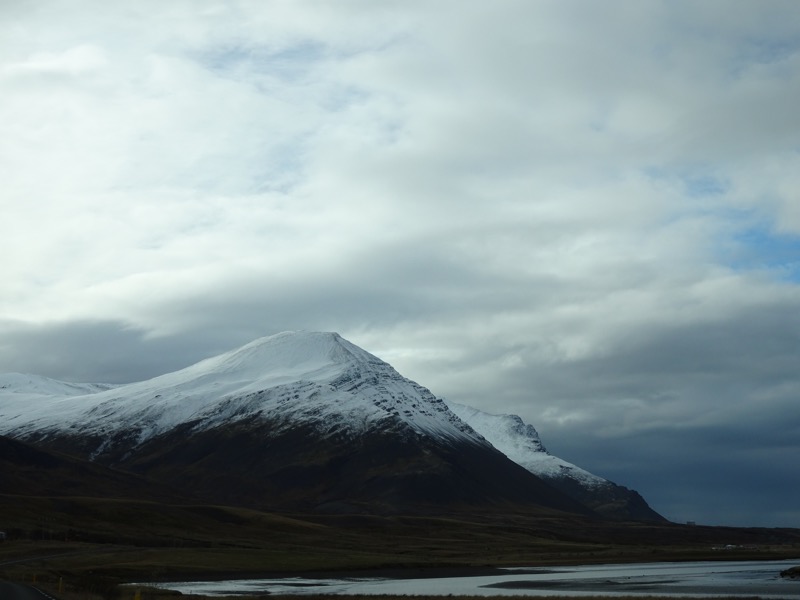
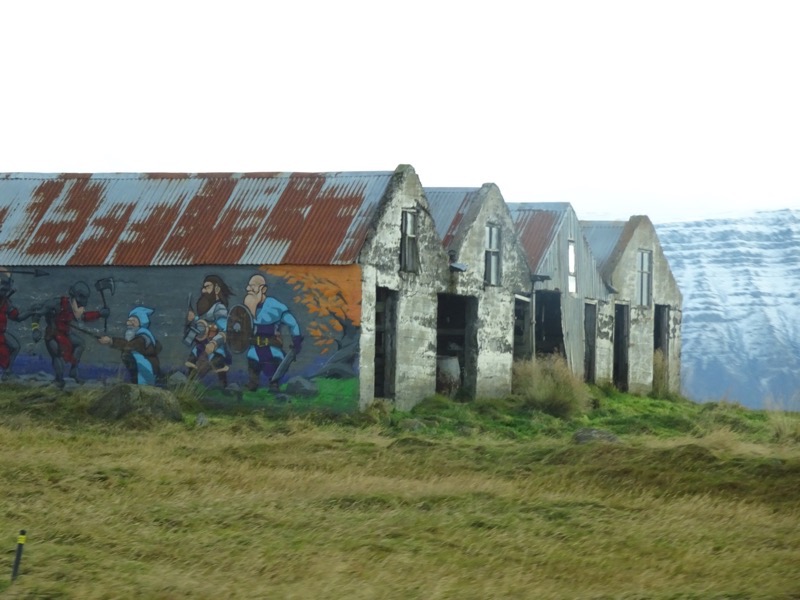 Every corner. I swear you drive around a corner, a mountain, you cut back on the road you were on to look behind you and were greeted by an entirely different vista.
Every corner. I swear you drive around a corner, a mountain, you cut back on the road you were on to look behind you and were greeted by an entirely different vista.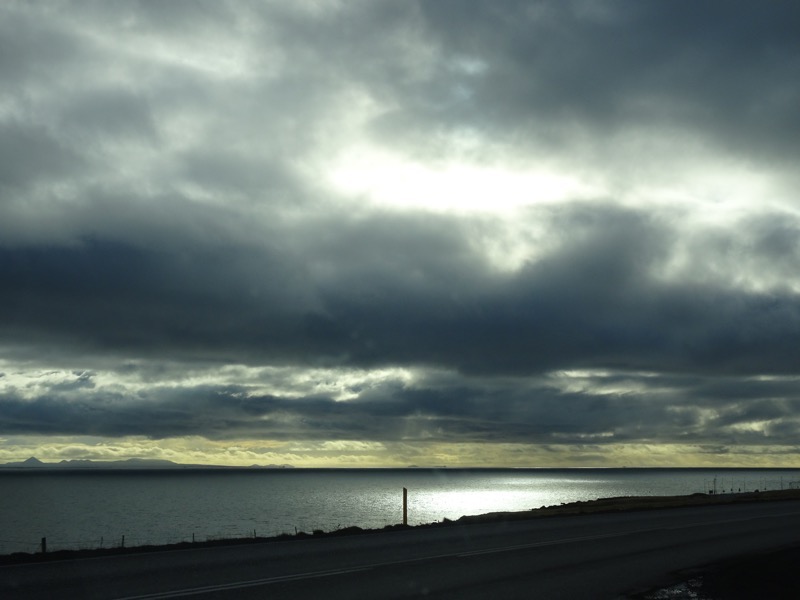
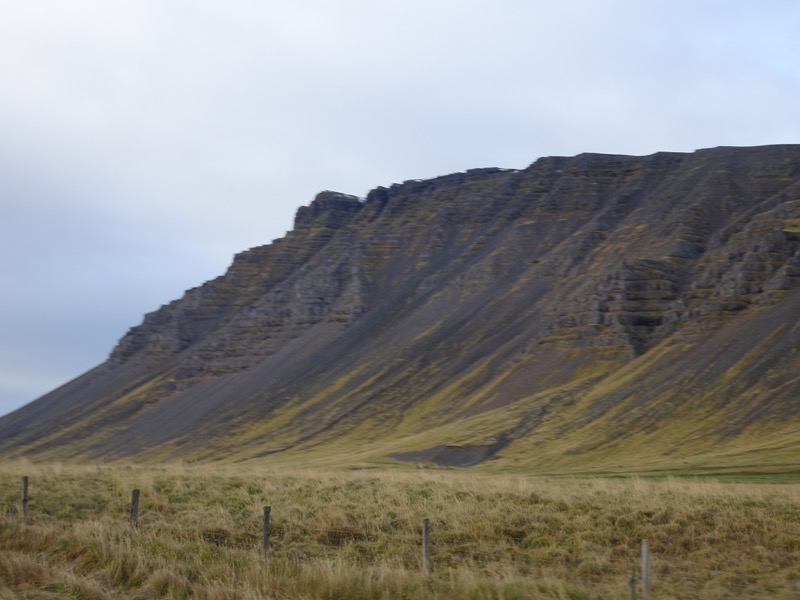
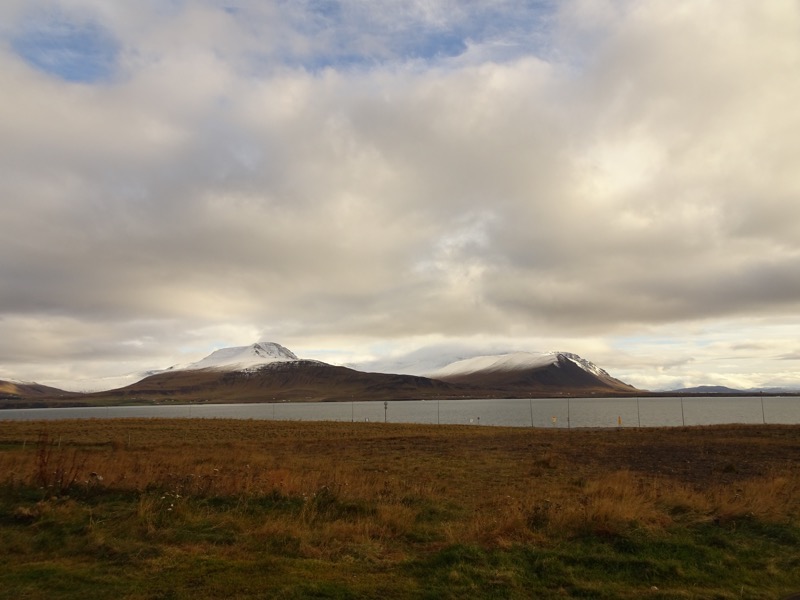 We went through the Hvalfjarðargöng tunnel, which takes drivers directly under the fjord in 7 minutes saving what used to be an hour drive.
We went through the Hvalfjarðargöng tunnel, which takes drivers directly under the fjord in 7 minutes saving what used to be an hour drive.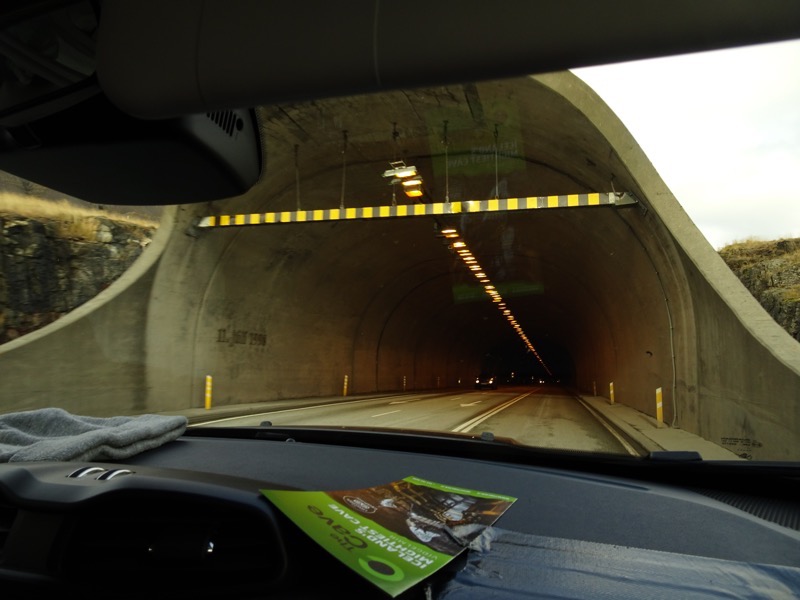 And before we knew it, we were heading back into Reykjavik.
And before we knew it, we were heading back into Reykjavik.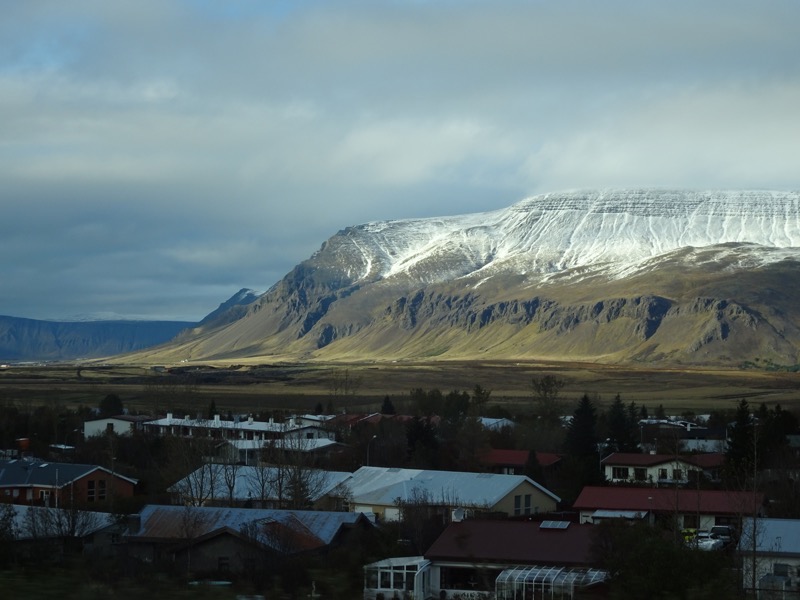 Harpa Concert Hall in the afternoon sun:
Harpa Concert Hall in the afternoon sun: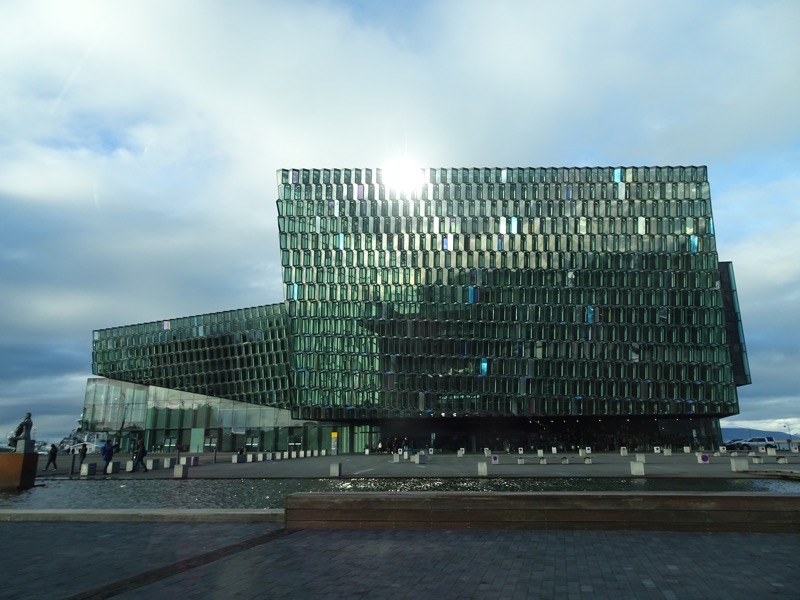
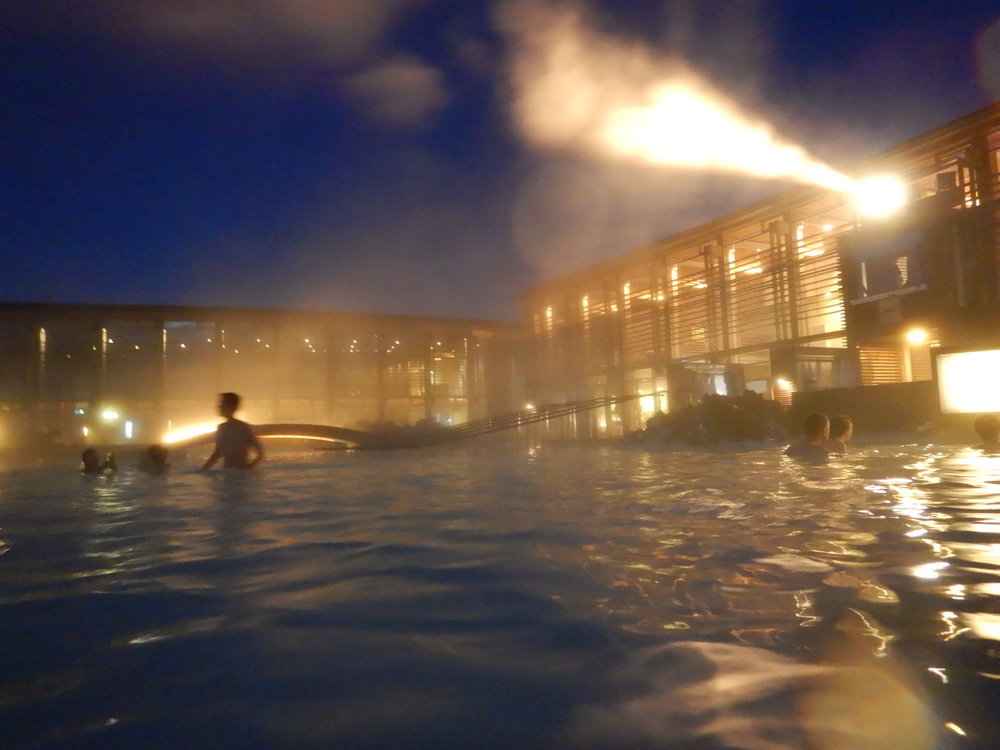
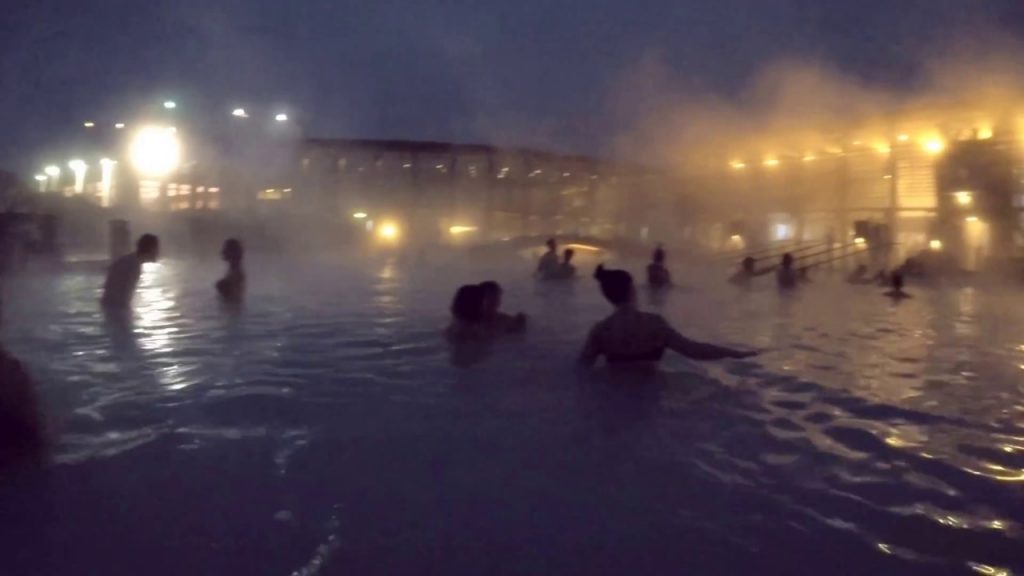 It was lovely and steamy, and the water was just the right amount of hot. After our soak, we had a dinner reservation at the Blue Lagoon Lava Restaurant. When looking at the place from home, we were shocked at how overpriced it was… thought it must have been tourist central prices. But now we have been here a while, we realise, it’s not really – it’s just Iceland prices. So we made a dinner booking. The Lava restaurant is lovely, it caters to the spa clients and you can turn up in your bathrobe at lunchtime if you so desire.
It was lovely and steamy, and the water was just the right amount of hot. After our soak, we had a dinner reservation at the Blue Lagoon Lava Restaurant. When looking at the place from home, we were shocked at how overpriced it was… thought it must have been tourist central prices. But now we have been here a while, we realise, it’s not really – it’s just Iceland prices. So we made a dinner booking. The Lava restaurant is lovely, it caters to the spa clients and you can turn up in your bathrobe at lunchtime if you so desire.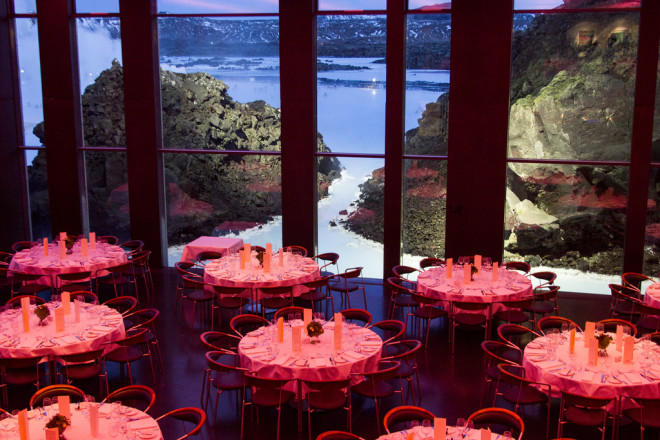
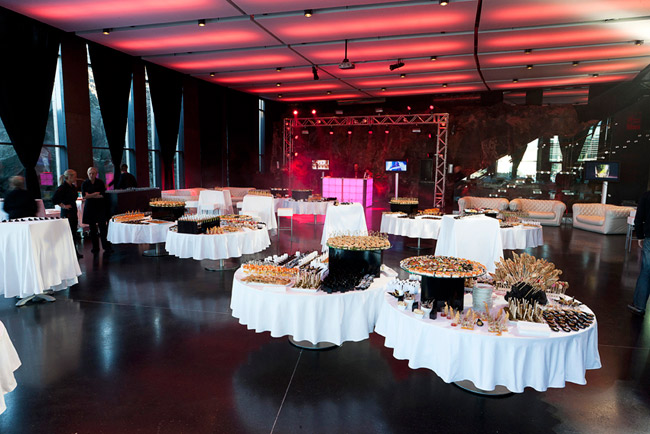




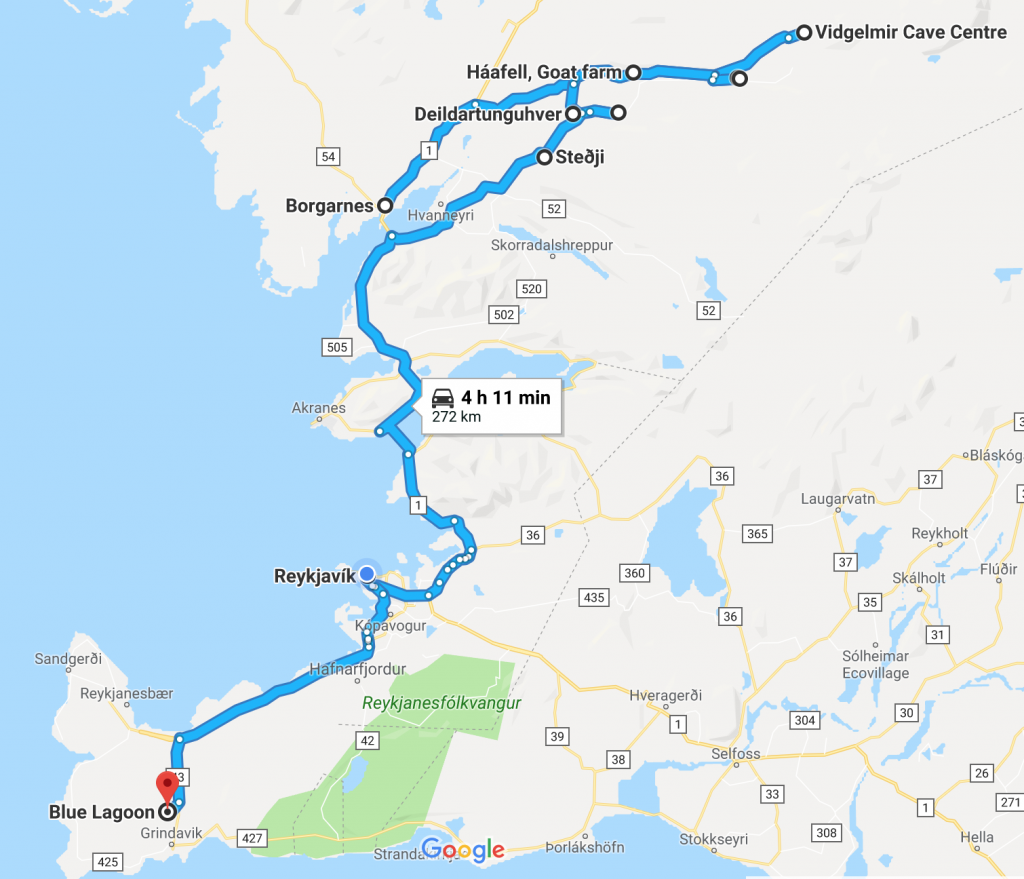
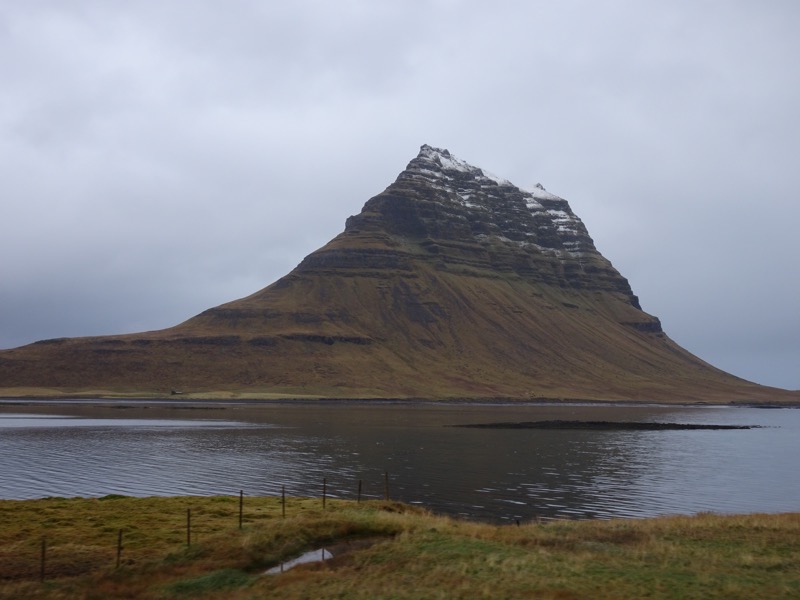 And this tiny looking waterfall, Grundarfoss, is probably a big part of that claim to fame…
And this tiny looking waterfall, Grundarfoss, is probably a big part of that claim to fame…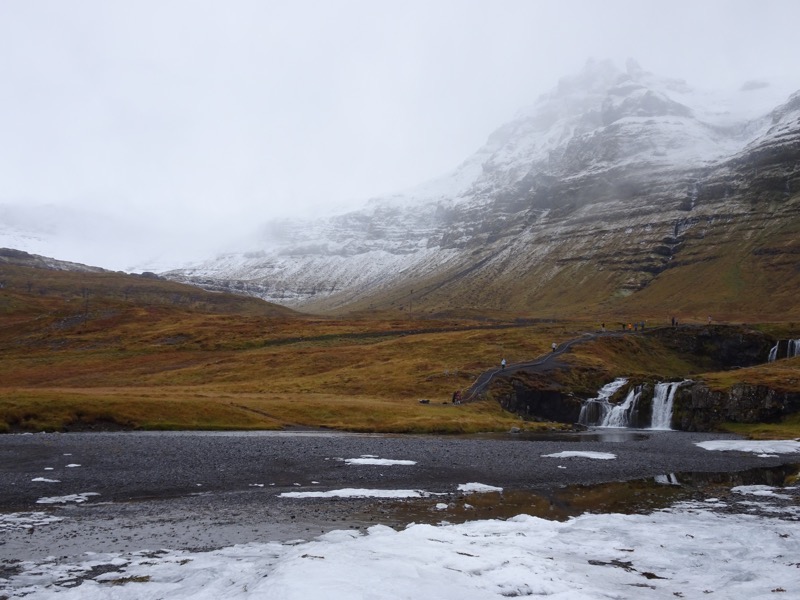
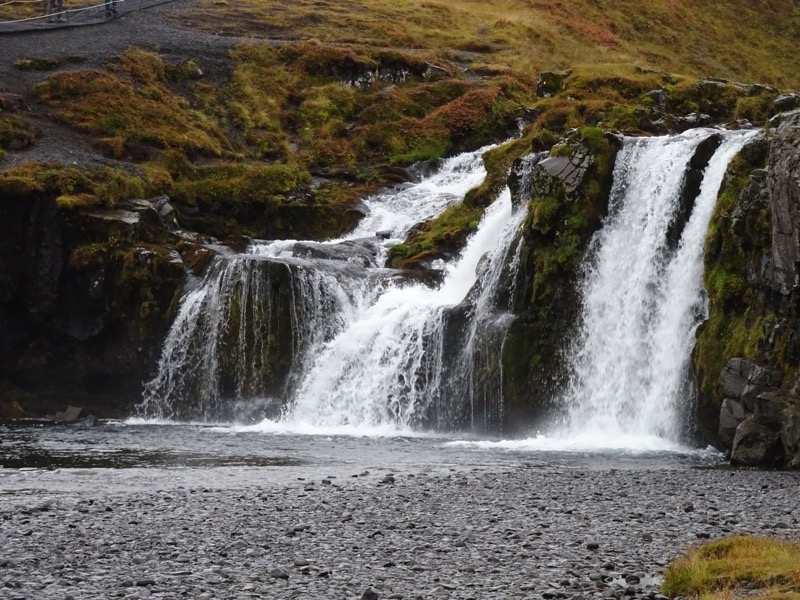 Because when viewed from a certain angle these two landmarks are literally ‘postcard Iceland’. This image and this view can be seen on postcards everywhere… well maybe not looking like this, all overcast and moody but you Google image serach ‘Kirkjufell, ‘ you get the idea.
Because when viewed from a certain angle these two landmarks are literally ‘postcard Iceland’. This image and this view can be seen on postcards everywhere… well maybe not looking like this, all overcast and moody but you Google image serach ‘Kirkjufell, ‘ you get the idea.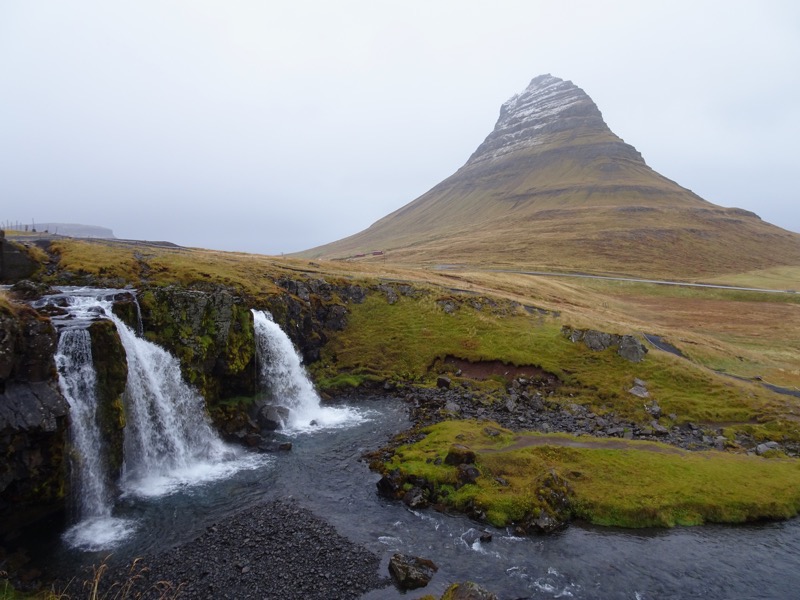 Getting a starring role in Game of Thrones probably also helped with the whole, ‘most photographed’ title; Kirkjufell featured as the “Arrowhead Mountain” that the Hound and the company north of the Wall see when capturing a wight in seasons 6 and 7.
Getting a starring role in Game of Thrones probably also helped with the whole, ‘most photographed’ title; Kirkjufell featured as the “Arrowhead Mountain” that the Hound and the company north of the Wall see when capturing a wight in seasons 6 and 7.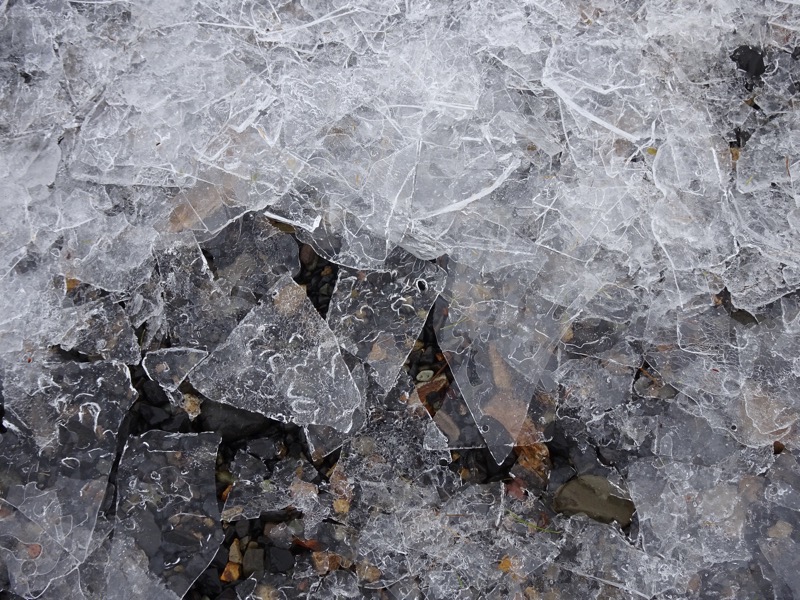
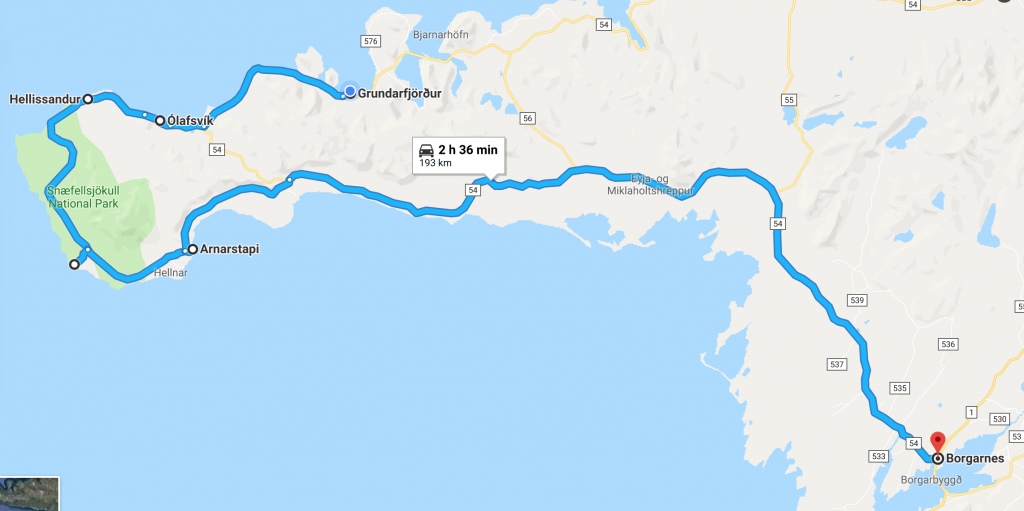
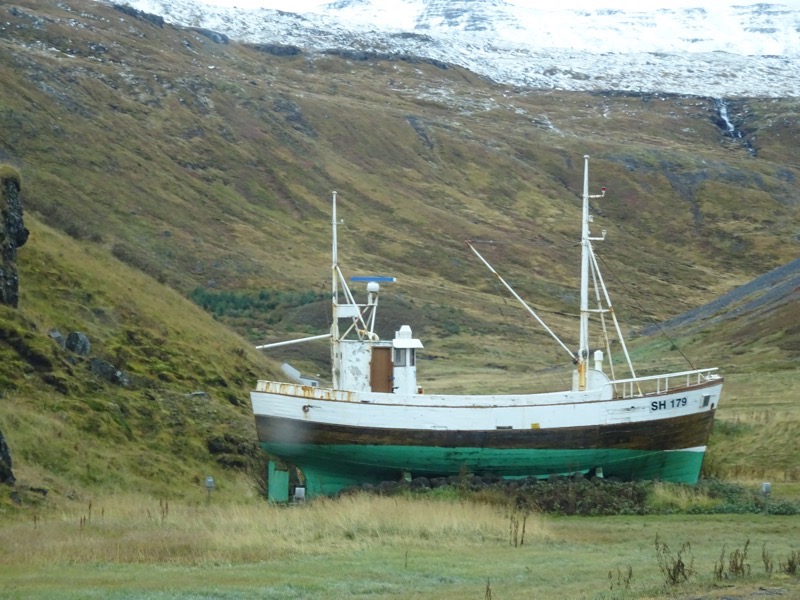 Olafsvikurkirkja – one of the more unusual churches we have seen here. Traditionally churches appear to be white buildings with red rooves, but this 1967 modern design is unique compared to most others we have seen. There are so many churches dotted around the landscape that it sometimes feels a bit, ‘Oh there are three farms meeting in one place; we need a church’.
Olafsvikurkirkja – one of the more unusual churches we have seen here. Traditionally churches appear to be white buildings with red rooves, but this 1967 modern design is unique compared to most others we have seen. There are so many churches dotted around the landscape that it sometimes feels a bit, ‘Oh there are three farms meeting in one place; we need a church’.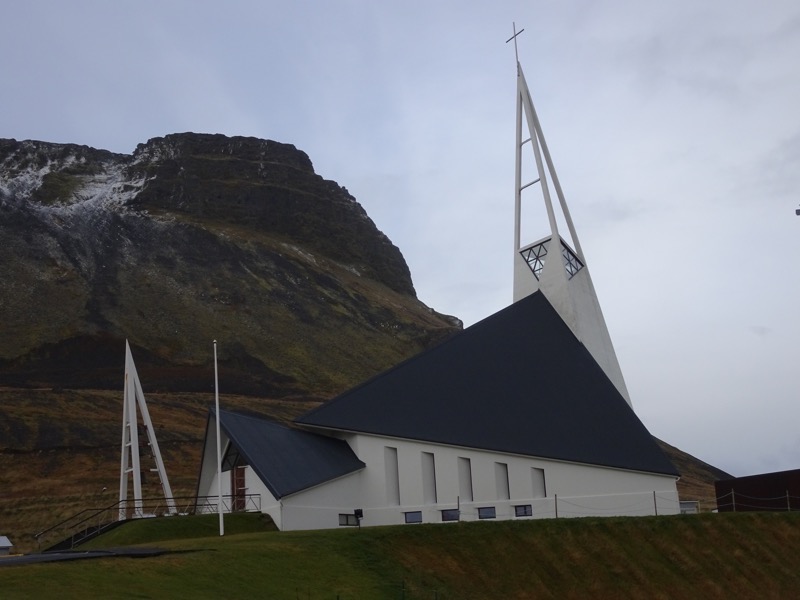 Svöðufoss. There are so many waterfalls in Iceland that they are starting to feel like ancient ruins on a trip through the Mediterranean…
Svöðufoss. There are so many waterfalls in Iceland that they are starting to feel like ancient ruins on a trip through the Mediterranean…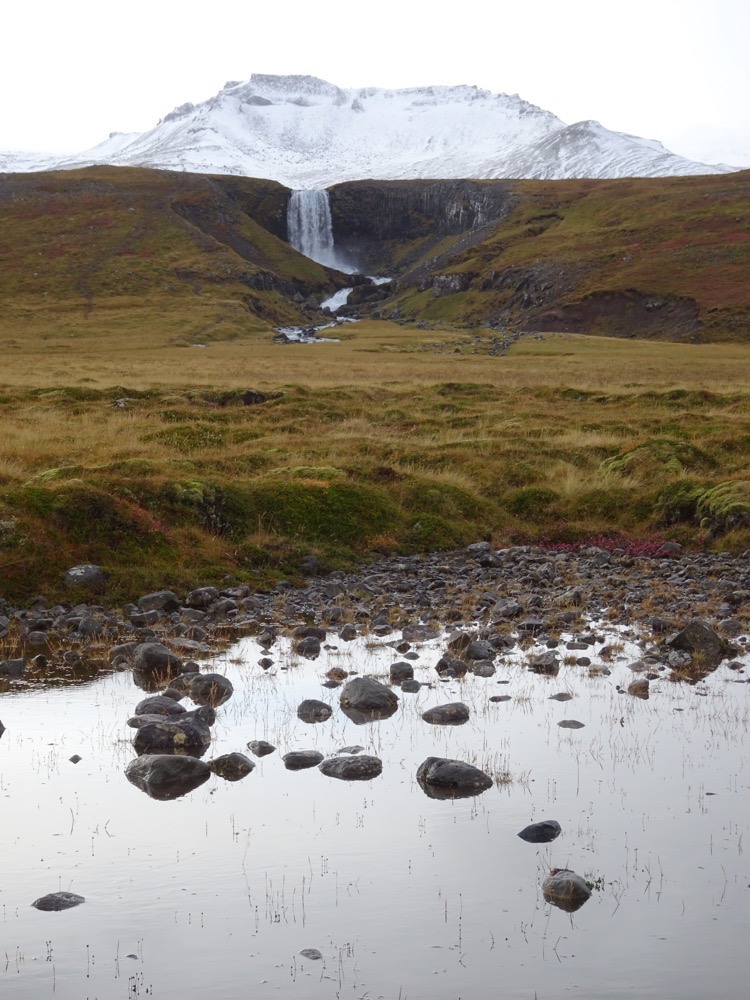
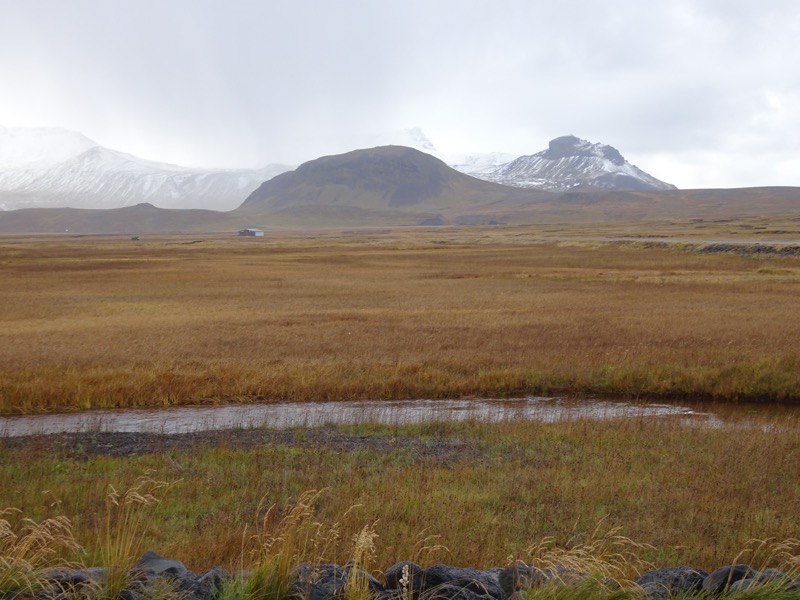
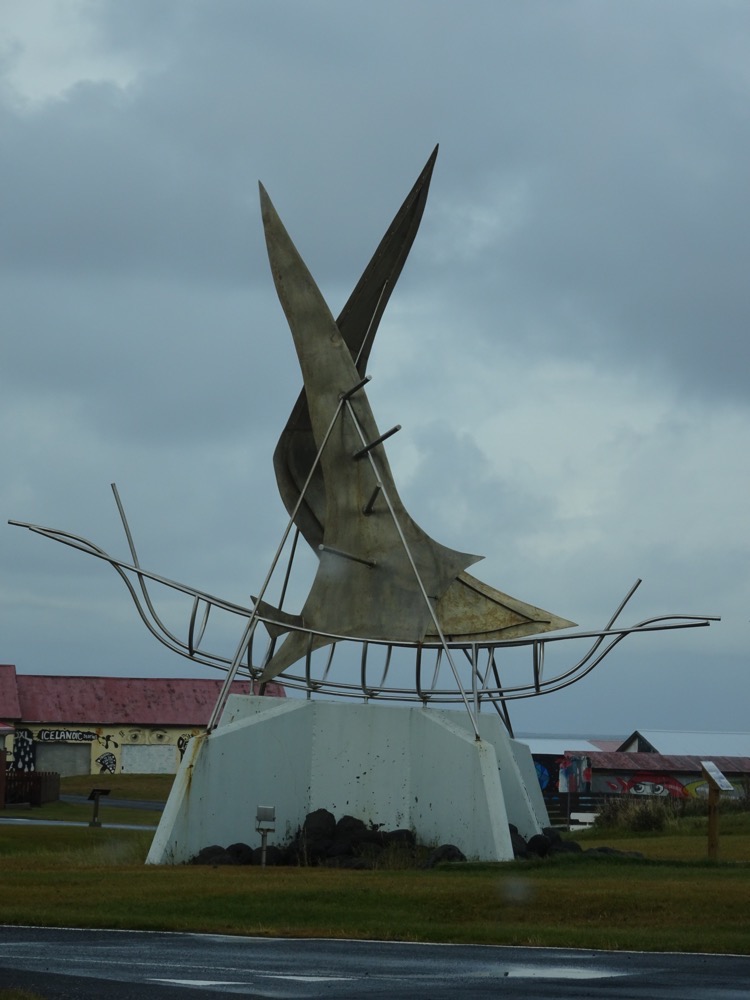 A Hellisunder local, Kári Viðarsson who grew up and lives in the town started a street art project painting this local fish factory… we even spied some murals on some residential homes.
A Hellisunder local, Kári Viðarsson who grew up and lives in the town started a street art project painting this local fish factory… we even spied some murals on some residential homes.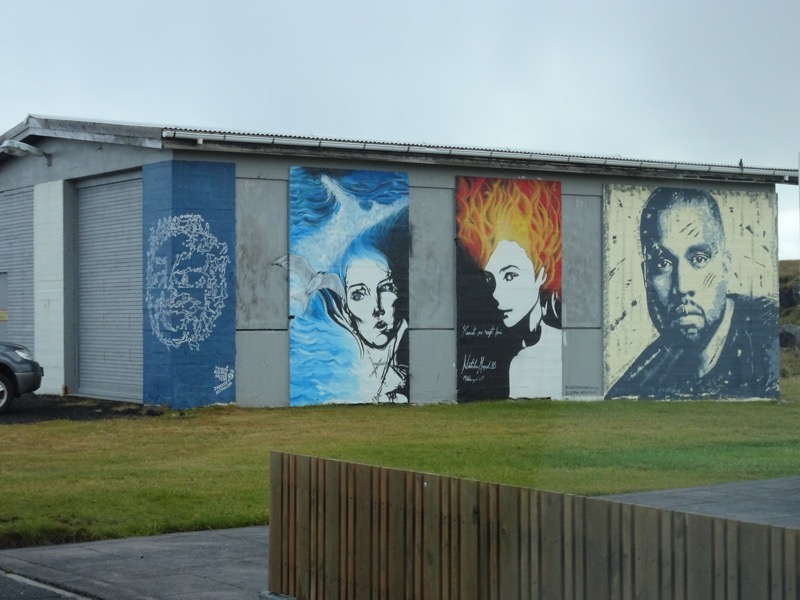 Now the project has taken on a world of its own and he has murals on many local buildings including the local hostel. The eventual plan is to have a mural on at least one wall of every building in town.
Now the project has taken on a world of its own and he has murals on many local buildings including the local hostel. The eventual plan is to have a mural on at least one wall of every building in town. 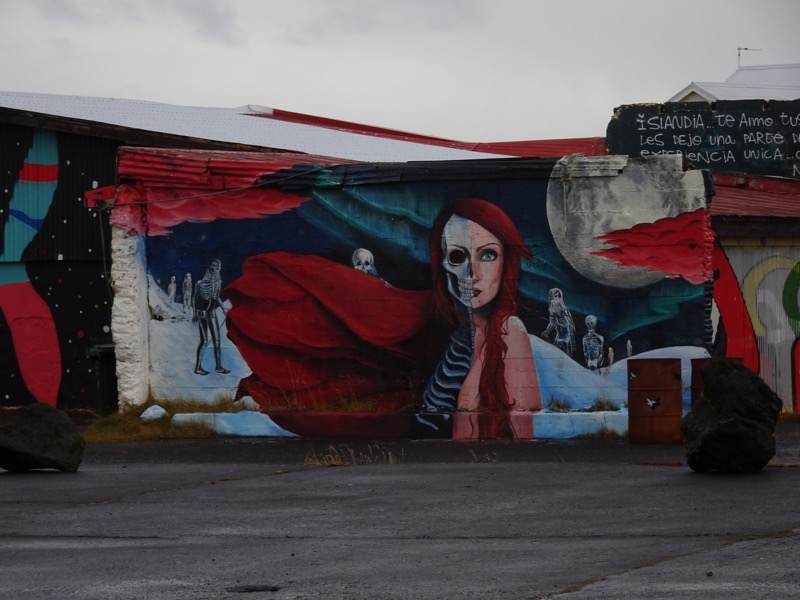
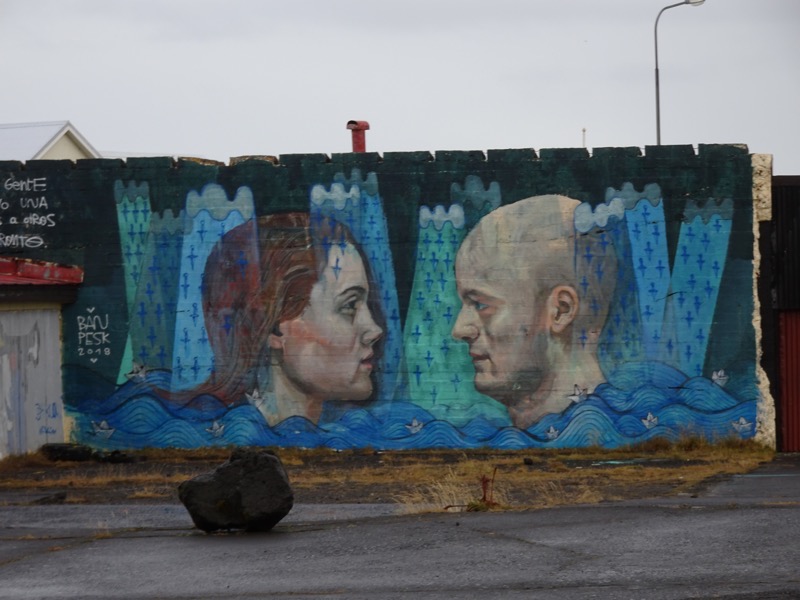
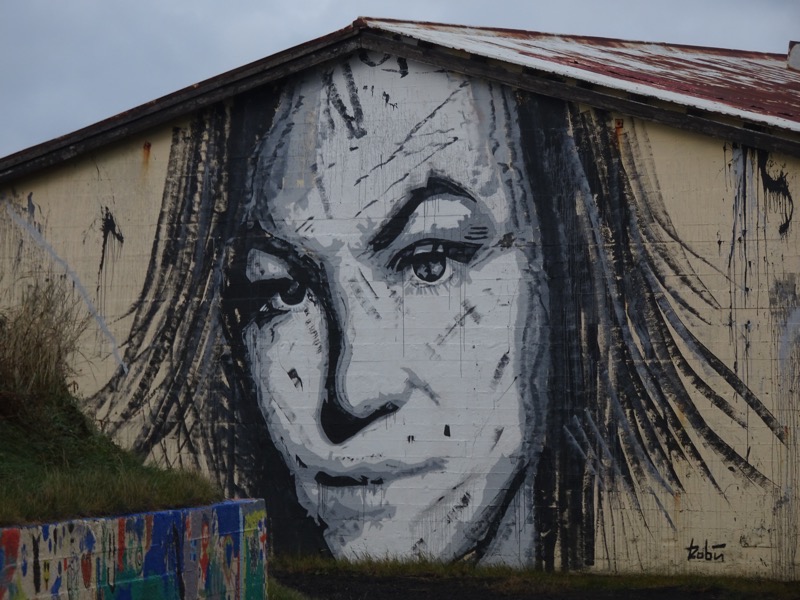
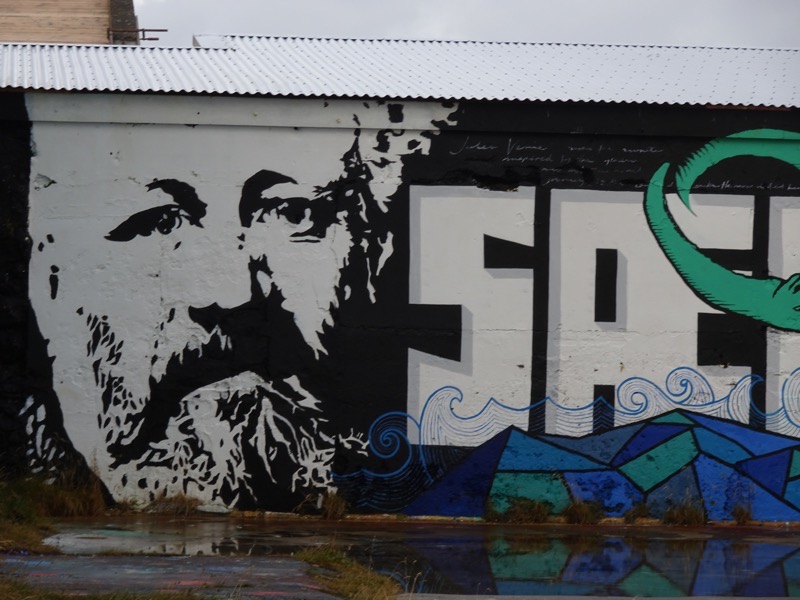
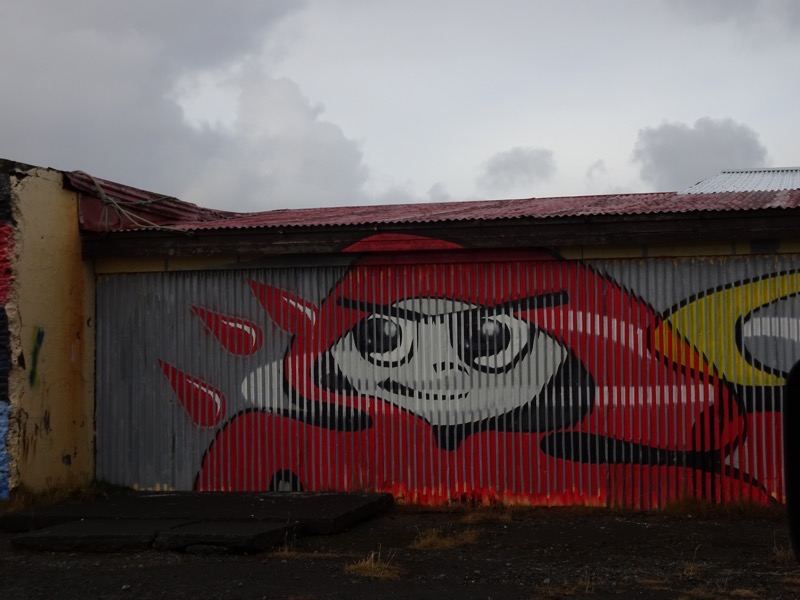
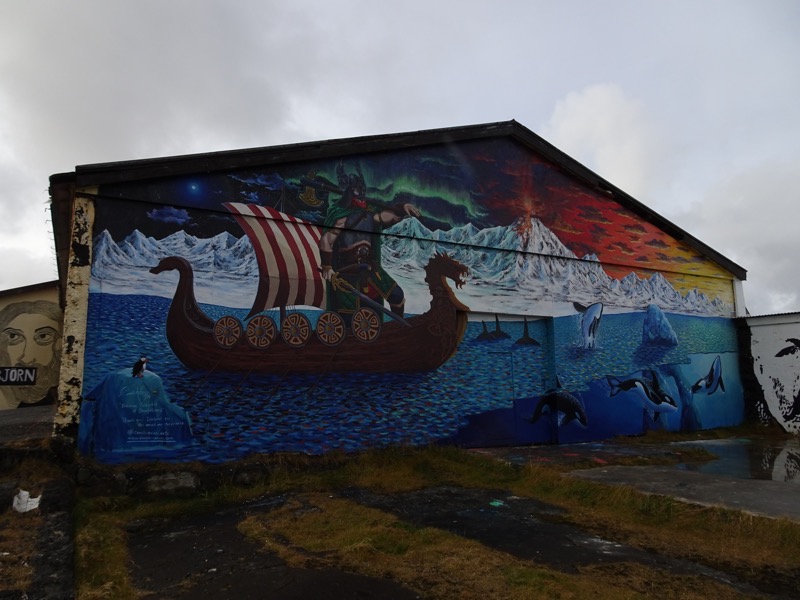
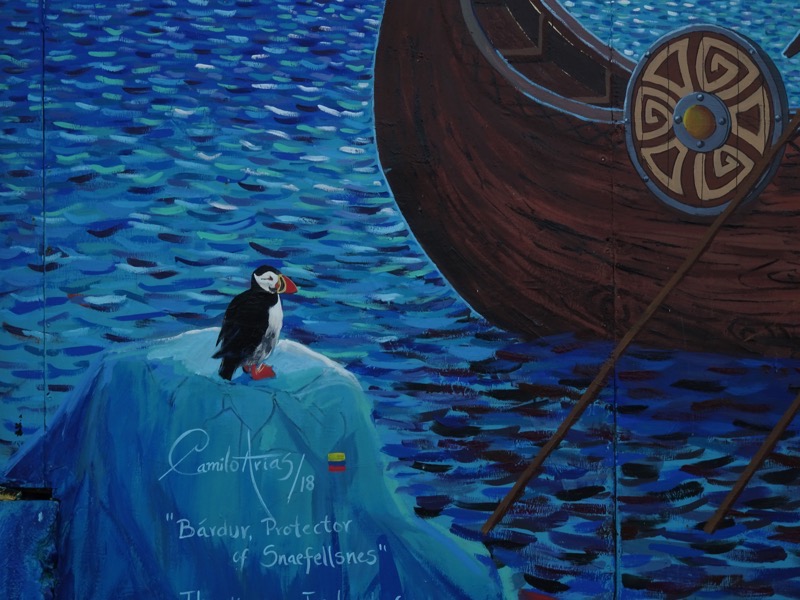
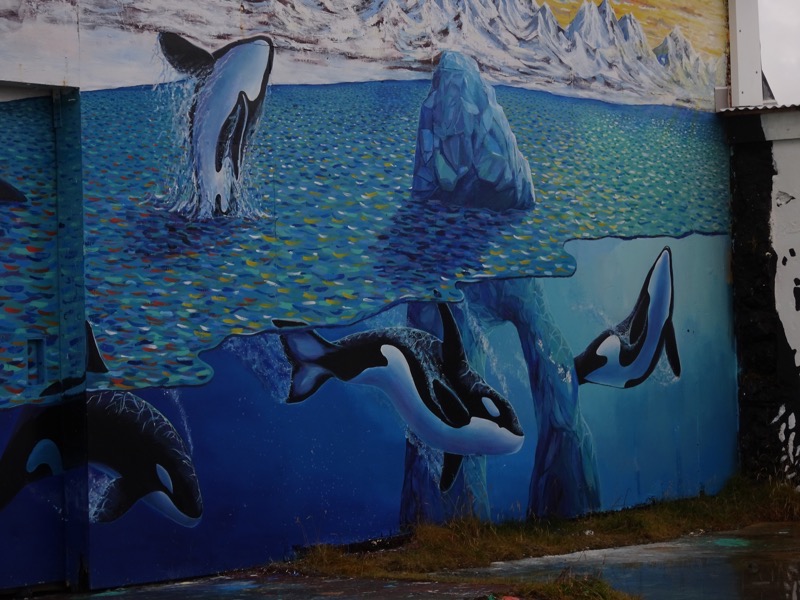
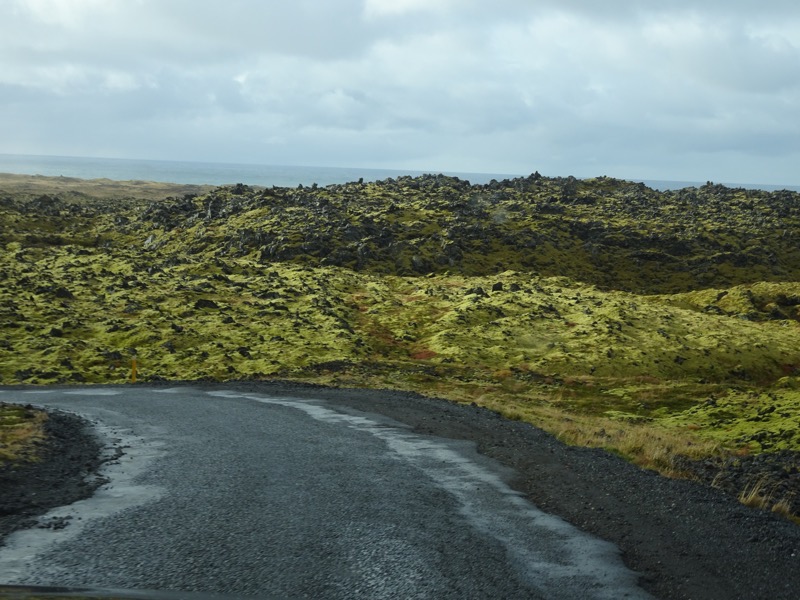
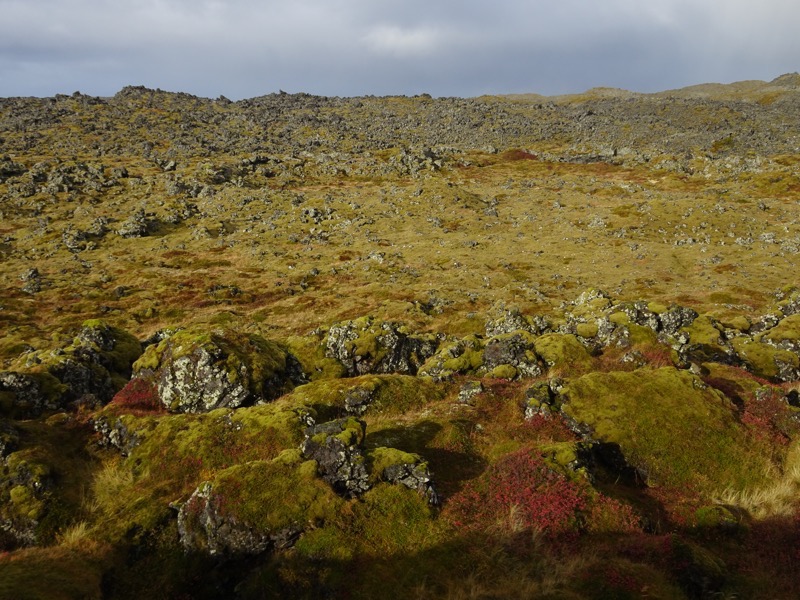
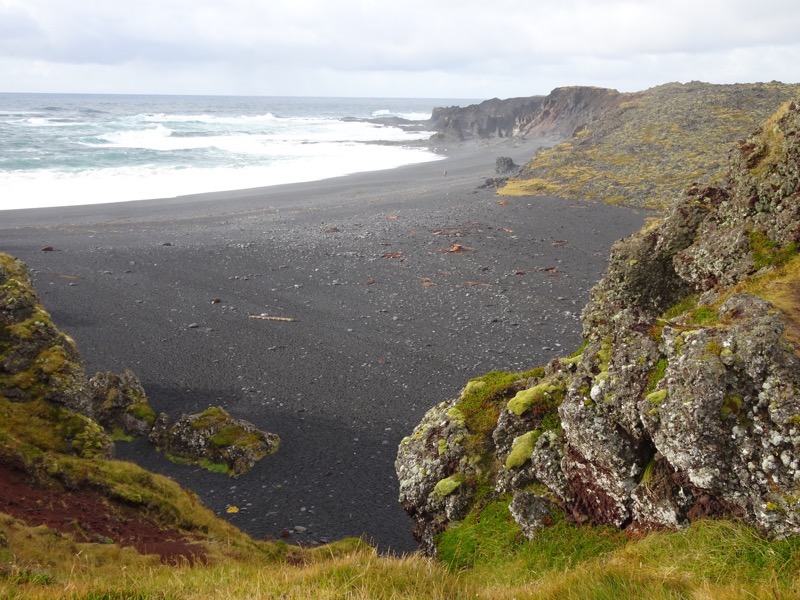
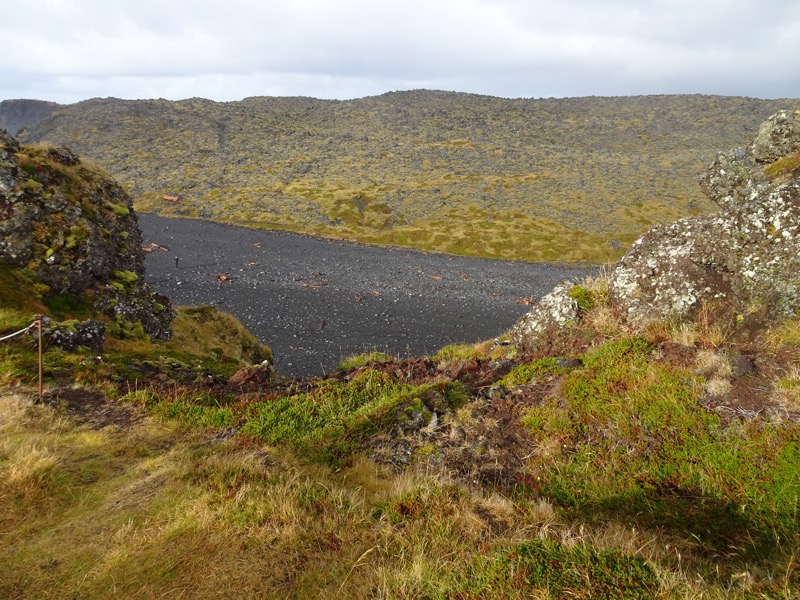 On the beach, there are the scattered steel remains of the Grimsby – a British fishing trawler that was wrecked here in 1948.
On the beach, there are the scattered steel remains of the Grimsby – a British fishing trawler that was wrecked here in 1948.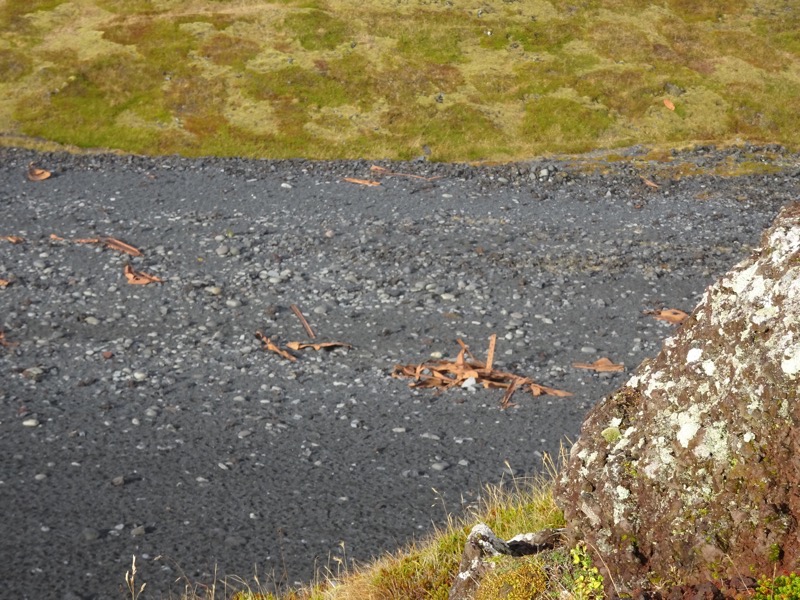
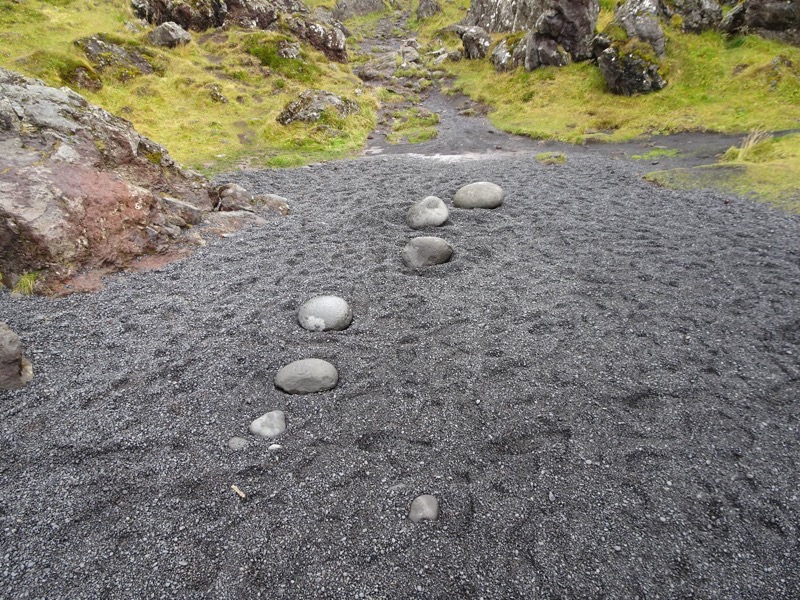
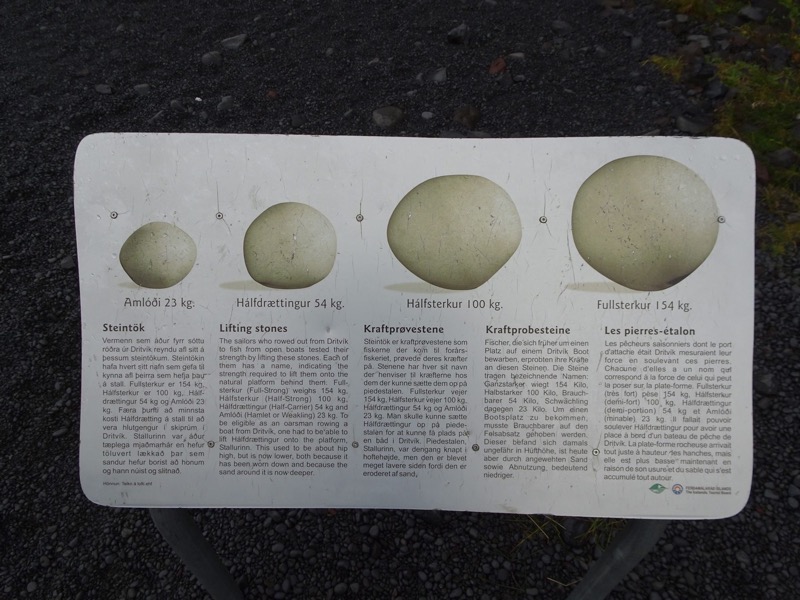
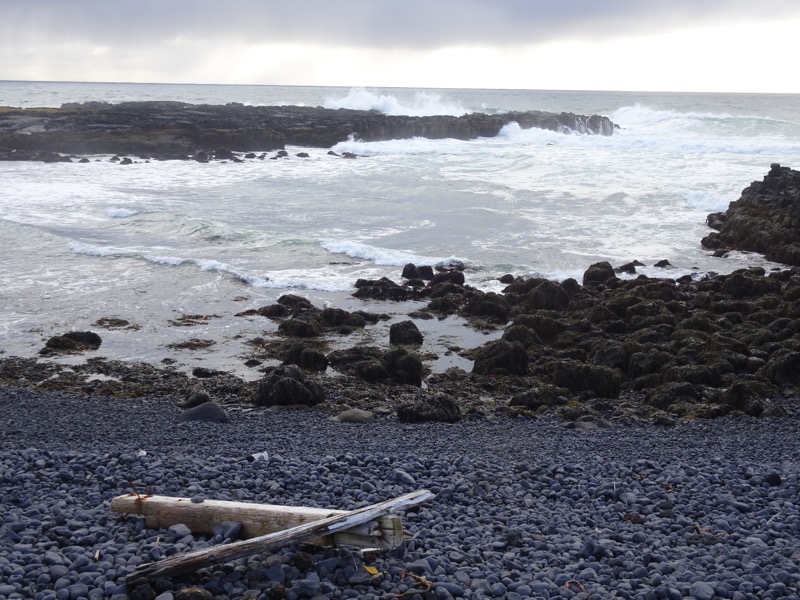
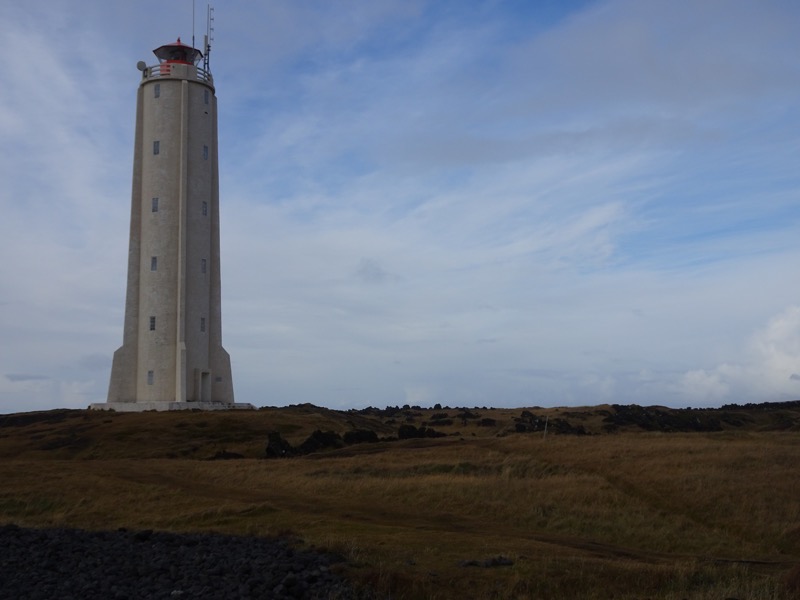 We stayed for quite a while watching the rain roll in, as the waves crashed over the craggy black lava rocks. The power of the surf hitting rocks like this is always impressive. This is the first place that I *didn’t* suggest that yale take a swim…
We stayed for quite a while watching the rain roll in, as the waves crashed over the craggy black lava rocks. The power of the surf hitting rocks like this is always impressive. This is the first place that I *didn’t* suggest that yale take a swim…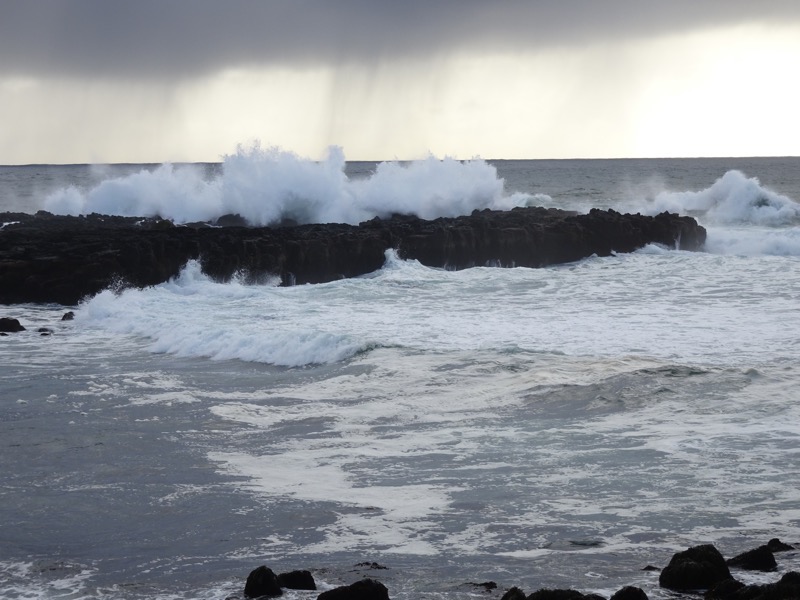
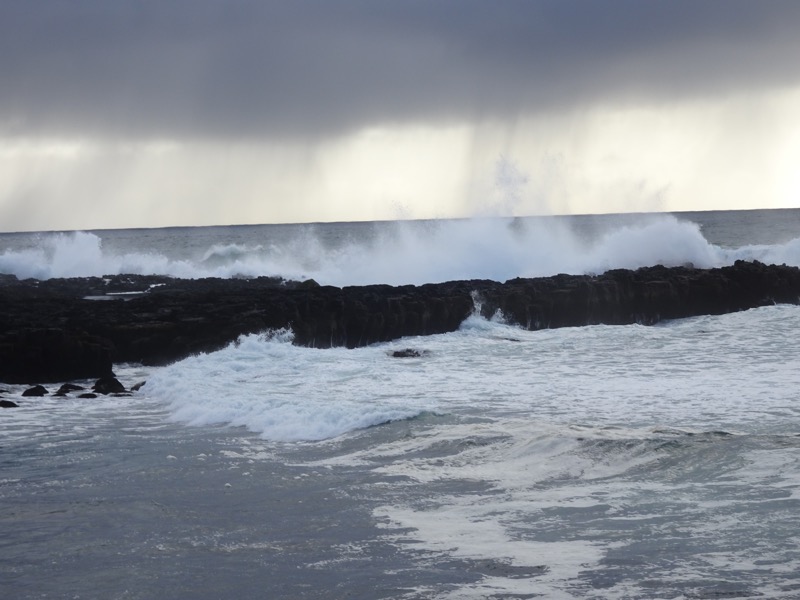
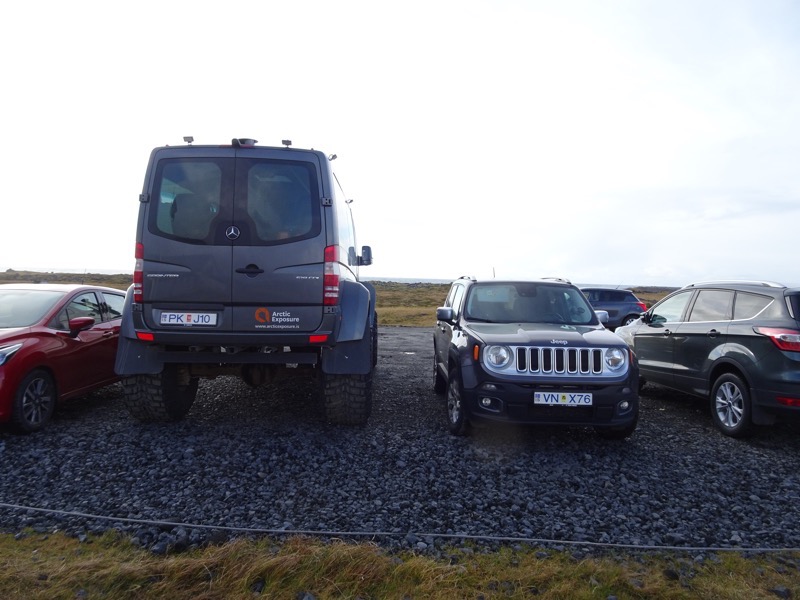 Again, as we drive around, everywhere we look is simply stunning scenery – I have so many photos taken out the car window from discovering more pretty sights around every corner.
Again, as we drive around, everywhere we look is simply stunning scenery – I have so many photos taken out the car window from discovering more pretty sights around every corner.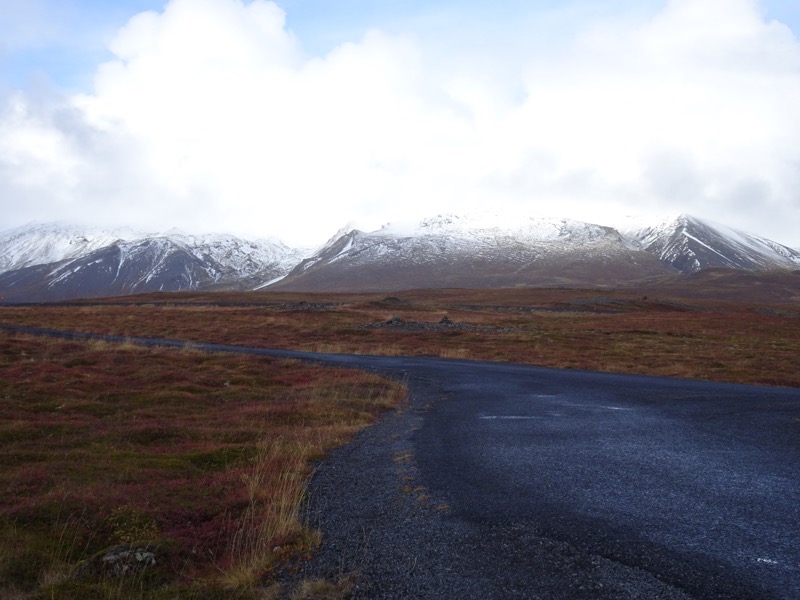
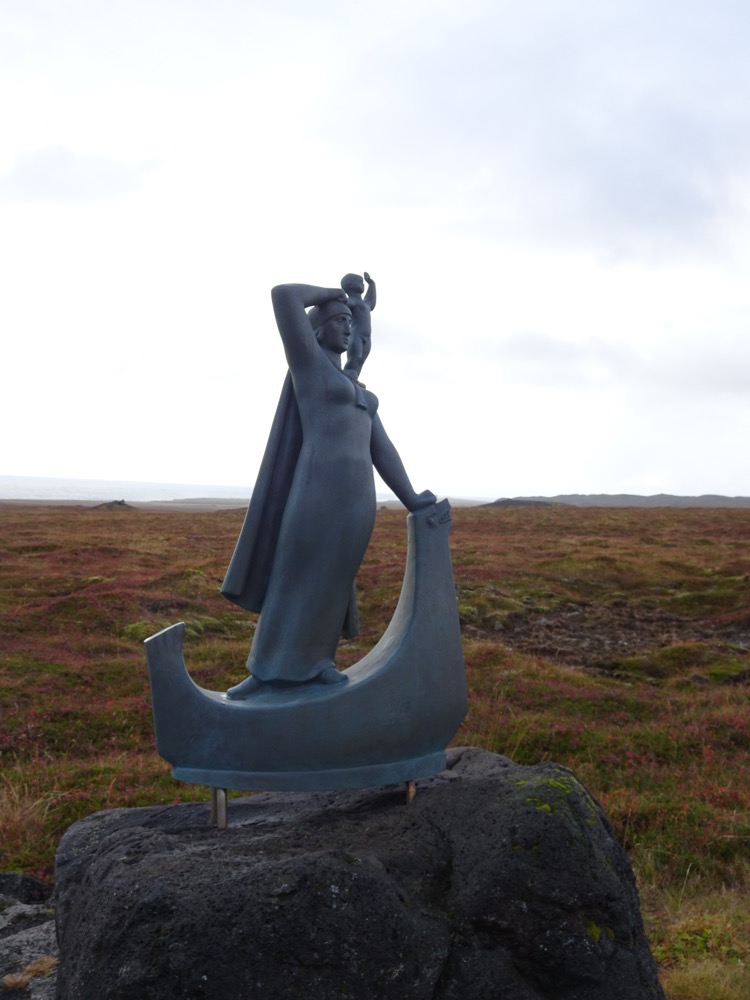
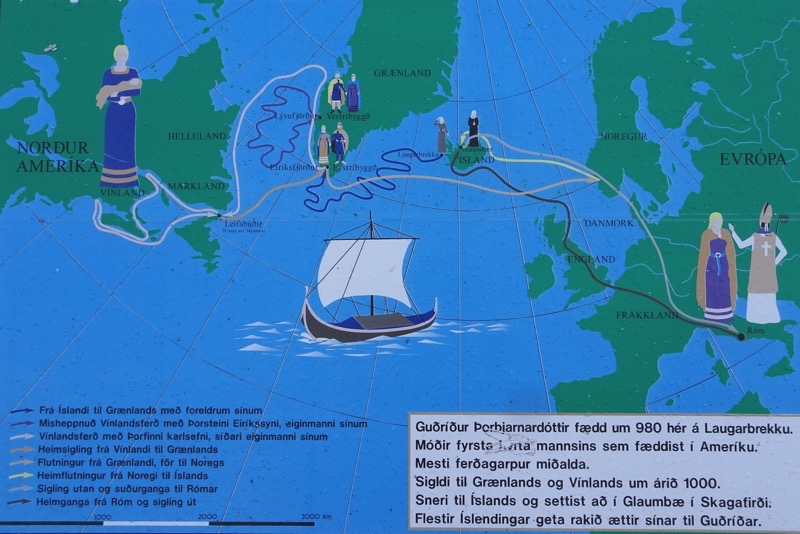
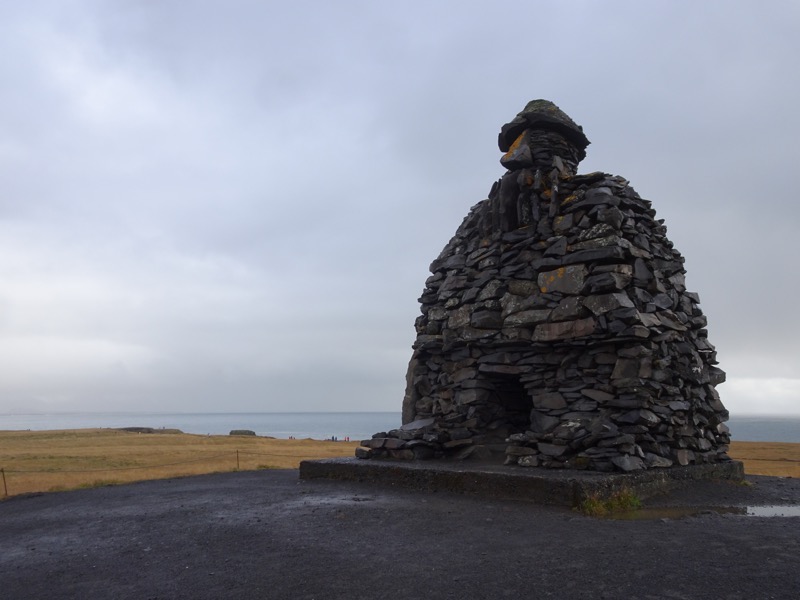 Bárðr Snæfellsnes is another character from Icelandic sagas; Bárðr’s mother was human, but his father was half giant and half troll. Growing up, he lived with Dofri, the “mountain-dweller” of Dovrefjell (in central Norway). He had three tall beautiful daughters with his first wife, Flaumgerðr (who had a human mother but was also Dofri the mountain dweller’s daughter): Helga, Þordís and Guðrún. With his second wife, Herþrúðr, who was human, he had six more daughters.
Bárðr Snæfellsnes is another character from Icelandic sagas; Bárðr’s mother was human, but his father was half giant and half troll. Growing up, he lived with Dofri, the “mountain-dweller” of Dovrefjell (in central Norway). He had three tall beautiful daughters with his first wife, Flaumgerðr (who had a human mother but was also Dofri the mountain dweller’s daughter): Helga, Þordís and Guðrún. With his second wife, Herþrúðr, who was human, he had six more daughters.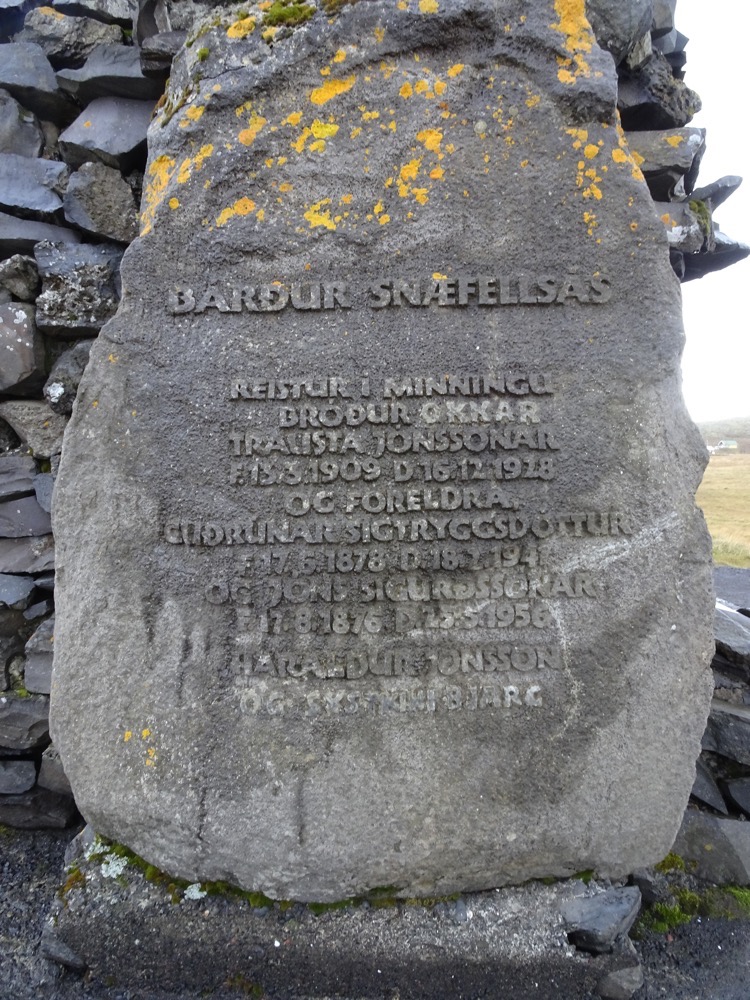
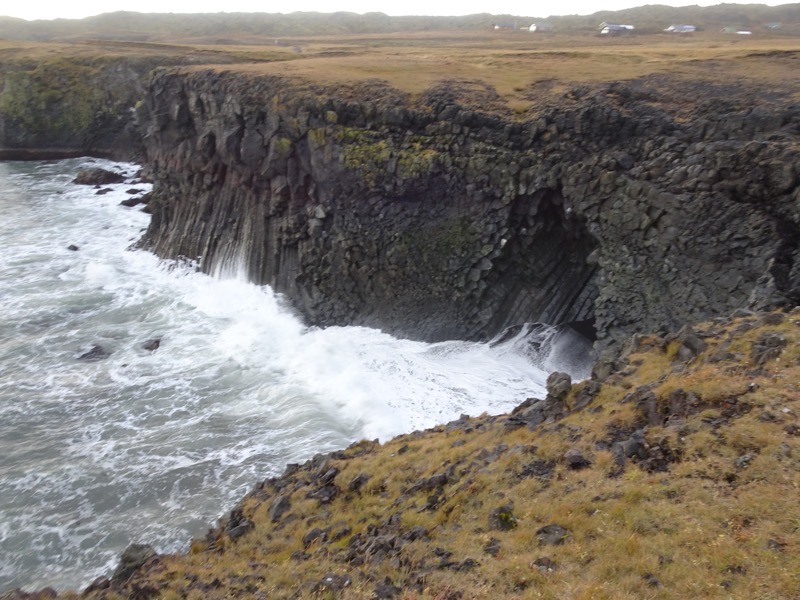 The peninsula here with its amazingly tall basalt columns and natural arches is breathtaking.
The peninsula here with its amazingly tall basalt columns and natural arches is breathtaking. 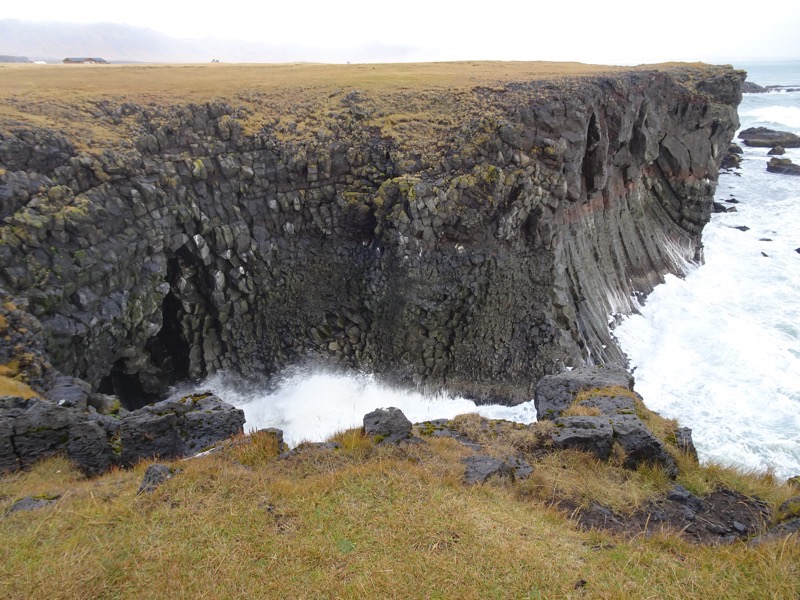
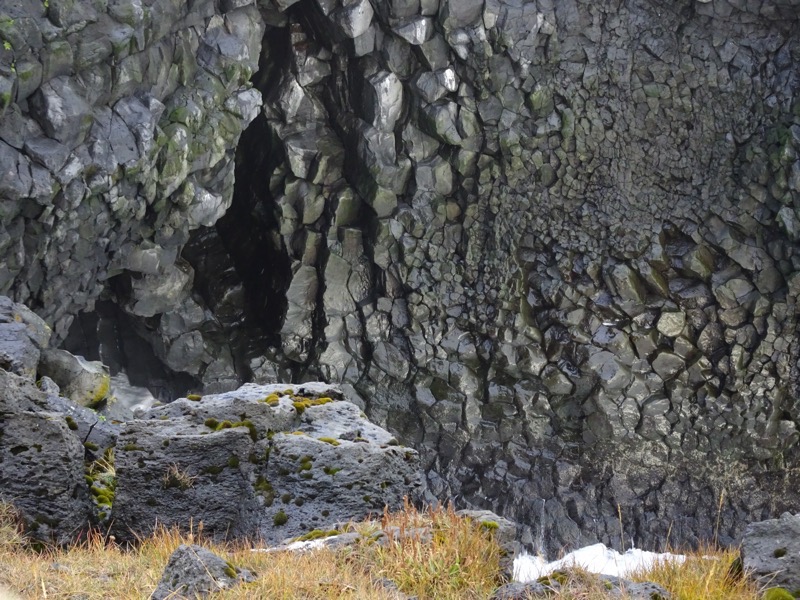
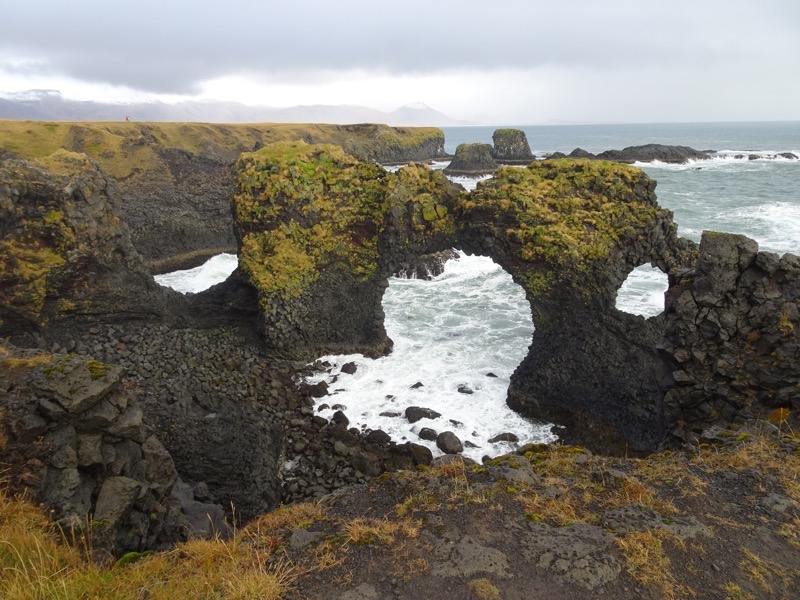
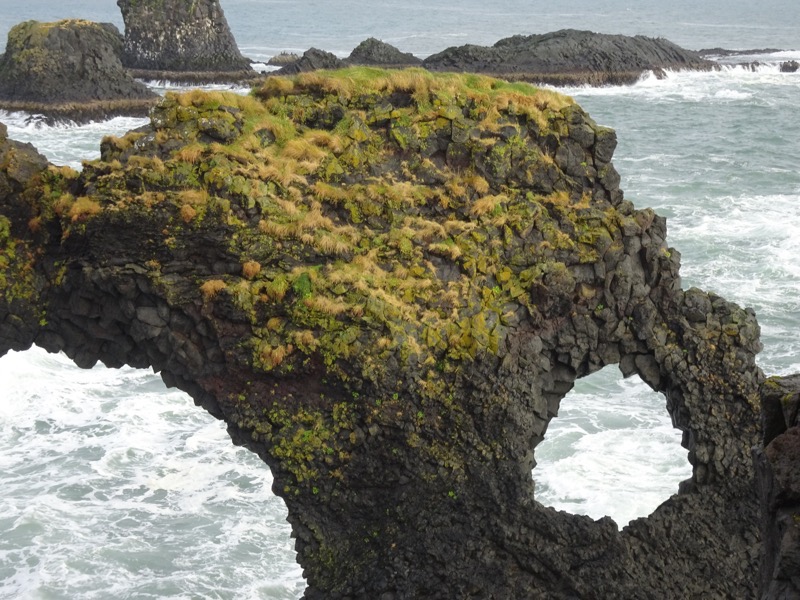 Anyway, back to Bárðr and Þorkell and their children. The sons of Þorkell and the daughters of Bárðr used to play together, as cousins do. However, one day, when there was pack ice along the shoreline, the sons of Þorkell, Rauðfeldr and Sölvi pushed Helga out to sea on an iceberg thinking she would drift for a while and come back. Unfortunately, she drifted out to sea, and unbeknownst to Bárðr, she drifted unharmed the 300 nautical miles to Greenland, where she ended up finding a lover and settling down. Bárðr, of course, thought she was dead and was infuriated. He pushed Rauðfeldr off the Rauðfeldsgjá, the high ravine at Arnarstapi and he threw Sölvi off a high cliff on the coast east called Sölvahamar. Þorkell was then infuriated too, and he and Bárðr fought until Þorkell ended up with a broken leg and moved out of the district.
Anyway, back to Bárðr and Þorkell and their children. The sons of Þorkell and the daughters of Bárðr used to play together, as cousins do. However, one day, when there was pack ice along the shoreline, the sons of Þorkell, Rauðfeldr and Sölvi pushed Helga out to sea on an iceberg thinking she would drift for a while and come back. Unfortunately, she drifted out to sea, and unbeknownst to Bárðr, she drifted unharmed the 300 nautical miles to Greenland, where she ended up finding a lover and settling down. Bárðr, of course, thought she was dead and was infuriated. He pushed Rauðfeldr off the Rauðfeldsgjá, the high ravine at Arnarstapi and he threw Sölvi off a high cliff on the coast east called Sölvahamar. Þorkell was then infuriated too, and he and Bárðr fought until Þorkell ended up with a broken leg and moved out of the district.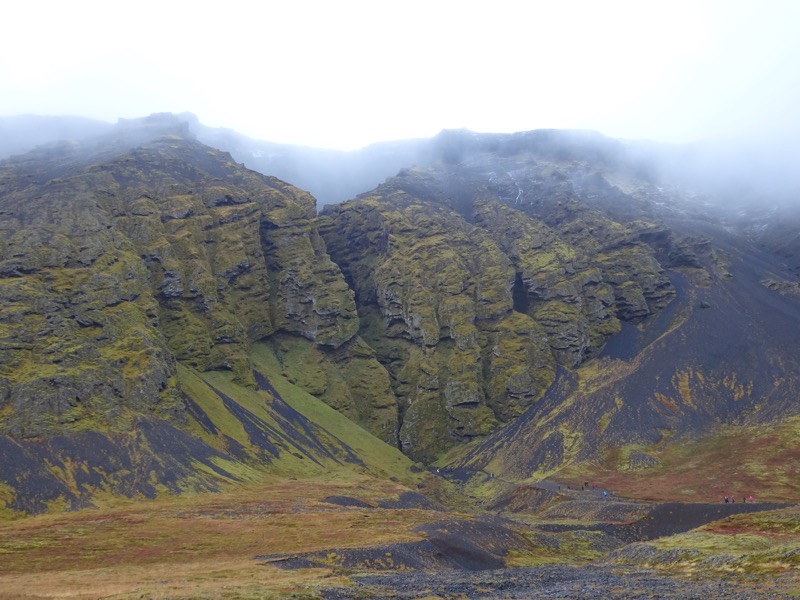 Rauðfeldsgjá ravine appears to be just a crack in the cliffline, but it is quite a long and steep chasm.
Rauðfeldsgjá ravine appears to be just a crack in the cliffline, but it is quite a long and steep chasm. 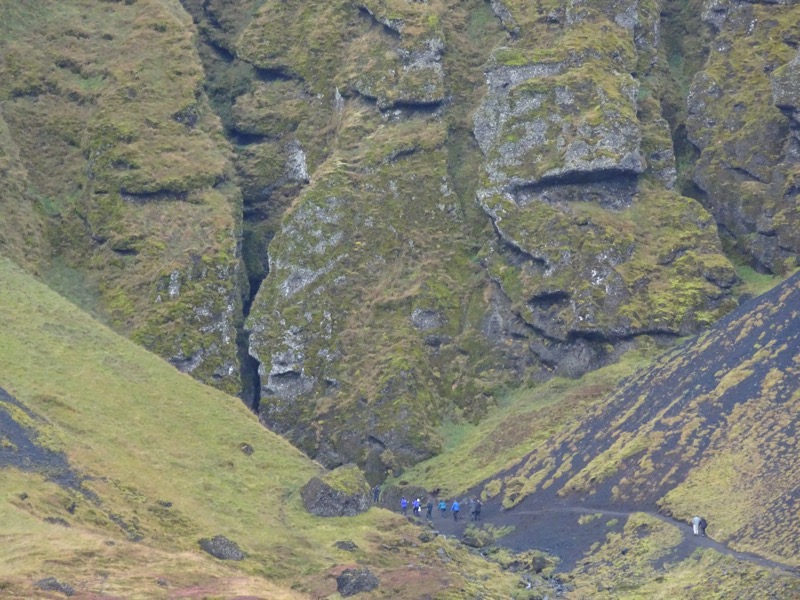
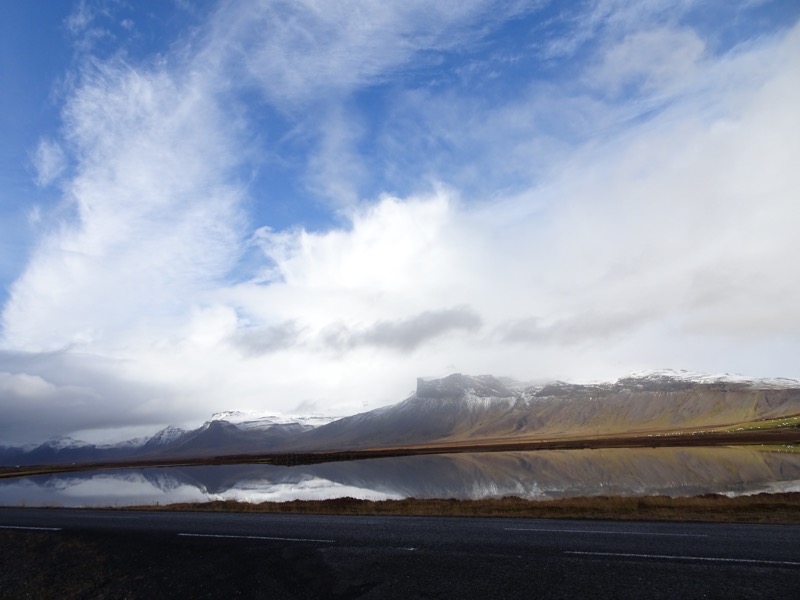
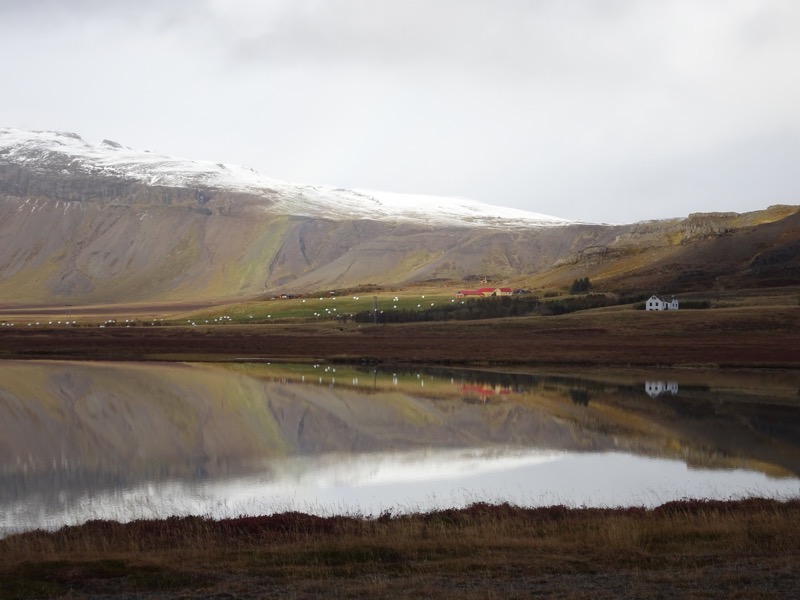
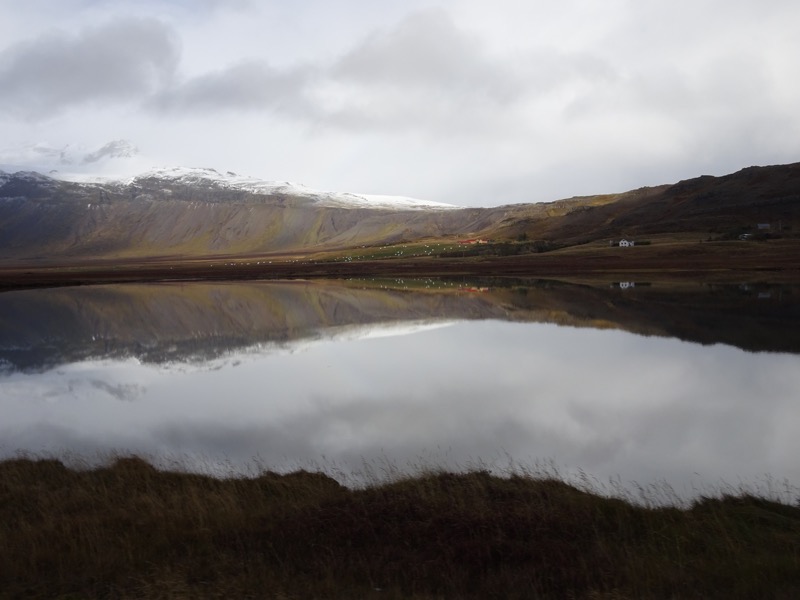 This is a reflection in the lake! (below)
This is a reflection in the lake! (below)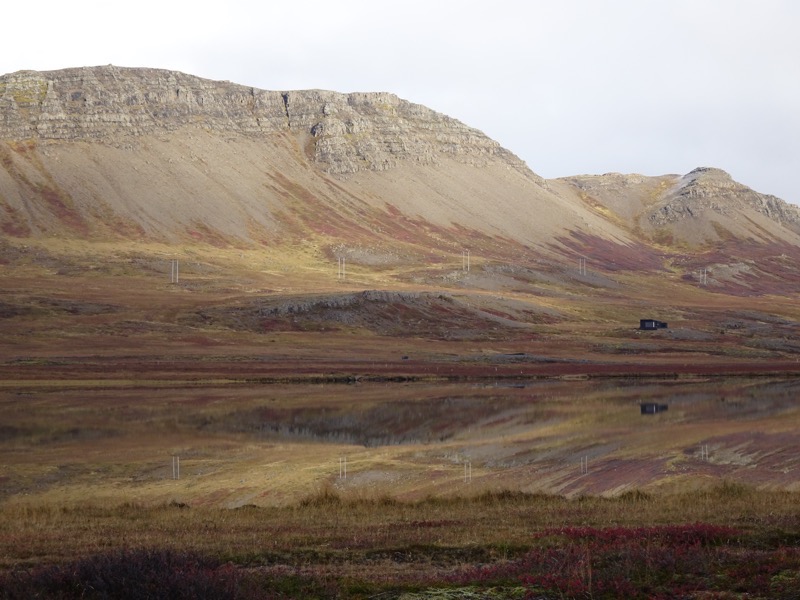
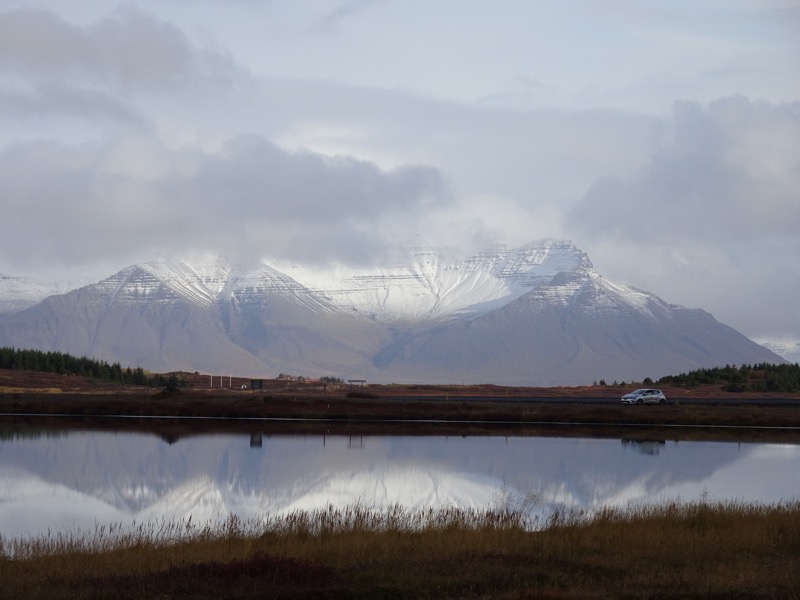 We weren’t the only ones stopping to take photos… we were (mostly) the only ones taking photos of the scenery. yale doing his best Chinese tourist impression and posing in the now way too familiar, and no doubt already Chinese-Instagram-Famous, Airing The Vagina Pose…! We don’t know why they do it, but they are always standing around on one leg like this with their arms spread out in front of things?!?
We weren’t the only ones stopping to take photos… we were (mostly) the only ones taking photos of the scenery. yale doing his best Chinese tourist impression and posing in the now way too familiar, and no doubt already Chinese-Instagram-Famous, Airing The Vagina Pose…! We don’t know why they do it, but they are always standing around on one leg like this with their arms spread out in front of things?!?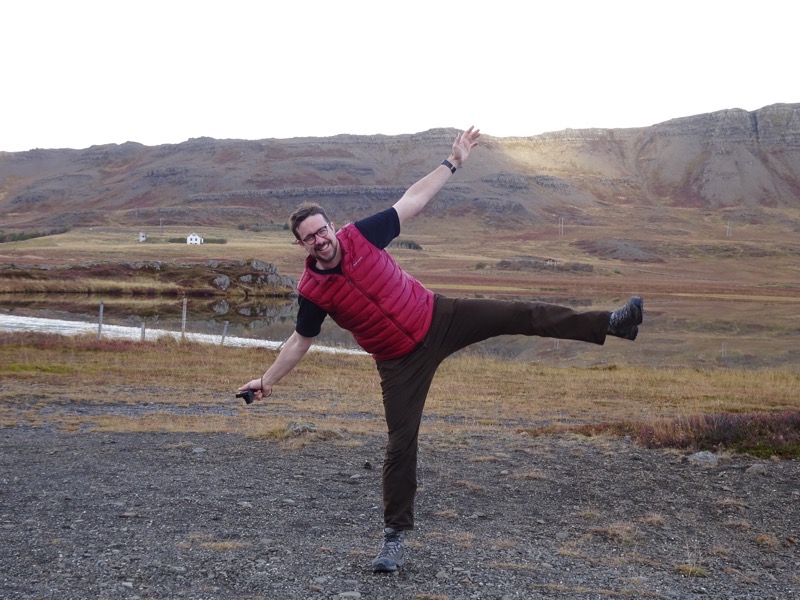 Hitting the road to Borgagnes…
Hitting the road to Borgagnes…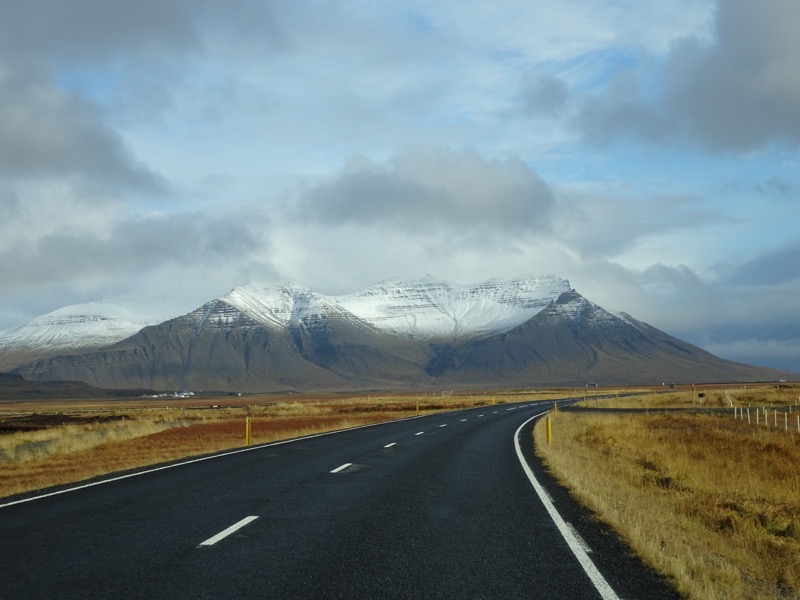
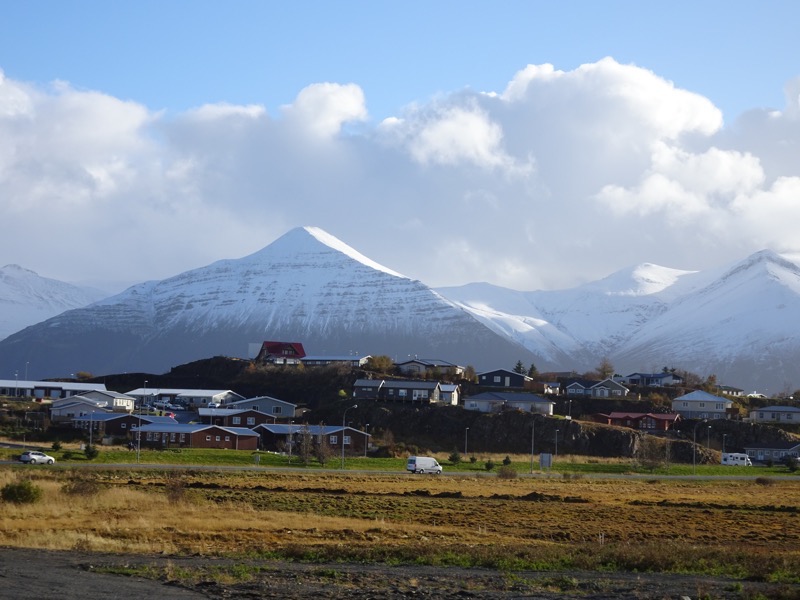
 The top half of the audio tour was about the seafaring voyages of the viking eras… where they went how and a little bit of the who. I am hoping to get more solid/academically presented information on all this at the National Museum in a couple of days but it was interesting enough.
The top half of the audio tour was about the seafaring voyages of the viking eras… where they went how and a little bit of the who. I am hoping to get more solid/academically presented information on all this at the National Museum in a couple of days but it was interesting enough.

 The bottom half of the Settlement Centre’s display is an artistic representation of what is called Egill’s Saga. Egill Skallagrímsson was a Viking warrior and poet, whose story is told here through a wide range of art pieces in varying styles, by many artists, in a diverse array of media. I very much enjoyed the artworks – though it seems Egill was a bit of an arsehole.
The bottom half of the Settlement Centre’s display is an artistic representation of what is called Egill’s Saga. Egill Skallagrímsson was a Viking warrior and poet, whose story is told here through a wide range of art pieces in varying styles, by many artists, in a diverse array of media. I very much enjoyed the artworks – though it seems Egill was a bit of an arsehole. Wood carvings of the gods, Floki and Odin.
Wood carvings of the gods, Floki and Odin. Egill’s father, who was a very harsh man.
Egill’s father, who was a very harsh man.  A representation of Egill’s first killing at age seven, when he became enraged in an ice game (a precursor to modern ice hockey perhaps) and took an axe and killed a man.
A representation of Egill’s first killing at age seven, when he became enraged in an ice game (a precursor to modern ice hockey perhaps) and took an axe and killed a man. An artwork showing his parents reaction to the killing – Mum: You good warrior you, one day we will buy you a ship. Dad: Bad boy. You shouldn’t kill people. (Shortest version of that anyone ever wrote)
An artwork showing his parents reaction to the killing – Mum: You good warrior you, one day we will buy you a ship. Dad: Bad boy. You shouldn’t kill people. (Shortest version of that anyone ever wrote) Egill’s fantastically handsome brother who look nothing like his father… mentioned repeatedly.
Egill’s fantastically handsome brother who look nothing like his father… mentioned repeatedly. A scorn pole made to curse Egill by someone else he had crossed.
A scorn pole made to curse Egill by someone else he had crossed. An artwork representing some magic and shamanism.
An artwork representing some magic and shamanism. Egill in his melancholy after losing his two sons.
Egill in his melancholy after losing his two sons.
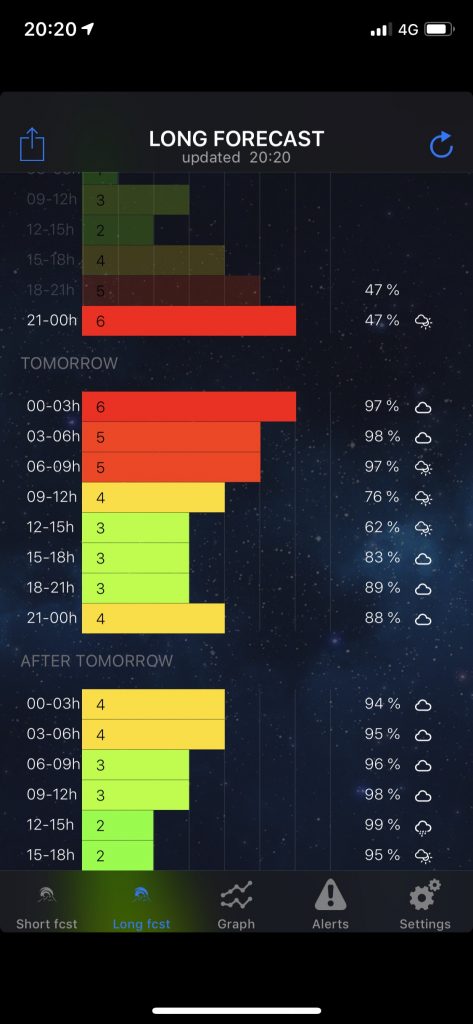
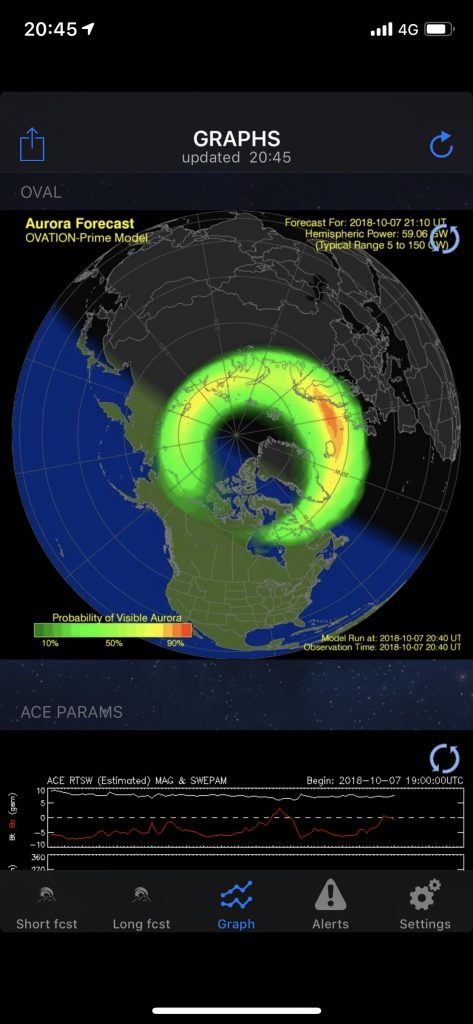
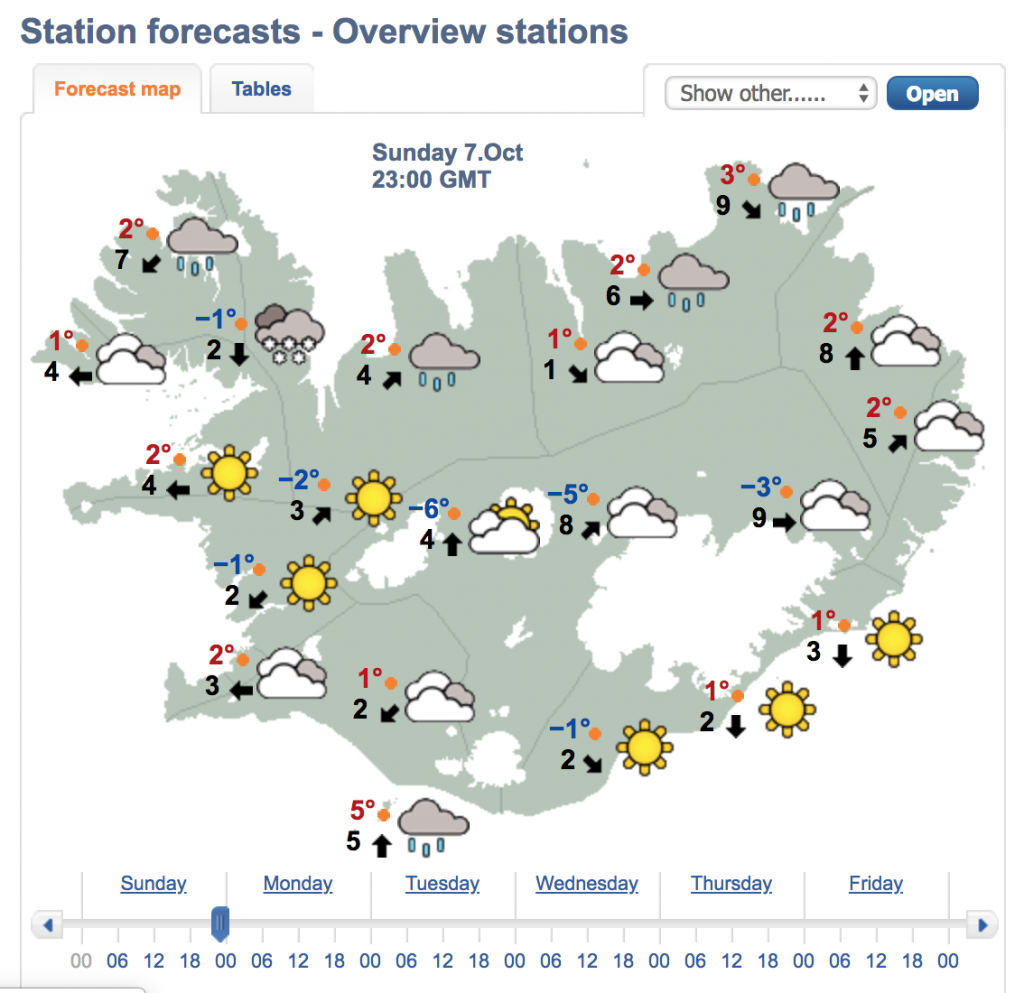
 And just after dinner we went for a little drive away from the city lights and managed to spot the aurora peeking out between the clouds.
And just after dinner we went for a little drive away from the city lights and managed to spot the aurora peeking out between the clouds.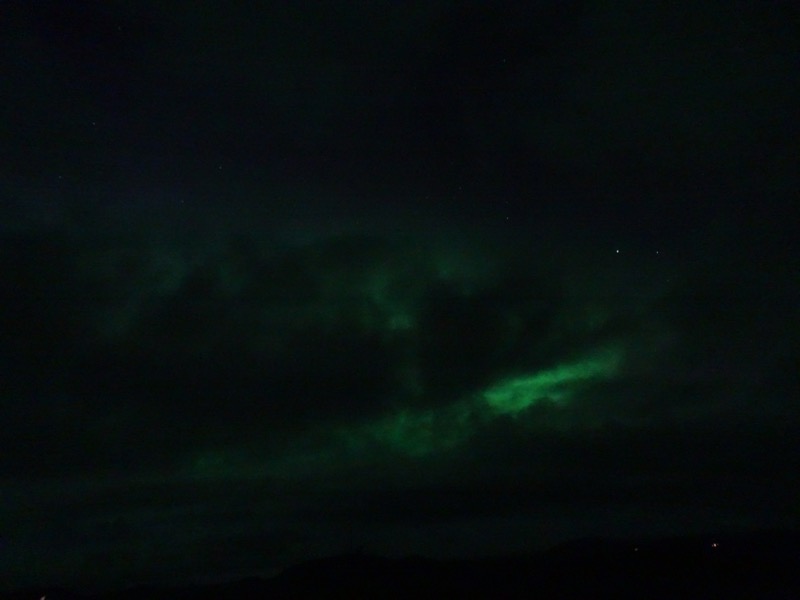 It’s a stunning phenomena, and very hard to capture with a handheld camera and no tripod! 😛 Yeah, well equipped photographer I am. We drove around a bit chasing the brightest green in the sky.
It’s a stunning phenomena, and very hard to capture with a handheld camera and no tripod! 😛 Yeah, well equipped photographer I am. We drove around a bit chasing the brightest green in the sky.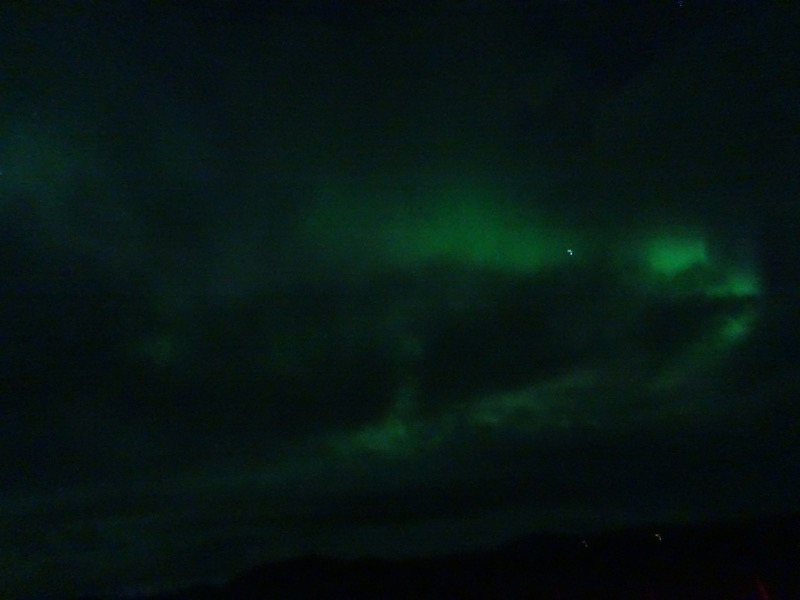 I had to include this – we drove to a dark space behind the Settlement Centre in town and found others attempting to photograph the aurora too… and would you believe this: it’s pitch black, the sky is green and a Chinese couple are here and the guy is trying to photograph his partner in front of the northern lights.
I had to include this – we drove to a dark space behind the Settlement Centre in town and found others attempting to photograph the aurora too… and would you believe this: it’s pitch black, the sky is green and a Chinese couple are here and the guy is trying to photograph his partner in front of the northern lights.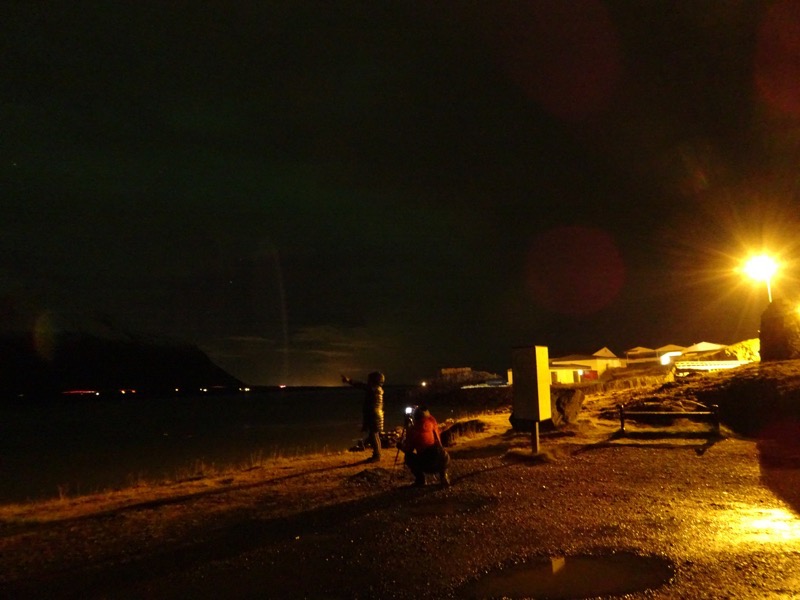 Later on – just before we were getting ready for bed, we stuck our head outside the door and saw what looked like lights… so we quickly got dressed and ran outside. As I said, I didn’t have a tripod, so these are 8 second, handheld exposures… but I didn’t really care too much about the photos – the experience was the important bit. I took a handful of photos and then stuffed the camera in my pocked to just watch. We’ve had so much cloud cover, rain and bad weather that we didn’t think we were going to see the aurorae at all.
Later on – just before we were getting ready for bed, we stuck our head outside the door and saw what looked like lights… so we quickly got dressed and ran outside. As I said, I didn’t have a tripod, so these are 8 second, handheld exposures… but I didn’t really care too much about the photos – the experience was the important bit. I took a handful of photos and then stuffed the camera in my pocked to just watch. We’ve had so much cloud cover, rain and bad weather that we didn’t think we were going to see the aurorae at all.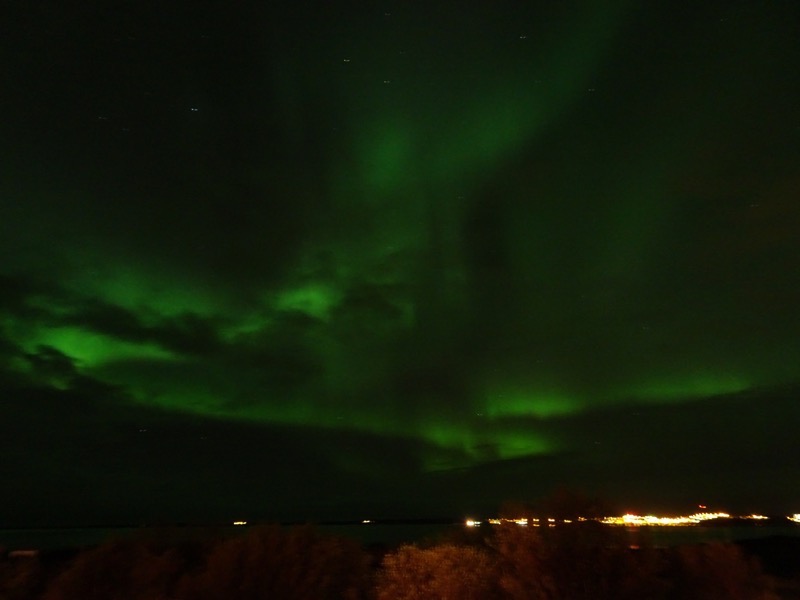
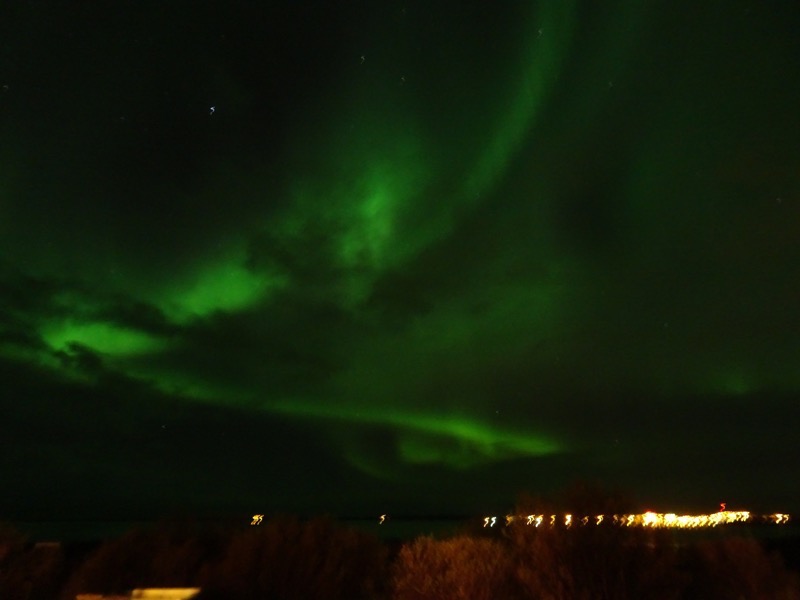
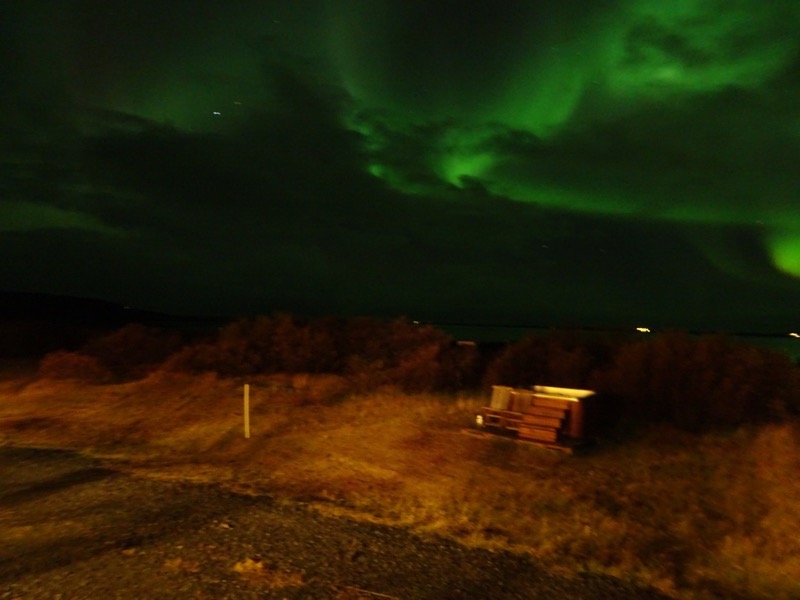
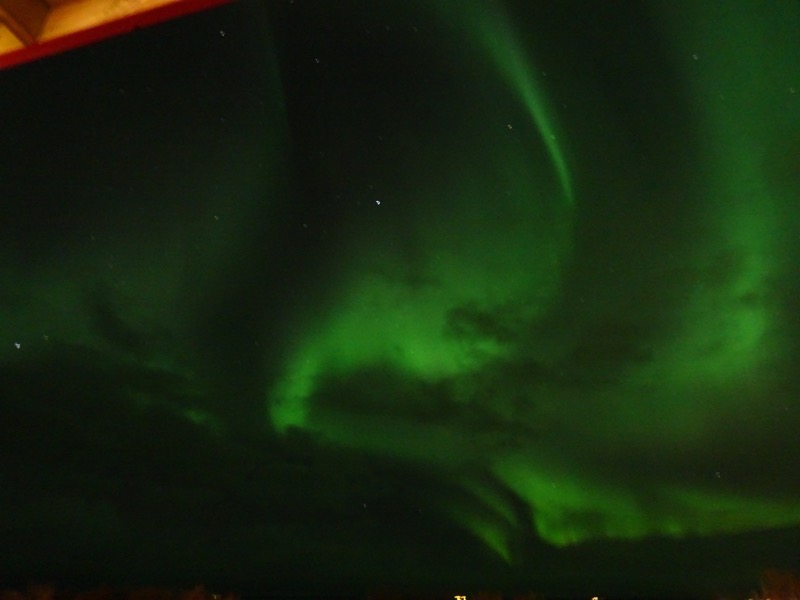
 Stunning! And on that note – bed time.
Stunning! And on that note – bed time.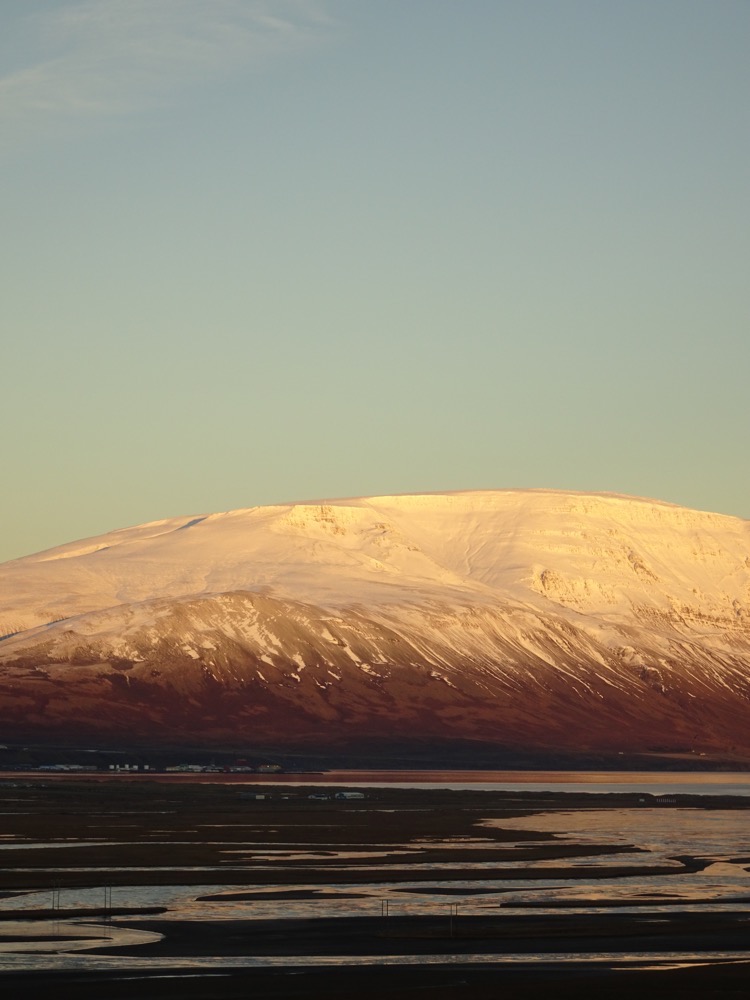 Before we left we went to say a quick goodbye to the ponies.
Before we left we went to say a quick goodbye to the ponies.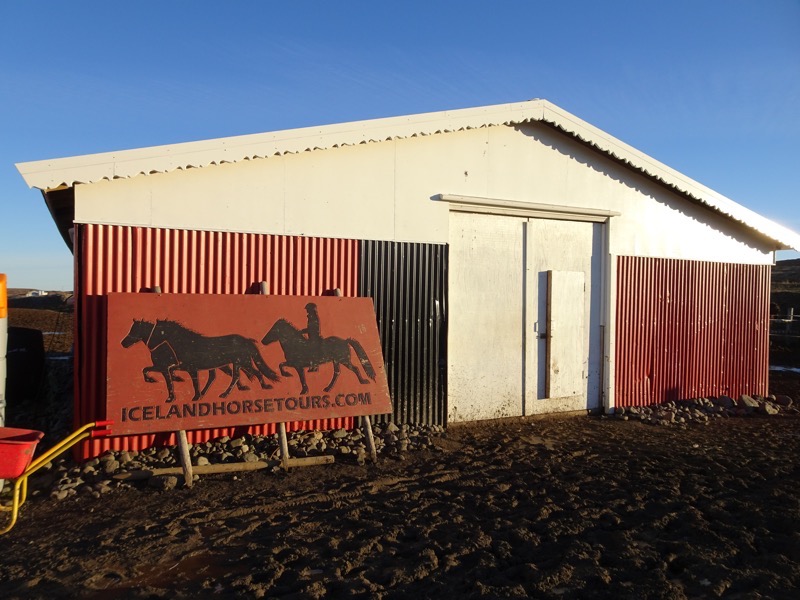
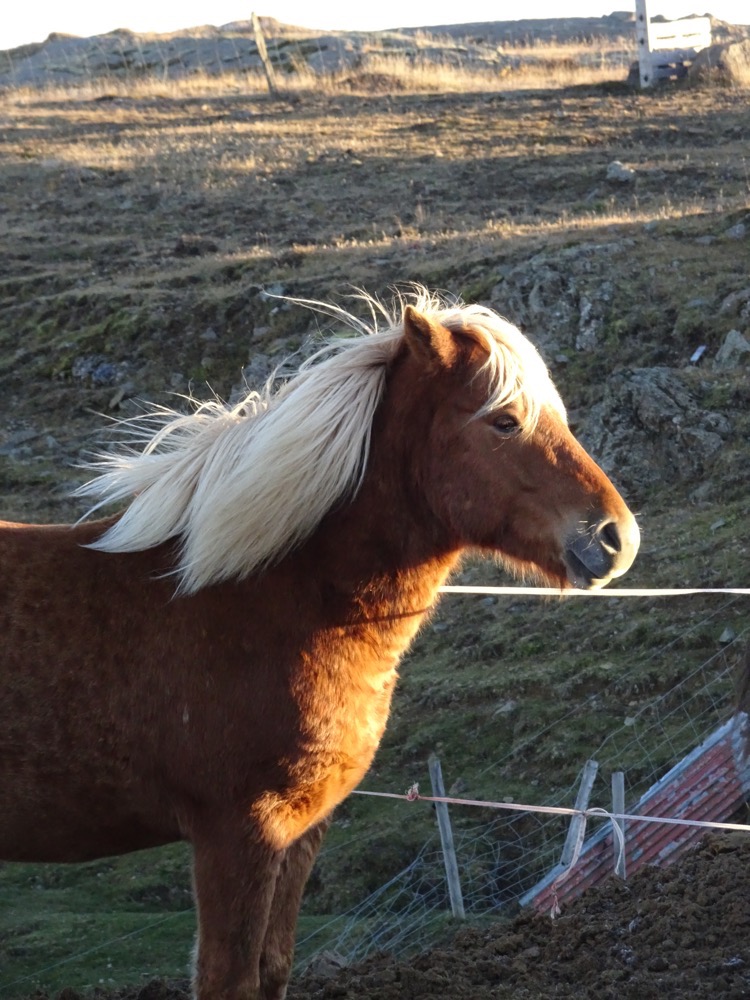 Poor things have to stand around in the cold wind al day and all night – they don’t get stabled at night. According to Kristoffer, our host, the horses get uncomfortable if it gets over about 15C so they actually like it colder.
Poor things have to stand around in the cold wind al day and all night – they don’t get stabled at night. According to Kristoffer, our host, the horses get uncomfortable if it gets over about 15C so they actually like it colder.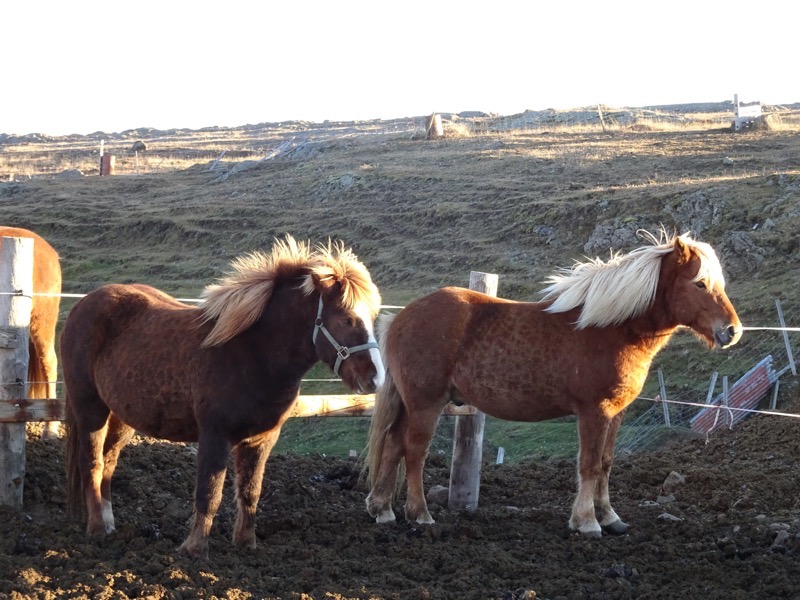 It must be truly hard living in the cold conditions, but I swear the views would make it worth it.
It must be truly hard living in the cold conditions, but I swear the views would make it worth it.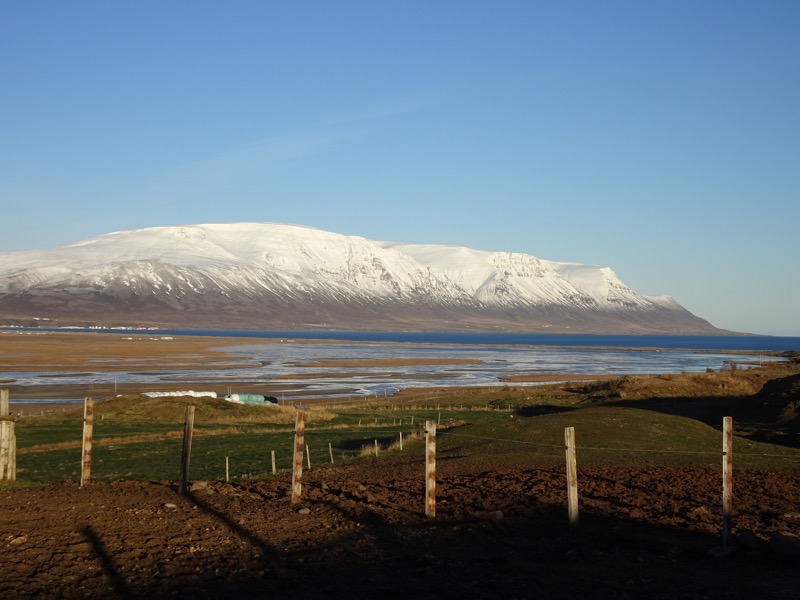
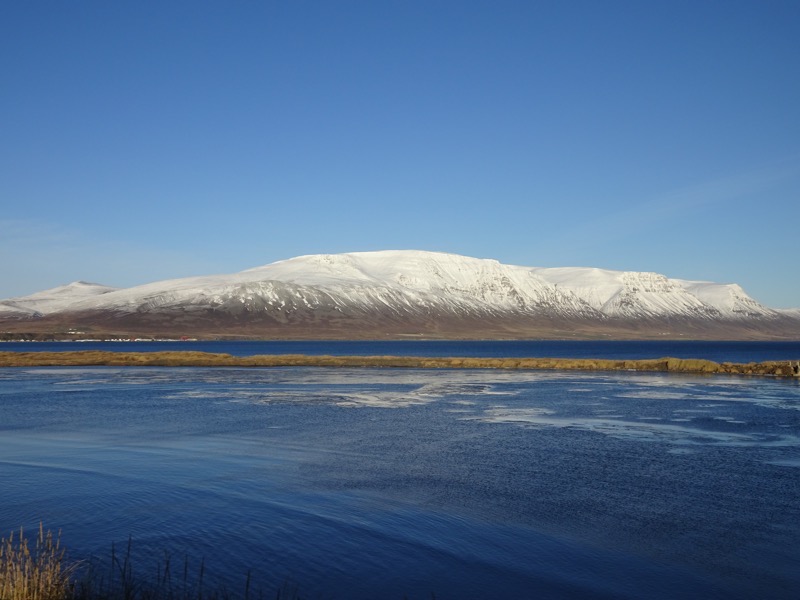
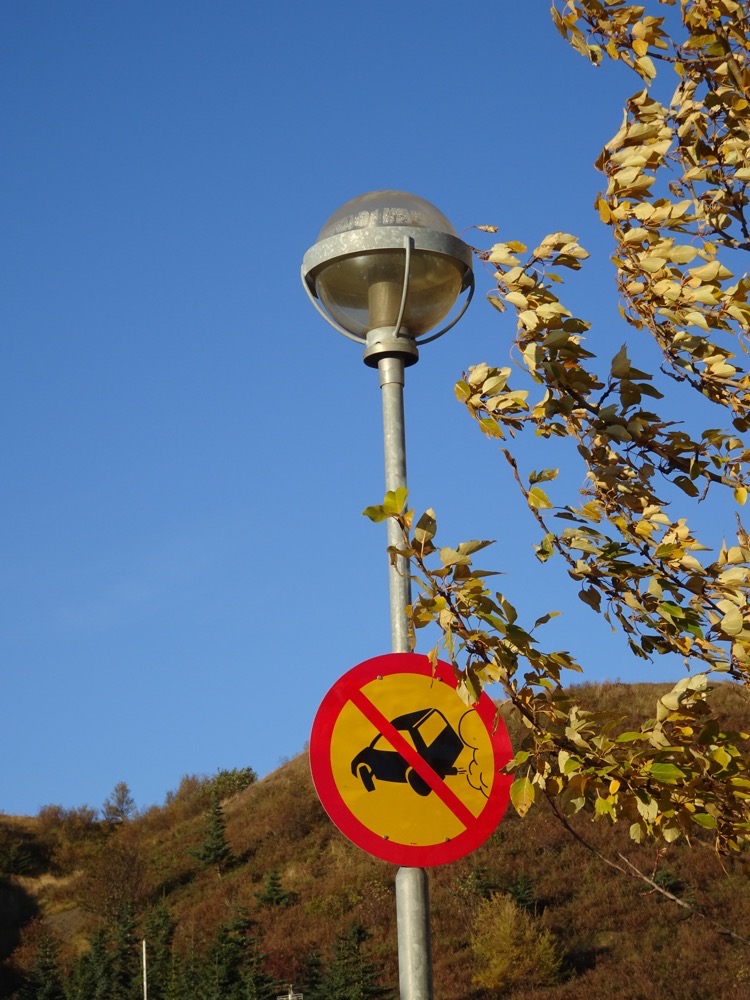
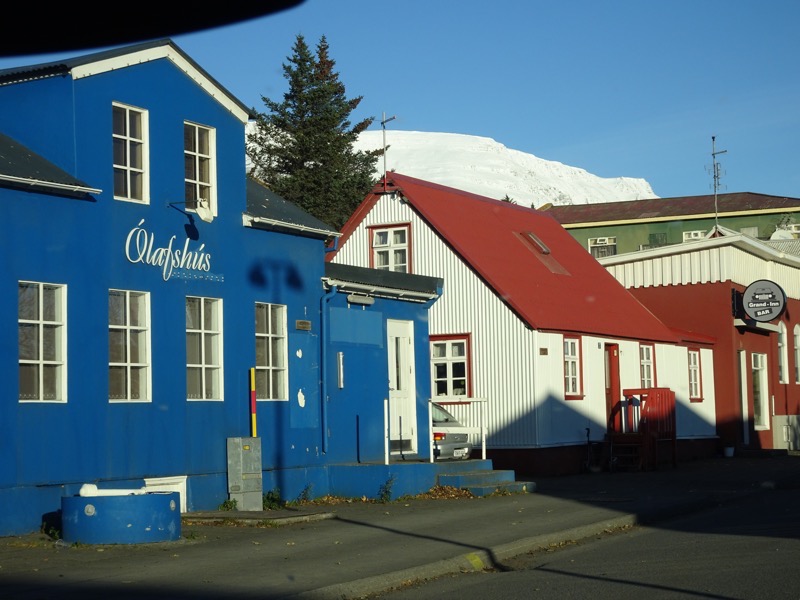 Someone in Sauðárkrókur has a sense of humour – this was painted on the wall of what appeared to be a fish processing plant.
Someone in Sauðárkrókur has a sense of humour – this was painted on the wall of what appeared to be a fish processing plant.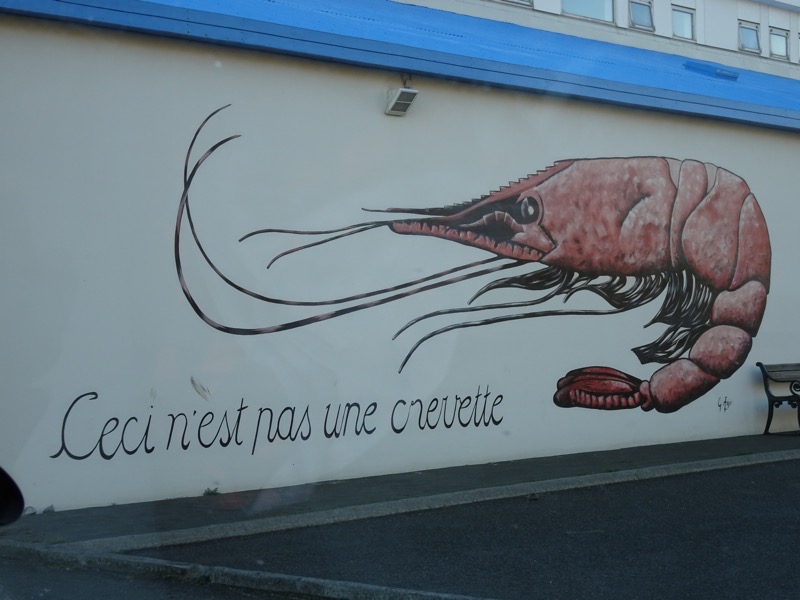
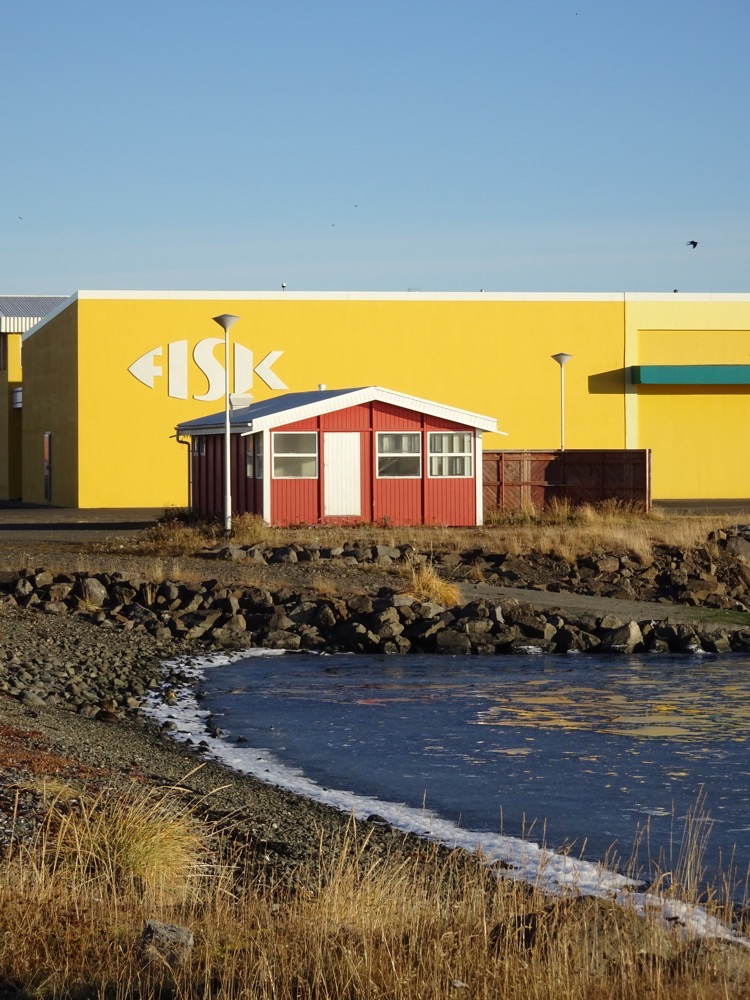 Out on the road towards Blönduós, just more stunning scenery in every direction.
Out on the road towards Blönduós, just more stunning scenery in every direction.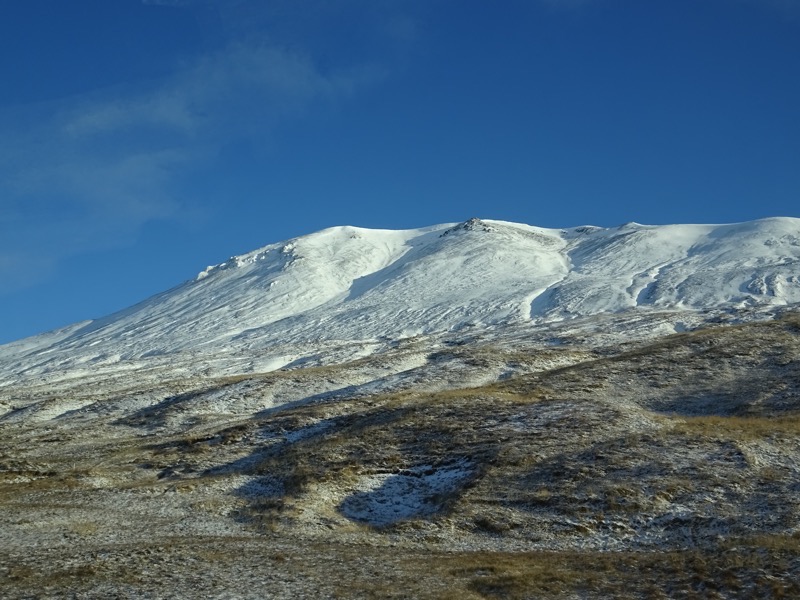
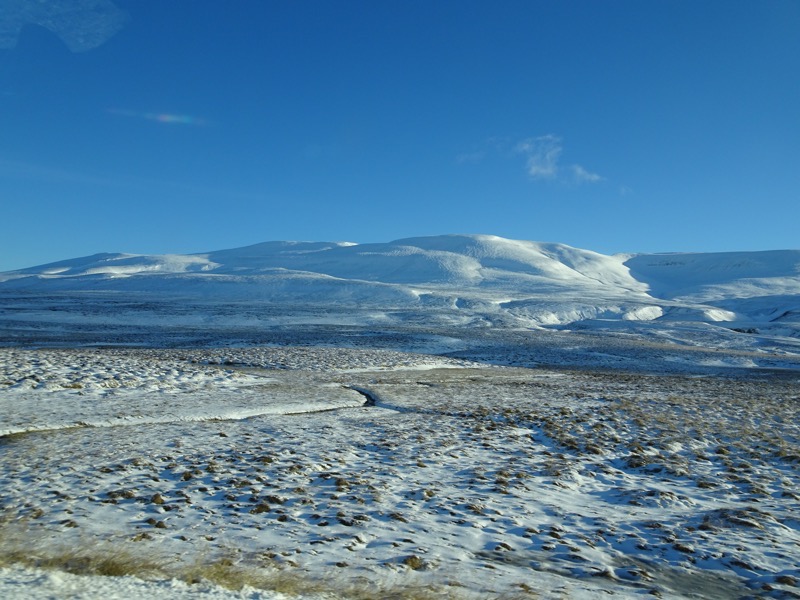 A very modern random church called Blönduóskirkja, oddly enough near Blönduós.
A very modern random church called Blönduóskirkja, oddly enough near Blönduós.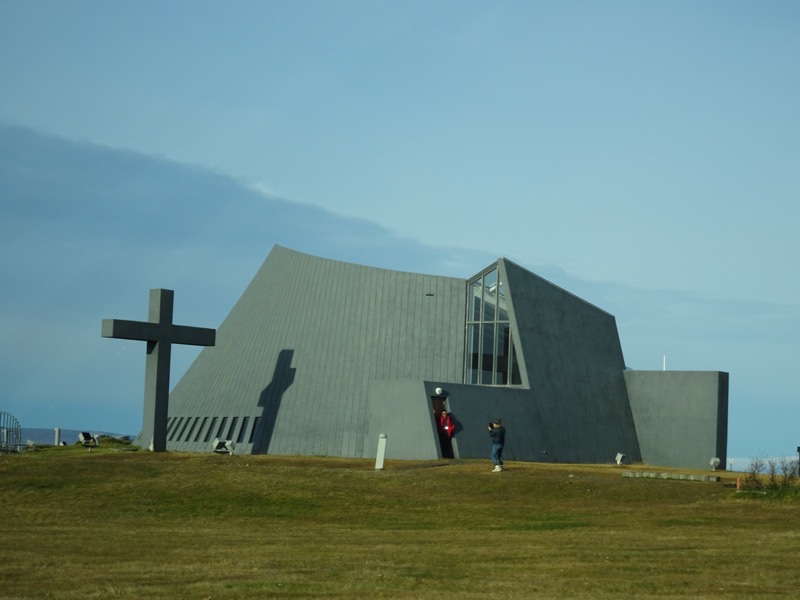
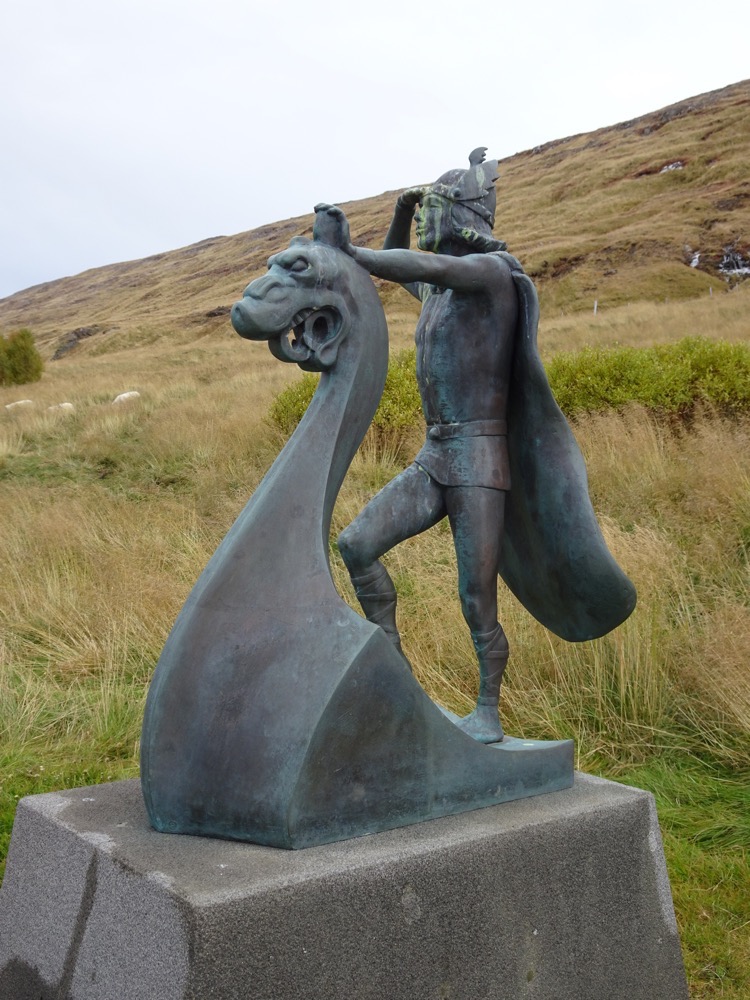 he open-air museum contains what is considered to be ‘the most accurate Viking period longhouse in Europe’ which has been established based on the findings of the nearby dig.
he open-air museum contains what is considered to be ‘the most accurate Viking period longhouse in Europe’ which has been established based on the findings of the nearby dig.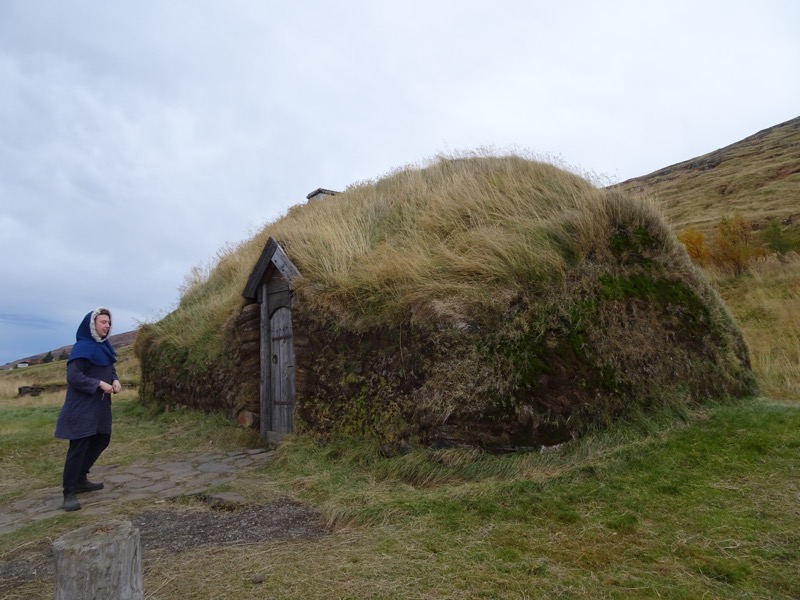 Now, all of this is very exciting to someone who is interested in medieval/dark ages history, right up until we find out that the longhouse is CLOSED for the winter. Sadly it only opens from May to end of August each year. However for the truly crazy (read: obsessed) you can arrange a private tour during the off season to see inside the longhouse and have a guide share their local knowledge of the building – which we dutifully arranged, at exorbitant expense to the management, because who knows if we will ever get back here. It was supposed to be a 30-45min ‘private guided tour’ of the museum, but I don’t think Óli, our garbed guide, was counting on all my questions… and we were still engaged in enthusiastic conversation with him nearly him two hours later.
Now, all of this is very exciting to someone who is interested in medieval/dark ages history, right up until we find out that the longhouse is CLOSED for the winter. Sadly it only opens from May to end of August each year. However for the truly crazy (read: obsessed) you can arrange a private tour during the off season to see inside the longhouse and have a guide share their local knowledge of the building – which we dutifully arranged, at exorbitant expense to the management, because who knows if we will ever get back here. It was supposed to be a 30-45min ‘private guided tour’ of the museum, but I don’t think Óli, our garbed guide, was counting on all my questions… and we were still engaged in enthusiastic conversation with him nearly him two hours later.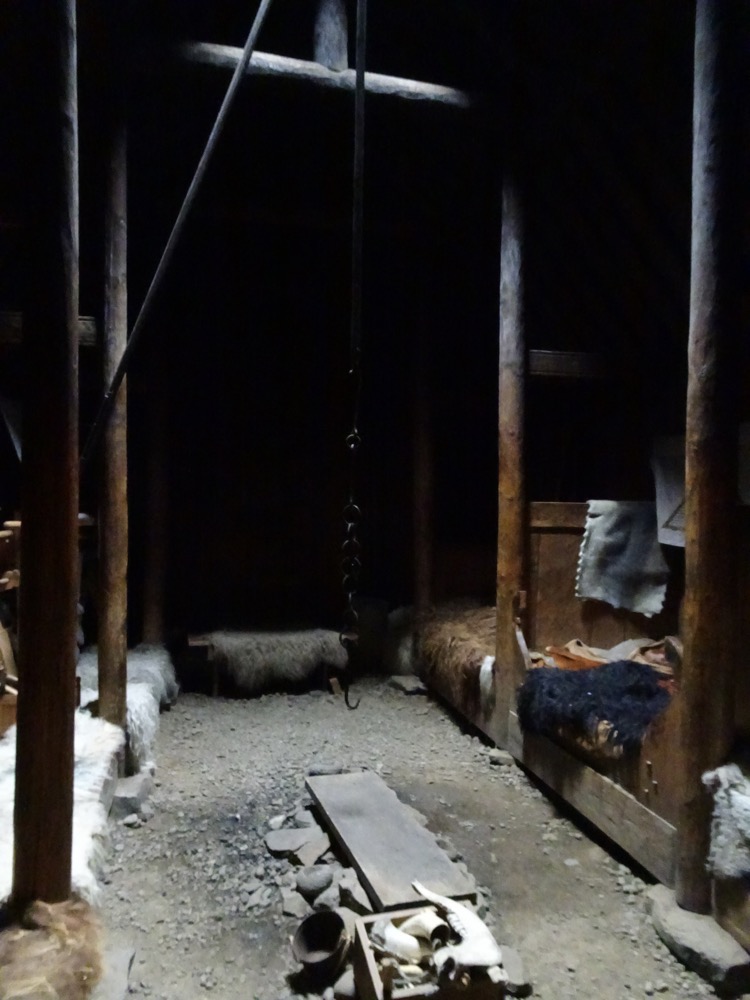 A box of old bones and horn that are replicas of children’s toys:
A box of old bones and horn that are replicas of children’s toys: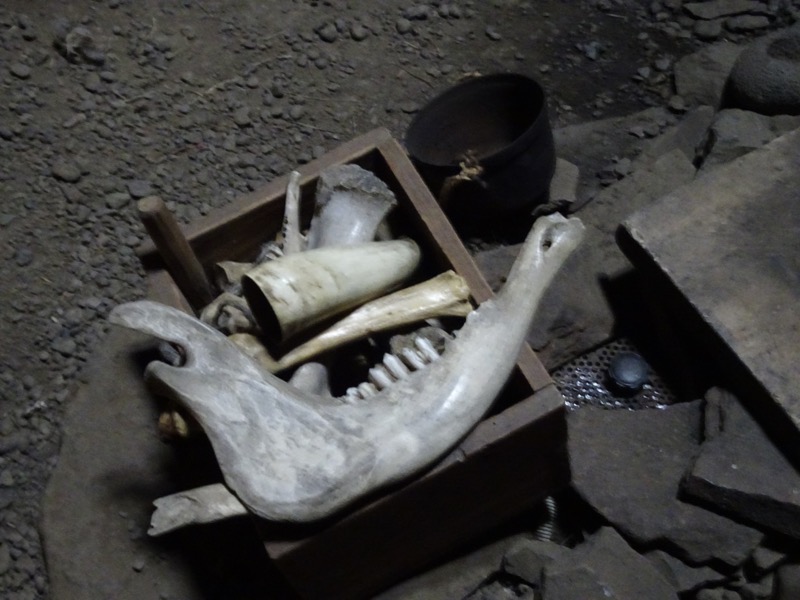
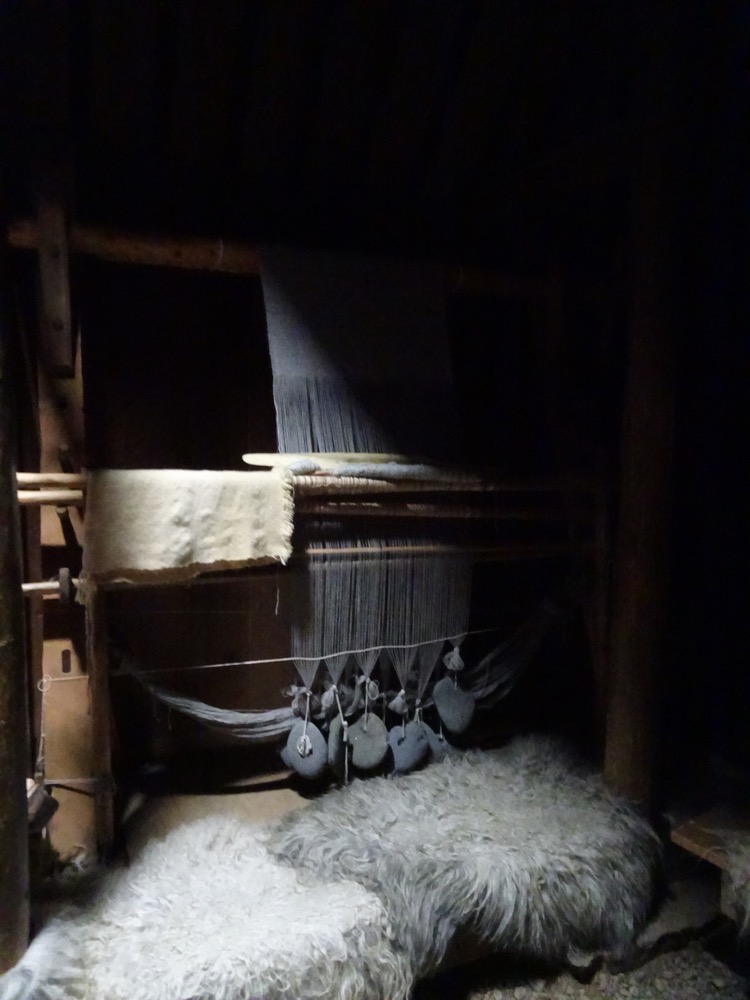 So – flash photos time so I could capture the details better in the low light environment. In the absence of tallow or bees wax candles, the only light sources these early settlement farmers had was from the ‘skylight/chimney screen’, opened doors (not ideal in winter) or from the fire.
So – flash photos time so I could capture the details better in the low light environment. In the absence of tallow or bees wax candles, the only light sources these early settlement farmers had was from the ‘skylight/chimney screen’, opened doors (not ideal in winter) or from the fire.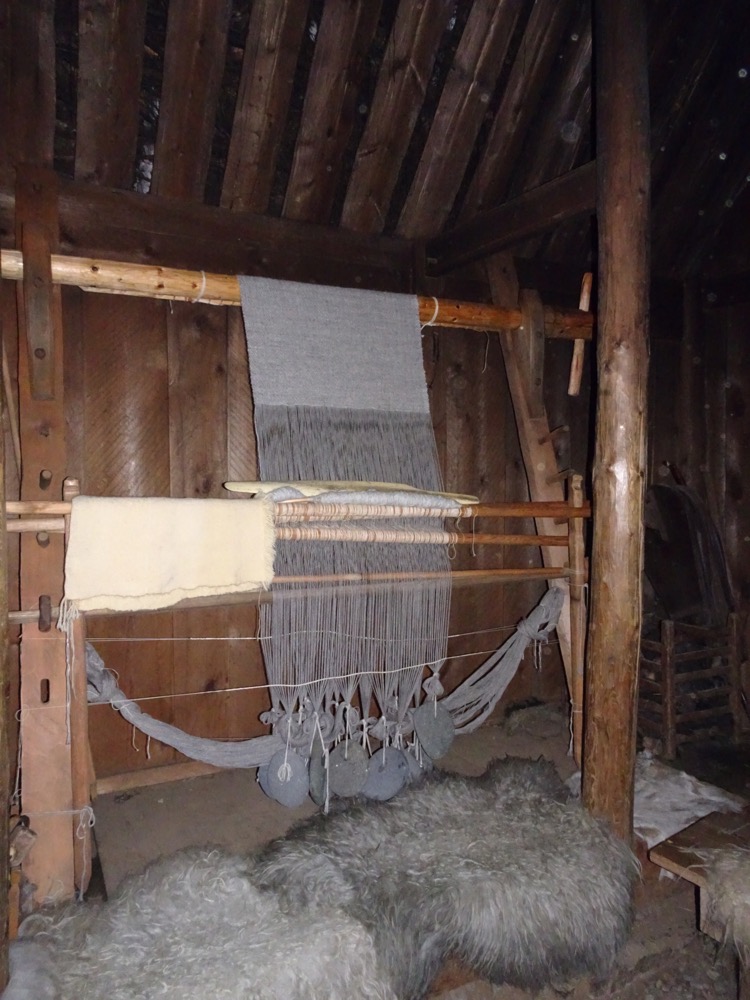 The most valuable thing a farmer who went viking owned was his sail. Sails were made from wool and would take the wool of about 2500 sheep and about 2-3 years of weaving to make one sail. Much of the weaving would have been done by female thralls. Oli tells us that a woman weaving for a whole day walking back and forth in front of the loom, would cover about 35kms in those few meters.
The most valuable thing a farmer who went viking owned was his sail. Sails were made from wool and would take the wool of about 2500 sheep and about 2-3 years of weaving to make one sail. Much of the weaving would have been done by female thralls. Oli tells us that a woman weaving for a whole day walking back and forth in front of the loom, would cover about 35kms in those few meters.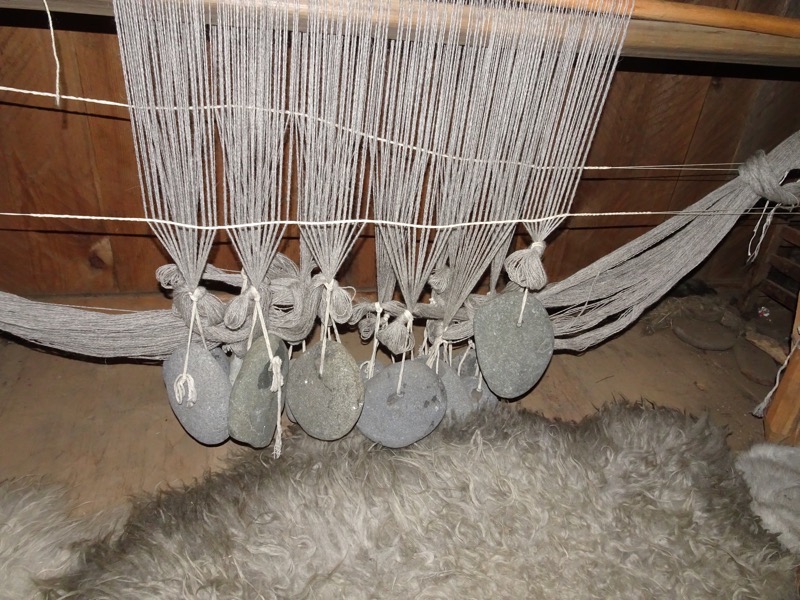 Sleeping spaces for the master and mistress of the house – the ‘bed’ is barely 1.4m wide which would have made for squishy sleeping quarters. The sleeping quarters for the ‘husband and wife’ of the home were usually located in the centre of the longhouse, closest to the fire, but up to 20-25 people would have lived in this space – the immediate family, children in the loft, extended family members of the husband and wife, and thralls would have slept on the ground.
Sleeping spaces for the master and mistress of the house – the ‘bed’ is barely 1.4m wide which would have made for squishy sleeping quarters. The sleeping quarters for the ‘husband and wife’ of the home were usually located in the centre of the longhouse, closest to the fire, but up to 20-25 people would have lived in this space – the immediate family, children in the loft, extended family members of the husband and wife, and thralls would have slept on the ground.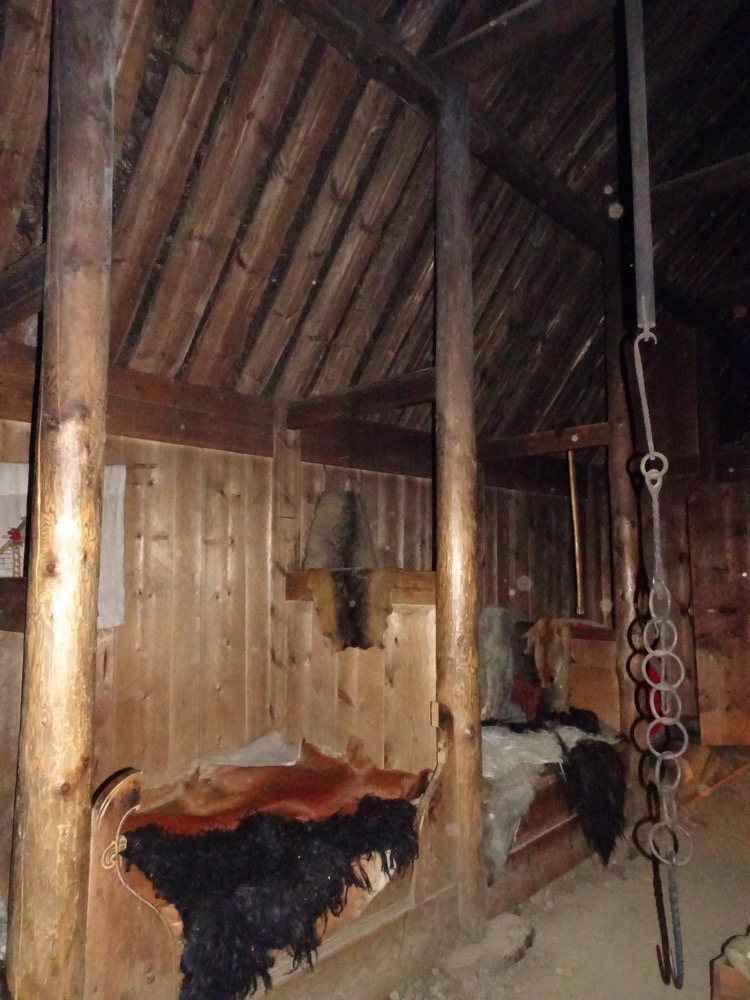
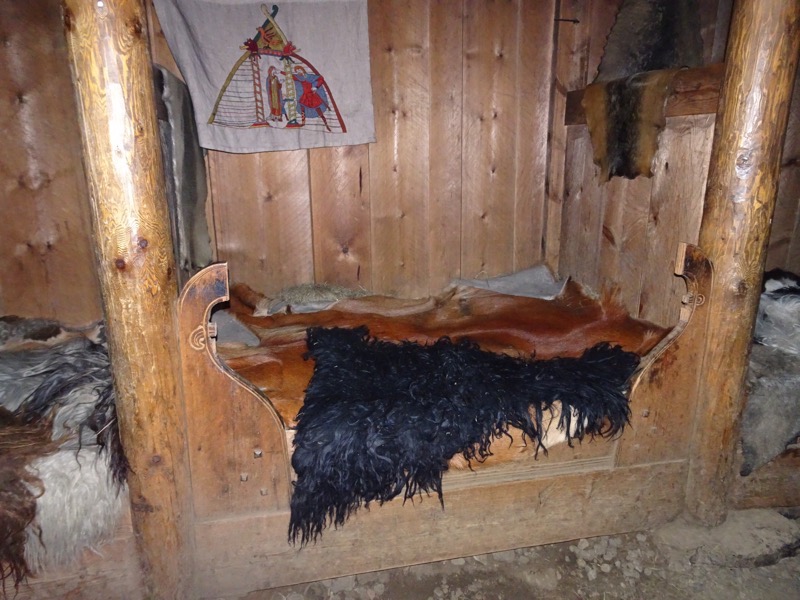 The carvings on the ‘bed head’ were roughly designed on the Osberg bed and used to keep bad ghosts away – something a murderous arsehole like Eiríkr probably desperately needed.
The carvings on the ‘bed head’ were roughly designed on the Osberg bed and used to keep bad ghosts away – something a murderous arsehole like Eiríkr probably desperately needed.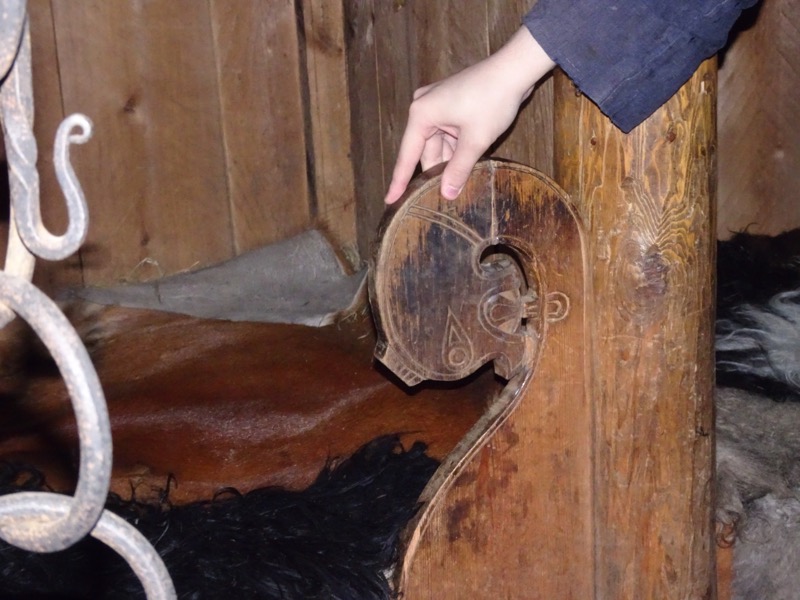 Replica casket/trunk to store small valuables inside the house and to transport same.
Replica casket/trunk to store small valuables inside the house and to transport same.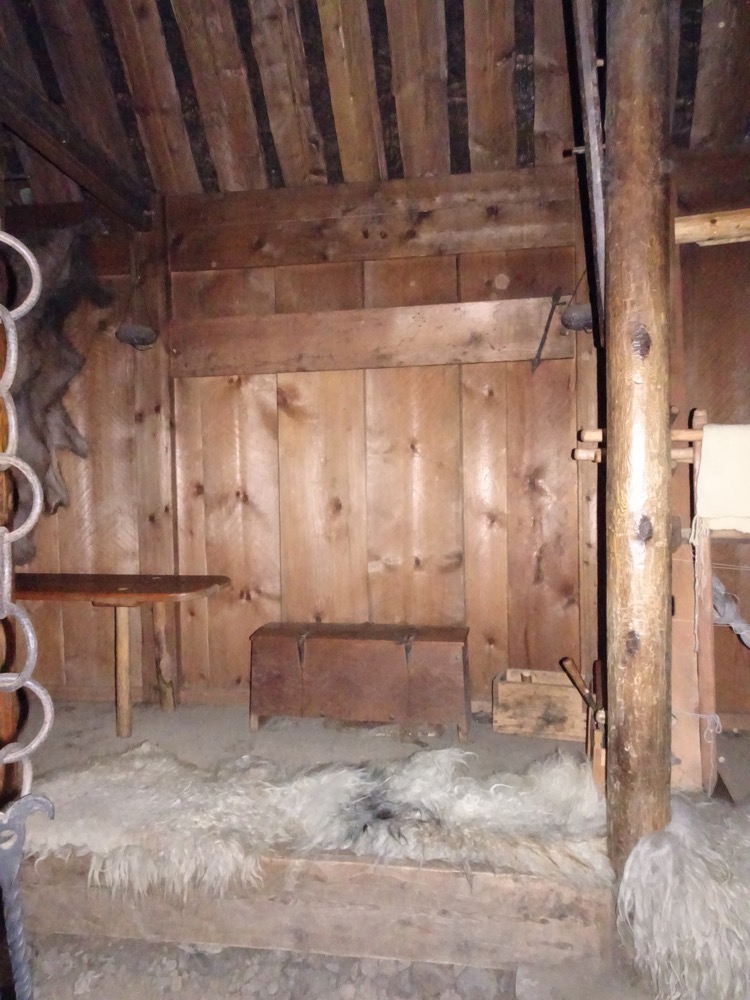
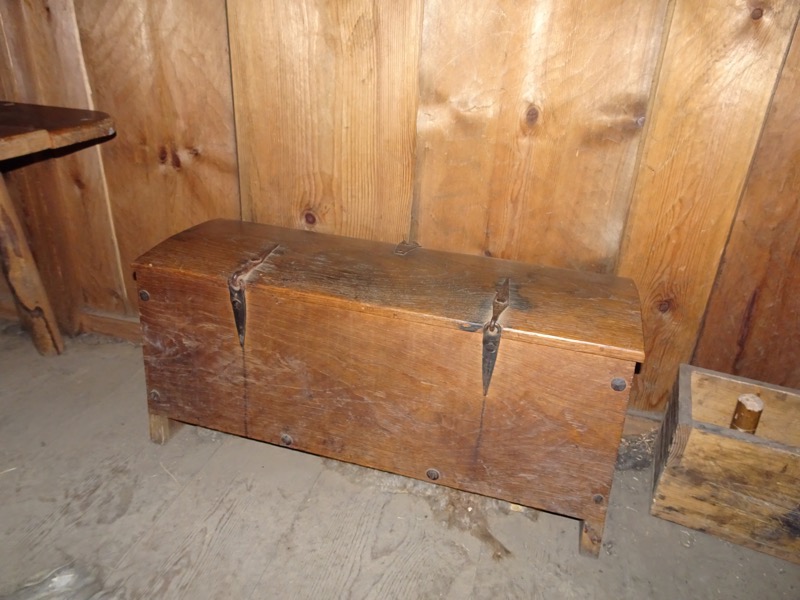 The back door that leads to the pantry – all made of driftwood. Most of the driftwood that appears in Iceland originates in Siberia of all places. It has always been highly valued as forest timber is thin to non-existent in Iceland after half a millennia of over harvesting for firewood.
The back door that leads to the pantry – all made of driftwood. Most of the driftwood that appears in Iceland originates in Siberia of all places. It has always been highly valued as forest timber is thin to non-existent in Iceland after half a millennia of over harvesting for firewood.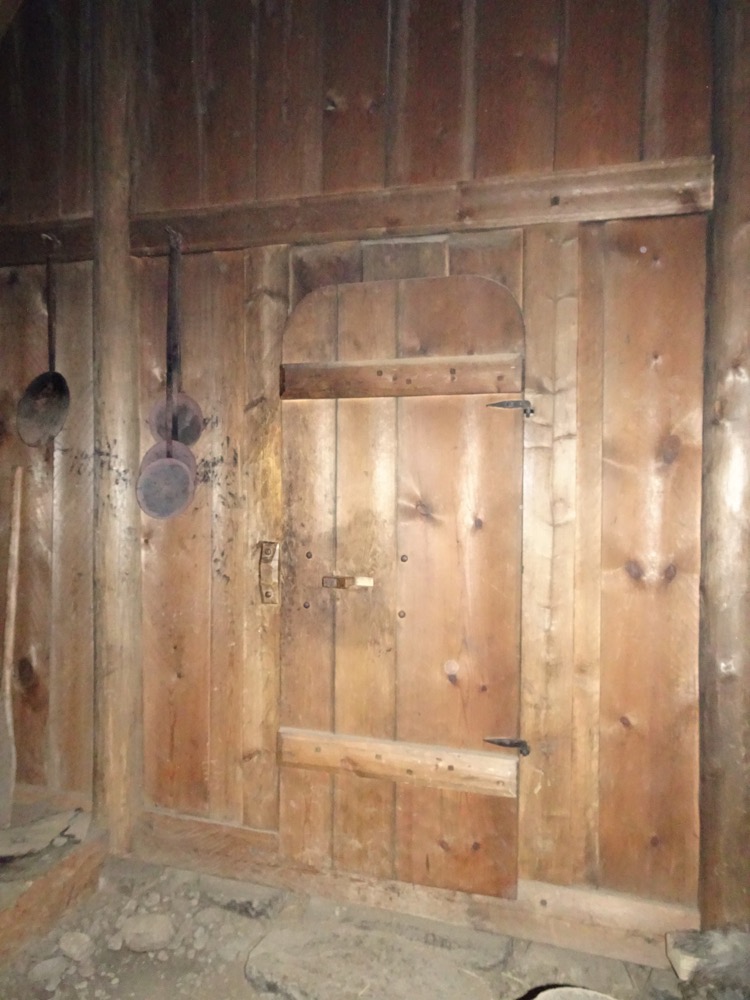 Tool storage near the pantry entrance.
Tool storage near the pantry entrance.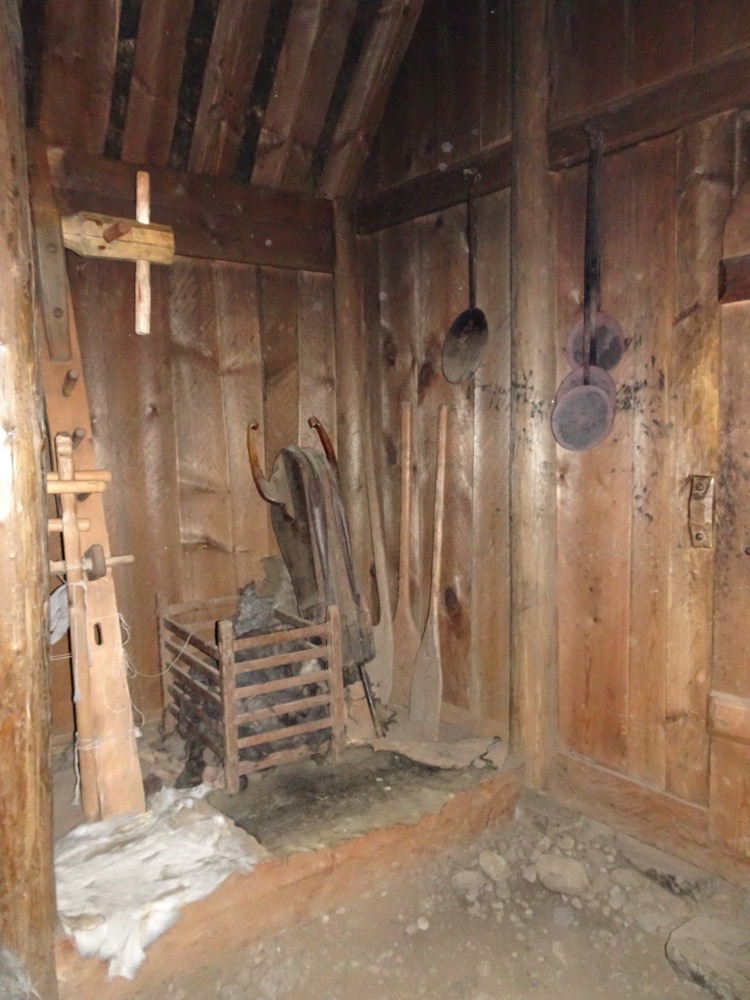 The view of the ceiling up to the skjár,
The view of the ceiling up to the skjár,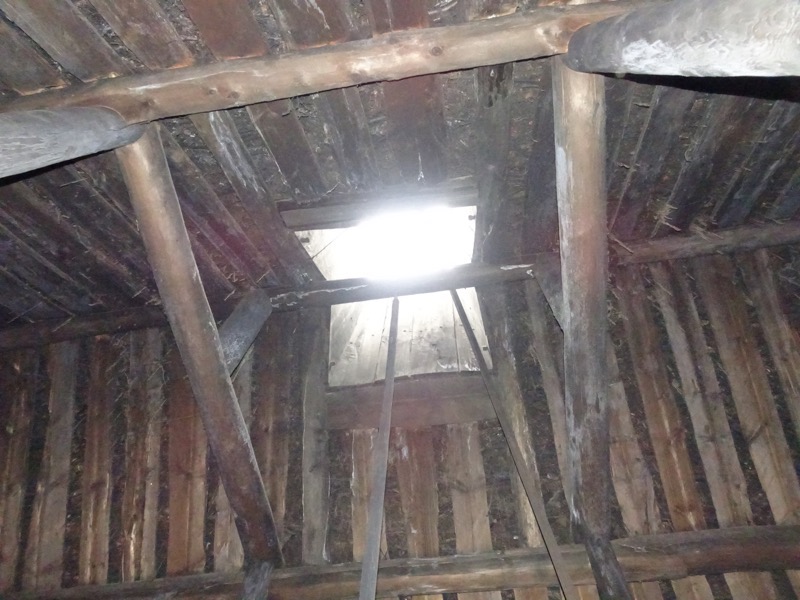 Rafters – in the bottom left hand corner is a loft above the entrance vestibule that was most likely used as sleeping quarters for children.
Rafters – in the bottom left hand corner is a loft above the entrance vestibule that was most likely used as sleeping quarters for children.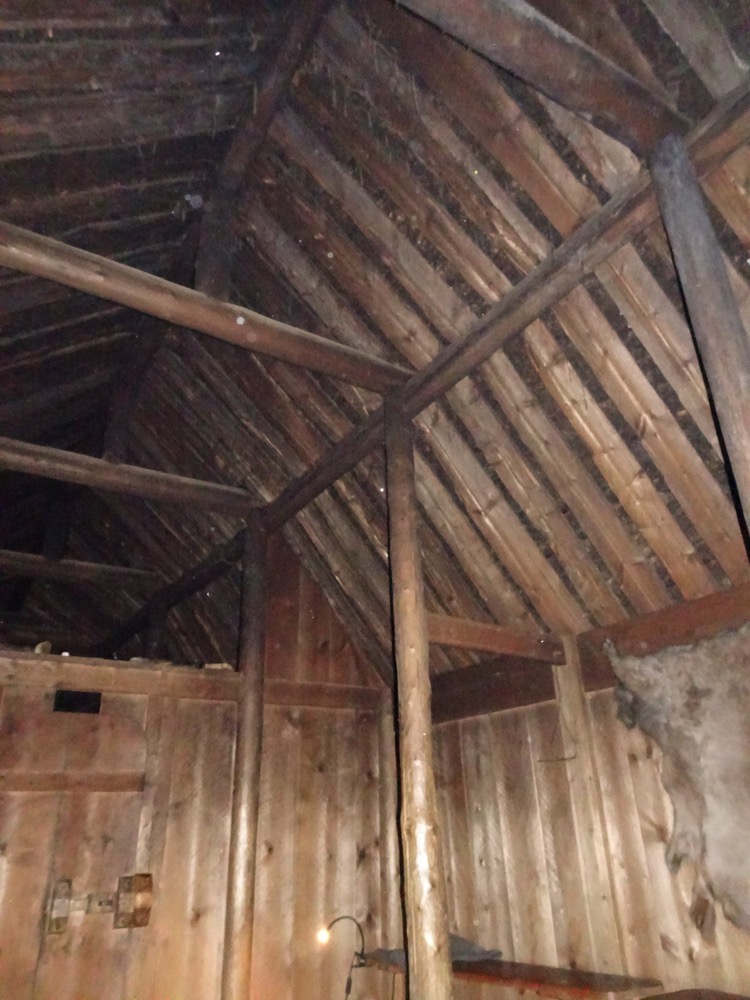 View down the longhouse from the main entrance doorway:
View down the longhouse from the main entrance doorway: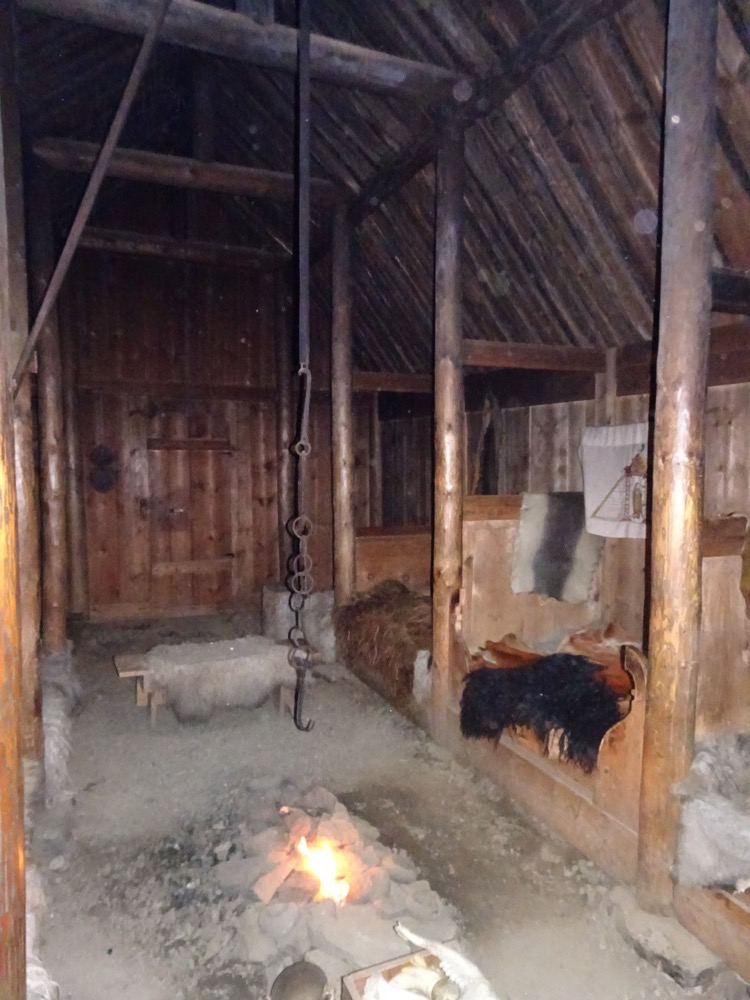 Lock/latch crafted on the main door –
Lock/latch crafted on the main door – 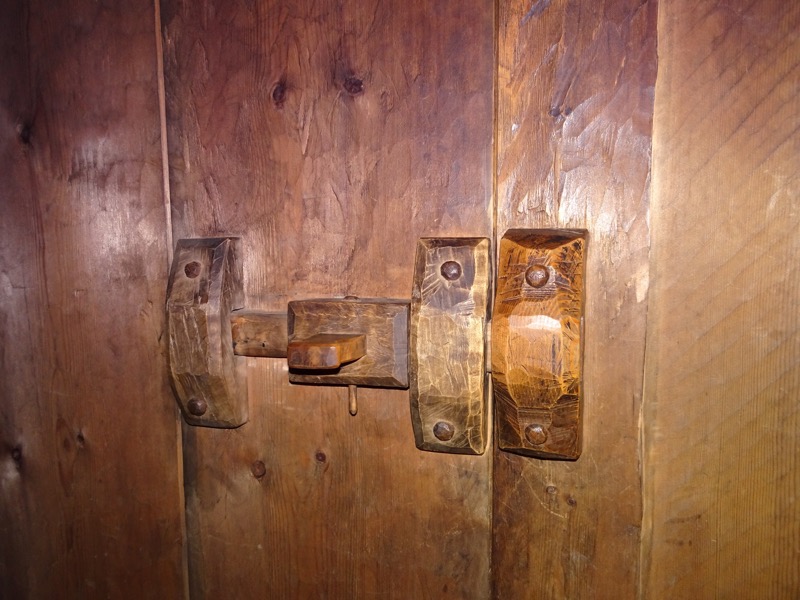
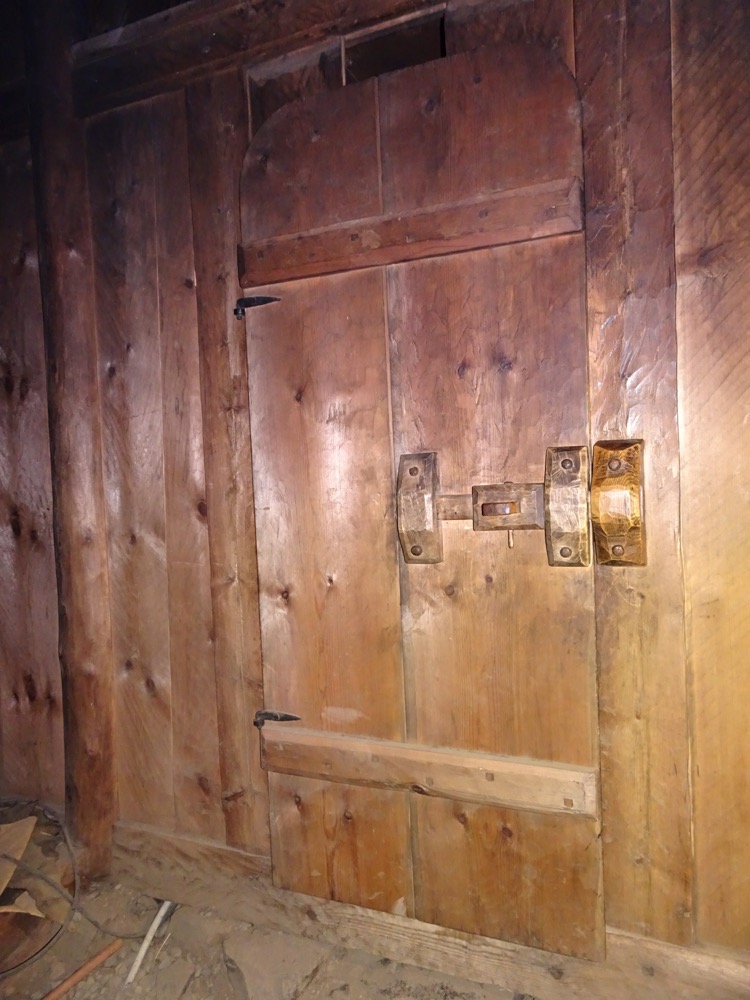 The children’s loft:
The children’s loft: 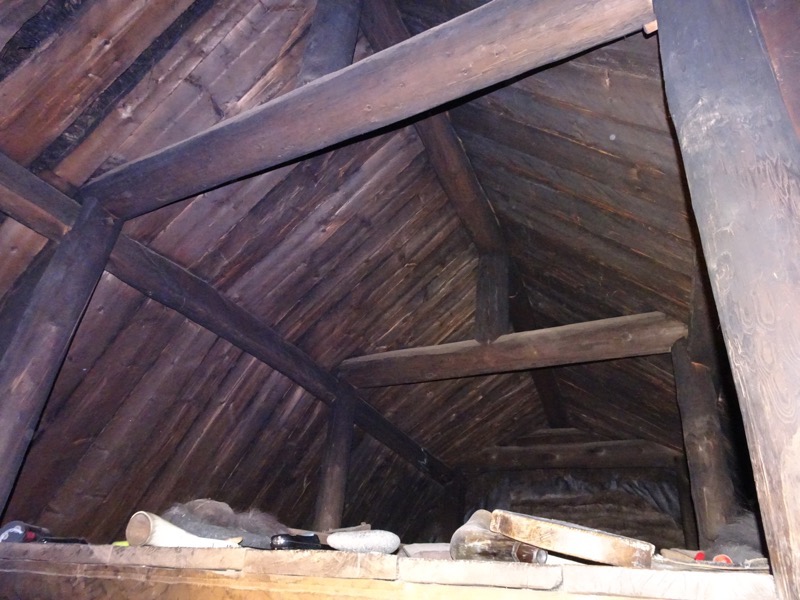 yale for scale:
yale for scale: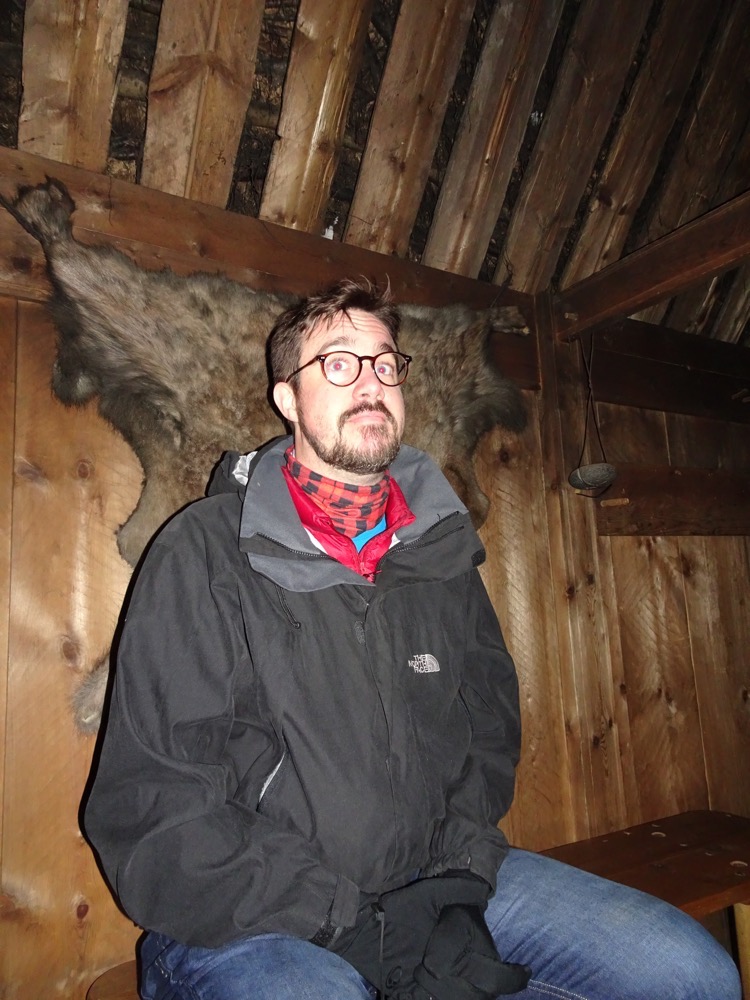 Flatirons used for making Viking flat bread:
Flatirons used for making Viking flat bread: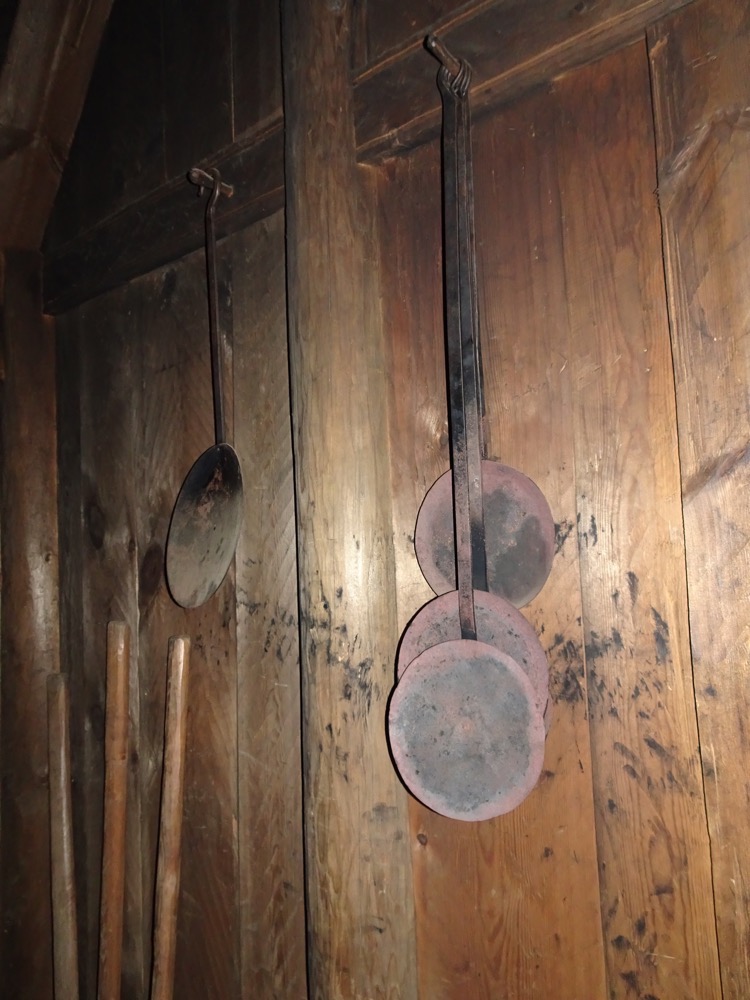 Some of the period style tools that were created to build, and to be used in, the long house:
Some of the period style tools that were created to build, and to be used in, the long house: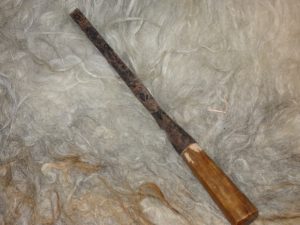
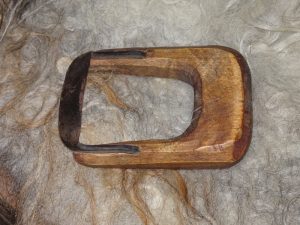
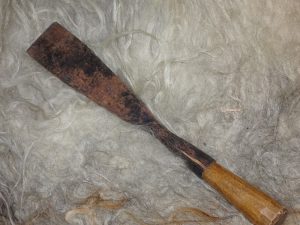
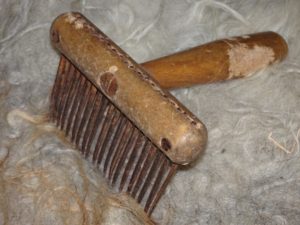

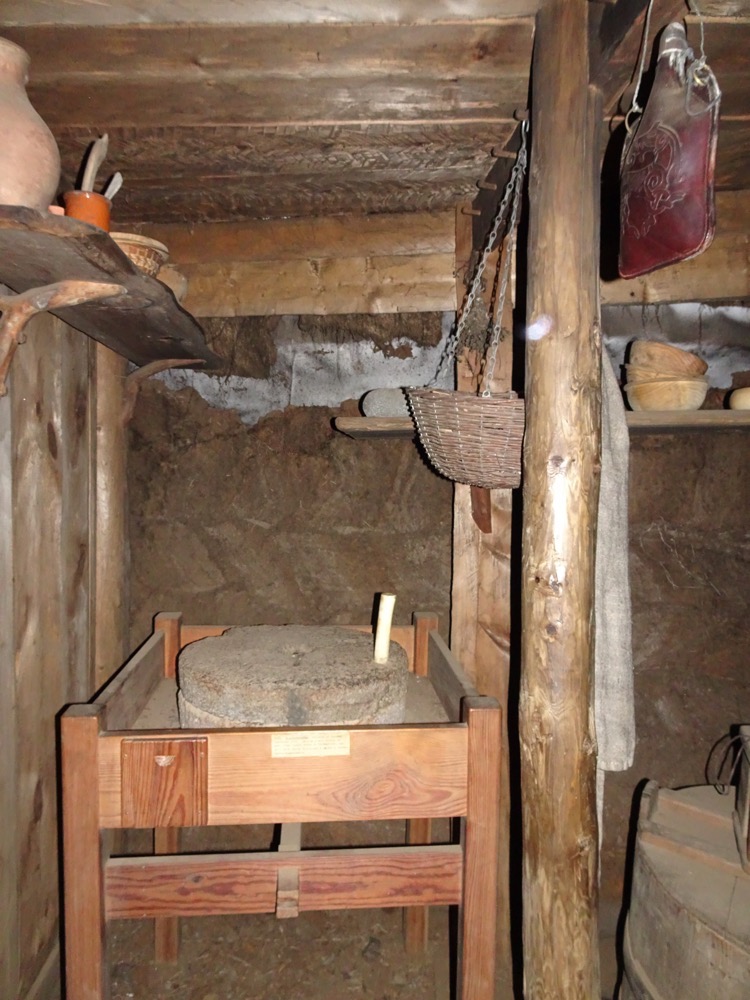 A barrel used to make a sour yoghurt style dairy product – able to be kept for up to 8 months.
A barrel used to make a sour yoghurt style dairy product – able to be kept for up to 8 months.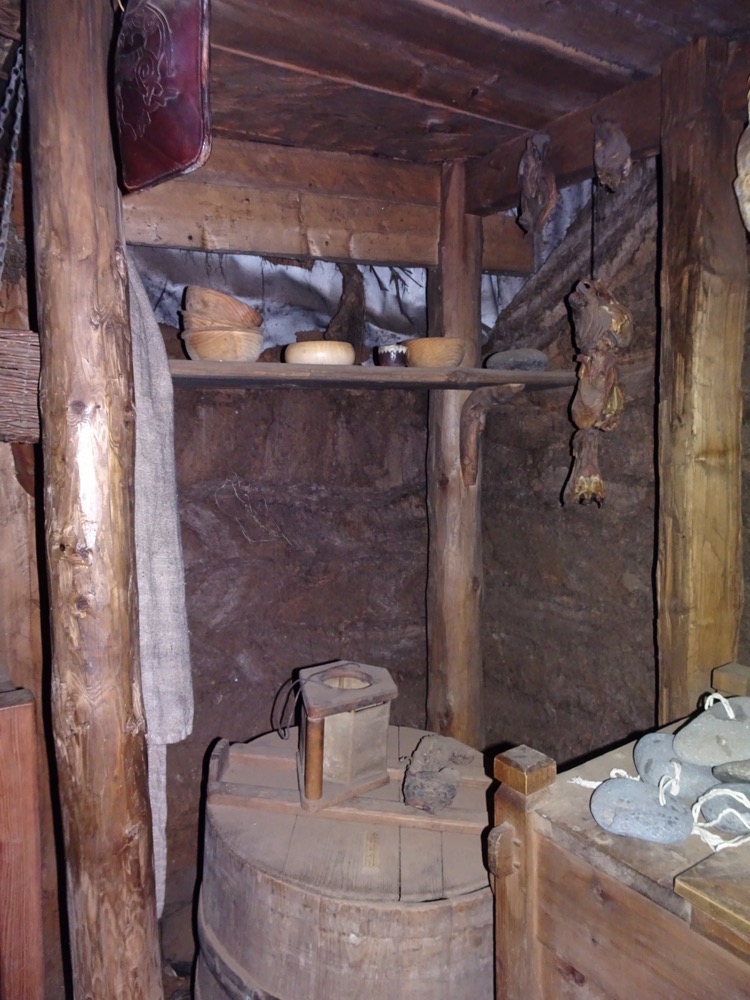 Mead flask:
Mead flask: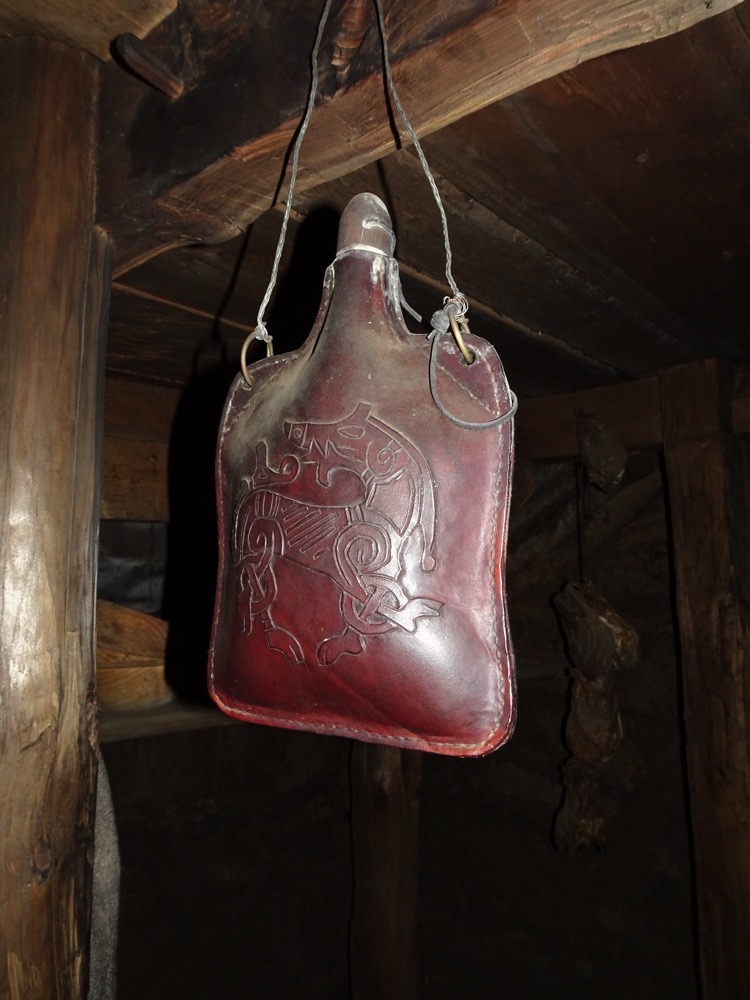 Drying space for fish and meats… preserving meats was an important part of subsistence living to survive the harsh winters.
Drying space for fish and meats… preserving meats was an important part of subsistence living to survive the harsh winters.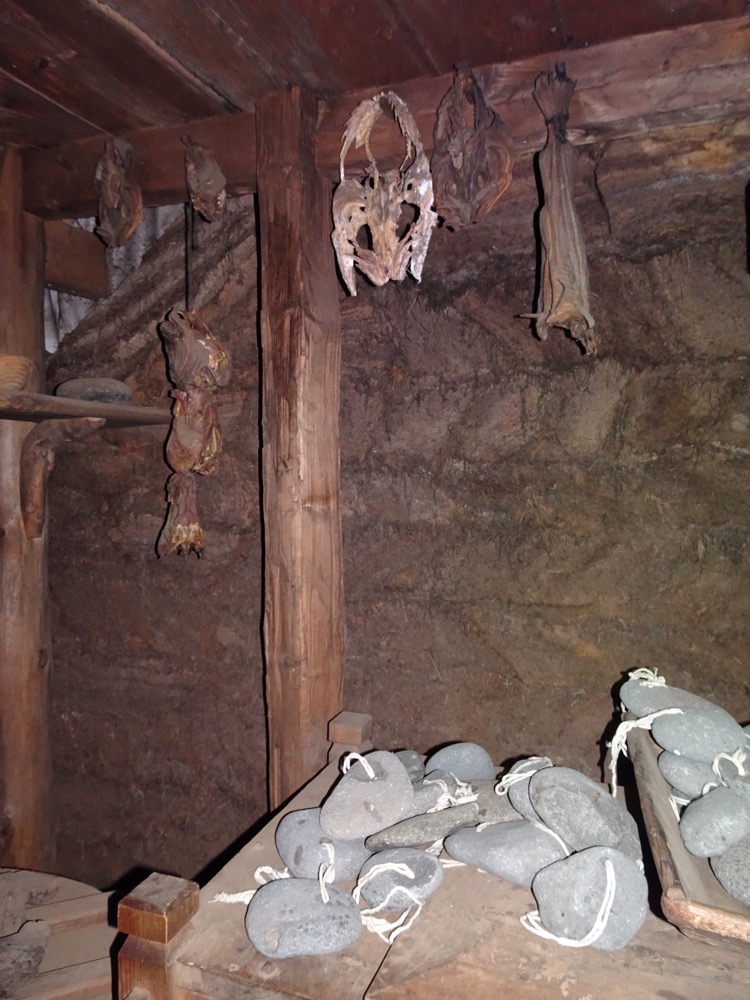 A lantern with carry handle:
A lantern with carry handle: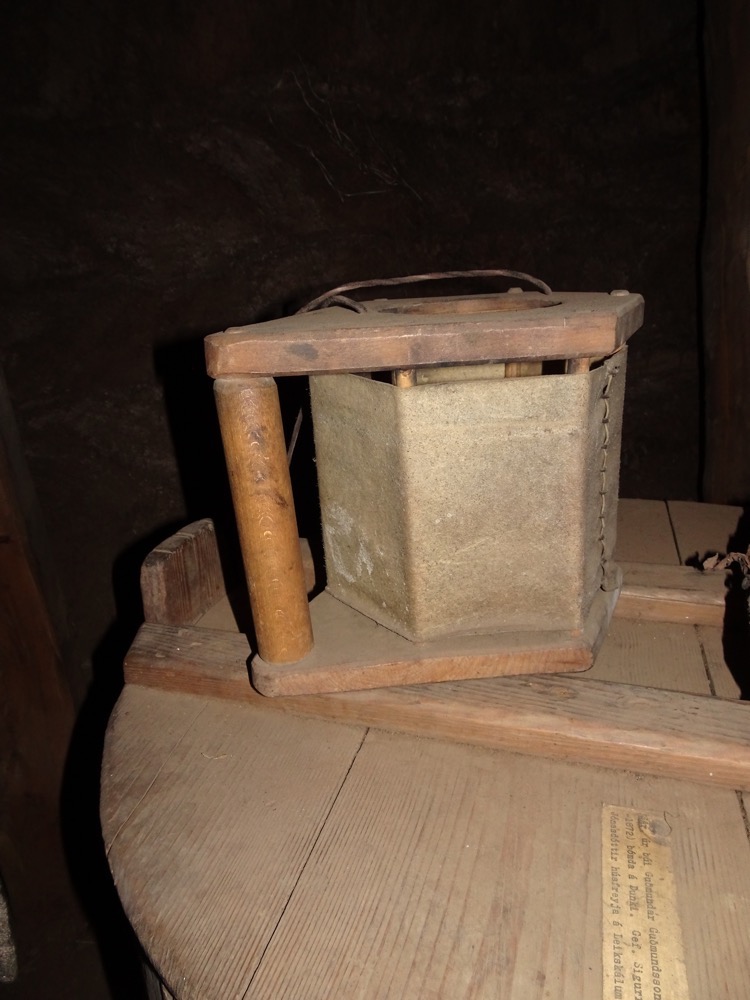
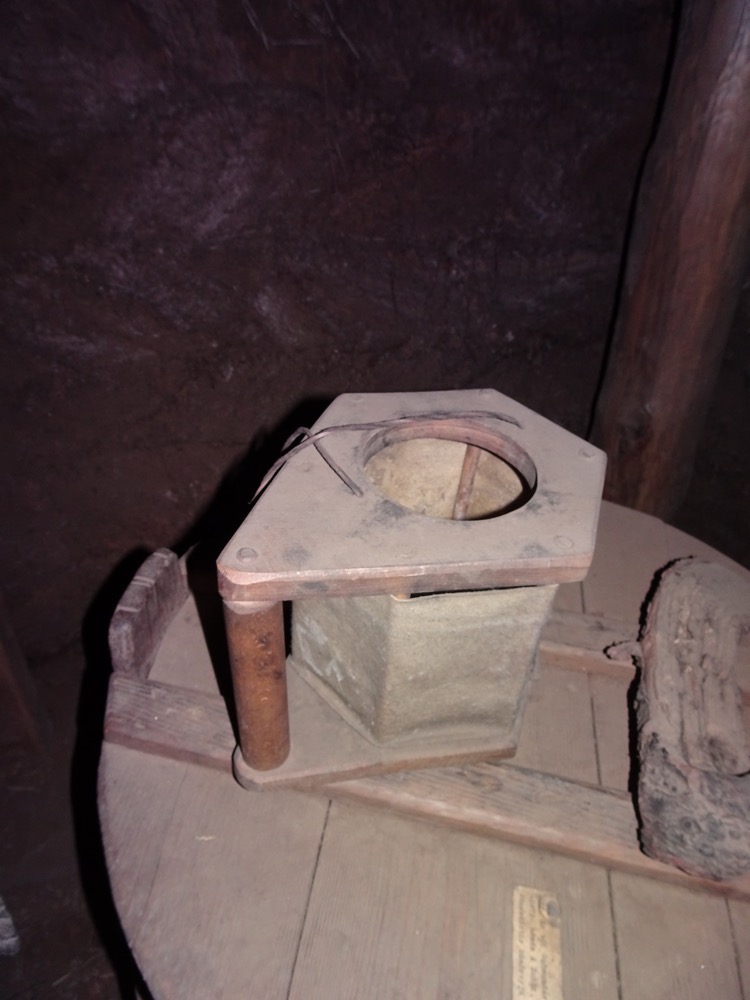 Crockery and wooden eating items:
Crockery and wooden eating items: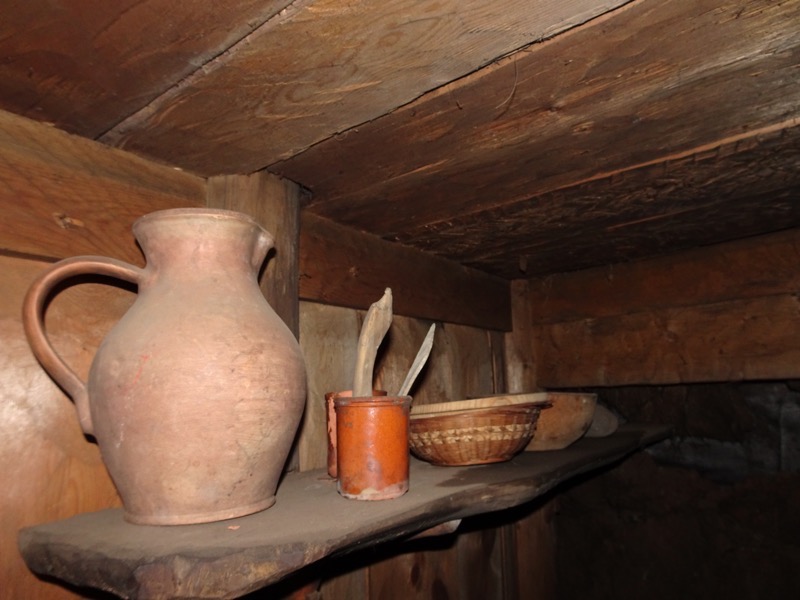
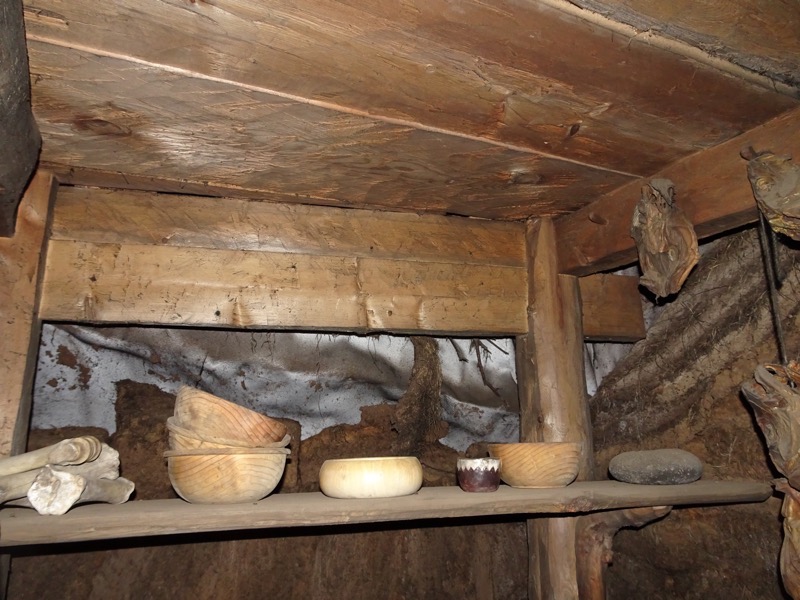
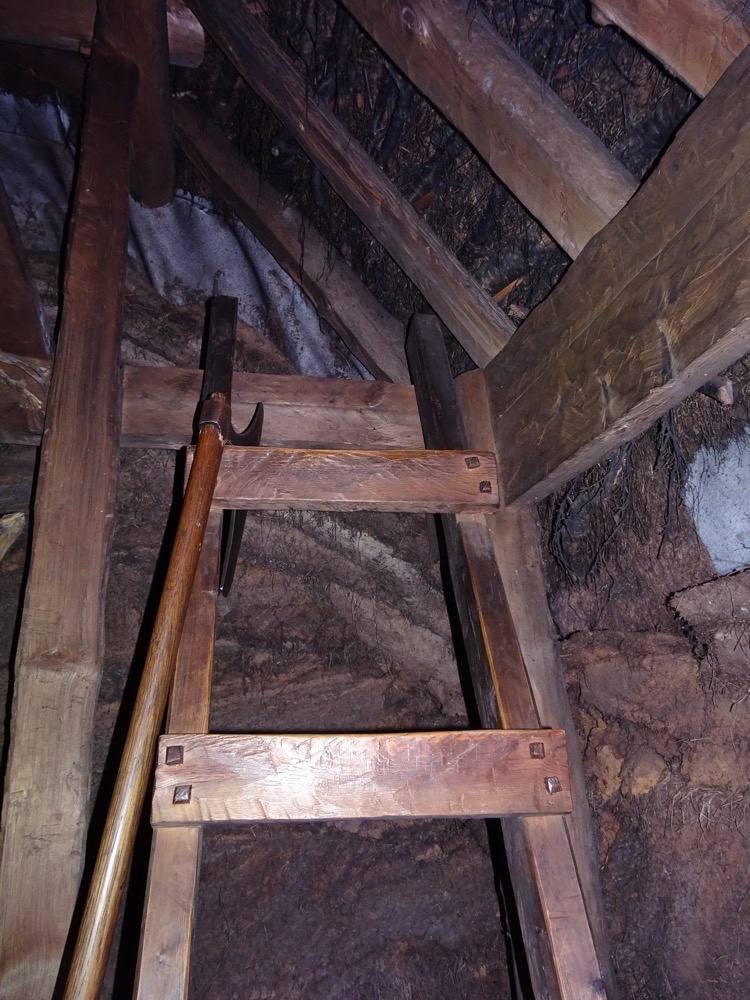 The walls of the pantry are not timber lined – it is designed to be as cold as possible and for people to be in there as little as possible.
The walls of the pantry are not timber lined – it is designed to be as cold as possible and for people to be in there as little as possible.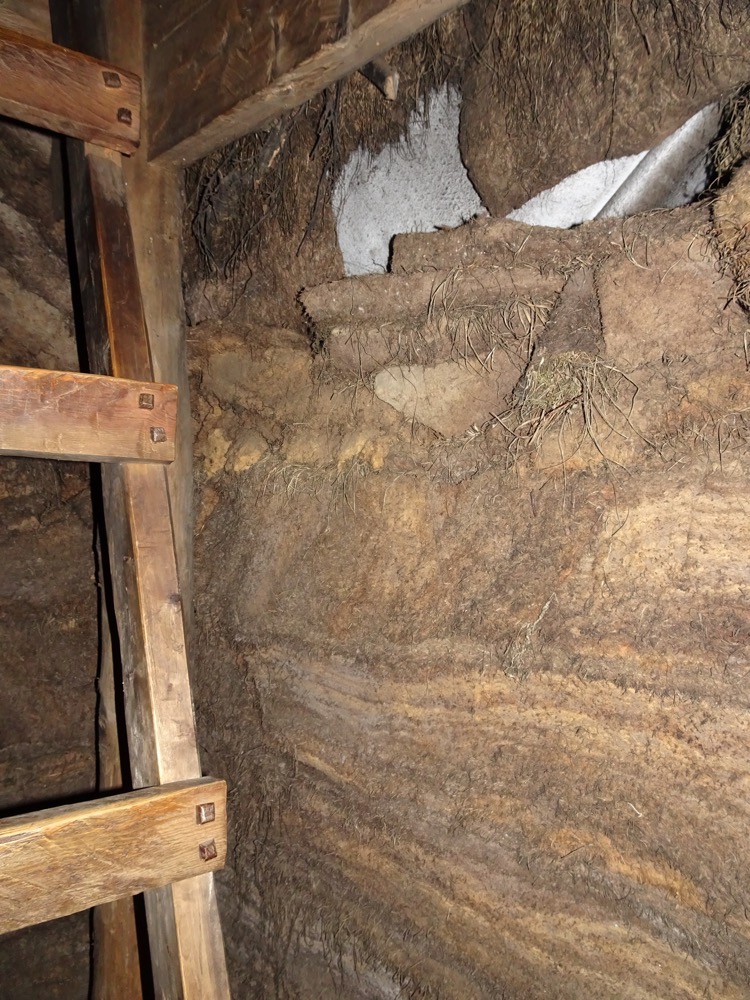 The back door enters directly into the pantry:
The back door enters directly into the pantry: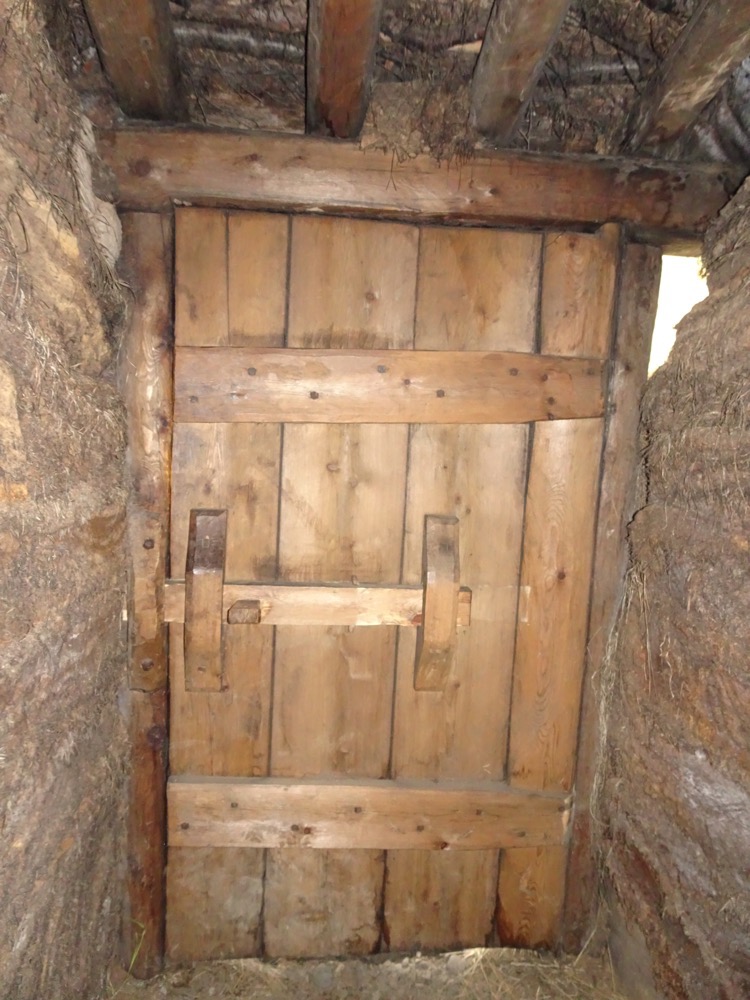
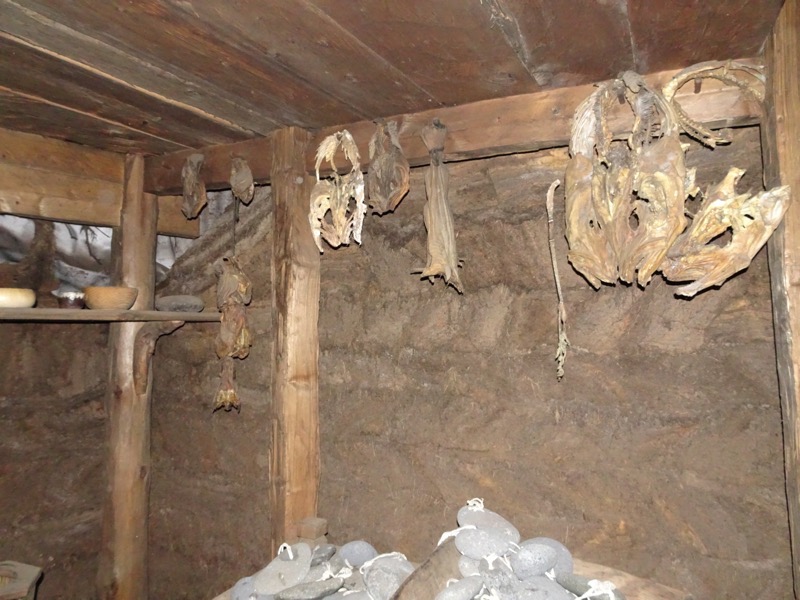
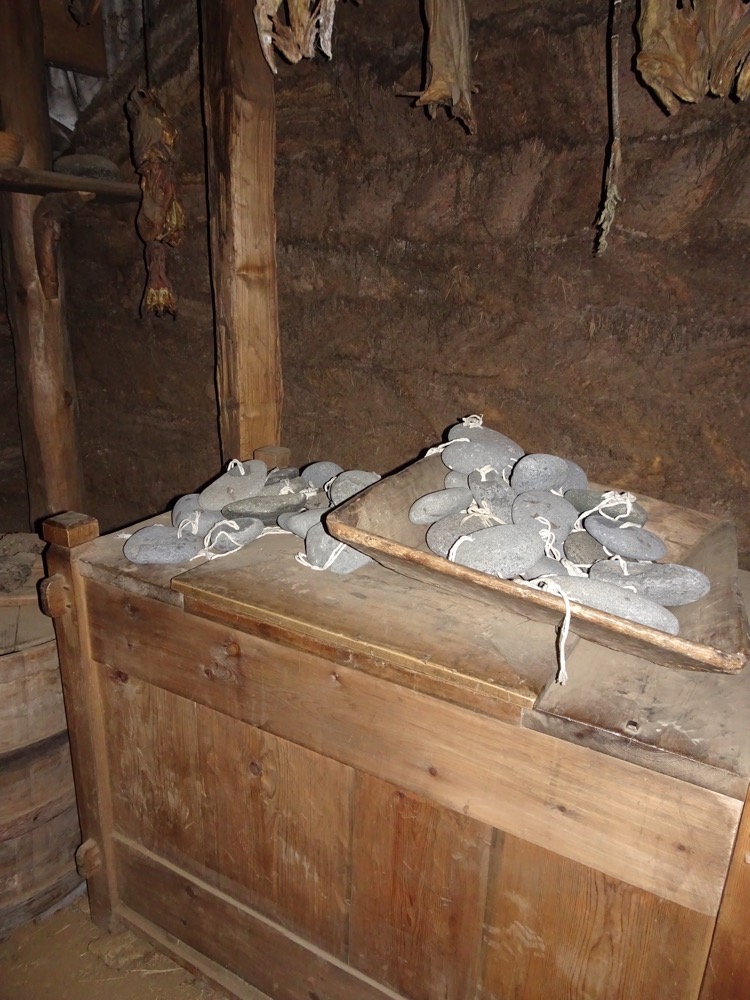 The gabled roof of the pantry:
The gabled roof of the pantry: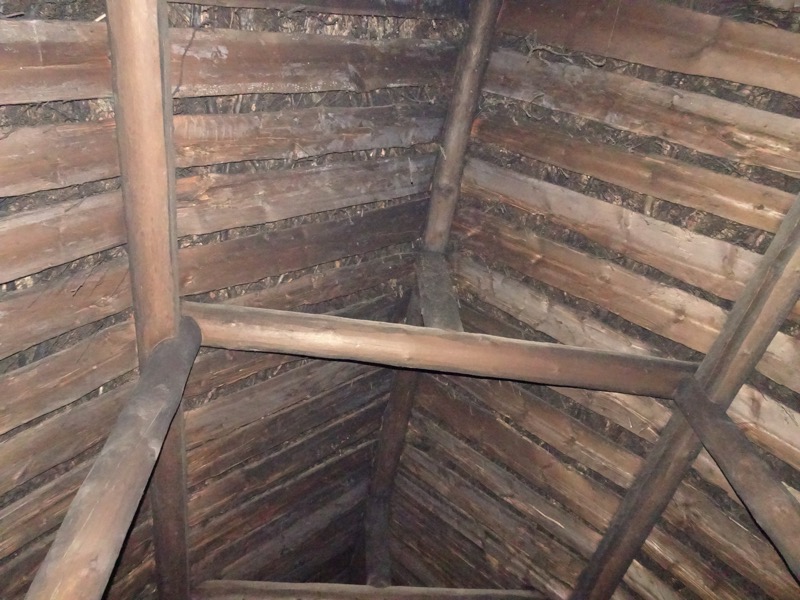 Back in the main section of the long house – additional warmth came from skins and furs.
Back in the main section of the long house – additional warmth came from skins and furs.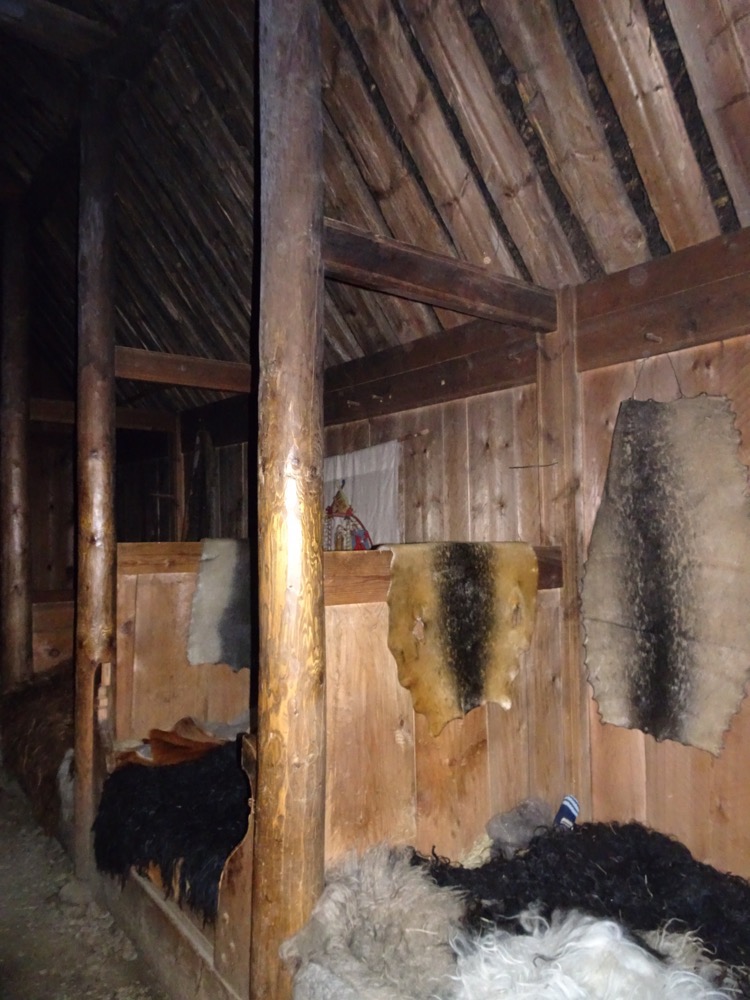 The entrance space at the main entry vestibule was possibly used as guest quarters when required, and likely used as storage or even animal stabling if required.
The entrance space at the main entry vestibule was possibly used as guest quarters when required, and likely used as storage or even animal stabling if required.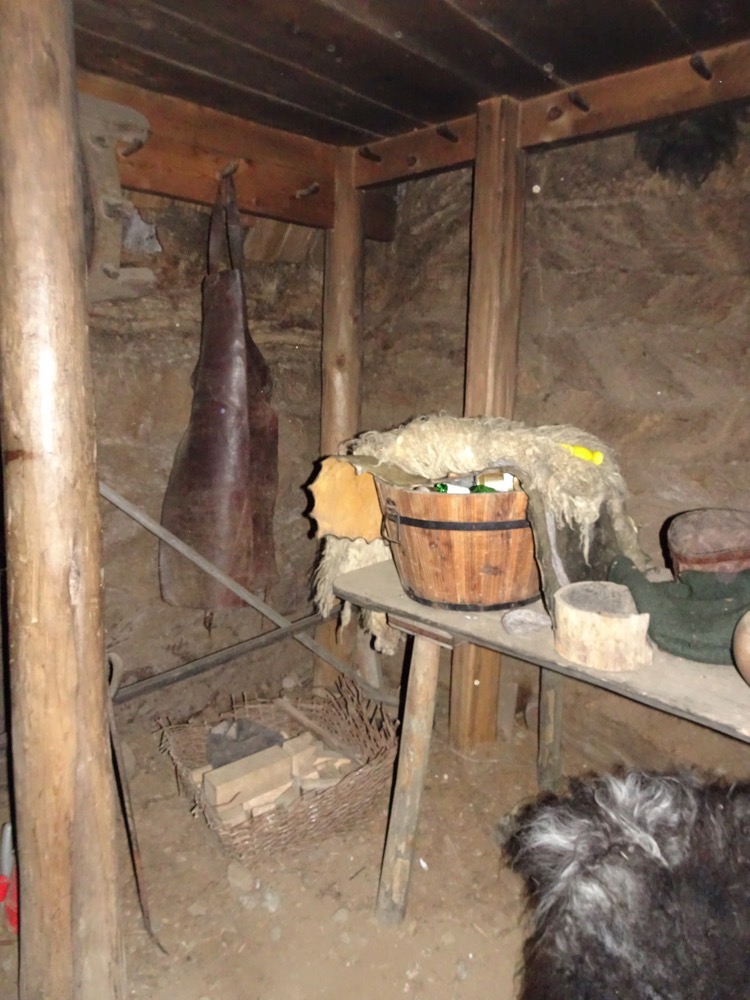
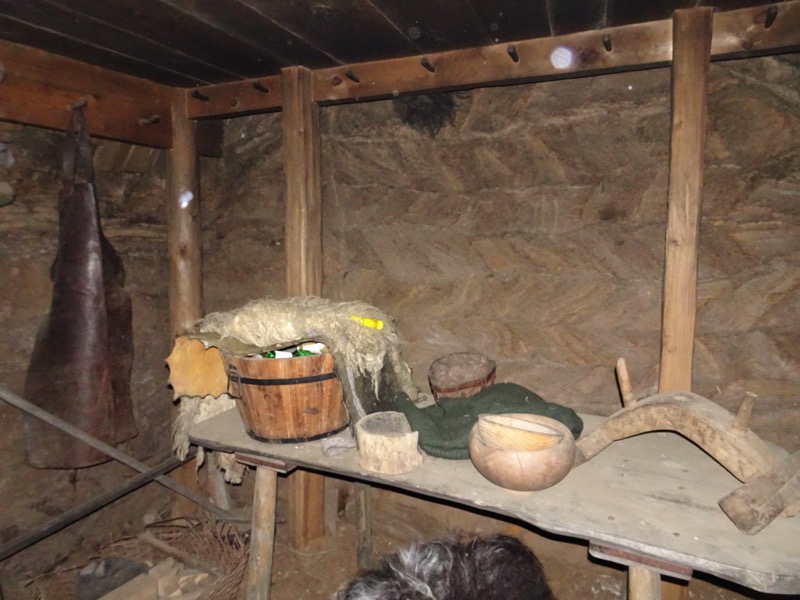
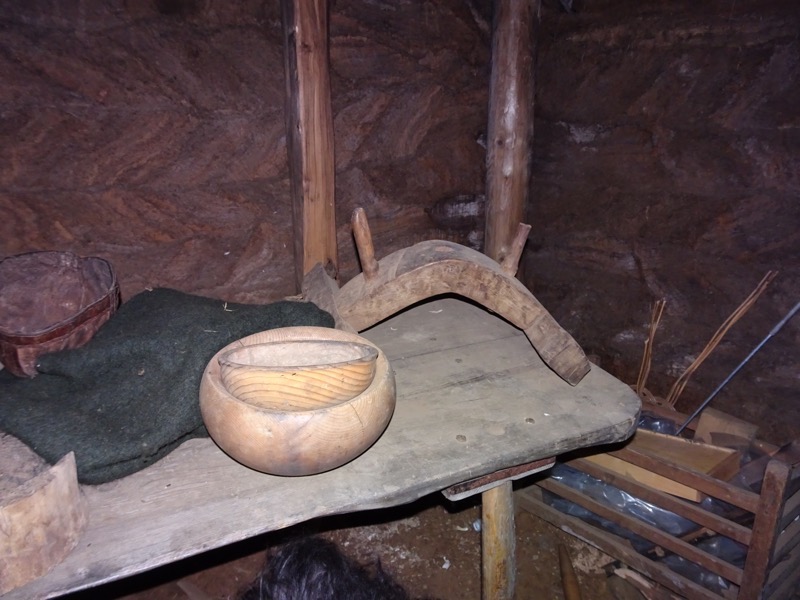 As we had taken up way more of Oli’s time than planned, we were all quite surprised to step out of the longhouse and find the blue skies were gone and it was snowing.
As we had taken up way more of Oli’s time than planned, we were all quite surprised to step out of the longhouse and find the blue skies were gone and it was snowing.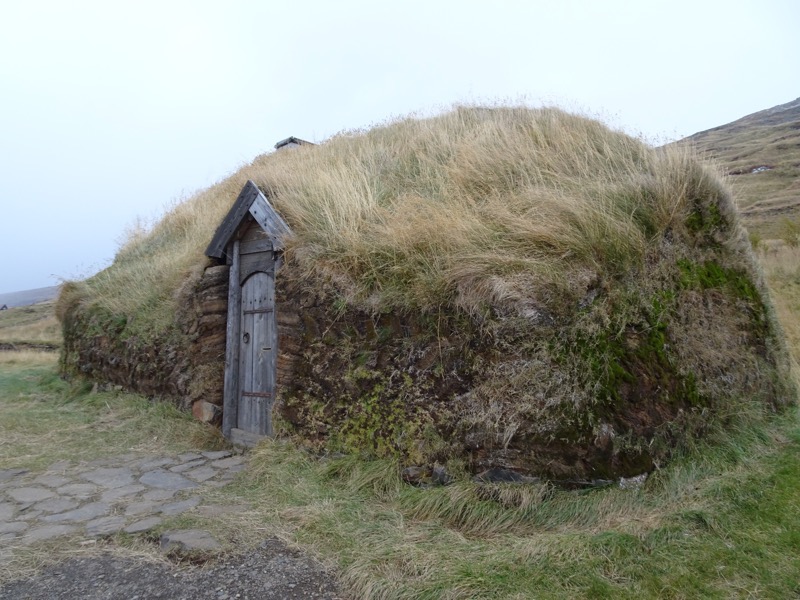
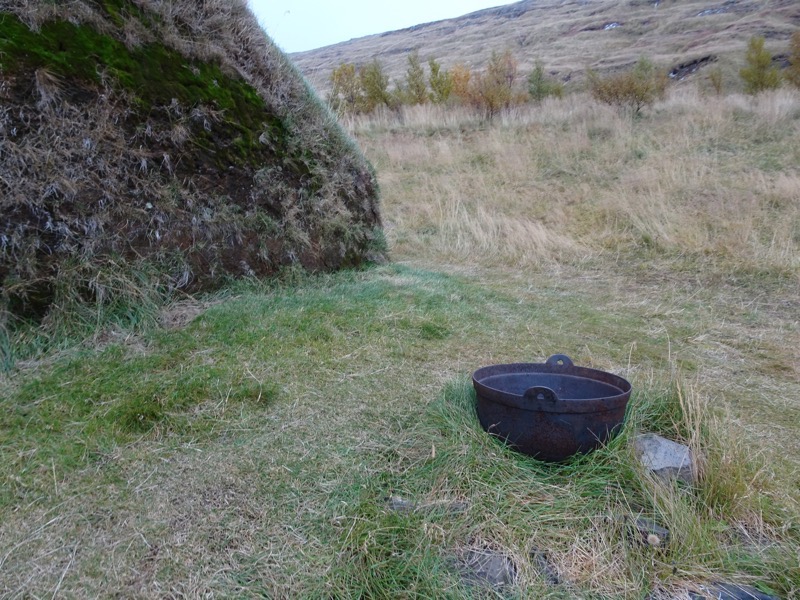 The back of the longhouse:
The back of the longhouse: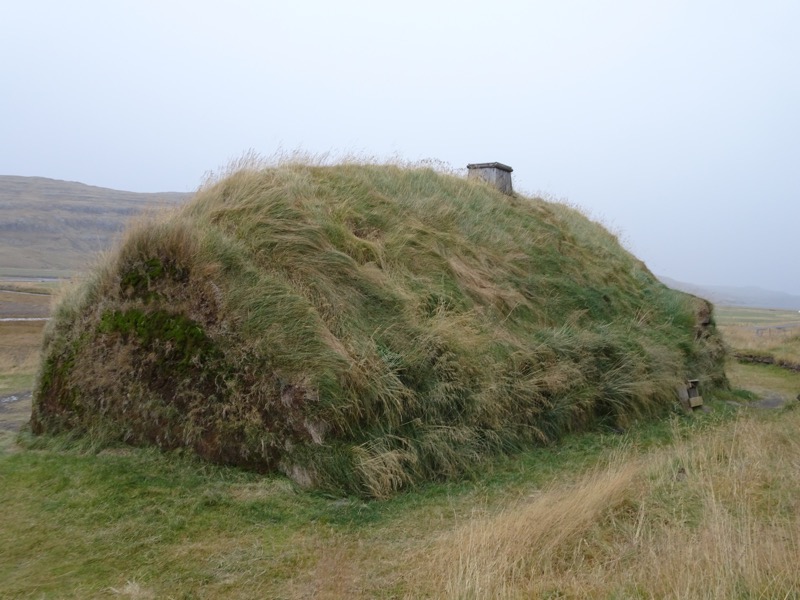
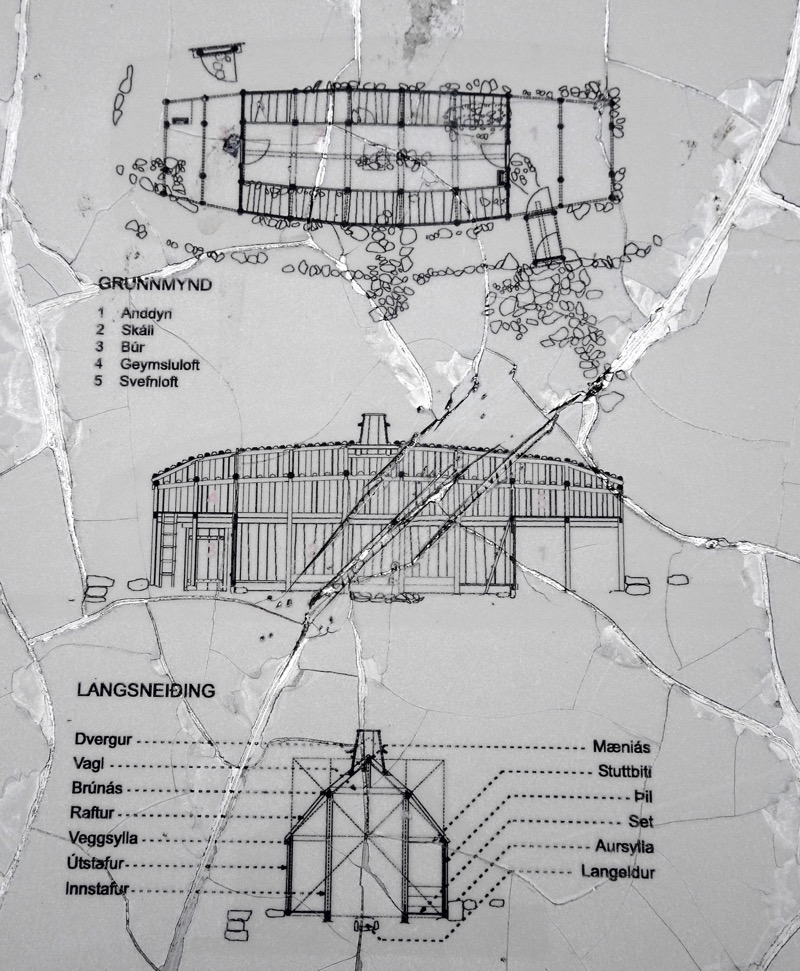
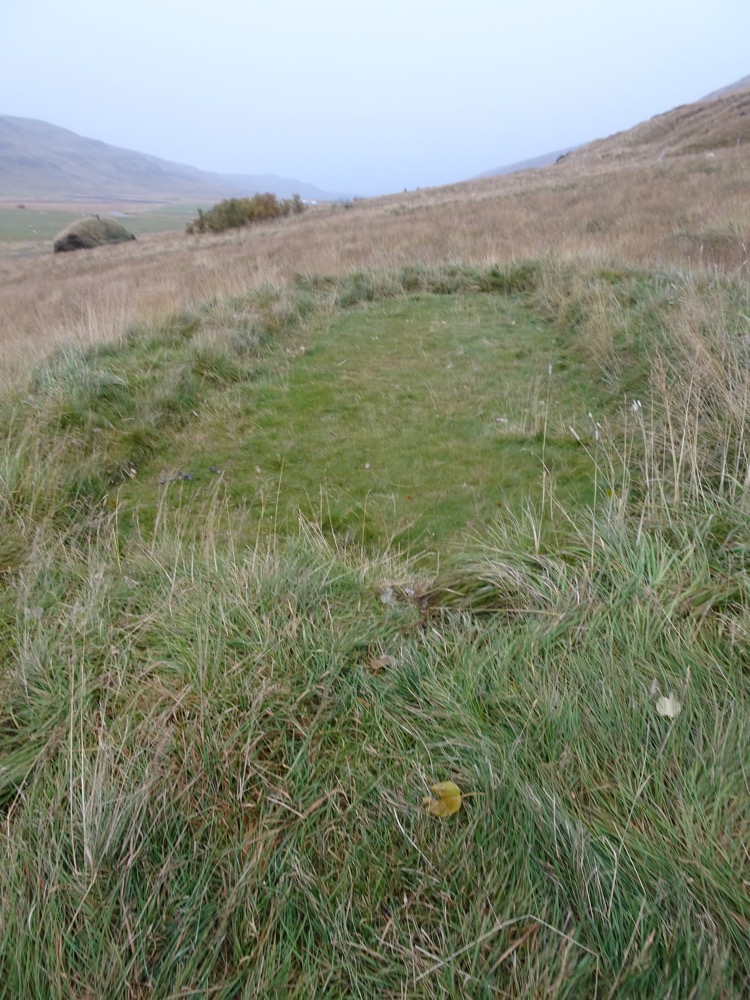 Again the diagram of what the archeological dig had found, and a transcript of the description of the longhouse:
Again the diagram of what the archeological dig had found, and a transcript of the description of the longhouse: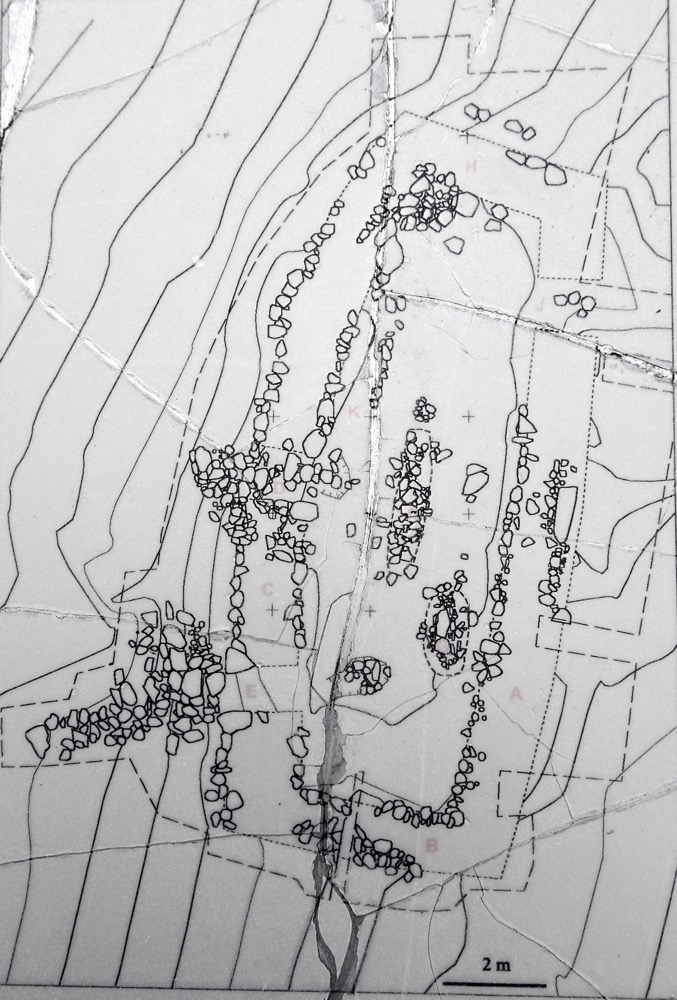
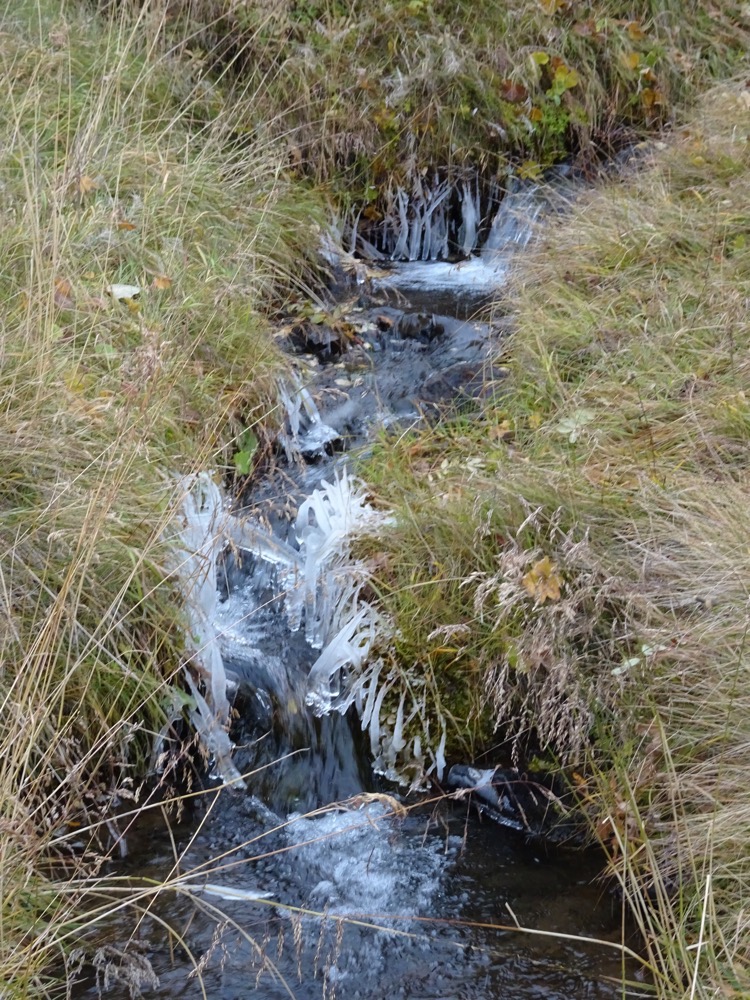
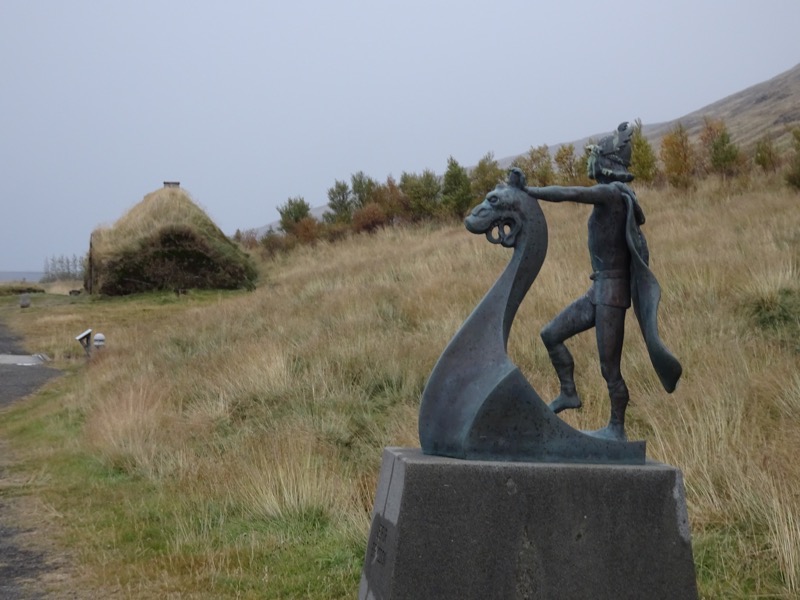
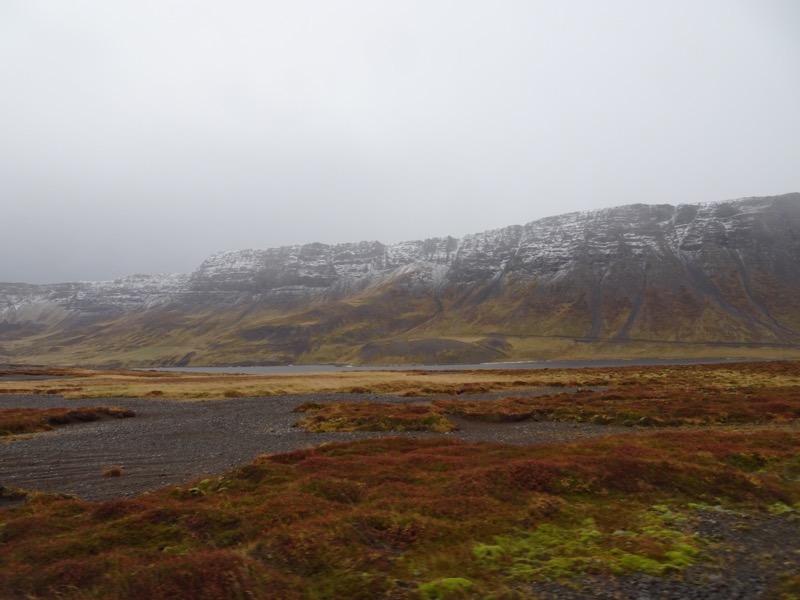 We’ve been seeing dotted around the countryside the only forrest that Iceland has anymore – tiny birch forests. The landscape was once thought to be about 50-60% covered in forest and now it is estimated to be more like 15% thanks to trees being the primary source of heating fuel for over 400 years.
We’ve been seeing dotted around the countryside the only forrest that Iceland has anymore – tiny birch forests. The landscape was once thought to be about 50-60% covered in forest and now it is estimated to be more like 15% thanks to trees being the primary source of heating fuel for over 400 years.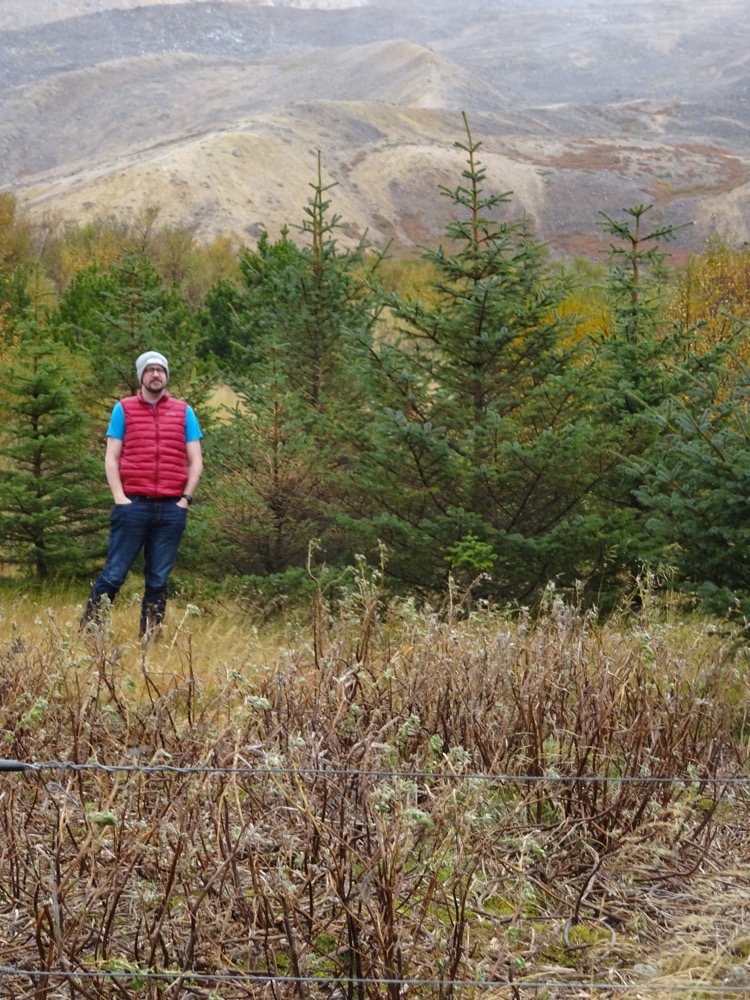 The place names are so long here they are truncated for road signage:
The place names are so long here they are truncated for road signage: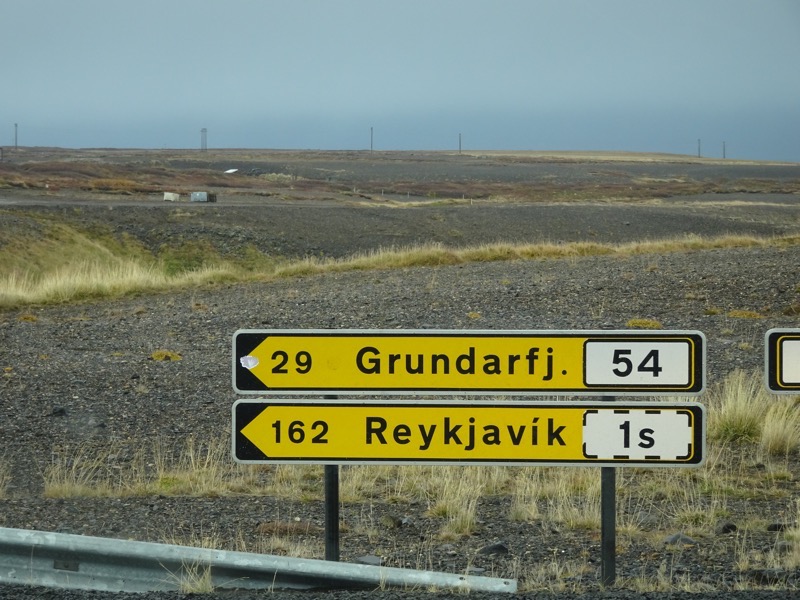
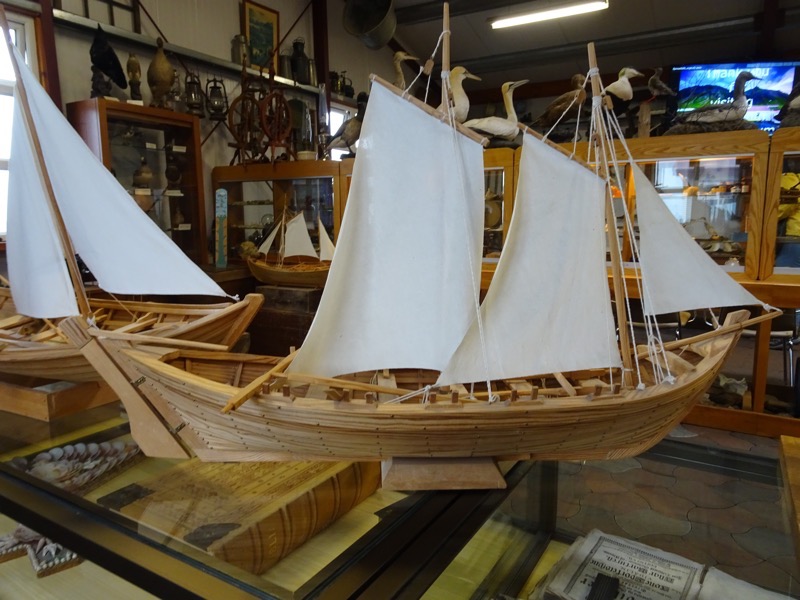
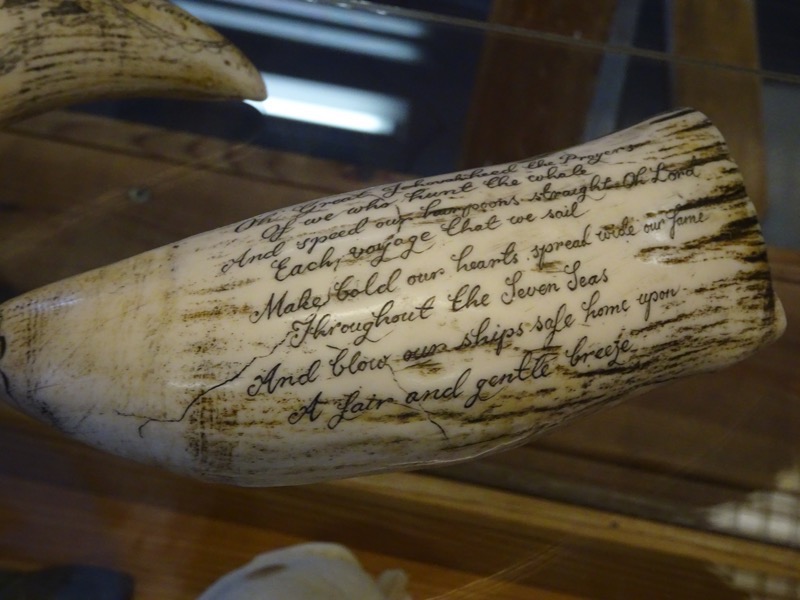
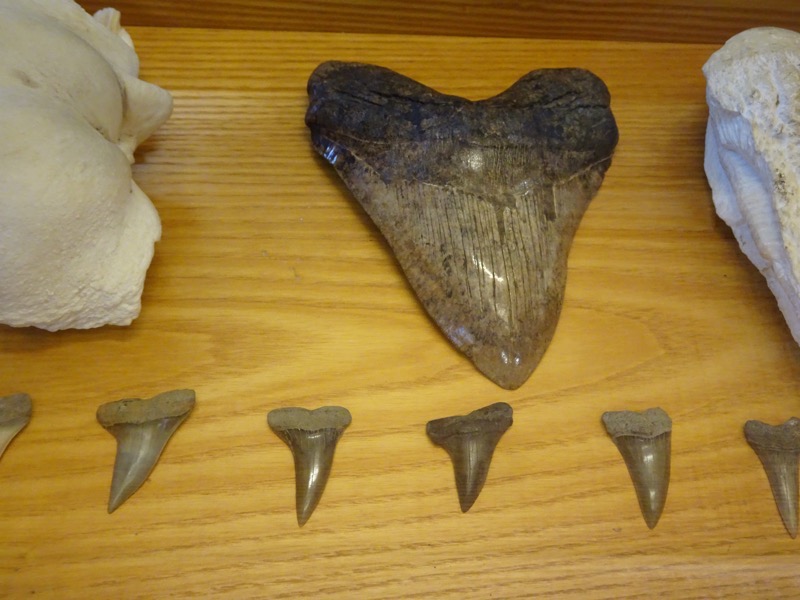 This must be the fourth or fifth stuffed puffin I have seen since I got here…
This must be the fourth or fifth stuffed puffin I have seen since I got here…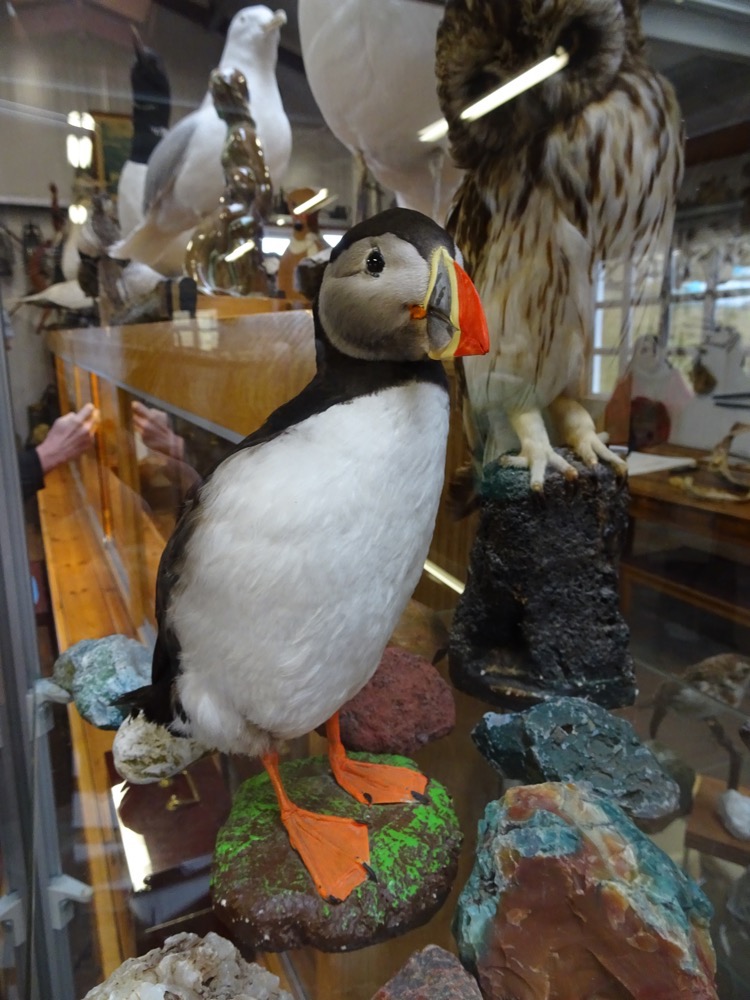
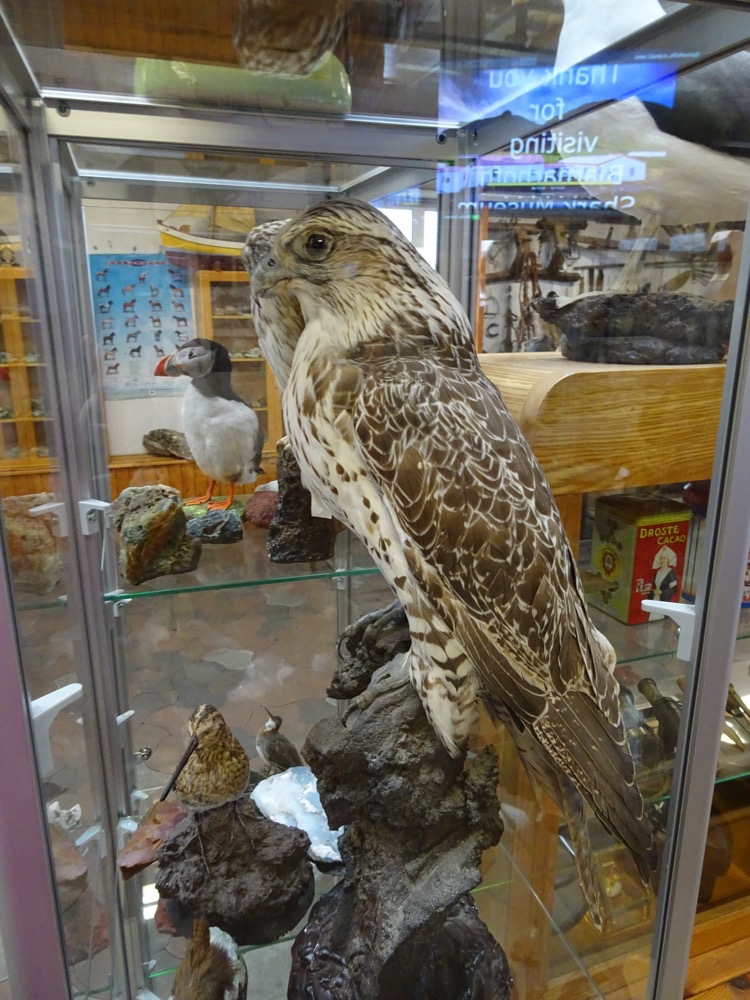
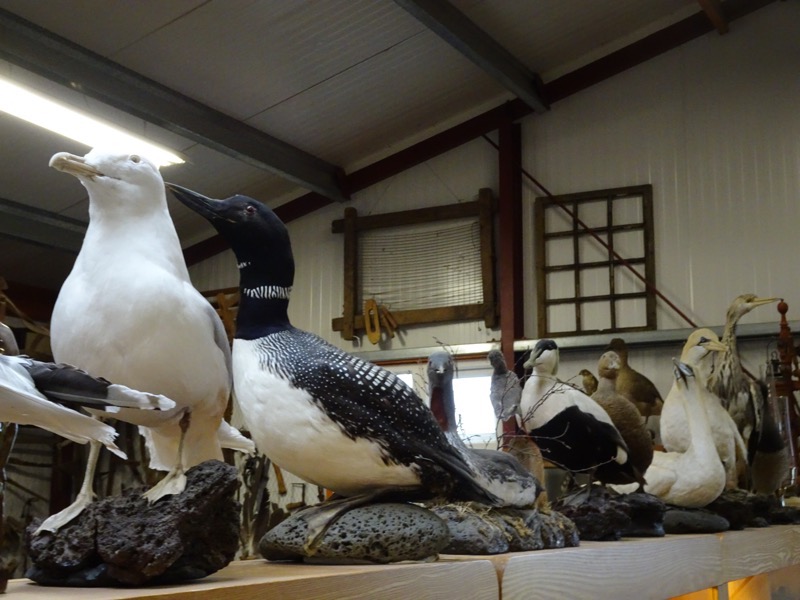
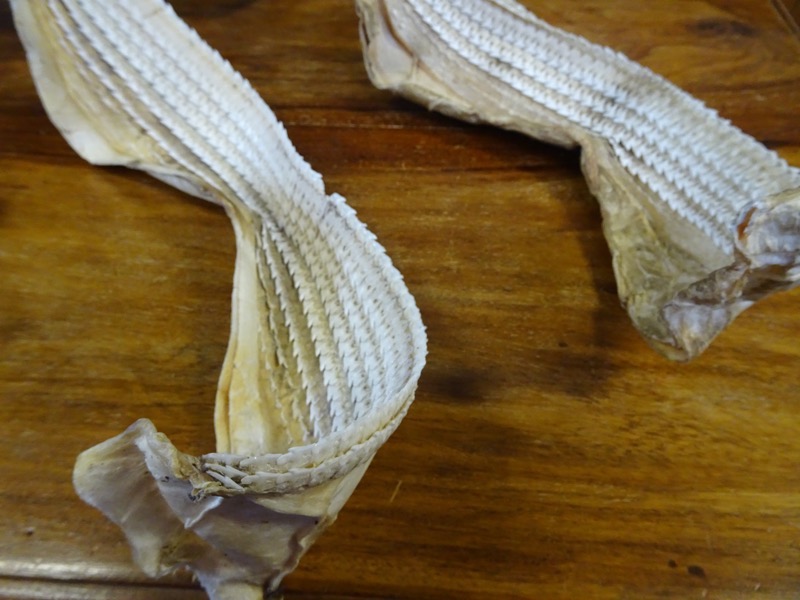
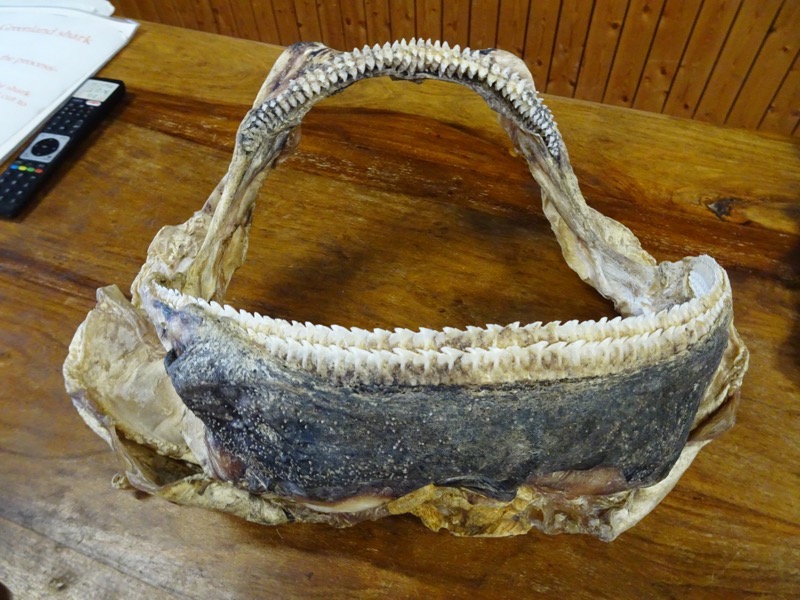 Traditionally the skin of the shark was used as sandpaper – it is certainly rough enough.
Traditionally the skin of the shark was used as sandpaper – it is certainly rough enough.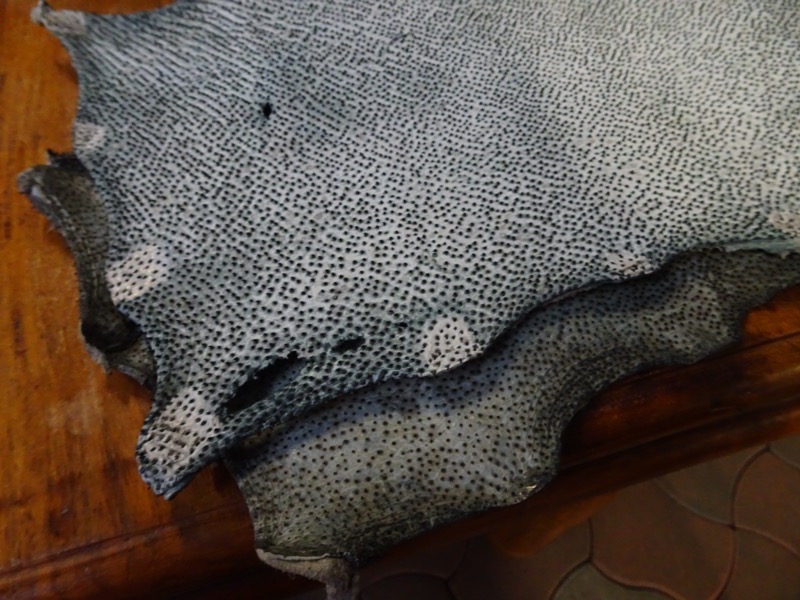
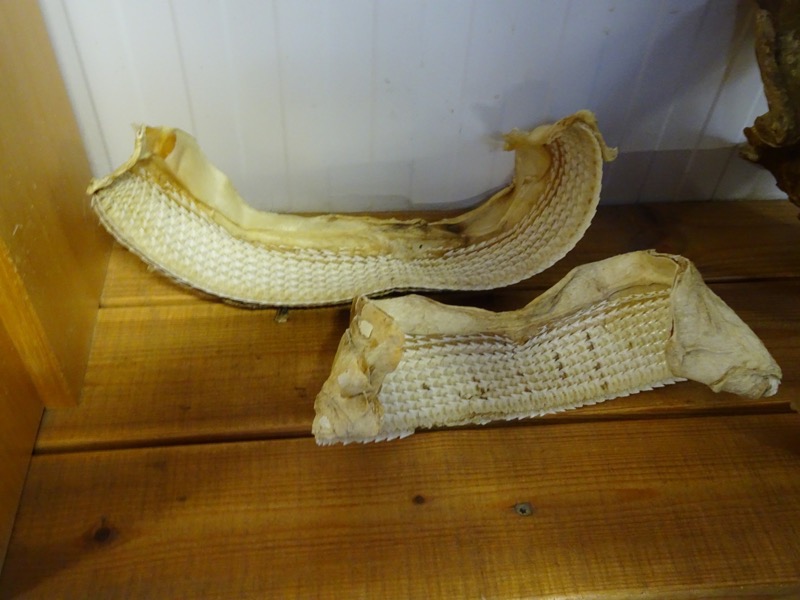
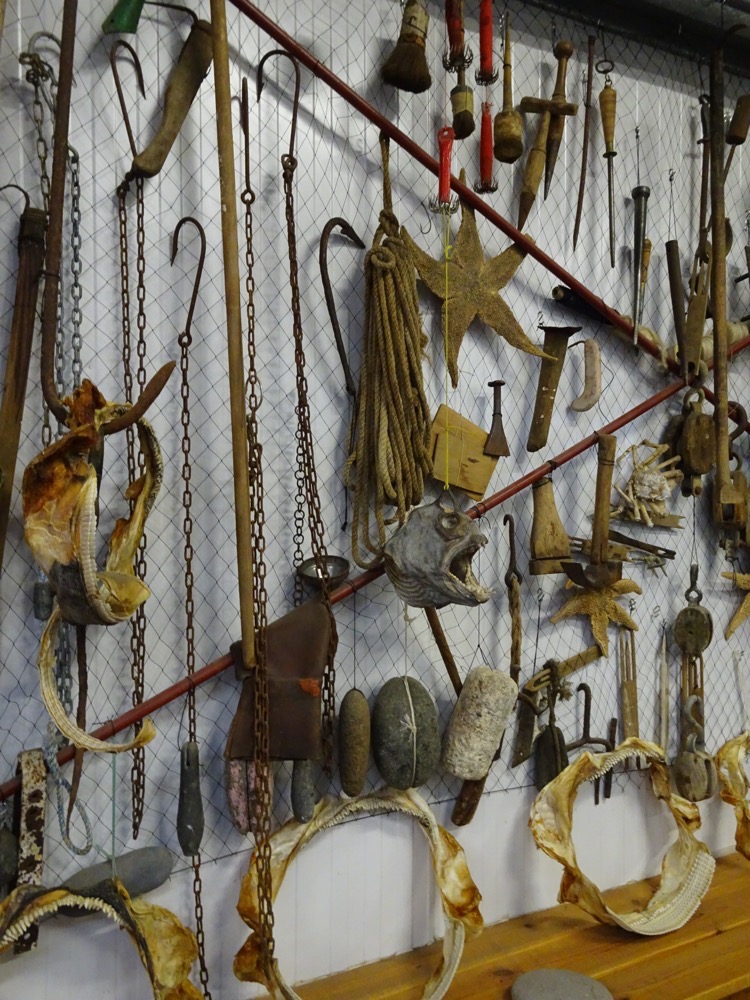
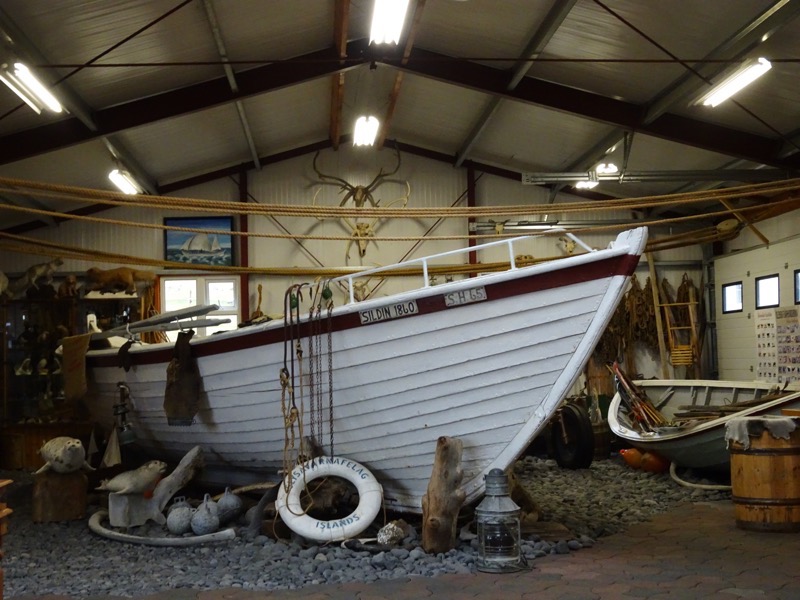
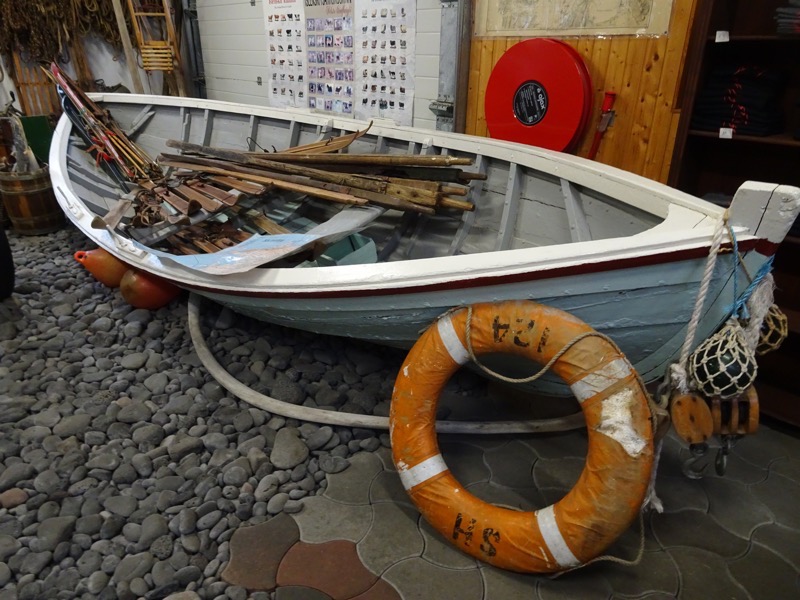
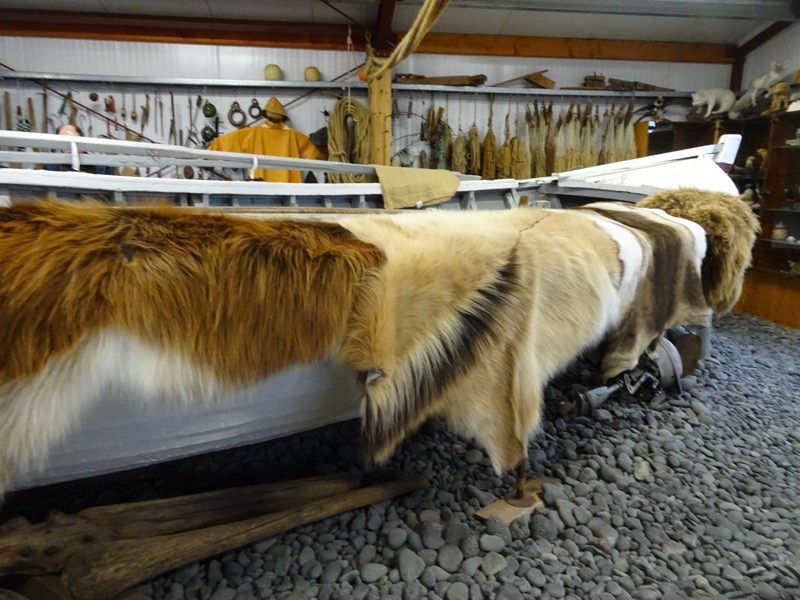 This National Geographic video, while slightly sensationalised, shows the process of fermenting the shark meat…
This National Geographic video, while slightly sensationalised, shows the process of fermenting the shark meat…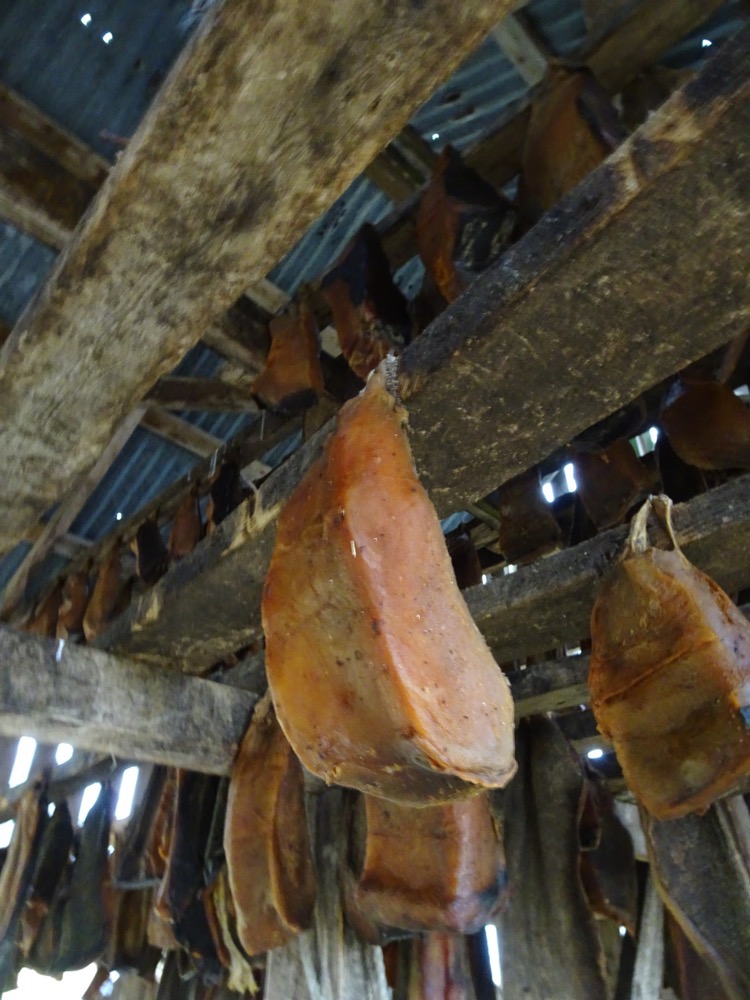
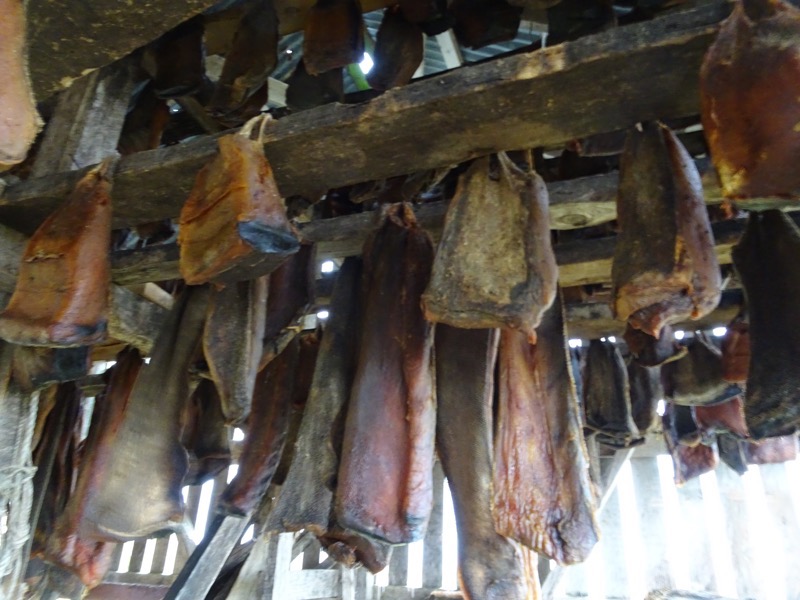
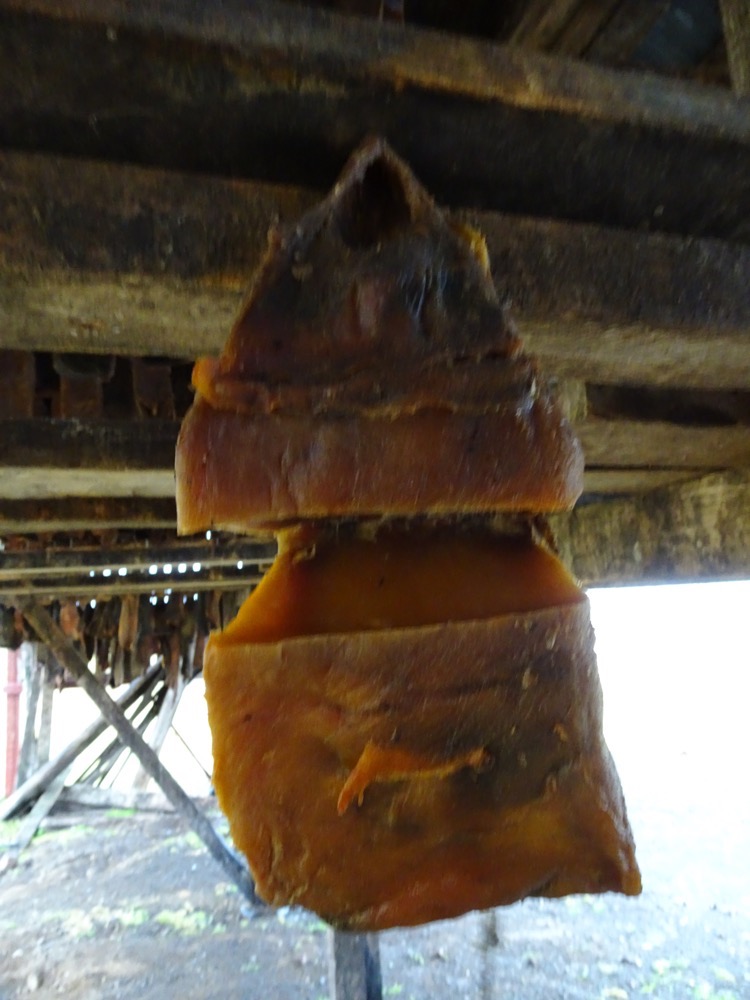
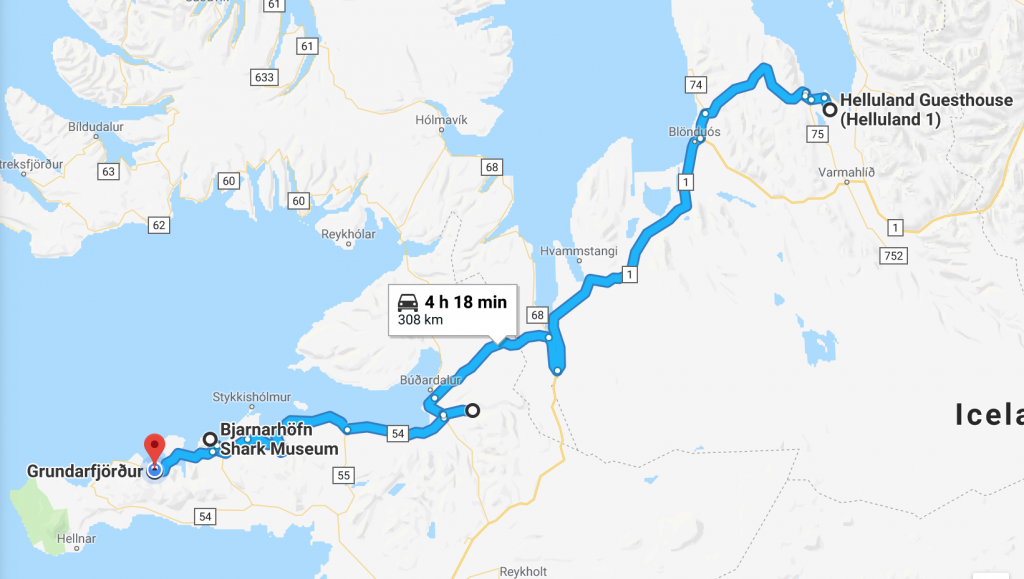 Tonight we have made camp in a very pleasant Guesthouse in Grundarfjörður on the Snæfellsnes Peninsula which we are hoping to explore tomorrow, weather permitting.
Tonight we have made camp in a very pleasant Guesthouse in Grundarfjörður on the Snæfellsnes Peninsula which we are hoping to explore tomorrow, weather permitting.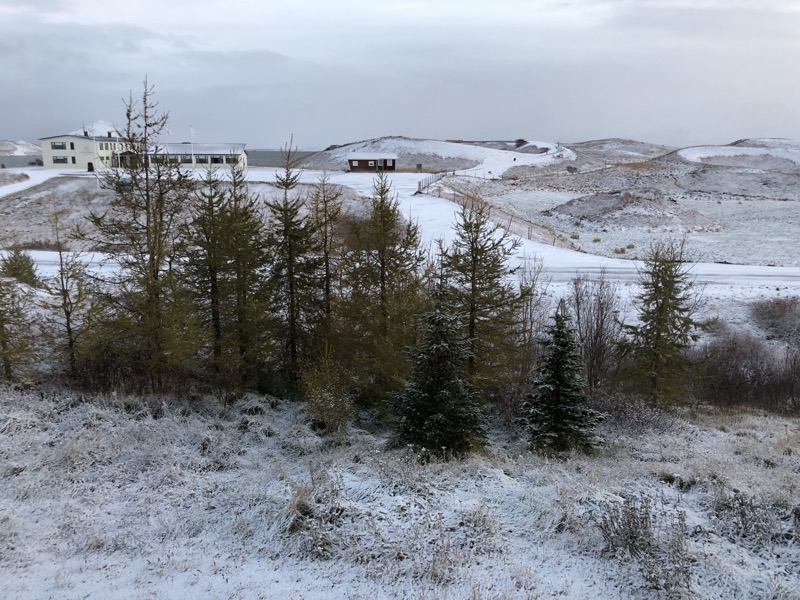
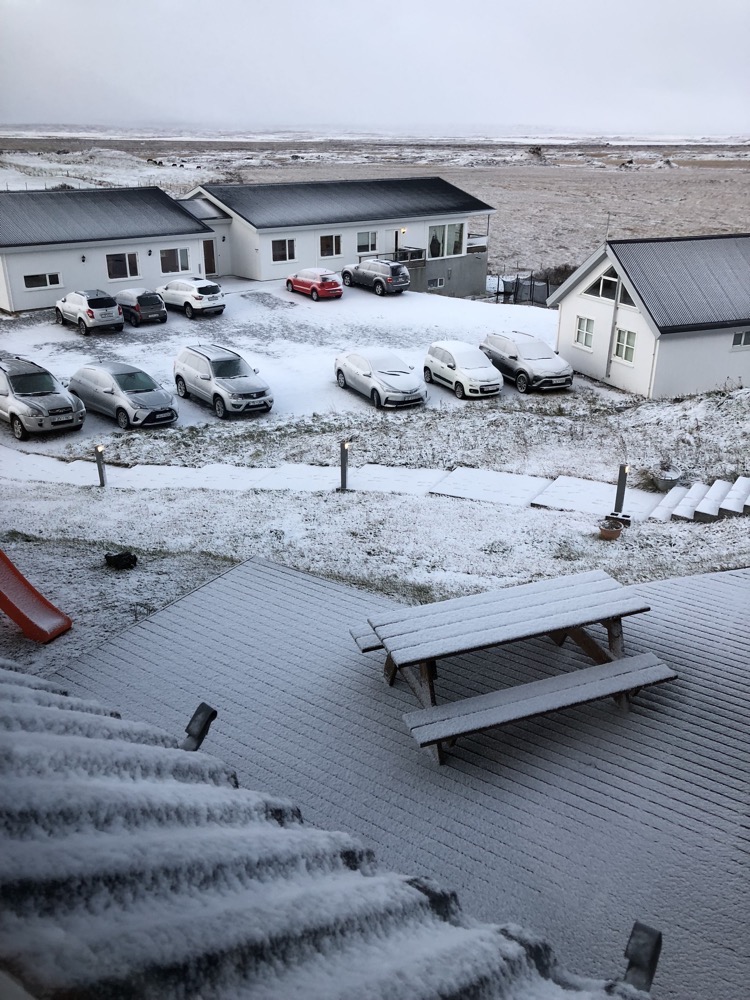 We got ourselves sorted, packed our backpacks, had a wonderful farmhouse breakfast made almost entirely from produce grown locally on the property, scraped the ice off the car, wrestled with doors that were frozen shut, and then made tracks.
We got ourselves sorted, packed our backpacks, had a wonderful farmhouse breakfast made almost entirely from produce grown locally on the property, scraped the ice off the car, wrestled with doors that were frozen shut, and then made tracks.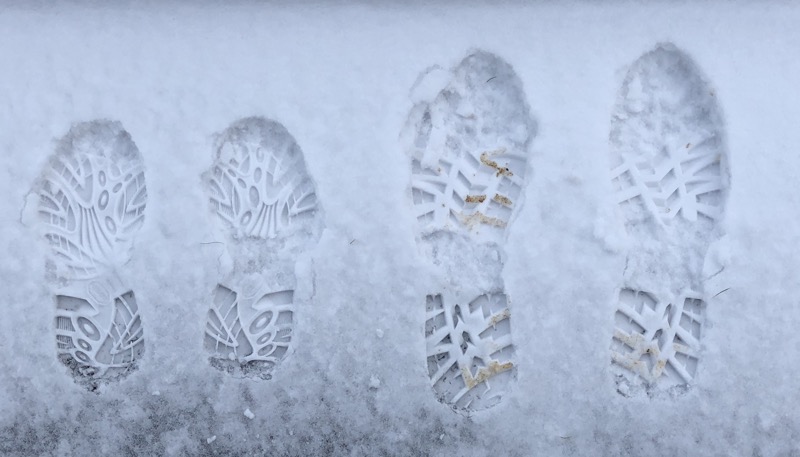
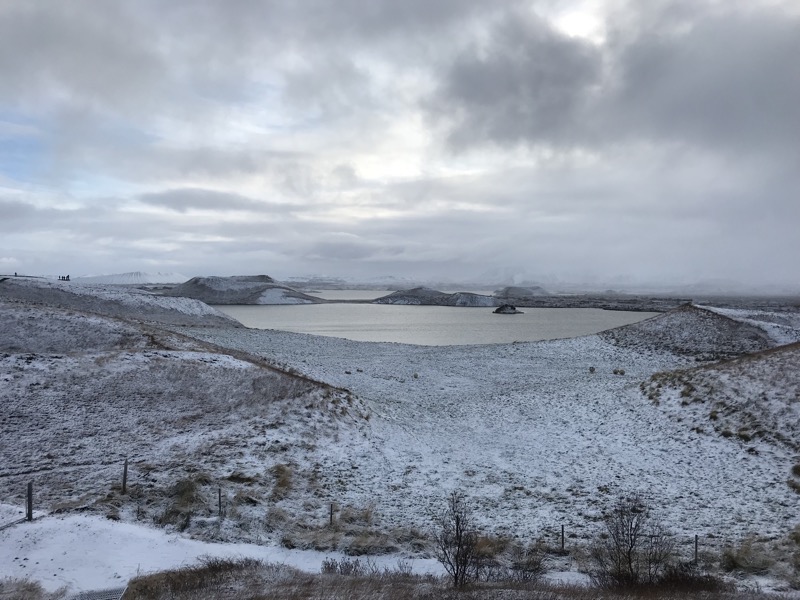
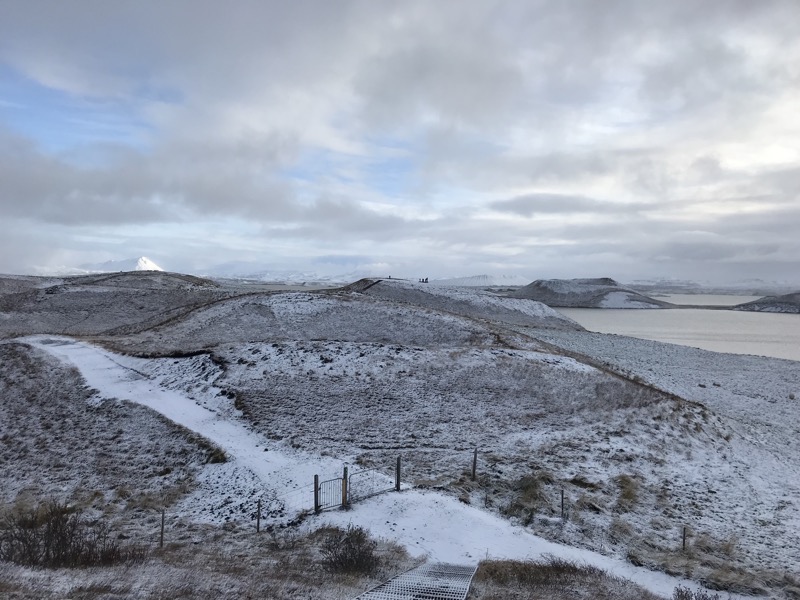
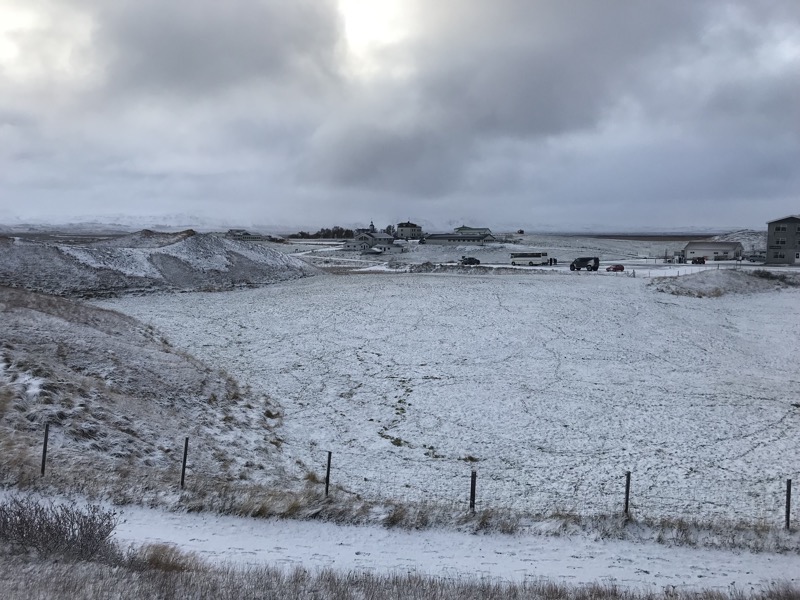


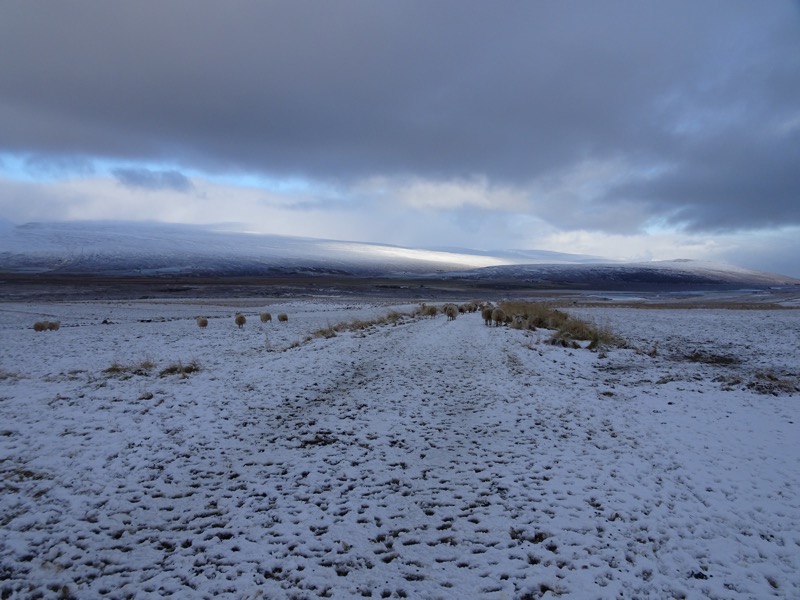
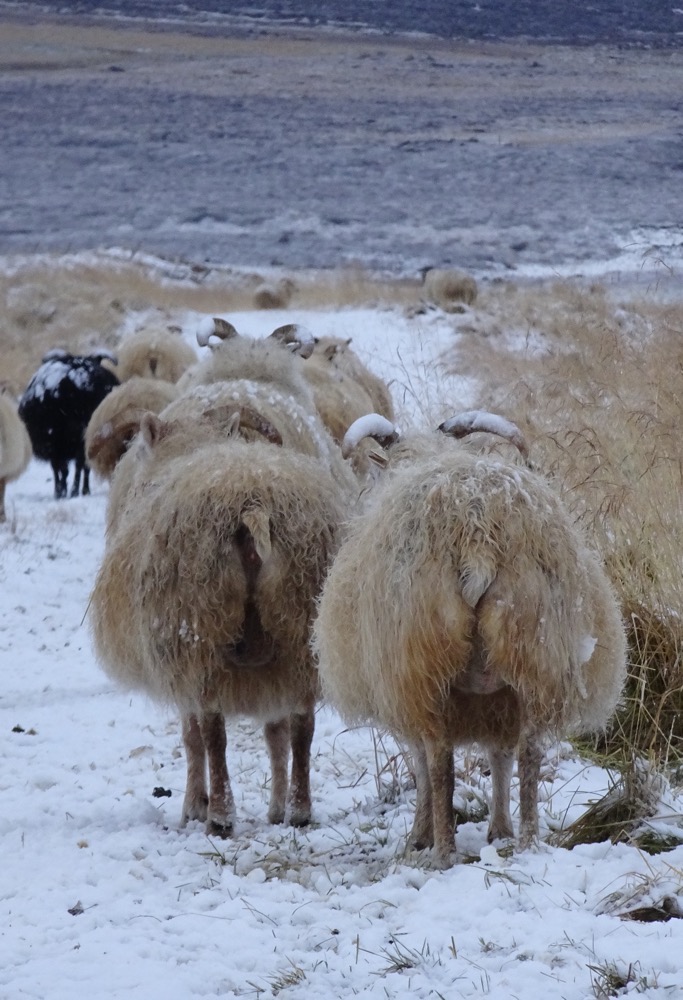
 When we finally got there and made the short walk out to the areas, we were confronted by this:
When we finally got there and made the short walk out to the areas, we were confronted by this: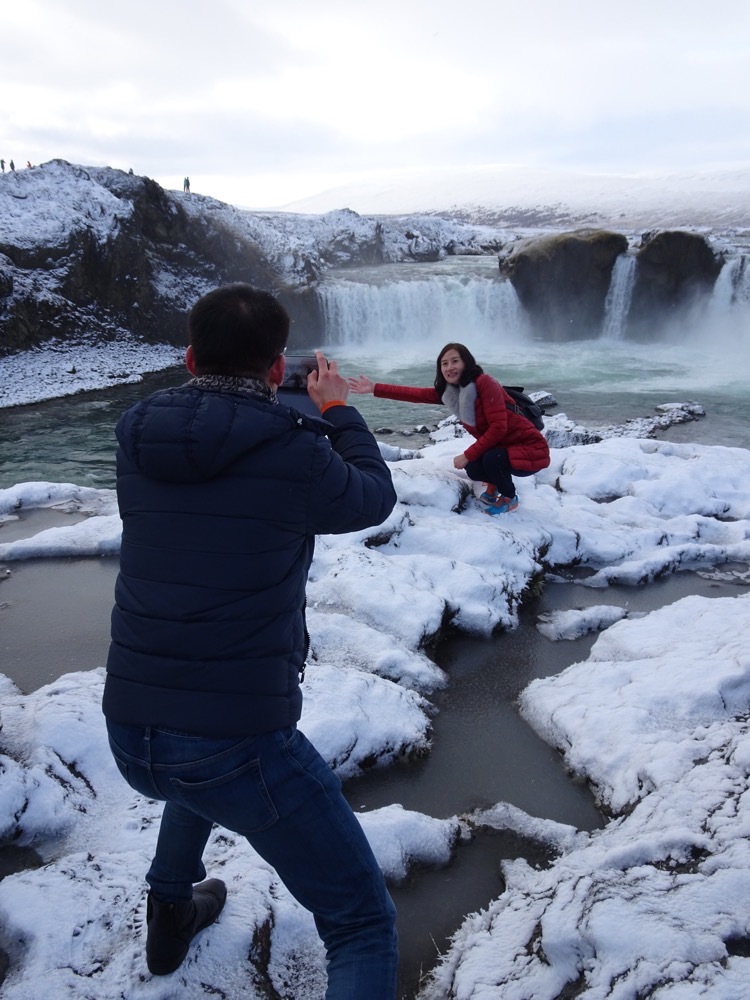 Repeatedly. He fluffed her and posed her and told her to look this way and that; to smile to look away, to lift her leg above the falls, to point, and to pout. Finally, after about ten minutes when I thought he was bloody finished with this monumentally important mobile phone photo shoot… he then handed HER the camera, and told her where to stand how low to crouch, how to line him up with the falls and pfaffed around for another five minutes before moving in front of the camera himself! Then he came back and checked the shots of himself and he made her do them again! Like, seriously!? Standing around narcissistically for over twenty minutes taking photo after photo after photo of yourselves while you have people standing around everywhere waiting for a decent view of the object we have all come to see – and these inconsiderate arseholes are in everyone’s way for just as long as you please trying to get the perfect photo. Let you in on a little secret here, people – there’s no such thing as a perfect photo. If you take two pictures, ONE of them will be your favourite, if you take ten pictures ONE of them will be your favourite, if you take fifty fucking photos – ONE of them will be your favourite!
Repeatedly. He fluffed her and posed her and told her to look this way and that; to smile to look away, to lift her leg above the falls, to point, and to pout. Finally, after about ten minutes when I thought he was bloody finished with this monumentally important mobile phone photo shoot… he then handed HER the camera, and told her where to stand how low to crouch, how to line him up with the falls and pfaffed around for another five minutes before moving in front of the camera himself! Then he came back and checked the shots of himself and he made her do them again! Like, seriously!? Standing around narcissistically for over twenty minutes taking photo after photo after photo of yourselves while you have people standing around everywhere waiting for a decent view of the object we have all come to see – and these inconsiderate arseholes are in everyone’s way for just as long as you please trying to get the perfect photo. Let you in on a little secret here, people – there’s no such thing as a perfect photo. If you take two pictures, ONE of them will be your favourite, if you take ten pictures ONE of them will be your favourite, if you take fifty fucking photos – ONE of them will be your favourite!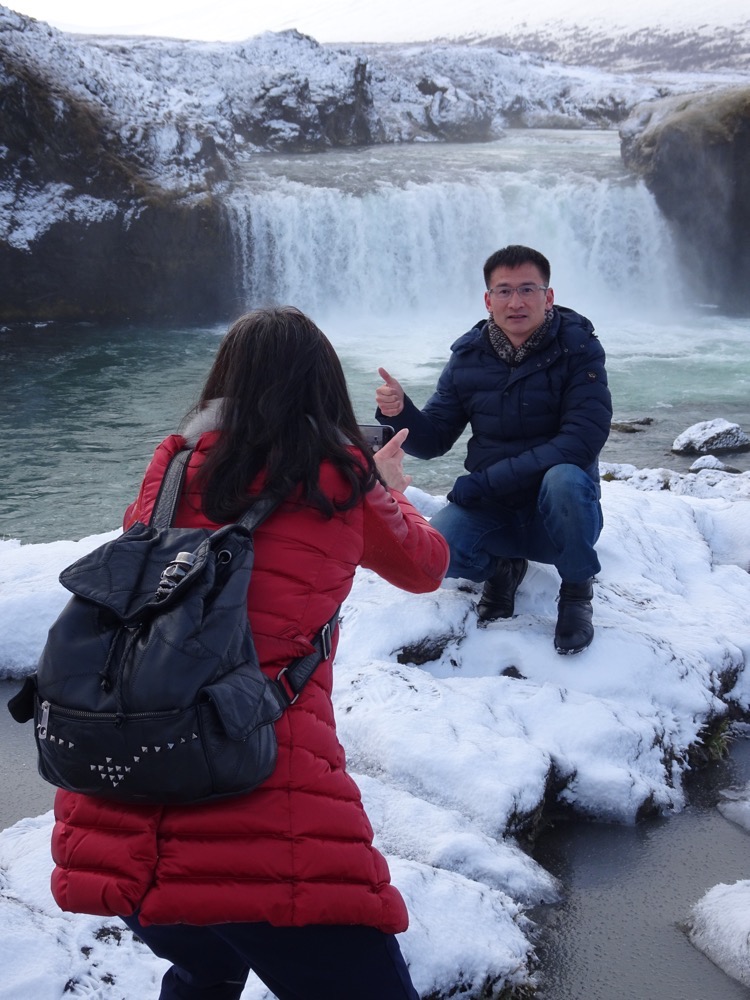 Eventually, he came back to look at the camera again, and then I became *that person* as I then walked out in front of everyone before another pair of self-indulgent, self-absorbed tourists decided to repeat their performance. I am so frustrated at this shit behaviour, that I resorted to fucking up everyone else’s view for all of 60 seconds to take my three or four pictures so I could move on… and do you know how many pictures I took of ME in front of these waterfalls? Exactly none. I know I probably shouldn’t be posting pictures of strangers on my blog – but fuck them and their privacy. You want to take up a public space like that and be completely ignorant towards the people around you, then you get what you get.
Eventually, he came back to look at the camera again, and then I became *that person* as I then walked out in front of everyone before another pair of self-indulgent, self-absorbed tourists decided to repeat their performance. I am so frustrated at this shit behaviour, that I resorted to fucking up everyone else’s view for all of 60 seconds to take my three or four pictures so I could move on… and do you know how many pictures I took of ME in front of these waterfalls? Exactly none. I know I probably shouldn’t be posting pictures of strangers on my blog – but fuck them and their privacy. You want to take up a public space like that and be completely ignorant towards the people around you, then you get what you get.
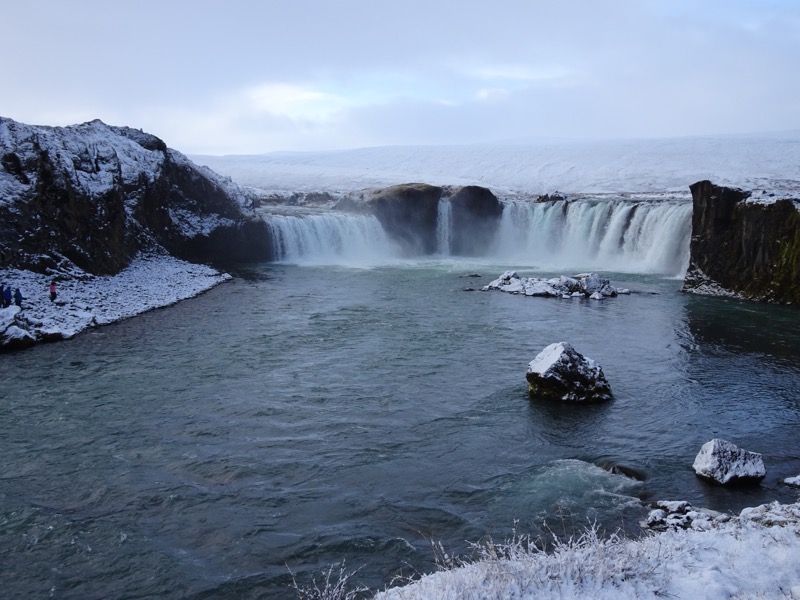

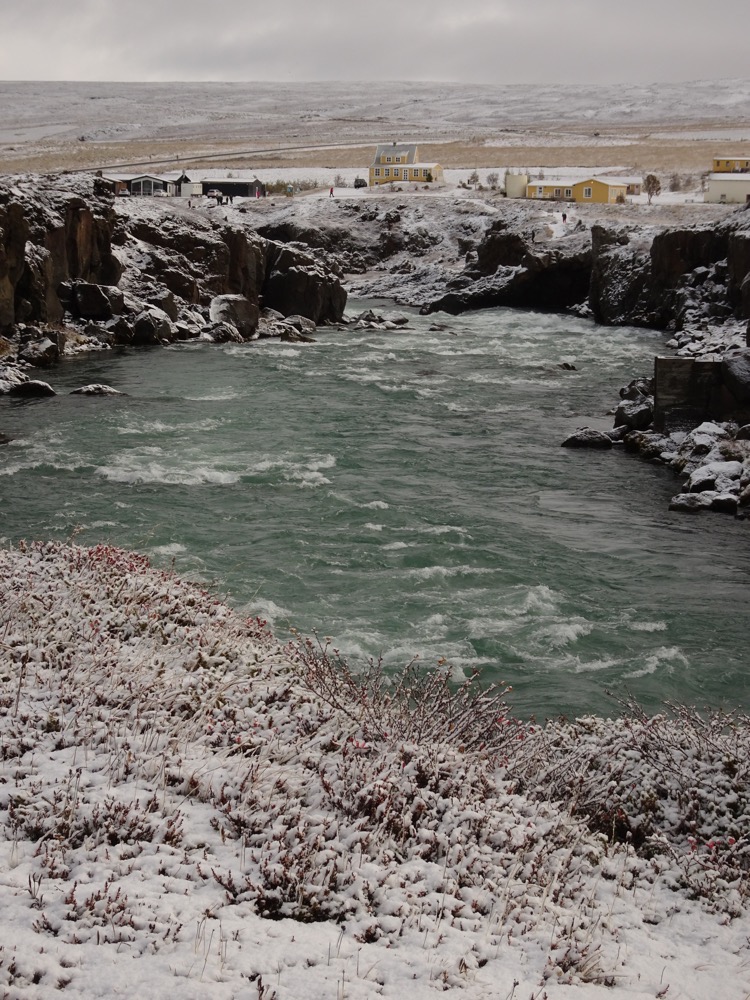
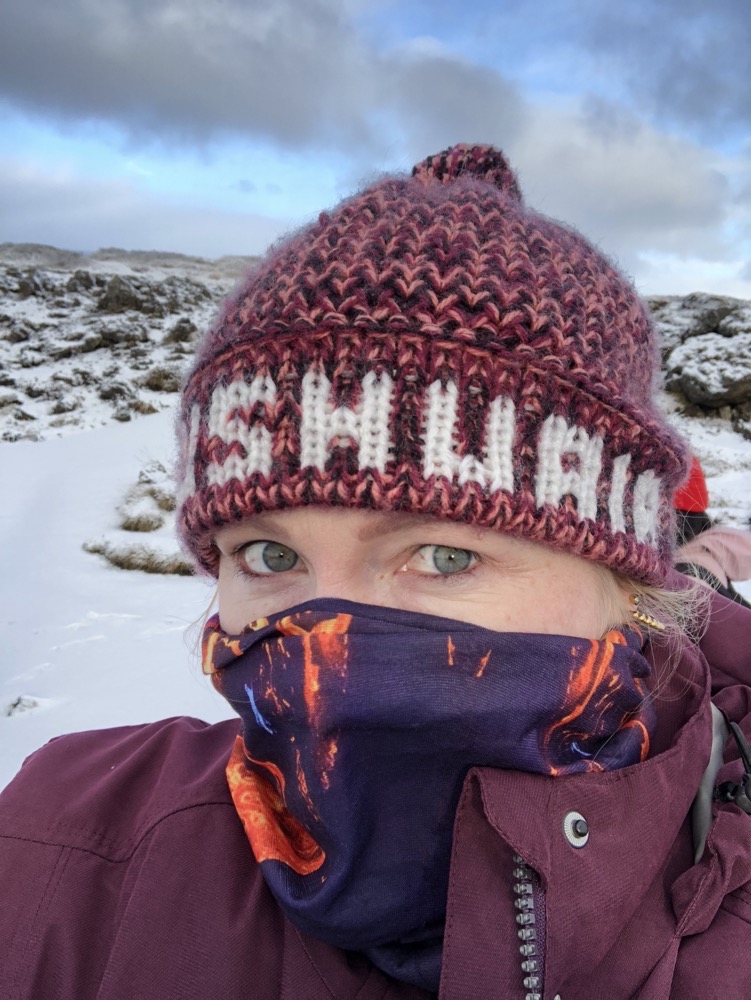
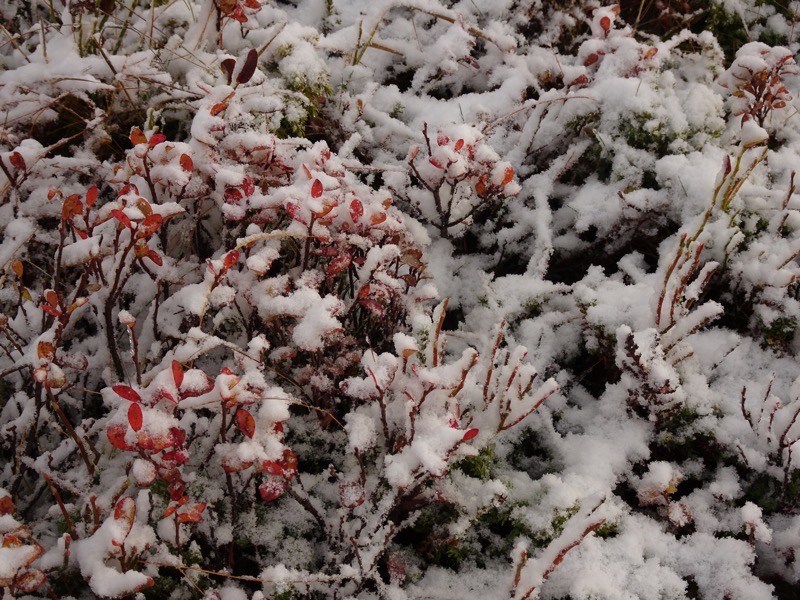 After Goðafoss, we were back on the road towards Akureyri, with is the second largest city in Iceland at the base of Eyjafjörður Fjord. The weather was not playing nice with us again and the road conditions were still dicey for these Queenslanders.
After Goðafoss, we were back on the road towards Akureyri, with is the second largest city in Iceland at the base of Eyjafjörður Fjord. The weather was not playing nice with us again and the road conditions were still dicey for these Queenslanders. 
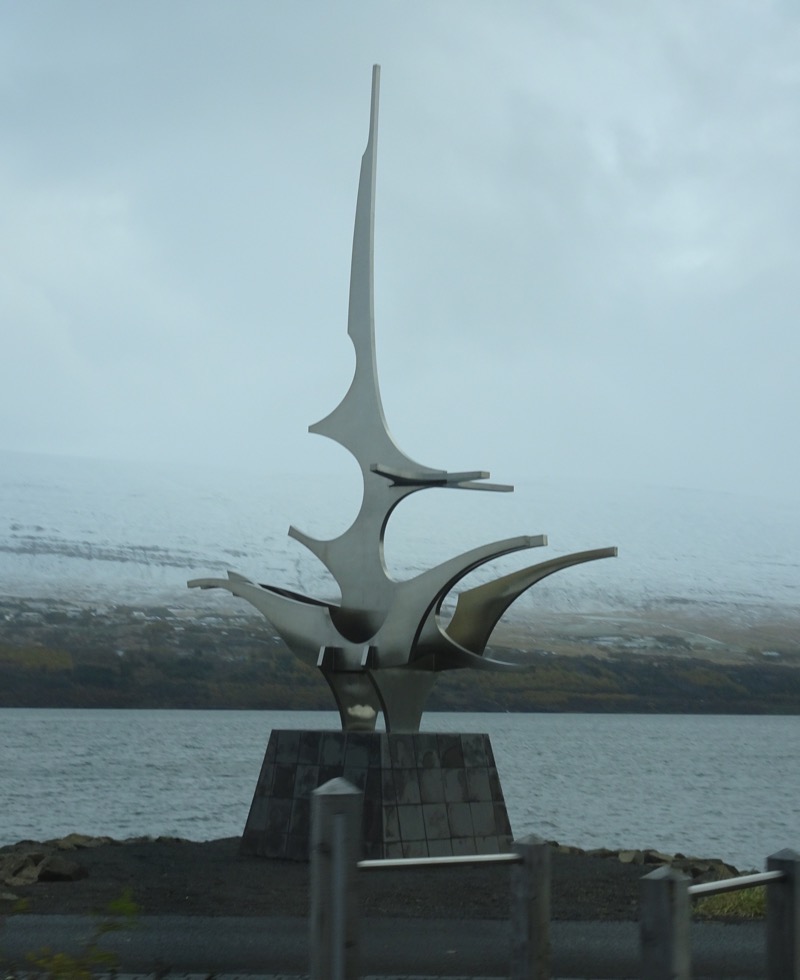
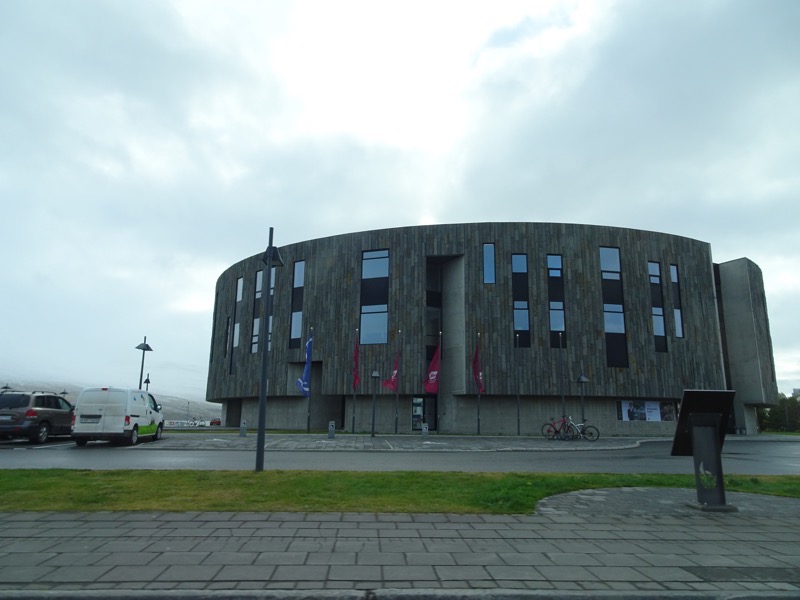
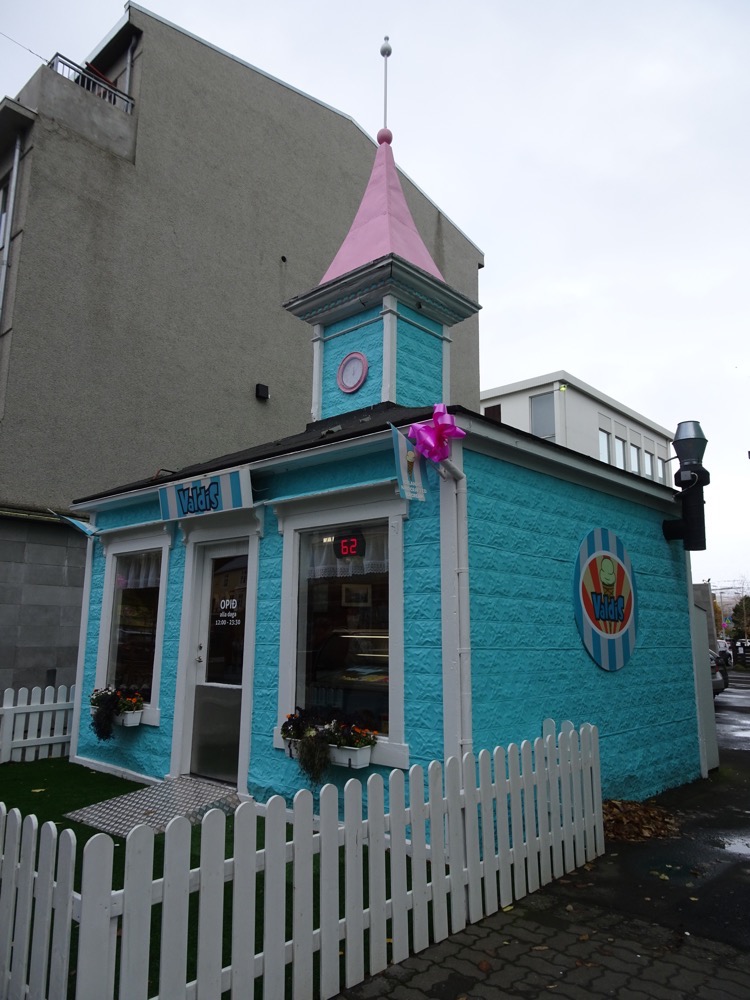
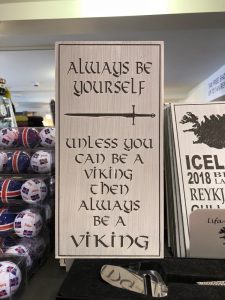
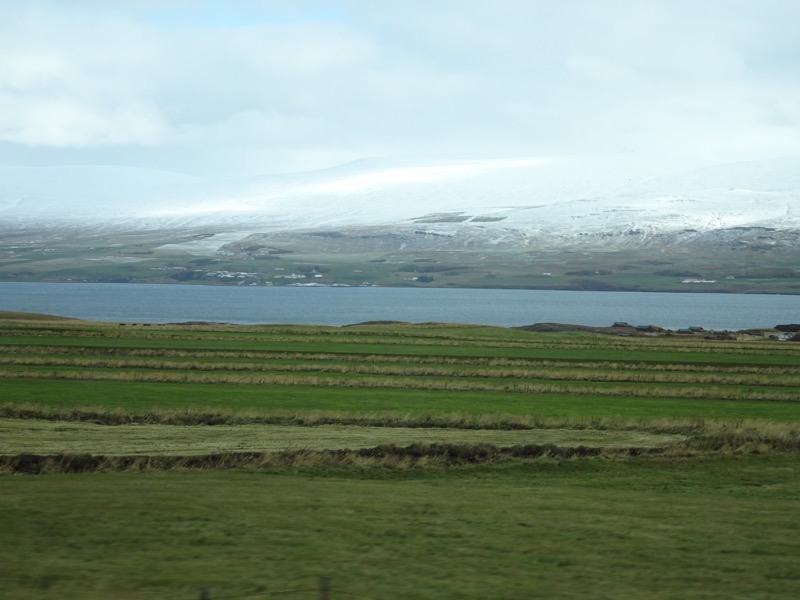
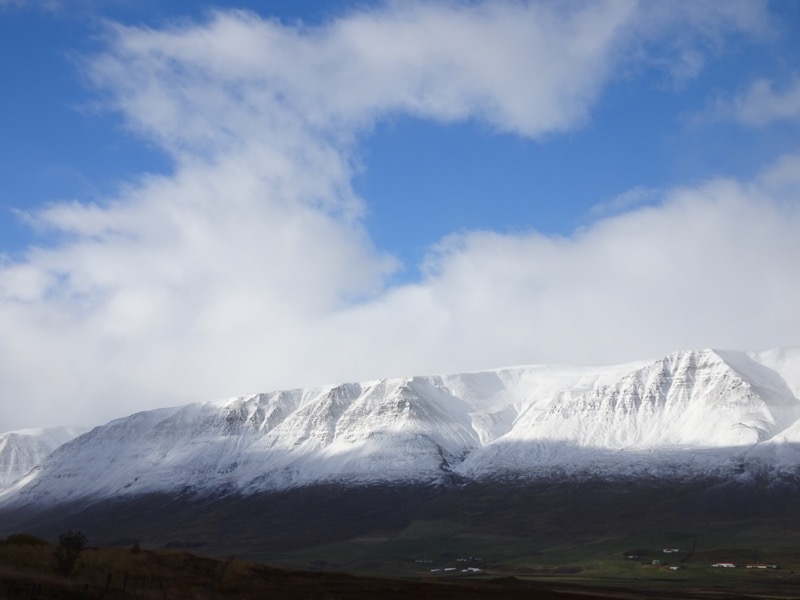
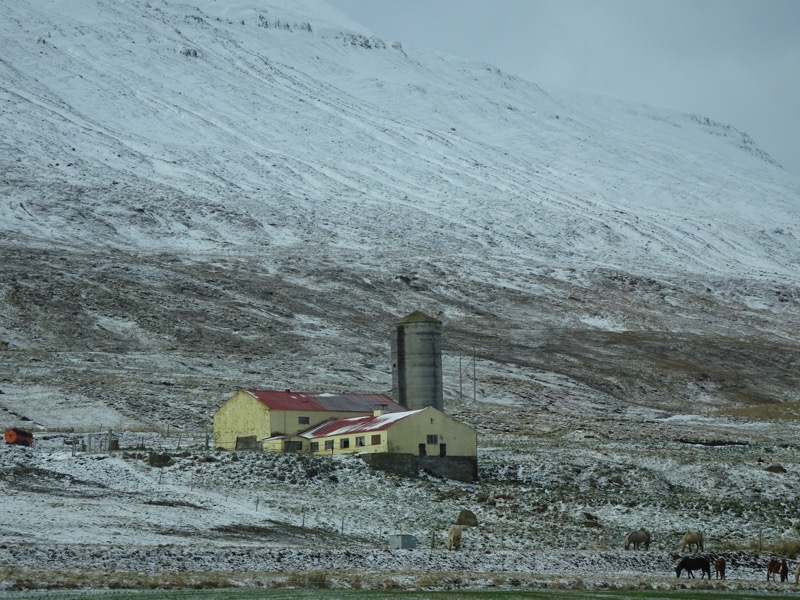
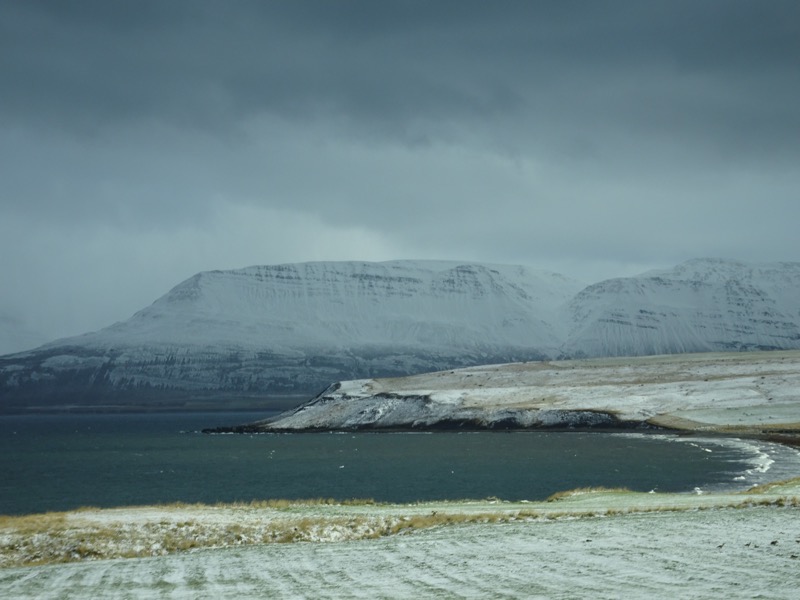 We didn’t really need the reminder that the roads were treacherous – but we did see a few upended vehicles which drove the point home more than adequately.
We didn’t really need the reminder that the roads were treacherous – but we did see a few upended vehicles which drove the point home more than adequately.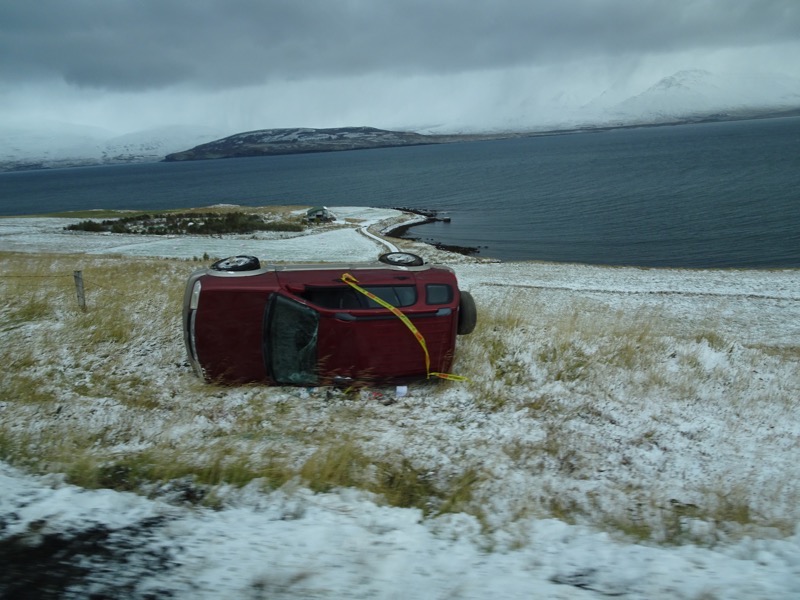
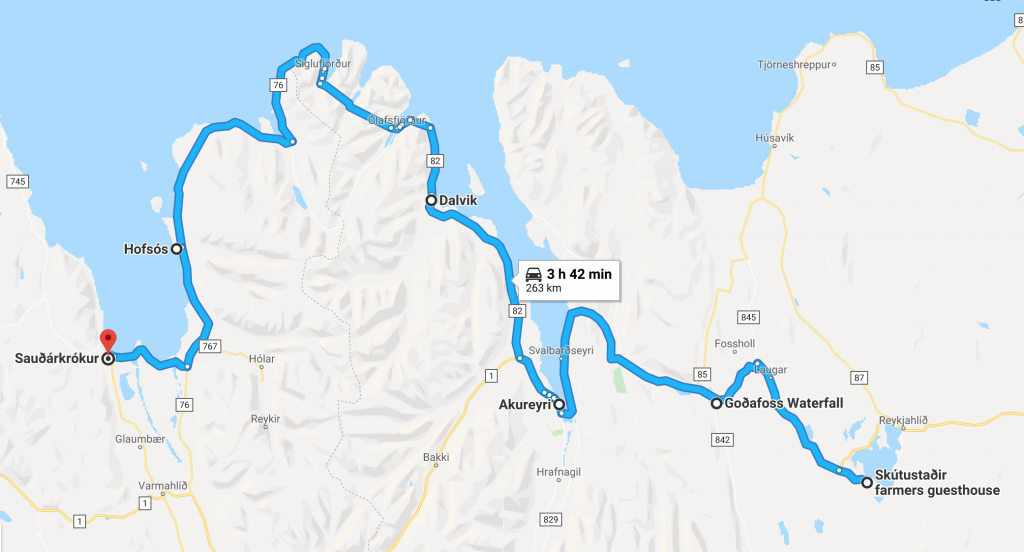
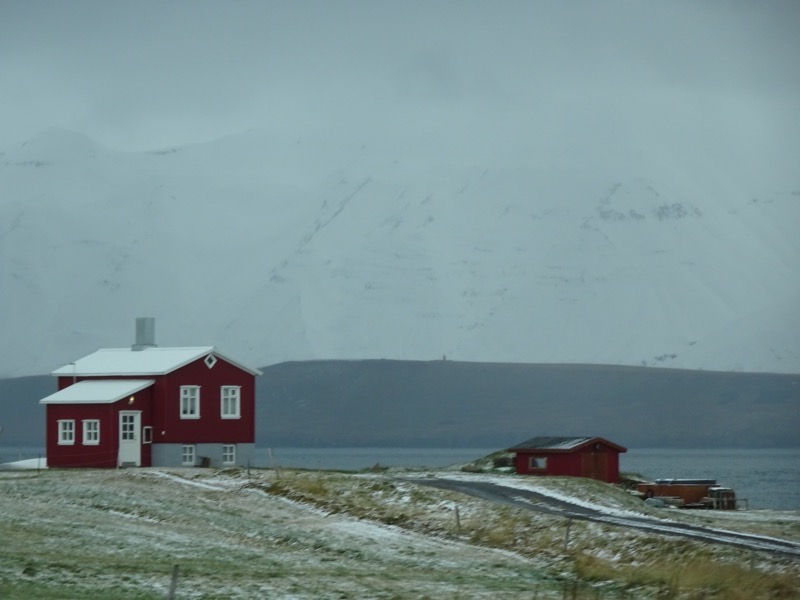 As we left Dalvik, though the road conditions seemed to be worsening and we were back in the snow again. Seeing snow at sea level always seems somewhat confusing to me, even though I have been many places now where it’s quite common – I think the association of snow only being on mountain tops is such a strong image imprinted on us in childhood, that it is a bit hard to let go of.
As we left Dalvik, though the road conditions seemed to be worsening and we were back in the snow again. Seeing snow at sea level always seems somewhat confusing to me, even though I have been many places now where it’s quite common – I think the association of snow only being on mountain tops is such a strong image imprinted on us in childhood, that it is a bit hard to let go of.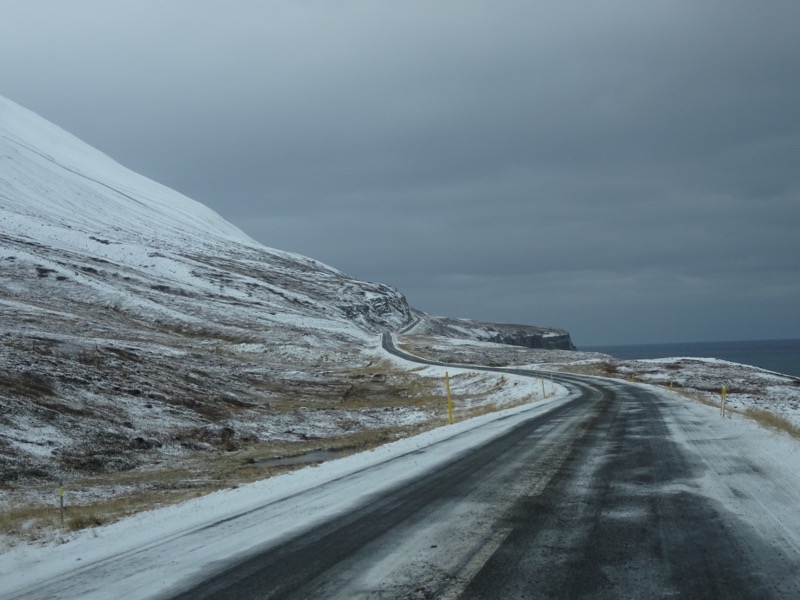
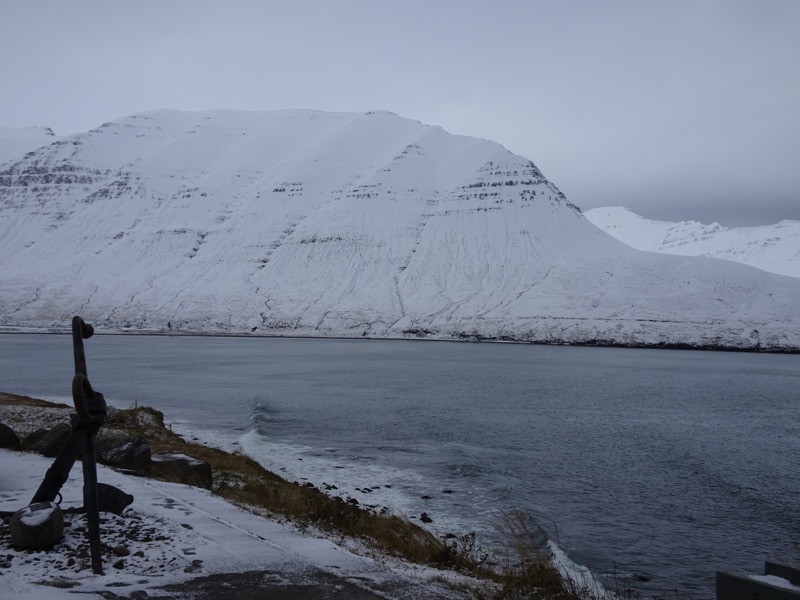
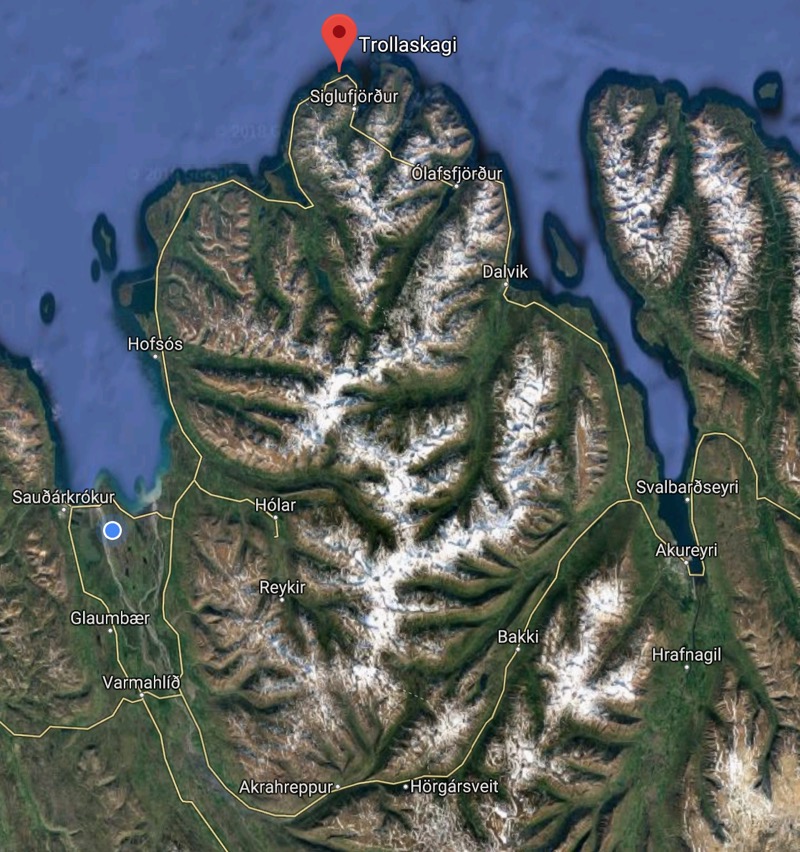
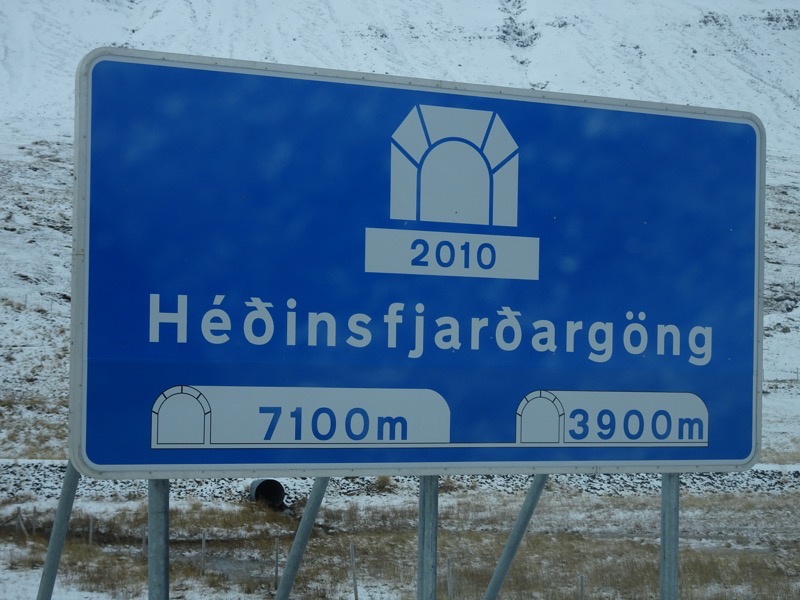
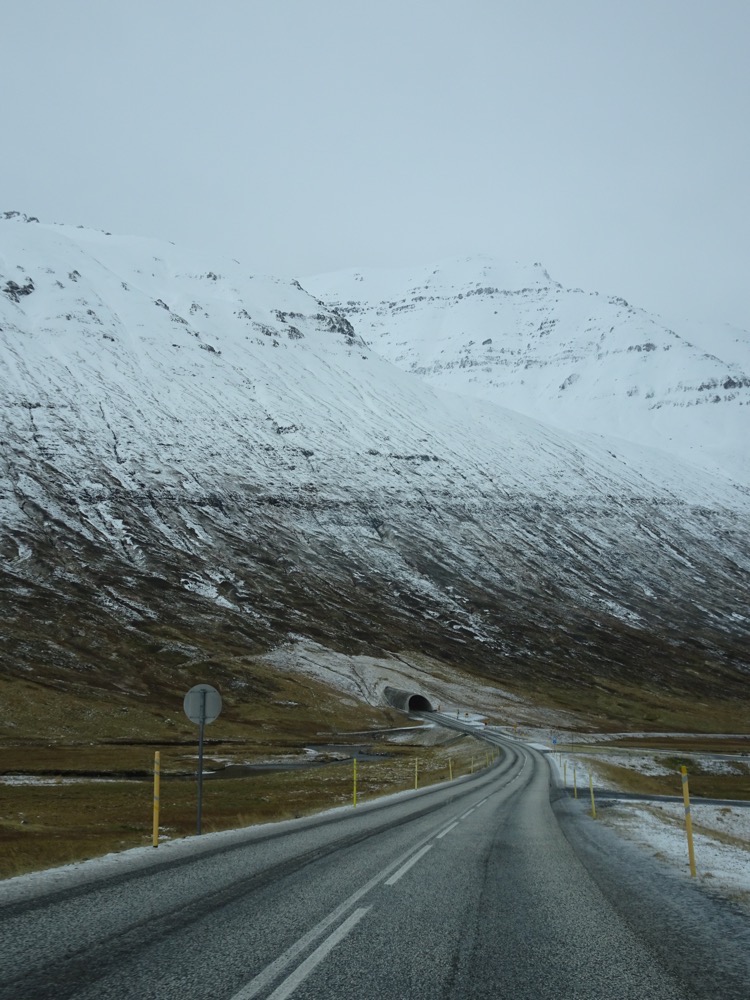

 Out the other side of the tunnels and the landscape changes again!
Out the other side of the tunnels and the landscape changes again! We stopped for a bit of lunch and while the view was amazing – it was a bit too cold for us to use the outdoor picnic tables, so we made do with the dashboard. 🙂
We stopped for a bit of lunch and while the view was amazing – it was a bit too cold for us to use the outdoor picnic tables, so we made do with the dashboard. 🙂 
 A quick drive through tp Siglufjörður and then onwards around the peninsula.
A quick drive through tp Siglufjörður and then onwards around the peninsula.
 The lighthouse and lookout at Tröllaskagi.
The lighthouse and lookout at Tröllaskagi.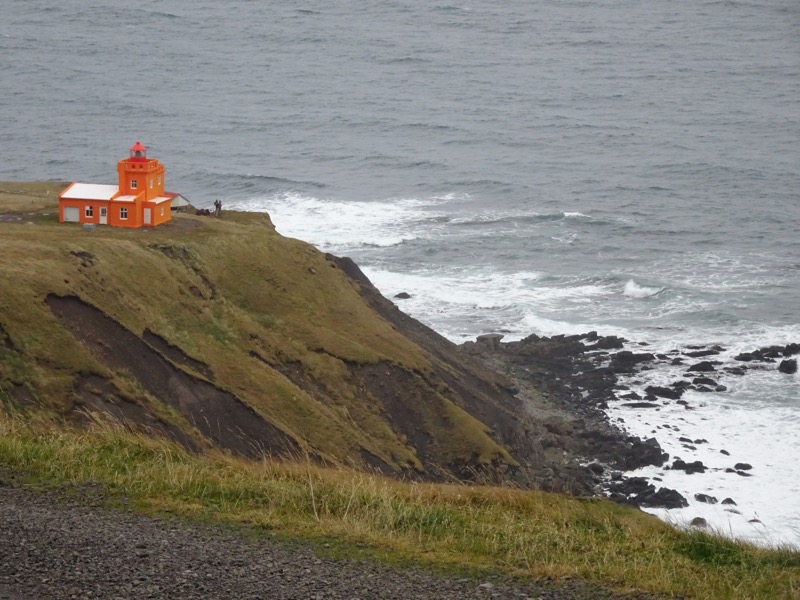
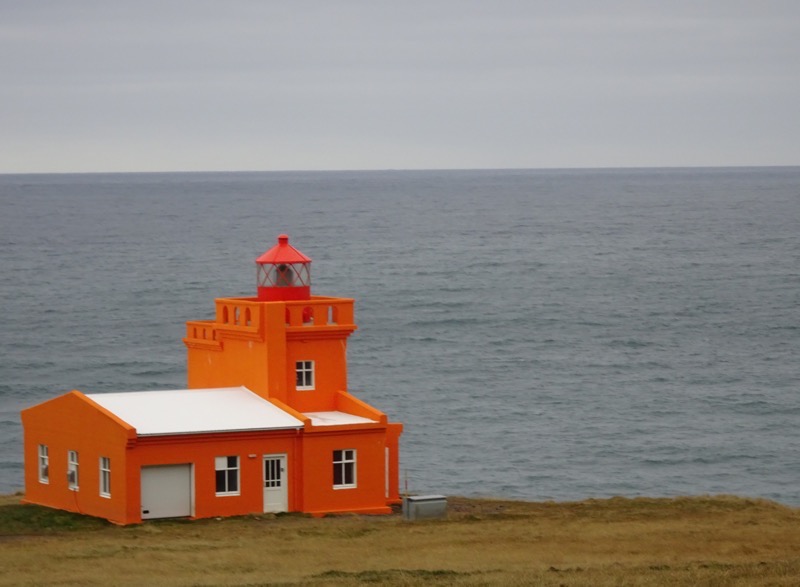
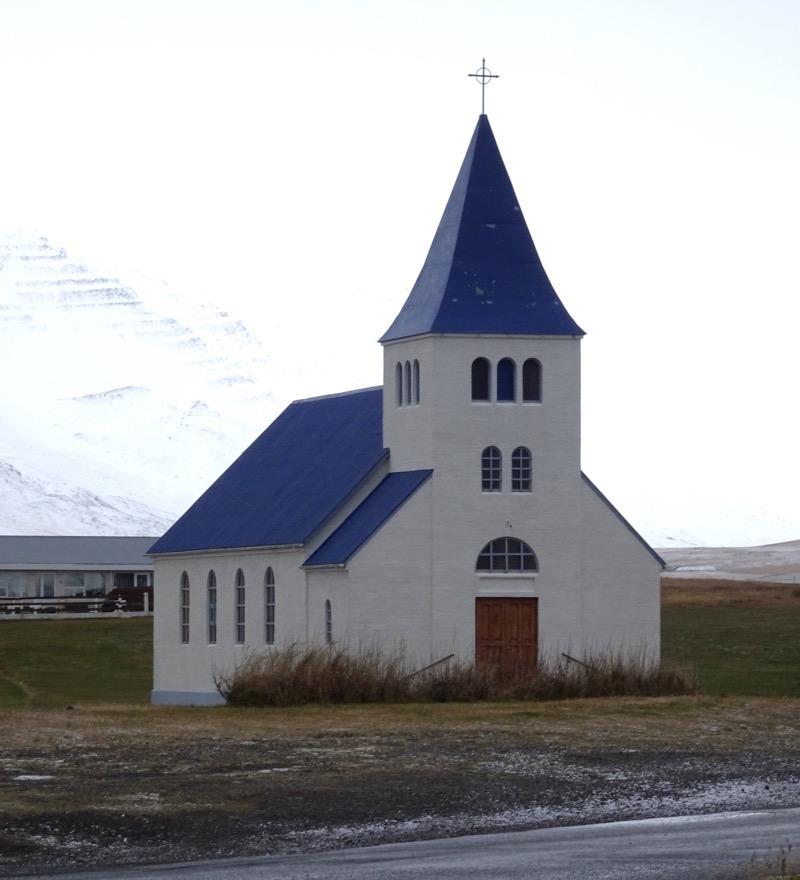

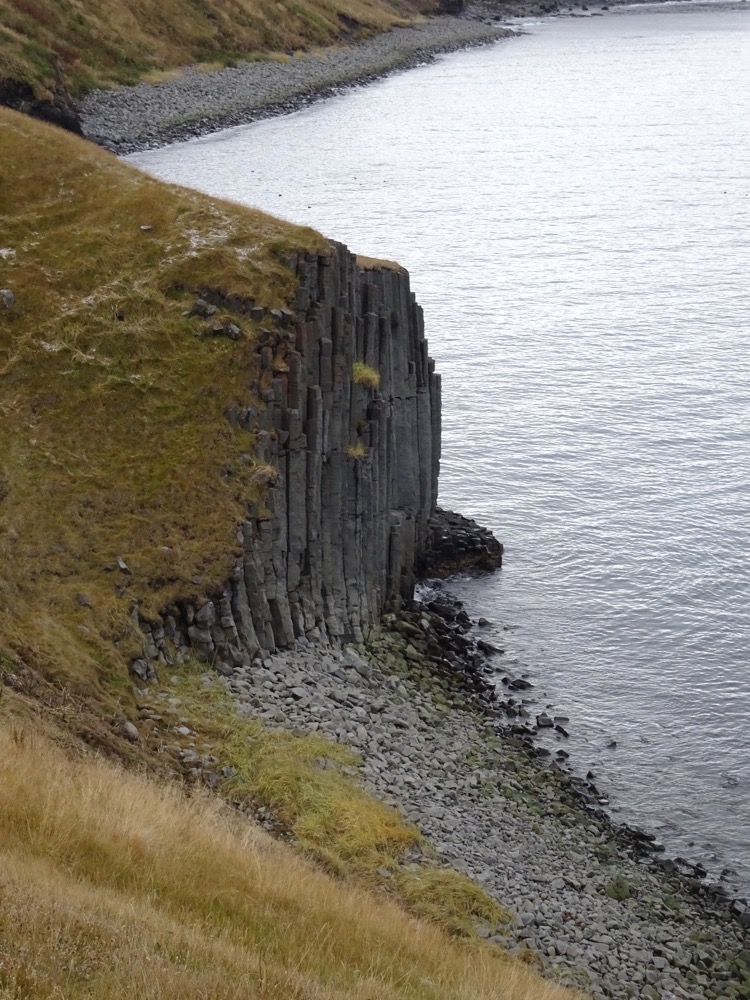
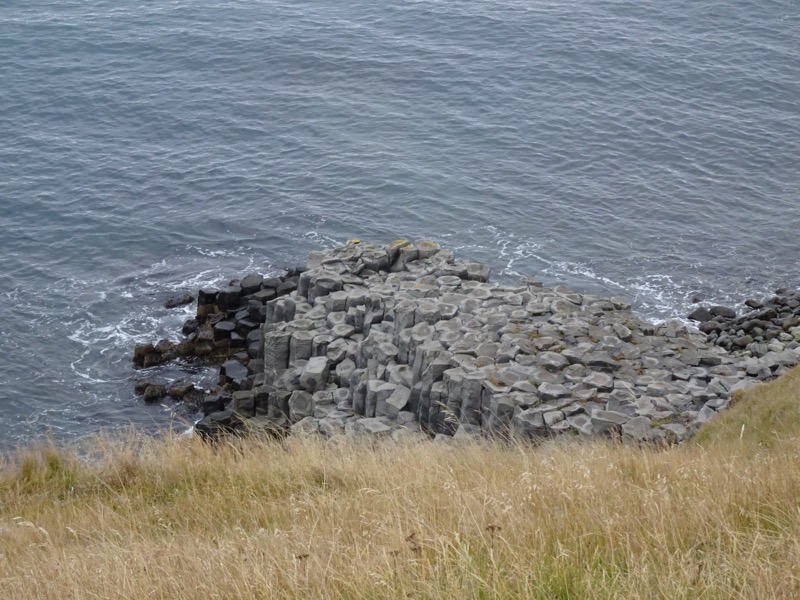
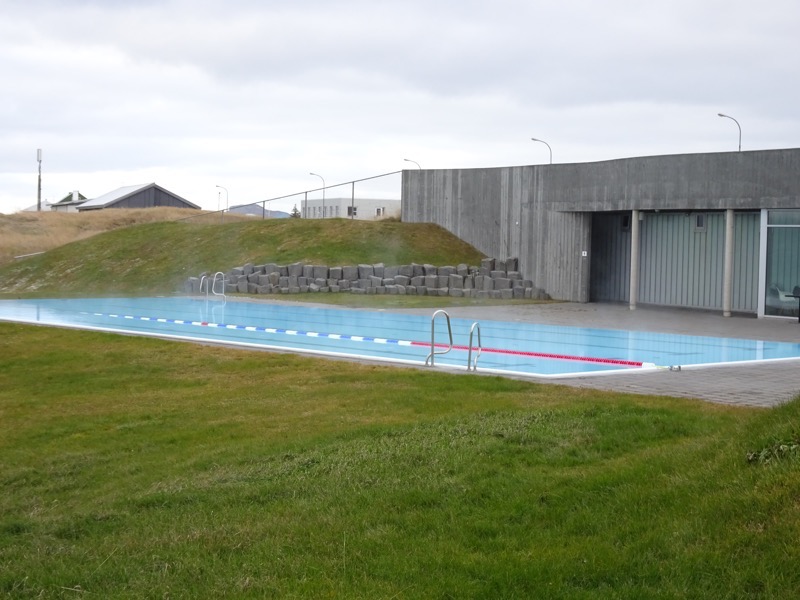 After leaving Hofsós we were heading to our guesthouse for the night, Helluland Guesthouse which is set in a heritage farmhouse built in 1909 and which is still a working farm. Helluland is known for their Icelandic horse riding tours – you can go for a recreational ride for an hour or you can pack yourself up and go out overnight trail riding (though probably not at this time of year!). Being a bit of an indoors sort of girl, I’ll probably leave the horses for ‘other people’.
After leaving Hofsós we were heading to our guesthouse for the night, Helluland Guesthouse which is set in a heritage farmhouse built in 1909 and which is still a working farm. Helluland is known for their Icelandic horse riding tours – you can go for a recreational ride for an hour or you can pack yourself up and go out overnight trail riding (though probably not at this time of year!). Being a bit of an indoors sort of girl, I’ll probably leave the horses for ‘other people’. 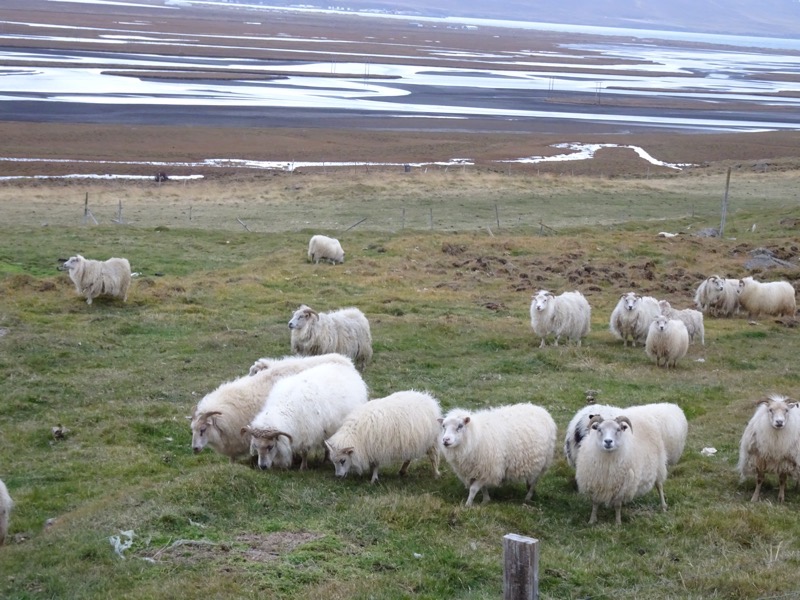 Yes, I know these aren’t horses…
Yes, I know these aren’t horses…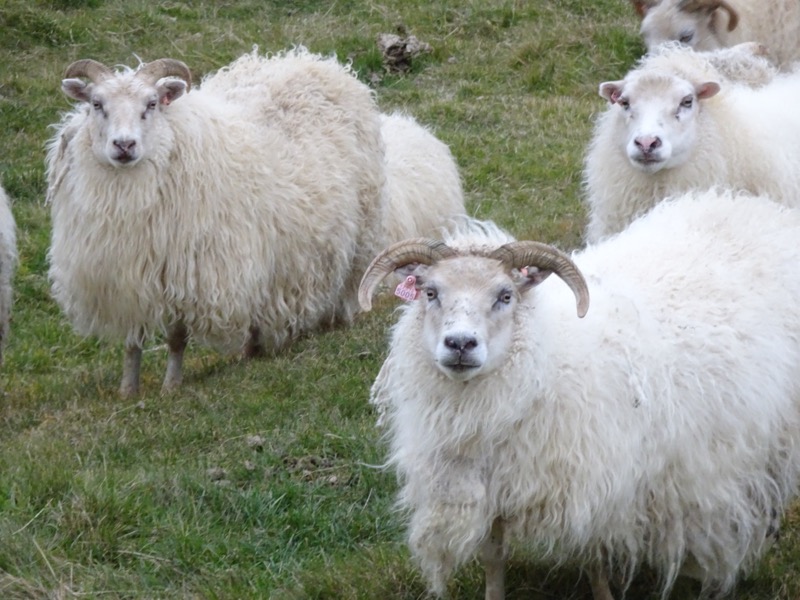

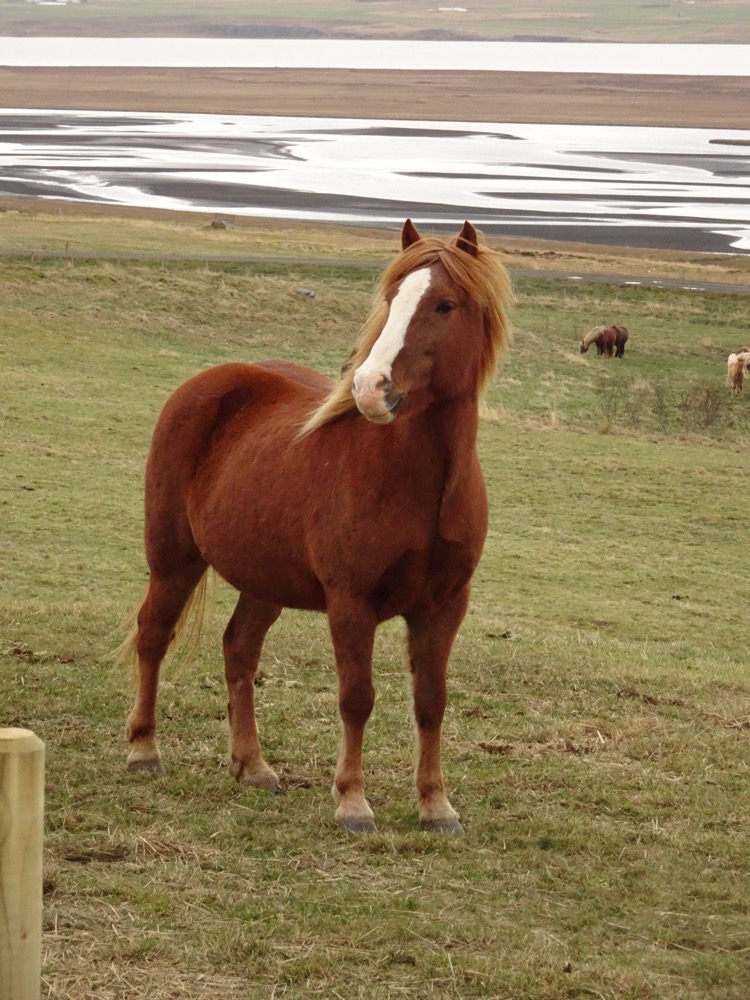 The views from our windows are incomparable – I can’t wait to see it in the morning light. In the meantime, tonight we are on aurora watch… even though we could both do with the extra sleep!
The views from our windows are incomparable – I can’t wait to see it in the morning light. In the meantime, tonight we are on aurora watch… even though we could both do with the extra sleep!